- Search Please fill out this field.
- Manage Your Subscription
- Give a Gift Subscription
- Newsletters
- Sweepstakes
We independently evaluate all recommended products and services. If you click on links we provide, we may receive compensation. Learn more .
- Travel Products
- Tech Essentials

The 13 Best Compact Cameras of 2024
These are the top point-and-shoot options for epic travel photography.
:max_bytes(150000):strip_icc():format(webp)/JessicaMacdonald-348aae07a15a41db984f7b3091d7dc40.png)
In This Article
- Our Top Picks
- Tips for Buying
Frequently Asked Questions
- Why Trust T + L
Travel + Leisure / David Hattan
What’s the best way to relive your favorite travel experiences over and over again? By taking epic photos that you can upload to social media or transform into a coffee table photo book, of course. Investing in a proper camera with a high-quality sensor and a decent number of megapixels will yield better, more printable results than your phone camera. But that doesn’t mean you need to lug a full-size DSLR and several interchangeable lenses around with you. You can get amazing results with a compact, or point-and-shoot, camera.
B&H Senior Technologist Mark Steinberg defines a compact camera as one that is “pocketable, with a minimum number of protrusions, that can be used one-handed.” They’re a great option for anyone who prioritizes easy portability or casual photographers who want good results without a steep learning curve. There are several different kinds of compact cameras, from the budget-friendly to the professional quality, and from digital to film and instant. We’ve researched them all to find the best options across several different categories.
Best Overall
Sony cyber-shot dsc-rx100 vii digital camera.
B&H Photo
It has a high-quality sensor, near-instant autofocus, and a lens that fulfills both wide-angle and telephoto functions.
It’s an expensive option for occasional use only.
Chosen by Mark Steinberg as the best overall compact camera, the Sony Cyber-shot DSC-RX100 VII is the seventh generation of a series that has been raising the bar for compacts since its inception. It’s simple to use for novice photographers, with enough manual settings to allow for experimentation and growth. The 1-inch Exmor RS BSI CMOS sensor is a major highlight, allowing for high sensitivity with a maximum resolution of 20.1 megapixels. With 8x optical zoom and 24–200mm equivalence, the ZEISS Vario-Sonnar T* lens gives you the freedom to switch between wide angle and telephoto photography for everything from landscapes to wildlife.
Whatever your subject, the 0.02-second hybrid autofocus ensures sharp images in both still and video mode. You can shoot single, continuous, burst, and self-timer images and set an upper or lower limit for your ISO up to a maximum of 12800 for impressive low-light results. If film is your passion, you’ll love the camera’s 20 frames-per-second, 4K video for its smooth movement and cinema-quality resolution. When it comes to viewing your footage, framing (and taking) your shot, or scrolling through the menu, use the 180-degree-flip LCD touchscreen. In high-glare conditions, you can also revert to the pop-up electronic viewfinder.
The RX100 VII offers Bluetooth and Wi-Fi connectivity for instant uploads to social media.
The Details: 20.1 megapixels | 1-inch Exmor RS BSI CMOS Sensor | 24–200mm lens | 3-inch LCD screen | 4K video | 4 x 2.3 x 1.7 inches | 10.7 ounces | Electronic viewfinder
Best Image Quality
Ricoh gr iiix digital camera.
This camera uses advanced lens and sensor technology to deliver undistorted, true-color images with a high level of sharpness across the entire frame.
If video is a priority, bear in mind that the GR IIIx shoots Full HD rather than 4K.
Suitable for all experience levels, the Ricoh GR IIIx Digital Camera was designed with the express purpose of providing superior image quality. The 26.1mm GR lens offers a 40mm angle of view in the 35mm format that’s meant to mirror your natural field of view. It also uses premium technology to eliminate distortion, render colors accurately, and create amazingly sharp images. This is complemented by the camera’s high-resolution CMOS image sensor, which captures HD detail suitable for large-scale prints with up to 24.2 megapixels.
Other highlights include the camera’s impressive shake reduction technology and its fast, precise hybrid autofocus with eight focus modes to choose from including one that automatically detects the eyes and faces for perfect portraits. We love that you can shoot in macro, while an interval composite shooting mode allows you to capture star trail images (you’ll need to buy a tripod separately.) These are the unique images that set your travel shots apart. The camera offers Full HD video, a LCD touch screen with instantly adjustable brightness, and 2GB of built-in memory — a lifesaver when your memory card malfunctions at the crucial moment.
The Details: 24.2 megapixels | 1-inch CMOS sensor | 26.1mm GR lens | 3-inch LCD screen | Full HD video | 4.3 x 2.4 x 1.4 inches | 9.2 ounces | No viewfinder
Best Full-frame Compact
Sony cyber-shot rx1r ii digital camera.
This camera packs the full-frame sensor of a professional DSLR into an unbelievably compact, travel-sized body.
You could buy a good DSLR body and lens for a similar price.
The Sony Cyber-shot DSC-RX1R II is meant for professional photographers with a price tag and learning curve to match. The 35mm full-frame back-illuminated CMOS sensor is the largest available, offering more light, more information, better quality, and a greater dynamic range than the APS-C frame found in standard compact cameras. With 42.5 megapixels and the ability to shoot in uncompressed 14-bit RAW, this camera will produce pro-quality, large-scale prints with an astonishing amount of detail.
The ZEISS Sonnar T* 35mm f/2 lens is fixed with no optical zoom, making it best for wide-angle and close-up subjects (and especially, street photography). The large aperture allows you to work in low light and use an unusually shallow depth of field. And, if you’re familiar with terms like moiré and aliasing, you’ll appreciate the inclusion of the world’s first optical variable low-pass filter for reducing these kinds of distortion. Other perks include super-fast hybrid autofocus, Full HD video with the ability to capture slow-motion HD video, an electronic viewfinder, and an adjustable 3-inch LCD screen.
The Details: 42.4 megapixels | Full-frame BSI CMOS sensor | 35mm lens | 3-inch LCD screen | Full HD video | 4.5 x 2.6 x 2.8 inches | 1.1 pounds | Electronic viewfinder
Panasonic Lumix DC-ZS200D Digital Camera
You can bring subjects 15 times closer without sacrificing image quality, thanks to its optical zoom.
It’s slightly heavier and bulkier than some of the other compact cameras on this list.
If you want to be able to photograph animals, birds, or any other subject from a distance without forking out thousands of dollars for a DSLR with a telephoto lens, the Panasonic Lumix DC-ZS200D is an excellent option. The Leica DC Vario-Elmar 24–360mm lens offers a 15x optical zoom — which brings subjects 15 times closer without any of the pixelation associated with digital zoom. Optical Image Stabilizer technology means your photos won’t suffer from blurry camera shake either.
The 1-inch MOS sensor with 20.1 megapixels results in bright, colorful images that lend themselves well to print. You can expand your photographic skills by playing around with traditional aperture and shutter priority modes, or use preset scene and filter modes for instantly different effects. We especially love the camera’s Post Focus feature, which varies the focal point while taking 30 photos per second so that you can go back afterwards and select the best one. In terms of video, shoot in 4K or use high-speed Full HD for instant 120 frames-per-second, slow-motion playback.
The Details: 20.1 megapixels | 1-inch MOS sensor | 24–360mm lens | 3-inch OLED screen | 4K video | 4.4 x 2.6 x 1.8 inches | 12 ounces | Electronic viewfinder
Best Splurge
Leica q3 digital camera.
This is a professional camera that pays equal attention to still images and video, delivering best-in-class results for both.
It’s not the best choice for those who want telephoto functionality.
The Leica Q3 is an ultra-exclusive option limited to one purchase per customer. And don’t be fooled by its compact size — coming in at just under $6,000, it’s a premium product for serious professionals. It boasts a full-frame BSI CMOS sensor for unparalleled photo and video quality. With a maximum aperture size of f/1.7 and a maximum ISO of 100000, it performs unbelievably well in low light conditions. The Summilux 28mm fixed lens includes an integrated macro mode, making the camera ideal for close-up work as well as wide-angle street photography.
There’s no optical zoom. However, Triple Resolution Technology with up to 60 megapixels means you can use the digital zoom without losing significant detail. You can also shoot in 36 or 18 megapixel mode to save space on your memory card. Video is equally versatile with multiple formats to choose from including 8K, 4K, ProRes, and Full HD. All of your work benefits from hybrid autofocus and subject tracking, while the Leica FOTOS app can be used for audiovisual content creation. Finally, you can frame shots using the 3-inch display or the OLED viewfinder.
The Details: Up to 60 megapixels | Full-frame BSI CMOS sensor | 28mm lens | 3-inch LCD screen | 8K video | 5.1 x 3.2 x 3.6 inches | 1.6 pounds | Electronic viewfinder
Best for Videos and Vlogging
Canon powershot g7 x mark iii camera.
Designed to shoot high-quality video in vertical or horizontal formats, this camera offers Wi-Fi and Bluetooth connectivity and can live-stream direct to YouTube.
To realize full vlogging potential, you may need to purchase a tripod and remote control separately.
Looking for the best camera for filming quality reels? The Canon PowerShot G7 X Mark III is designed especially for this purpose with 4K and Full HD video, the ability to shoot horizontally or vertically, Wi-Fi and Bluetooth connectivity to social media, and the ability to live stream straight to YouTube. Whether you’re shooting video or still photos, the fact that you can tilt the LCD touch screen by 180 degrees makes it ideal for framing quality selfies.
The technology is impressive, too. We’re talking a 1-inch stacked CMOS sensor paired with a DIGIC 8 image processor for exceptionally fast autofocusing, with facial recognition that puts you in the center no matter how much you move around. The 24–100mm lens is suitable for a versatile mix of wide-angle and short telephoto shots, while the f/1.8-2.8 aperture performs well in low light conditions. Finally, the Optical Image Stabilizer reduces camera shake for clear, crisp results. Adding other gadgets is easy. The camera has a 3.5mm microphone terminal and can be purchased as part of a video creator kit that includes a tripod grip and remote control.
The Details: 20.1 megapixels | 1-inch stacked CMOS sensor | 24–100mm lens | 3-inch LCD screen | 4K video | 4.1 x 2.4 x 1.6 inches | 10.7 ounces | No viewfinder
Fujifilm X100VI Camera
This camera combines state-of-the-art technology with a vintage aesthetic and a full range of film simulation modes.
The lens is fixed, so any zoom comes with the compromise of digital cropping.
First off, the Fujifilm X100VI just looks cool, with a gorgeous silver-and-black or all-black aesthetic reminiscent of a vintage film camera. Beneath the retro exterior lies a cutting-edge X-Trans CMOS 5 HR sensor with a revolutionary image-processing algorithm for efficient light reception and amazing image resolution at any ISO sensitivity. Thanks to the fixed 23mm f/2 lens, you’ll also get 35mm equivalency in terms of low-light performance and the ability to achieve a shallow depth of field — for a much lower cost than a full-frame compact camera.
You can zoom digitally by 1.4x or 2x. The 425-point intelligent autofocus system is super fast, while built-in image stabilization reduces the appearance of camera shake by up to six f-stops. And when it comes to video, you can switch between 6.2K, 4K, and Full HD at will. Above all, we love that this camera includes 20 simulation modes inspired by iconic Fujifilm film types ranging from Eterna Bleach Bypass to Nostalgic Neg. You can even shoot using a Grain Effect that replicates the textured look of vintage film photography.
The Details: 40.2 megapixels | X-Trans CMOS 5 HR sensor | 23mm lens | 3-inch LCD screen | 6.2K video | 5 x 3 x 2.1 inches | 1.1 pounds | Hybrid electronic and optical viewfinder
Kodak Ektar H35 Half Frame Film Camera
It’s an inexpensive and easy-to-use film camera for maximum fun.
There’s a limit to how much you can do with such a basic setup, so it may not be ideal as your primary travel camera.
Perhaps you feel nostalgic for the days of film, or perhaps you grew up in the digital era and want to experience photography as it used to be. Either way, the Kodak Ektar H35 Half Frame Film Camera is great for film novices, those wanting to stretch their abilities as a photographer, and those who just love the retro look of original film. It’s inexpensive in terms of initial layout and because the half-frame format gives you twice as many images per roll as you’d get from a full-frame camera.
Weighing in at just three and a half ounces, this pocket-sized camera is made for on-the-go convenience. It features a 22mm f/9.5 lens — so with no zoom and no autofocus, it’s best for wide-angle shots and back-to-basics experimentation that’s as fun as it is challenging. You can frame shots using the optical viewfinder and deploy the built-in flash in low light or at night. The camera is compatible with black-and-white and color film and requires one AAA battery to work. Choose yours in Black, Brown, Sand, or Sage.
The Details: 22mm lens | 4.3 x 2.4 x 1.5 inches | 3.5 ounces | Optical viewfinder
Best Instant
Fujifilm instax mini evo instant camera.
Not only can you print photos instantly, you can also save a digital version to your smartphone via the app.
You’ll need to recharge after approximately 100 photos.
Available with a retro black or brown leather effect, the Fujifilm Instax Mini Evo Instant Camera lets you create 2 x 3-inch prints of your images in approximately 16 seconds. It features an autofocusing 28mm f/2 lens and uses automatic shutter speed and ISO for fool-proof results. Expressing your creativity is easy, with 10 lens effects (including Light Leak, Double Exposure, and Soft Focus) and 10 film effects from Vivid to Sepia. You can use these interchangeably for a total of 100 different possibilities.
Other features include a built-in flash, a self-timer, a selfie mirror, and a 3-inch LCD screen. What makes this instant camera different from the Polaroids of the past is the ability to use it in conjunction with the INSTAX app. This means being able to use your smartphone as a remote for releasing the camera shutter (handy for group shots and selfies) and being able to save a digital version of your instant prints complete with an INSTAX frame. From there, you can upload them to social media. You can even use Bluetooth to send pictures from your smartphone to the camera to print.
The Details: 2560 x 1920 pixels | 1/5-inch CMOS sensor | 28mm lens | 3-inch LCD screen | 4.8 x 3.4 x 1.4 inches | 10.1 ounces | No viewfinder
Best Durable
Ricoh pentax wg-90 digital camera.
Drop it, crush it, take it out in a sandstorm or underwater and this camera should still emerge in one piece.
If you’re looking for an underwater camera for scuba diving, scroll on — we’ve found ones with better depth ratings.
When it comes to durability, B&H’s Mark Steinberg recommends the Ricoh Pentax WG-90 above all others. It lives up to its armored appearance with some pretty impressive technical specs. It’s waterproof up to 46 feet underwater for up to two hours of continuous operation, making it ideal for surface water sports or snorkeling. It’s also shockproof against falls from five feet, crushproof against 220-pound-force weights, and dustproof. Heading somewhere cold? Unlike many of the cameras on this list, this one will still operate in temperatures as low as 14 degrees Fahrenheit.
Toughness aside, it’s also a great little camera from a photography perspective. The 16-megapixel BSI CMOS sensor offers high sensitivity and minimal noise, even when using the maximum ISO setting (6400.) A built-in ring light and flash help out in low-light situations, while the 28–140mm equivalent lens is suited to both wide-angle and short telephoto use with a 5x optical zoom. Choose from a range of shooting modes including Fish-Eye, Sports, and Handheld Night; or capture moving images with Full HD video.
The Details: 16 megapixels | 1/2.3-inch BSI CMOS sensor | Equivalent 28–140mm lens | 2.7-inch LCD screen | Full HD video | 4.8 x 2.4 x 1.2 inches | 6.1 ounces | No viewfinder
Best for Action Sports
Gopro hero12 black.
This camera stands out for its Emmy Award-winning video stabilization, 177-degree field of view, and action-ready, rugged build.
With a super wide-angle lens and no zoom functionality, this is a specialist camera for POV filming and photography only.
GoPro’s reputation precedes it in the action sports category, and the latest Hero12 camera really is a thing of wonder. Film High Dynamic Range (HDR) video in 5.3K, 4K, 2.7K, or Full HD. Revel in the 177-degree field of view that shows more of your daredevil POV than ever before. And know that whether you’re jumping out of an airplane or racing at high speed down a mountain, the camera’s HyperSmooth 6.0 video stabilization ensures the footage is super smooth. Turning a full 360 degrees? Horizon Lock keeps the horizon level throughout.
You can film vertically for direct upload to social media and slow things down by up to eight times for an epic fast-action/slow-motion effect. Meanwhile, Bluetooth audio support allows you to connect headphones for sound recording and remote voice commands. The camera also takes 27-megapixel still photos. Or, you can grab 24.7 megapixel stills from your video. The GoPro 12 is waterproof to 33 feet, can run continuously for over two and a half hours on Full HD, and features a new Enduro battery especially for temperatures down to 14 degrees Fahrenheit.
The Details: 27 megapixels | 1/1.9-inch CMOS sensor | 12–39mm equivalent lens | 2.3 and 1.4-inch LCD screens | 5.3K video | 2.8 x 2 x 1.3 inches | 5.4 ounces | No viewfinder
Best Waterproof
Sealife micro 3.0 digital underwater camera.
This camera dives as deep as you can and takes the stress out of O-ring maintenance with a permanently sealed body.
It’s very definitely geared towards underwater photography rather than as an all-rounder for topside travel shots.
Unlike the other waterproof cameras on this list, the SeaLife Micro 3.0 is designed with scuba divers in mind. It’s waterproof to 200 feet (exceeding recreational dive limits) and is permanently sealed making it suitable for even the most careless or inexperienced underwater photographer. Use the 100-degree wide-angle lens to get as close as possible to your subject for the best results. You can rely on the built-in underwater color correction to counteract the loss of red tones; or, for the more advanced, there’s a manual white balance option.
We love the large, f/2.8 aperture for its ability to make the most of limited ambient light. But if you tend to dive deep, the camera is also compatible with single or double after-market strobe sets. The camera delivers high-quality, 16-megapixel images in single or burst shooting mode and can also film 4K or Full HD video. And if you get all the way out to the dive site and realize you’ve left your memory card at home? No problem, the 64GB internal memory’s got your back. Finally, Piano Key controls make for easy menu navigation, even with dive gloves on.
The Details: 16 megapixels | 1/2.3-inch CMOS sensor | 20mm equivalent lens | 2.4-inch LCD screen | 4K video | 4.2 x 2.1 x 2.9 inches | 11.6 ounces | No viewfinder
Best Budget
Kodak pixpro az255 camera.
This is the ideal camera for beginners who want to learn, with automatic and manual settings at a very reasonable price point.
It requires two AA batteries.
If you’re just getting into photography and don’t want to make a major investment just yet, the Kodak Pixpro AZ255 offers plenty of functionality for roughly nine times less money than our overall winner. It uses a 16-megapixel CMOS sensor and is well suited to most kinds of photography with a wide-angle 24mm lens and a 25x optical zoom that brings you significantly closer to your subject without compromising image quality. You can also use the 4x digital zoom, although you should expect some pixelation.
Optical Image Stabilization helps eliminate blur, a continuous shooting mode ensures you never miss that action shot, and a built-in flash allows for nighttime shooting. And although the autofocus isn’t nearly as advanced as the more expensive models on this list, you’ll still benefit from subject tracking and face detection. Our favorite feature? The ability to keep things simple with 22 preset scene modes or to experiment with aperture priority, shutter priority, and full manual settings. You’re not limited to still photos — this camera also shoots Full HD video.
The Details: 16 megapixels | 1/2.3-inch BSI CMOS sensor | 24–600mm equivalent lens | 3-inch LCD screen | Full HD video | 4.5 x 3.1 x 2.7 inches | 12.5 ounces | No viewfinder
Tips for Buying a Compact Camera
Understand the specs.
Before purchasing a compact camera, it’s important to understand some of the key specifications to look out for.
Sensor size: Sensor size has the greatest impact on photo quality and clarity, especially in low-light conditions. The larger the sensor, the better your image quality will be with greater sensitivity and less noise (or graininess). B&H Senior Technologist Mark Steinberg says that BSI, or Back Side Illumination, sensors are superior for their ability to increase light-gathering efficiency.
Megapixels: A megapixel equals one million pixels. Pixels are the tiny digital squares that make up your image and the more you have, the more detail you’ll capture. Most digital cameras offer sufficient megapixels for viewing on a screen. But the number of megapixels becomes important when zooming in on an image, cropping it, or printing it. Look for a higher number of megapixels if you plan on printing your photos, but bear in mind that more megapixels means larger files and less space on your memory card.
Zoom: If you plan on photographing wildlife or anything else that requires a zoom, it’s important to understand the difference between optical and digital zoom. Optical zoom brings the subject closer before capturing the image, with a lens that extends outwards from the camera body. This preserves photo quality. Digital zoom simply crops and resizes a smaller section of the original image, resulting in a blurrier, grainier picture.
LCD screen: The LCD screen is important because it allows you to view and compose your image before taking a picture. It also allows you to play your images back and scroll through the settings menu. Therefore, it’s important to choose a high-resolution LCD screen that displays colors accurately, even in bright light. It also needs to be big enough for you to see details clearly. Some point-and-shoots offer touchscreen capability for increased ease of use.
Viewfinder: Many compact cameras lack a traditional viewfinder (the hole you look through to view and frame your image). But if you plan on shooting in bright conditions, investing in a camera with a viewfinder is helpful for when glare impacts your ability to see the LCD screen clearly.
Video resolution: Video resolution refers to the number of horizontal and vertical pixels. The more you have, the more detailed your footage will be. Look for Full HD (1920 x 1090 pixels) as a minimum or 4K (3840 x 2160 pixels) for premium, cinema-quality video.
Prioritize quality
It goes without saying that for the best results, you should spend as much as you can afford on the best quality camera possible. All of the specifications detailed above are worth considering, but if you focus on just one thing, Steinberg says that the most important factor in terms of image quality is the type and size of the sensor. If you plan on printing your vacation photos or using them to create a photo book or other memento, a reasonable number of megapixels (10 or more) is key. Finally, Steinberg points out that build quality and manufacturer support are also important.
Choose a camera based on your skill level and goals
Having said that, there’s no point in spending a fortune on a high-end compact camera with advanced specifications if all you really want is a simple way of capturing fun vacation snaps for social media. Beginners should prioritize cameras that are intuitive and simple to use. If your goals are more ambitious, Steinberg recommends looking for manual settings that will allow you to fine tune shutter speed, aperture size, and ISO for the best results.
It’s also worth considering where you’re traveling and your planned activities. If your camera will be exposed to dust, sand, humidity, or water, then looking for one that’s IP rated against dust and water ingress is crucial. When it comes to interpreting IP numbers, remember that the first number after the IP relates to dust while the second number relates to water. Only water ratings of seven or higher are fully waterproof. Scuba divers should be sure to check depth ratings.
In addition to considering all of the specifications listed above and how they relate to your requirements, Steinberg says it’s important to consider the ergonomics of the camera. Does it feel comfortable in your hands and next to your face? Are the controls and buttons easy for you to access and operate? Can you view the LCD screen clearly and does the menu navigation system make sense? You should also think about the ease of use. If you’re not sure, consider booking a free in-person or virtual appointment with a B&H expert to talk through different options.
Absolutely, and especially if you choose one with a decent number of megapixels. It’s generally accepted that in order for an image to be made into a high quality print, it needs to have 300 pixels per inch (300 PPI). The number of megapixels required to achieve this depends on how big you want your prints to be. For a standard 6 x 4 inch image, you’d need at least 2.2 megapixels. For a 5 x 7 inch image, you’d need at least 3.2 megapixels. It’s also worth remembering that good printing results are dependent on printer and paper quality too.
Before we tackle this question, it’s important to note that while compact cameras lack a mirror (and mirrorless cameras are more compact than DSLRs), mirrorless cameras are not the same as compact cameras for the purpose of this list. We’ve focused on point-and-shoot cameras for novice photographers and more advanced photographers who prioritize portability. Advantages of point-and-shoots over DSLRs include reduced size and weight, ease of use, and cost.
Mirrorless cameras were introduced in 2004 and have since evolved to compete with DSLRs as the category of choice for intermediate and professional photographers. They have a larger sensor than a traditional point-and-shoot, offering superior image quality. They’re bulkier, cost a lot more, and come with interchangeable lenses. The key difference between mirrorless and DSLR cameras is that mirrorless cameras let light hit the sensor directly whereas DSLRs use a mirror to reflect light onto the sensor.
This difference makes mirrorless cameras quicker and quieter — key advantages for fast-action and wildlife photography. High-end mirrorless cameras can also offer superior autofocus and better performance in low light conditions. DSLRs still hold the edge in terms of viewfinder accuracy, battery life, and a greater range of compatible lenses.
Why Trust Travel + Leisure
Jessica Macdonald has been writing about travel gear for more than a decade. She’s also a professional photographer who has sold images to many publications including Travel + Leisure. Although she typically shoots with her trusty Nikon DSLR, she has often used compact cameras especially for underwater photography. For this article, she conducted hours of online research and consulted the opinion of Mark Steinberg , a B&H Senior Technologist.
Love a great deal? Sign up for our T+L Recommends newsletter and we’ll send you our favorite travel products each week.
:max_bytes(150000):strip_icc():format(webp)/JasmineGrant-c7aebf391faf4c1c8767a407a955548a.jpg)
Related Articles
The best compact camera for 2024: top pocket choices to take anywhere
The best compact cameras for phone-beating snaps
- Best overall
- Best affordable
- Best for features
- Best for video
- Best for photo quality
- Best for hobbyists
- Best for zoom
- Best all-rounder
- Best money-no-object
- Best compact instant
- Best vlogging
How to choose the best compact camera for you
How we test compact cameras.
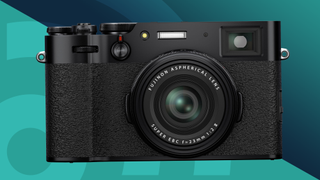
1. The list in brief 2. Best overall 3. Best affordable 4. Best features 5. Best video 6. Best photo quality 7. Best hobbyist 8. Best superzoom 9. Best all-rounder 10. Best money-no-object 11. Best instant 12. Best vlogging 13. How to choose 14. How we test
Smartphone upgrade or reliable backup camera: the best compact cameras combine capable shooting skills with pocket-friendly proportions. We've extensively tested all of the top options and ranked our favorites below. Our comprehensive round-up is designed to help you find your ideal compact camera.
Based on our in-depth reviews, we think the best compact camera for most people is currently the Fujifilm X100VI. Follow-up to the virally popular X100V – our previous top pick – it retains the fixed 23mm f/2 lens but adds a 40MP sensor and in-body image stabilization to become an even more accomplished street photography tool. It's retro design is still beautiful, too.
If your budget doesn’t stretch that far – or you want a camera with a large optical zoom range – we also highly recommend the Panasonic Lumix ZS100 / TZ100, one of our favorite travel cameras . It pairs 10x optical zoom with a decent 1-inch sensor to produce rich, detailed images.
Our expert guide covers everything from superzoom travel cameras to fixed-lens premium compacts, plus some of the best vlogging cameras . Each entry has been tested in a range of real-world scenarios, where our experts assess factors such as handling, usability, zoom and viewfinder performance, as well as overall image quality. If you're not sure where to start, you'll find expert buying advice at the bottom of the page.

Tim is TechRadar's Cameras editor, with over 15 years in the photo video industry and most of those in the world of tech journalism, Tim has developed a deeply technical knowledge and practical experience with all things camera related. He notes, "modern smartphones are incredibly capable photography tools, but if you're looking for a dedicated camera with superior features and handling, the premium models in this list are definitely worth considering."
The quick list
Use the round-up below for an instant summary of the best compact camera for every need and budget. When you find a compact camera that ticks the right boxes, you can use the links beneath each entry to jump down to our full write-up.

The best compact for enthusiasts overall
A sharp street shooter, the X100VI takes Fuji’s TikTok-famous X100 series to new heights, with a 40MP sensor and image stabilization.
Read more below

The best affordable compact camera
A compelling option for travel, the Panasonic ZS100 / TZ100 is a pocket-sized camera with a 10x zoom range and a one-inch sensor.
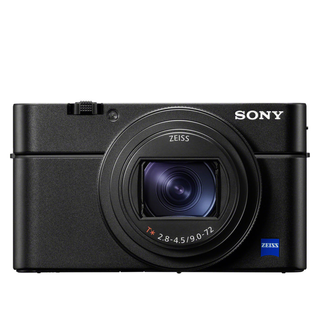
The best pocket compact for features
With strong image quality, sharp 4K videos and class-leading AF, the RX100 VII is one of the most capable compacts right now.
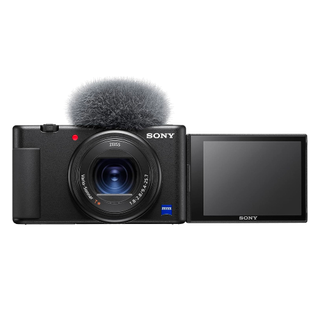
The best compact for video creatives
A bright lens, superb autofocus and useful design features make the Sony ZV-1 a powerful pocket option for shooting video.

The best photo quality from your pocket
Responsive, pocketable and intuitive handle, the GR IIIx uses a versatile 40mm f/2.8 lens to produce sharp RAW stills.
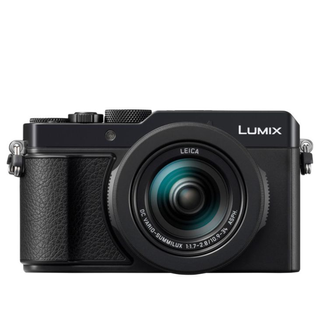
The best for keen hobbyists
A brilliant compact for enthusiasts, the Lumix LX100 II offers excellent stills quality, responsive autofocus and good physical controls.
Load the next 5 products...
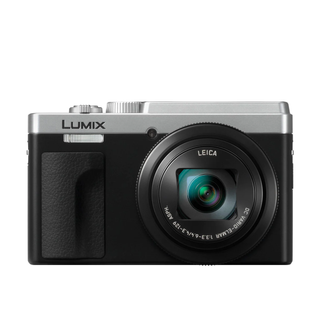
The best compact superzoom
A modest upgrade, the ZS80 / TZ95 is blessed with fast AF , great build quality, pleasing 4K video and a better viewfinder.
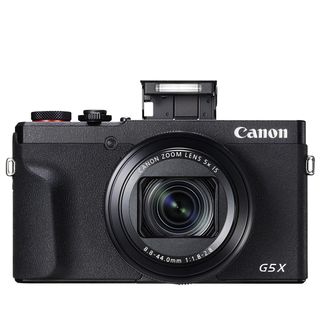
The best all-rounder for photographers
The Canon PowerShot G5 X II blends a capable core with useful features, a quality build, and great controls and handling.
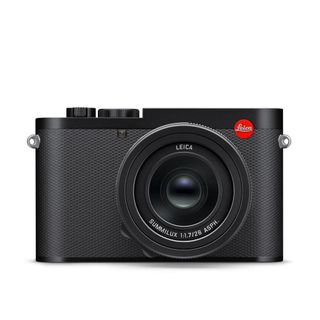
The best money-no-object compact
The Leica Q3 is the most powerful, most enjoyable, most expensive compact camera. Price aside, it’s tactile and high quality.

The best compact instant camera
Combining retro looks with point-and-shoot simplicity, the Go produces rich instant prints that are perfect for sharing.
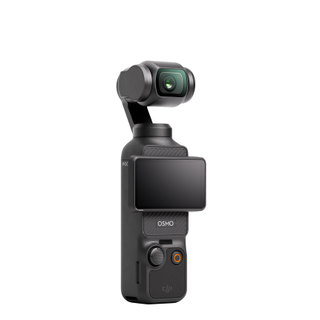
Best for vlogging
This fantastic tool for solo vloggers is super-portable and super-stable thanks to its gimbal, plus it's affordable.
- ^ Back to the top
The best compact cameras in 2024
Why you can trust TechRadar We spend hours testing every product or service we review, so you can be sure you’re buying the best. Find out more about how we test.
Below you'll find full write-ups for each of the best compact cameras in our list. We've tested each one extensively, so you can be sure that our recommendations can be trusted.
The best compact camera for most people
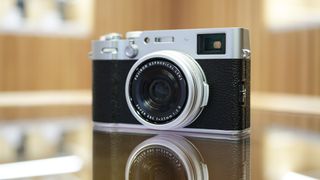
1. Fujifilm X100VI
Our expert review:
Specifications
Reasons to buy, reasons to avoid.
✅ You want a versatile everyday camera: A sharp sensor and image stabilization make the X100VI a flexible tool for shooting on a daily basis.
✅ You like a retro-modern hybrid: The X100V blends old-school looks with modern features, including a superb hybrid viewfinder.
❌ You want the best value overall: Its new skills are welcome, but the X100V offers many of the same core features for less – if you can find it in stock.
❌ You like to use different focal lengths: The fixed 23mm focal length is a calling card of the X100 series, but some will find it too limiting.
The Fujifilm X100V went viral for its retro style, pocket-friendly design, hybrid viewfinder and fixed 23mm f/2 lens. The X100VI takes the same concept and upgrades it again, boosting resolution to 40MP and adding in-body image stabilization for the first time. It also borrows the class-leading autofocus from the Fujifilm X-T5 . In our review, we found images pin-sharp across the entire sensor, with the increased pixel count offering greater flexibility when cropping. Together with impressive subject tracking autofocus and effective stabilization, we think it’s an even more rounded compact for street shooting.
Our tests also revealed the X100VI to be a more capable filmmaking tool, courtesy of 6.2K 10-bit video support. The fixed focal length will still be a limiting factor for some, as will the single UHS-I SD card slot. You need an adaptor for full weather-proofing, too. Given the sold-out demand for the X100V, it’s also unsurprising that Fujifilm has increased the price for its successor. But from our time living with the X100VI, we think it’s the pinnacle of the X100 series, and the best premium compact for everyday use.
Read our in-depth Fujifilm X100VI review
The best value compact camera
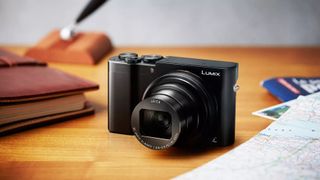
2. Panasonic Lumix ZS100 / TZ100
✅ You want power from your pocket: It's one of the smallest cameras in this guide, yet still boasts a 1in sensor and 10x zoom.
✅ You want a low-cost compact: While it's not exactly cheap, the ZS100 / TZ100 is one of the most affordable options in this list.
❌ You want the best possible image quality: Versatility comes with compromise, and you'll get better stills with some fixed lens options in this guide.
❌ You want a flip screen: The LCD screen is fixed which makes selfies and awkward shooting angles a challenge.
If you're looking for a travel-friendly all-rounder that has a viewfinder and doesn't break the bank, this is the compact camera we'd go for. It's since been succeeded by the ZS200 / TZ200, which is also worth considering – but if you don't need the newer model's slightly longer zoom (15x rather than 10x) and higher-res viewfinder, then you can save money by going for this older classic. The ZS100 / TZ100 remains a solid middle ground between premium compact cameras with larger sensors (in this case, a 1-inch sensor) and super-zoom models with smartphone-beating reach. Its 10x zoom might now be matched by some smartphones, but in our tests the quality of this camera's lens and image processing produced vibrant, punchy photos with excellent detail.
The downsides include a small and relatively low-res viewfinder, plus a fixed touchscreen. These are symptoms of this camera's age, but a small EVF is still better than no viewfinder when you're shooting in sunny conditions, and this camera otherwise offers modern conveniences like 10fps burst shooting, 4K video shooting and built-in Wi-Fi. If you're looking to get high-quality images with minimal baked-in processing, then the ZS100 / TZ100 will serve you well and offer a more enjoyable photographic experience than any glass slab.
Read our in-depth Panasonic Lumix ZS100 / TZ100 review
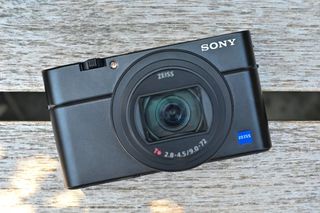
3. Sony RX100 Mark VII
✅ You need a complete pocket camera: The RX100 VII is arguably the most rounded pocket camera for photo and video.
✅ You shoot action: Lens zoom is limited, but the performance is not with super fast autofocus and continuous shooting.
❌ You want excellent handling: Small it may well be, the RX100 VII isn't the most ergonomic option available.
❌ You rely on a touch screen: The function of the touch screen is limited, with no support for menu navigation.
In many ways, the RX100 VII is still best compact around right now. Its autofocus system, we found, is comfortably ahead of any other pocket camera, tracking moving subjects with great reliability and making clever use of its Face and Eye AF, even in video mode. Video quality is superb, while image quality is also stellar. But all of this comes at a huge price, and for many people that could be a deal-breaker.
Still, we can't avoid including it in this guide, as it's one of the best options around. If your budget allows, then you won't find a more powerful compact than the Mark VII. But if you're happy to sacrifice some of the latest autofocus features and a microphone jack, check out the RX100 VI, which offers most of its performance but costs a little less.
Read our in-depth Sony RX100 Mark VII review
The best compact video camera

4. Sony ZV-1
✅ You want a powerful vlogging camera: The Sony ZV-1 is the best compact camera for YouTubers right now, shooting smartphone-beating 4K video.
✅ You want a compact you can grow with: Sony has made the ZV-1 simpler for beginners to use, but it's also jam-packed with pro features.
❌ You mainly want to shoot stills: While it's no slouch for stills, the lack of a viewfinder and moderate zoom range will limit some photographers.
❌ You need an all-weather action camera: The ZV-1 is packed with features, but one that's missing is weather-proofing.
If it's mainly video rather than stills that you're looking for from a compact camera, then the Sony ZV-1 is the one of the best options around. Not that it isn't also very capable at shooting still photos – it has the same sensor and processor as Sony 's latest RX100 series cameras, after all – but the ZV-1's main strength are its video powers. That includes its class-leading autofocus powers, which helps it tenaciously lock onto people and moving objects in your frame. During testing, we found it to do an excellent job of keeping moving subjects in focus and tracking our eyes across most of the frame. Of course, the video quality from its 20.1MP 1-inch sensor is nothing short of impressive as well.
These are backed up by a 3.5mm mic port for boosting audio quality with an external microphone, and a hotshoe to help mount the latter. Its bright 24-70mm f/1.8-2.8 doesn't give you the same reach as the RX100 VII, but it does ensure that you get lovely background blur in both stills and videos – perfect if you mainly shoot portraits or vlogs. Sony has since released the ZV-1 II , but for us the successor was a puzzling update that in real world use offered little extra than the ZV-1 to justify its pricier tag.
Read our in-depth Sony ZV-1 review
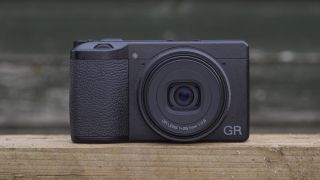
5. Ricoh GR IIIx
✅ You want to develop your creative eye: With a fixed focal length lens, exposure tools and a wide range of in-camera edits, the GR III X encourages creativity.
✅ You want a fun pocket camera: Small enough to slip in the pocket, quick to use and intuitive to handle, the GR IIIx is point-and-shoot happiness.
❌ You want a versatile camera: The GR IIIx is as niche as they come. Fixed lens, fixed focal length, modest video specs. This is aimed at a certain type of photographer.
❌ You shoot video a lot: Tech-wise, the GR IIx is way behind today's smartphones for video recording, being limited to Full HD resolution and mono in-camera audio.
If you’re an avid street photographer there’s no doubt you’ll have heard of the Ricoh GR – a superb series of compact cameras that are famous for their sharp, fixed focal length lens and large APS-C sensor. The Ricoh GRIIIx is the latest model and features a 40mm f2.8 lens versus the standard GR III’s wider 28mm f2.8 option, which may make it a more versatile option depending on your proclivities. Personally, we’d prefer the X’s 40mm for portraiture while the GR III’s 28MM is ideally suited to landscape.
From our review, we think the GRIII X is a superb everyday carry camera, with new features like the Snap Focus system making it an intuitive camera for capturing decisive moments. A host of excellent customization options make it a great choice for experienced tinkerers with in-camera raw editing and easy sharing via the wireless smartphone connection. We would have liked better battery life and a tilt-screen, but such omissions are understandable given the compact body. We think this is the best GR iteration yet if you’re on the hunt for superb image quality, snappy performance, and intuitive handling in a pocket-friendly body.
Read our in-depth Ricoh GR IIIx review

6. Panasonic Lumix LX100 II
✅ You want a Micro Four Thirds sensor: The sensor is larger than the 1-inch ones used in most other compacts and produces lovely photos.
✅ You want excellent handling: A sensible size, decent grip, EVF and solid build all combine for a lovely shooting experience.
❌ You want the latest tech: The LX100 II is a fantastic camera but it was launched all the way back in 2018 and feels a little dated with its fixed screen and clunky UX.
❌ You want a speedy shooter: The zoom action is a touch pedestrian; both the zoom lever around the shutter release button and the multi-function control ring respond slowly.
Compact cameras with sensors larger than 1-inch in size are typically limited to fixed-focal-length lenses, which is great for quality but less so for flexibility. But not the Panasonic LX100 II; it manages to marry a 17MP Four Thirds sensor – the same size as those found inside Panasonic's G-series mirrorless cameras – with a zoom lens equivalent to 24-75mm in 35mm terms, proving that sometimes you can get quality and flexibility at once.
We found its Leica-badged lens to be very impressive, capturing very good levels of detail that's worthy of pricier APS-C cameras, and its exposure metering system more than reliable. Our tests also show that it handles noise pretty well and produces natural-looking images with faithful colors. The original LX100 was something of a landmark camera for offering something similar, and this latest iteration takes the baton, with a nippy AF system, robust body, clear 4K videos and a useful electronic viewfinder among its highlights.
Read our in-depth Panasonic Lumix LX100 II review
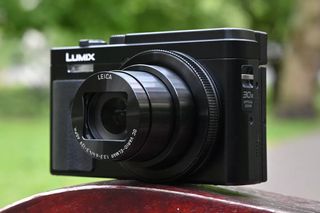
7. Panasonic Lumix ZS80 / TZ95
✅ You want an all-in-one camera: The generous 30x optical zoom covers every shooting scenario and a perfect companion for your travels.
✅ You want to take selfies: A flip-up screen is ideal for anyone who imagines they will be capturing selfies or group shots – particularly as the face detection works so well.
❌ You're after excellent image quality: A 30x zoom lens in any camera let alone one so small like the ZS80 / TZ95 has its drawbacks, namely soft edge detail.
❌ You shoot in low light: The 1/2.3-inch image sensor is much smaller than both flagship smartphones and rivals in this guide, struggling with noise in low light.
With a pocketable body and 30x zoom range, the Panasonic ZS80 / TZ95 is pitched at those looking for the flexibility to shoot a range of scenes, but without the hassle of interchangeable lenses. A small grip and thumb rest make it nicer to handle than many rivals, while a control ring around the lens can be configured for easy adjustments, including zoom and focus. Its sensor is small, but the shooting specs are still not to be sniffed at: the ZS80 / TZ95 can shoot 4K video at 30fps, while 10fps burst shooting is decent for a compact. Focusing is similarly speedy, with great face detection.
During our time with it, we found the image quality to be generally reasonable. There was some softness around the edge of the frame at 24mm. All the same, image stabilization keeps things sharp, with pleasing colors and broadly reliable exposures when shooting in JPEG or raw. The ZS70 / TZ90 might represent better value if you don’t need a high-resolution viewfinder, but the ZS80 / TZ95 is a well-built, comprehensive compact package that’s enjoyable to shoot with.
Read our in-depth Panasonic Lumix ZS80 / TZ95 review
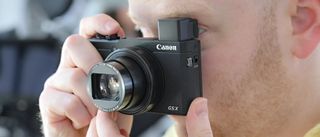
8. Canon PowerShot G5 X Mark II
✅ You want excellent build quality: Build quality feels great overall, with secure handling and plenty of attention to detail around all the controls.
✅ You're want an everyday shooter: The 24-120mm f/1.8-2.8 lens strikes a nice balance between versatility and image quality, covering most everyday scenarios.
❌ You shoot 4K video: The G5X Mark II can shoot 4K video, but cannot match the superior features from Sony's rival offerings.
❌ You want excellent value: Canon is never cheap, and the G5X Mark II looks like an expensive option compared to its rivals.
The best Canon cameras you can buy don’t just include full-frame flagships - the Canon PowerShot G5 X Mark II is easily one of the top options from the brand currently. It’s not the cheapest option out there currently but it’s a well-rounded camera with a pocket-friendly form-factor and fantastic handling, New features for the Mark II include the excellent stacked 20.1MP 1-inch CMOS sensor equipped with the brand’s DIGIC processing engine.
This model is now capable of 30fps in raw burst mode, 20fps burst in regular JPEG, and also features a respectable line-up of video specs. Being able to fully capture video at 4K without any crop factor is a particular highlight in such a small body. Other excellent new additions include USB charging, Wi-Fi, and Bluetooth connectivity, which are all fantastic quality of life additions for any camera - especially one at this price point. These additions, combined with the Mark II’s excellent build quality and versatile 24-120mm f/1.8-2.8 lens make this camera an excellent every day carry option and one of best travel cameras in particular.
Read our in-depth Canon PowerShot G5 X Mark II review
The best money-no-object compact camera
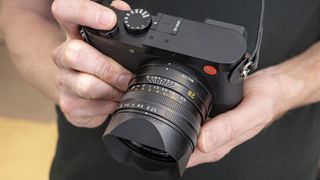
9. Leica Q3
✅ You like manual control and a tactile experience: The robust dials and shutter button offer the tactile experience that we'd like to see more of.
✅ You want the best-quality everyday camera: With a super-sharp lens and full-frame sensor, no compact camera can better the Leica Q3 on stills.
❌ You want to push a camera hard: The Q3 has some seriously impressive features, but they work best when in moderate, everyday use.
❌ You’re after great value: There’s no real rival to the Q3, and it does represent reasonable value for a Leica, but $5,995 / £5,300 / AU$9,790 is a lot of anyone’s money.
Compact cameras can be cost-effective alternatives to interchangeable lens cameras but that doesn’t mean there aren’t superb high-end options. Take the stunning Leica Q3: a full-frame monster that comes complete with the exceptional Summilux 28mm f/1.7 ASPH fixed lens. Calling the Leica Q3 compact may be a slight stretch – it's around the same size as the Panasonic Lumix S5 II with a pancake lens – but it is the full package if you’re looking for superlative image quality and almost unparalleled build quality.
It’s this latter point that allows the Leica Q3 to stand out from the competition and smartphones. Put simply, the Leica Q3 offers a premium tactile shooting experience that even the best camera phones can’t hope to match. And, price aside, the Leica Q3 is an excellent performer. Unlike the well-known M-series rangefinders from the brand, the Q3 is fully autofocus capable, which makes it an excellent everyday carry for the well-heeled. Sure, the autofocus performance doesn’t quite match the best systems on the market right now but the Leica Q3 is the brand’s easiest to use camera yet - and one that scores full marks on style points.
Read our in-depth Leica Q3 review
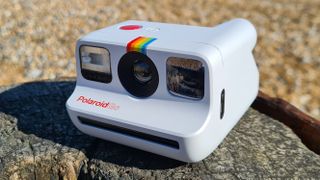
10. Polaroid Go
✅ You love keepsakes: There's nothing like a physical print and the Go spits out beautiful little prints that you can keep or share with those around you.
✅ You want a small instant camera: Most instant cameras are big and bulky and awkward, but the Polaroid Go is as small as they come.
❌ You want low running costs: The Go itself is inexpensive, but its instant film refills increase the cost significantly.
❌ You shoot close ups: Most instant cameras are point-and-shoot, but the fixed focus can feel quite limiting for close ups.
Instant cameras are designed for fun – and few make it easier to capture quick, attractive snaps than the Polaroid Go. Pitched as “the world’s smallest analogue digital camera”, its boxy, retro shape means it isn’t as portable as a digital compact camera – but it’s still one of the dinkiest instant cameras you can buy in 2021. Capable of producing credit card-sized prints with dreamy pastel tones and impressive detail, the Go’s greatest merit is its point-and-shoot simplicity.
The streamlined interface is super easy to use, with a handy digital shot counter for tracking your snaps. Unlike other instant cameras, we found this to be very versatile. Automatic flash can be manually overridden, while self-timer and double-exposure modes add welcome opportunities for creativity – although its fixed focus and lack of a macro mode mean it isn’t quite as flexible as certain alternatives. Film refills aren’t the cheapest, and you do pay a premium for the Polaroid Go’s portability. What you also get, though, is an entertaining, accessible and convenient – not to mention surprisingly capable – instant printing camera.
Read our in-depth Polaroid Go review

11. DJI Pocket 3
✅ You shoot handheld solo vlogs: The three-axis gimbal offers unmatched stabilization, while ActiveTrack works like a virtual cameraman.
✅ You value portability: True to its name, the Pocket 3 is a pocket-friendly solution for shooting steady vlogs wherever you go.
❌ You shoot a lot of photos, too: Low light image quality is improved over the Pocket 2, but resolution is much lower.
❌ You’re happy with your smartphone: If you prefer shooting with your phone, a gimbal mount like the DJI OM 5 might make more sense.
We were already big fans of the DJI Osmo Pocket 2 , yet its successor takes quality and convenience for vlogging to a whole new level. It equals the video quality of larger models like the Sony ZV-1, yet still has an incredibly compact form factor. The improvement in video and image quality, now up to 4K 120p, is enough to pick the Pocket 3 over your smartphone for vlogging, as is the super smooth footage achieved thanks to the three-axis gimbal. It's also a massively convenient device, comfortably slipping into a pocket, with decent audio quality and compatibility with remote mics.
There's also a new trick up the Pocket 3's sleeve: multi-aspect video recording. Taking a leaf out the GoPro Hero 12 Black playbook, the Pocket 3's 1-inch sensor is squarer than your traditional 16:9 aspect, so you don't unnecessarily lose detail when switching between horizontal and vertical formats. The rear LCD screen touchscreen even rotates to instantly switch between those formats. Little wonder that the Pocket 3 is now our top recommendation for most vloggers.
Read our in-depth DJI Pocket 3 review
When it comes to selecting a compact camera, there are several factors to consider. As the name suggests, all compact cameras promise portability, but there’s more to keep in mind than form factor alone. All of the cameras in our list above offer some combination of versatility, handling, features and image quality. Which specific aspects matter most will depend on what and how you like to shoot. If you can’t find a compact the ticks your key boxes, you might be better off using your smartphone’s camera.
One of the key things to think about is sensor size. All of the best compact cameras should represent a step up from your smartphone. Micro Four Thirds and APS-C options, such as the Fujifilm X100V, are now as prevalent as 1-inch models.
If you plan on using your compact camera for travel, you should take a closer look at its lens and zoom capabilities. To be worthy of your attention, the latter should offer at least 10x optical zoom, if not more. If you plan on using your camera for street photography or candid portraits, a fixed lens might work better for you. Or if night-time shots are your thing, look for a compact with good noise handling and high ISO capabilities.
Whatever your subject of choice, pay attention to how a camera handles. This is something we cover in our reviews. Most compacts have an electronic viewfinder, but a small number use an optical one instead. Most also feature a touchscreen interface, which makes it more straightforward to upgrade from a smartphone, although not every display can tilt. You should also think about whether manual controls matter to you.
Some features you might not need, but a few – such image stabilization or face/eye tracking – could prove to be useful bonuses. Of course, price is a factor as well, so if the models above are too pricey new, check out their second-hand availability. Our guide on how to buy a second-hand DSLR or mirrorless camera may be aimed at larger models, but much of the same advice applies to premium compact cameras.
Is a compact camera better than a smartphone?
It’s widely accepted that the best camera is the one you have with you, and this will often be the smartphone in your pocket – especially if you’re looking to capture quick, sharp images for sharing on social media. While the best camera phone options are better than ever, though, the top compact cameras remain a cut above their mobile rivals when it comes to image quality and the overall shooting experience.
Larger sensors are an obvious bonus: the sensor inside a premium compact will, in general, be bigger than the one in your average smartphone. This means you’ll get more detail and better low-light performance, which will be evident if you choose to print out your images. It helps that most compact cameras also benefit from high-quality optics.
Only a handful of smartphones offer the versatility of optical zoom. While zoom range varies by model, most of the best compact cameras feature this as standard. Even with huge improvements to the quality of digital zoom technology, it can rarely compete with the quality of optical zoom when it comes to preserving detail.
Many compact cameras also have physical advantages over smartphones. While both types of device are designed to be pocket-friendly, the best compacts feature dedicated buttons and dials that offer greater creative control. Similarly, many of the best compact options feature a small but useful grip that gives them an ergonomic edge over smartphones when it comes to handling. Tilting touchscreens and dedicated electronic viewfinders are also handy for framing, while certain compacts ship with niche features, such as stabilizing gimbals and waterproof bodies.
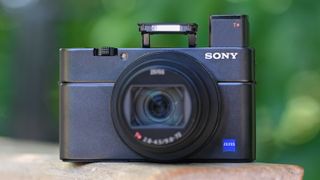
Do photographers use compact cameras?
Given their performance and relative portability, most photographers now favor one of the best mirrorless cameras as their primary camera. These models are not much bigger than a premium compact, with many numbering among the best travel cameras , yet they also offer the flexibility of interchangeable lenses.
That being said, many photographers still choose to travel with a premium compact as a second camera. While they might not compete outright with the images captured by top mirrorless models, a reliable compact camera can be a useful tool to keep within easy reach, in case a photo-worthy scene unfolds before you.
This is particularly true for street and travel photographers. A compact is less conspicuous than a professional full-frame camera, making it easier to shoot comfortably in public. The smaller proportions also mean you’re more likely to take it with you whenever you head out, without needing a bulky kit bag.
The same is true for photographers who want to travel light and leave their main camera at home. You’ll rarely see an image from a compact adorning billboard, but the best models can produce images plenty sharp enough for digital assignments and prize-winning pics. That’s especially true if you pick a compact that focuses on a specific niche, such as the Fujifilm X100V with its fixed 23mm f/2 lens – ideal for street and low-light photography.
Real-world tests are the most revealing way to understand the best compact cameras' performance, quirks, and features. So, along with standardized tests for factors like ISO performance, we take every camera we test for a spin to see how it fares in real-world scenarios.
We'll use it both handheld and on a tripod to get a sense of where its strengths lie, and test its startup speed. We also use a formatted UHS-1 card and shoot in both raw and JPEG (if available), testing its burst shooting and buffer performance.
For autofocusing, we use the different autofocus modes on hand in single point, area, and continuous modes. Naturally, we take a look at how accurate and reliable its metering is, how well it handles noise, and how well it minimizes things like fringing and distortion. Its video shooting skills are tested as well by shooting some test footage at different frame-rates and resolutions.

Of course, we also look at the camera's design, handling, and user interface while getting a sense of what kind of photographer it's most ideal for. Battery life is tested as well over the course of the day with the screen set to the default settings. Once the battery has reached zero, we'll then count the number of shots to see how it compares to the camera's CIPA rating.
Once all is said and done, we take all our data and everything we've learned about the compact camera and compare it to its price tag to see if it offer great value for your money.
Get daily insight, inspiration and deals in your inbox
Get the hottest deals available in your inbox plus news, reviews, opinion, analysis and more from the TechRadar team.

Tim is the Cameras editor at TechRadar. He has enjoyed more than 15 years in the photo video industry with most of those in the world of tech journalism. During his time as Deputy Technical Editor with Amateur Photographer, as a freelancer and consequently editor at Tech Radar, Tim has developed a deeply technical knowledge and practical experience with cameras, educating others through news, reviews and features. He’s also worked in video production for Studio 44 with clients including Canon, and volunteers his spare time to consult a non-profit, diverse stories team based in Nairobi. Tim is curious, a keen creative, avid footballer and runner, and moderate flat white drinker who has lived in Kenya and believes we have much to enjoy and learn from each other.
- Alistair Charlton
- Chris Rowlands
- Mark Wilson Senior news editor
Looking for a Fujifilm X100VI or Leica Q3 alternative? Panasonic could soon launch a surprising full-frame compact rival
Lomography Lomomatic 110 review: Brand-new 50-year-old technology
BenQ beCreatus DP1310 Hybrid Dock review
Most Popular
- 2 Another major pharmacy chain shuts following possible cyberattack
- 3 Prime Video has a hit new horror show with 100% on Rotten Tomatoes
- 4 Scientists design super-battery made with cheap, readily affordable chemical element, Na — Salt-based cell has surprisingly good energy density and charges in seconds
- 5 Tesla EVs could get a massive range boost from new battery tech that promises a 373-mile range from a 10-minute charge
- 2 Tesla EVs could get a massive range boost from new battery tech that promises a 373-mile range from a 10-minute charge
- 3 Love records, hate wires? This little black box lets you stream vinyl to your smart speakers
- 4 Hisense’s new 5,000 nits mini-LED TV is so bright you may need to wear shades
- 5 'If I buy cheap, I buy twice’: Loewe explains why its new OLED TV deal with LG helps it make a repairable premium TV that can last you much longer
The best compact cameras in 2024: top quality cameras you can take anywhere
These are the best compact cameras you can get right now, and we've tried them all. Get big camera quality in your pocket!
The Quick List
- Best overall
- Best for YouTube
- Best for the streets
- Best hybrid
- Best waterproof
- Best budget
- Best for stills
- Best 1-inch sensor
- Best for megapixels
- How to choose
- How we test
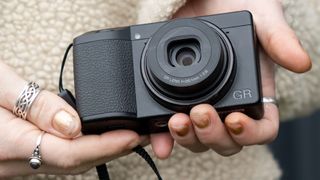
The Quick List ↩ 1. Best overall 2. Best for YouTube 3. Best for the streets 4. Best hybrid 5. Best waterproof 6. Best budget 7. Best for stills 8. Best 1-inch-sensor 9. Best for megapixels How to choose How we test
The best compact cameras are perfect as a 'second' camera for DSLR or mirrorless camera owners who want to travel light now and again. They give little away in features or image quality, but they are small enough to slip into a jacket pocket. These are the ones we rate the highest.
With this guide, we have picked compact cameras that nevertheless have sensors large enough for high-quality images and the mix of automatic and manual controls that enthusiasts and experts will be looking for, and that we are used to getting in a DSLR or mirrorless camera. If you want something cheaper and simpler, we've got that covered too in our guide to the best point-and-shoot cameras .
The key point about 'compact' cameras is that the lenses are not interchangeable. The lens is built in which saves you having to think about which lenses to invest in and which lenses to pack.

As Ecommerce Editor for Digital Camera World, and having been a professional photographer for nearly two decades, I've seen and used a LOT of cameras, using compacts while on holiday or when I wanted to travel light. Now in my spare time, I use my trusted Leica M-E to shoot street photography, usually in black and white.

If you want the latest and greatest then there is no denying the new FujiFilm X100VI is the best overall compact on the market with 40MP stills and 6K video capabilities.
Read more below
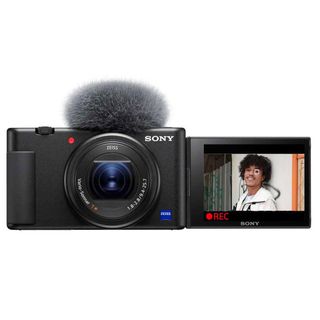
Aimed at vloggers, the Sony ZV-1 might just look like another variant from the RX100 range but in reality, it's so much more. If you've used one of the RX100s, the sensor and lens will probably be quite familiar.

One of our favorite compact street cameras ever. This is a powerful pocket-sized camera with built-in editing tools, an ND filter, 2GB of internal storage, and a choice of focal lengths.
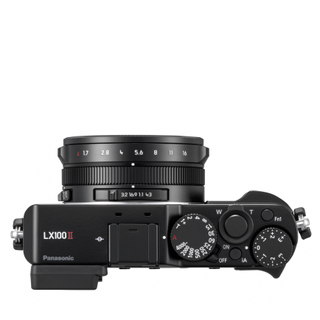
Panasonic hits a sweet spot by using a mid-sized MFT sensor, which makes it great for both shooting video, and for normal stills photos. However, you do only get a modest 3x zoom.
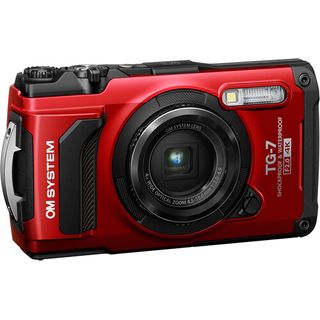
An update on the TG-6 does little to change the specs, just swapping Olympus for OM Systems on the front – but that doesn't stop this being the best waterproof camera out there.
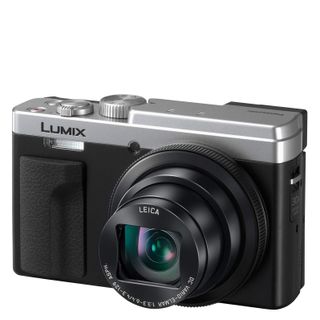
Best budget option Not many compact cameras offer such a massive zoom, 4K video, manual shooting and a viewfinder. It doesn't have the biggest sensor or the fastest burst mode but it is an impressive little camera. Read more
Load the next products ↴
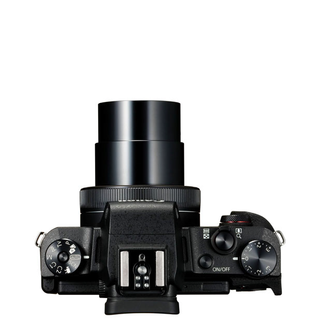
Best for stills quality This Canon PowerShot uses a big APS-C 24-megapixel sensor that allows it to maximize image quality, whilst still offering you a 3x zoom. Read more
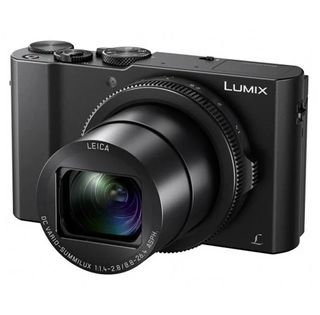
If you want a versatile camera, with a decent zoom range and a great 1-inch sensor then this is the one I'd pick. Read more below

If you want the best compact camera for megapixels then the Leica Q3's 60MP stills beats all the competition - but you'll have to pay a hefty price tag.
The best compact cameras in 2024
Why you can trust Digital Camera World Our expert reviewers spend hours testing and comparing products and services so you can choose the best for you. Find out how we test.
Best compact camera overall
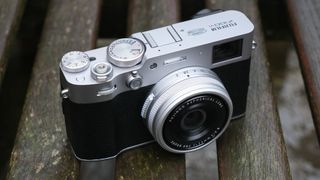
1. Fujifilm X100VI
Our expert review:
Specifications
Reasons to buy, reasons to avoid.
The new Fujifilm X100VI may seem unchanged on the surface, but I find it hard to complain when the design is as breathtaking and well-crafted as ever. Using the X100VI is still an absolute delight for me, especially with its hybrid viewfinder and manual dials that add a tactile element to my photography experience.
Thankfully, there are some noteworthy upgrades under the hood. With a new 40MP sensor, updated processor, and IBIS (In-Body Image Stabilization), the X100VI's stills and video capabilities have received a significant boost. From the initial samples I've taken, the results have been nothing short of excellent.
Admittedly, the price of the X100VI is the highest yet, which does make it a tough decision, especially when there are cameras with better technology available for less. However, for me, the iconic design and enhanced features make it a compelling choice despite the price tag.
Read our Hands-on of the Fujifilm X100VI
Best compact camera for YouTube
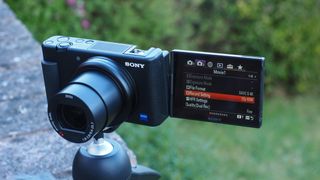
2. Sony ZV-1
Aimed at vloggers, the Sony ZV-1 might just look like another variant from the RX100 range but in reality, it's so much more. If you've used one of the RX100s, the sensor and lens will probably be quite familiar.
Where this camera excels is the controls, rear screen, and body, making it perfect for YouTube . It too has the popular zoom range of 24-70mm with a variable aperture of f/1.8 - f/2.8 however, there is a big change in minimum focusing distance as you zoom which is annoying, especially if you're using it to record video.
The SteadyShot active stabilization wasn't the best however the autofocus is very impressive. It has a vari-angle, a rear tilting screen that means it's perfect for recording yourself or taking selfies and it comes with a mic-wind shield which means its audio quality even with the built-in mic is still pretty good. Unlike the Sony RX100 cameras, it doesn't have a viewfinder, but it produces high-quality images, is even better at video, and, best of all, it'll cost you less.
Read our full Sony ZV-1 review
Best for compact camera street photography

3. Ricoh GR IIIx
The Ricoh GR IIIx is a street-savvy version of the Ricoh GR III with a better-suited 40mm lens instead of the original 28mm. It does have a few other benefits to it, including an optional 1.5x teleconverter lens, which can be attached to the fixed lens for a more zoomed-in view.
For an APS-C camera, it's incredibly compact, making it ideal for street or travel photography, and with a wide f/2.8 lens, super fast eye AF, plus sensor-shift stabilization, it's great for portraits, too. It's pocket-sized but it's big on features boasting 2GB internal storage and built-in NDs. It truly is a compact camera aimed at photographers who want to have total control.
Read our full Ricoh GR IIIx review
Best compact camera for stills and video

4. Panasonic Lumix LX100 II
When it comes to big sensors, the struggle has always been finding a compact camera to match. But let me tell you, Panasonic has nailed it with the LX100 II. It's got the perfect blend of stellar stills and video performance all packed into a pocket-sized body.
What sets it apart is its Micro Four Thirds sensor, which is almost as large as the APS-C sensors found in many DSLRs. Yet, somehow, Panasonic has managed to shrink down the lens assembly to fit snugly within the camera body. It's truly remarkable how they've achieved such a compact design without sacrificing performance.
The LX100 II is a fresh take on the original LX100, which was starting to show its age. With its new 17-megapixel 'multi-aspect' sensor, you have the flexibility to shoot in different aspect ratios without compromising on image quality. And let's not forget the external shutter speed dial, lens aperture ring, and aspect ratio switch – they make shooting with this camera an absolute joy. Trust me, it's a game-changer.
Read our full Panasonic Lumix LX100 II review
Best compact camera for all conditions

5. OM System Tough TG-7
The Olympus TG-6 was my go-to waterproof compact camera, and now it's back as the OM System TG-7. I'm glad to see it's pretty much unchanged because that's exactly what I loved about it. It's still my top pick for a rugged waterproof camera.
One of my favorite features is the built-in microscope setting, which allows me to capture stunning close-up shots. Plus, the Field Sensor System is a neat addition, recording GPS coordinates and ambient temperature along with my photos.
With 4K video at 30fps and the option for Full HD video at 120fps for super-slow motion, the TG-7 is quite versatile. The generous 25-100mm optical zoom lens lets me get up close to the action.
I appreciate the improved chunky handgrip, which gives me a secure hold on the camera, and the internal zoom mechanism means the lens is always protected from knocks and bumps.
Overall, the TG-7 is straightforward yet sophisticated, making it hands down the best waterproof camera I've come across.
Read our full OM System Tough TG-7 review
Best compact camera for budget

6. Panasonic Lumix ZS80/TZ95
When I worked at Wex Photo Video (a British camera retailer), the Panasonic ZS80/TZ95 was my top recommended camera for people who were after something compact, with a generous zoom that didn't break the bank.
For such a tiny camera, it's hard to believe it has a zoom range of 24-720mm making it possible to shoot wide landscapes and objects far in the distance. With 4K video, a pop-up flash, a range of shooting modes you'd expect to find on a mirrorless camera or DSLR and a macro mode so you can focus as close as 3cm, it really is a jack-of-all-trades system.
It might not have the fastest burst mode but at 10fps it's plenty quick enough if you're mostly looking for a camera to take on holiday or as an upgrade from your camera phone.
Read our full Panasonic Lumix ZS80/TZ95 review
Best compact camera for stills only

7. Canon PowerShot G1 X Mark III
The Canon G1 X Mark III might be pretty pricey but it's practically a DSLR in a compact body. It boasts an impressive 24-megapixel APS-C sensor, the same sensor you'll find in the Canon EOS 80D DSLR making this compact a great stills-only option.
The lens has a versatile 24-72mm focal range and retracts into the camera to make it perfectly pocket-sized when you're not using it. Unfortunately, it doesn't have a fixed aperture, so at 24mm you can shoot as wide open as f/2.8 but at 72mm the aperture will drop down to f/5.6, which isn't great.
The G1 X Mark III can only shoot 1080P video, not 4K, but that doesn't bother us much as it's not what we would buy it for. It can shoot at 7fps in continuous burst mode and has wifi connectivity for transferring images on the go.
I did like this flagship PowerShot a lot, and the only thing putting us off is that it's been out for a while but the price has barely shifted. Maybe that's because of how good it is!
Read our Canon PowerShot G1 X Mark III review
Best compact camera with a 1-inch sensor

8. Panasonic Lumix LX15 / LX10
The Panasonic LX15, which goes by the name LX10 in North America, lacks a viewfinder, and rather than including a Micro Four Thirds sensor it has a smaller 1-inch 20-megapixel sensor which will reduce image resolution and performance.
However, it is capable of recording 4K video and it has a super-responsive touch screen which makes focusing really easy. It has a zoom range of 24-72mm and a really fast variable aperture of f/1.4-2.0, making it the fastest compact zoom lens available.
Overall, I think it's a great little camera that has a perfect balance of features, performance, and pricing. It's small enough to fit in a pocket but is powerful enough to take some stunning photos. It's just that... having used both, we'd rather pay the extra for the LX100 II.
Read our full Panasonic Lumix LX10 review
Best compact camera for megapixels
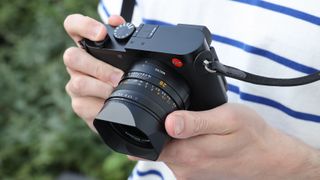
9. Leica Q3
Leica cameras are a bit like Marmite – you either love them or hate them. No matter where you stand, you can't deny they are incredible cameras that offer exceptional image quality. The new Leica Q3 features an impressive full-frame 60-megapixel sensor. It has a fixed 28mm f/1.7 lens, making it one of the fastest prime lenses available on a compact camera. This update to the Leica Q2 now also shoots 8K video.
The biggest downside of this camera is the thing that will put most people off – the price. It's an insanely expensive bit of kit and it would probably be higher on our list if it didn't cost an arm and a leg.
You could pick up one of the best mirrorless cameras and a lens for less, but sometimes the experience of using a Leica is worth the money. Other than the price, they're relatively hard to get hold of so if you have your heart set on one, you might have to hunt for one first.
Read our full Leica Q3 review
How to choose the best compact camera
You might imagine that one compact camera will be much like another, but there are three key features to take into account before you make a decision.
1) Prime vs zoom lenses: With a compact camera is that the lens is non-interchangeable, so the one it comes with will have to do all the jobs you want the camera for. You may be happy with a single focal length prime lens, or you may prefer the extra scope of a zoom. The focal length range on these zoom cameras varies enormously - from 3x up to over 100x on a bridge camera .
2) Viewfinders: If you find you use the rear screen on a camera most of the time, you may not need an eyelevel viewfinder – and this does give you more scope with cameras. Some photographers, though, would be lost without a viewfinder.
3) Sensor size : It is not just about megapixels, image quality also improves by using a larger sensor. Full-frame is the biggest size sensor found on compacts, but full-frame compacts are very expensive and have a fixed wide-angle lens. If you want a zoom, the biggest-sized sensor is APS-C which under half the size of full frame. But if you want a big zoom in a pocketable camera, then you will need a model with a 1in sensor (about a third of the size of an APS-C sensor). An MFT sensor is smaller than an APS-C sensor, but bigger than a 1in one.
How we test compact cameras
During our testing process, we take compact cameras out into the real world, snapping photos in various lighting situations to gauge their performance. With a collective experience encompassing hundreds of models, our reviewers compare the results against both current competitors and past iterations.
Our focus lies heavily on image quality, scrutinizing the details captured in each shot. Since compact cameras prioritize ease of use and portability, we also closely examine the ergonomics and handling of every model we evaluate.
See more on how we test products at Digital Camera World
Get the Digital Camera World Newsletter
The best camera deals, reviews, product advice, and unmissable photography news, direct to your inbox!

For nearly two decades Sebastian's work has been published internationally. Originally specializing in Equestrianism, his visuals have been used by the leading names in the equestrian industry such as The Fédération Equestre Internationale (FEI), The Jockey Club, Horse & Hound, and many more for various advertising campaigns, books, and pre/post-event highlights.
He is a Fellow of The Royal Society of Arts, holds a Foundation Degree in Equitation Science, and is a Master of Arts in Publishing. He is a member of Nikon NPS and has been a Nikon user since the film days using a Nikon F5 and saw the digital transition with Nikon's D series cameras and is still to this day the youngest member to be elected into BEWA, The British Equestrian Writers' Association.
He is familiar with and shows great interest in street, medium, and large format photography with products by Leica, Phase One, Hasselblad, Alpa, and Sinar. Sebastian has also used many cinema cameras from the likes of Sony, RED, ARRI, and everything in between. He now spends his spare time using his trusted Leica M-E or Leica M2 shooting Street photography or general life as he sees it, usually in Black and White.
- Gareth Bevan Reviews Editor
- Rod Lawton Contributor
Related articles
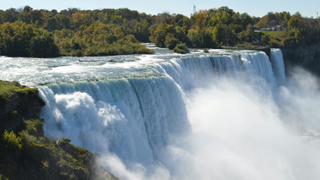

Currently Trending:
APS-C vs full-frame – which sensor size is best?
Why are we obsessed by full-frame sensors, fujifilm x100v and x100vi alternatives best retro cameras, amateur photographer of the year 2023 winners announced, nikon z8 wins product of the year at the 2024 ap awards.
Advertisement
When you purchase through links on our site, we may earn an affiliate commission. Here’s how it works
The best travel cameras for 2024
Andy Westlake rounds up our pick of the best travel cameras for trips long and short, vacations and all other adventures
Welcome to our guide to the best travel cameras and holiday cameras! Here, we are going to be running through our picks for the best small and light cameras to take away with you. A full camera setup tends to be too bulky and heavy to use on a photo trip or vacation, while a smartphone will generally be too restrictive in terms of what it can capture (and never mind the battery). A dedicated travel camera is the ideal solution.
At AP, our review team tests cameras of all types, and that includes travel cameras. DSLRs, mirrorless models and compact cameras have all passed across our testing bench, and we’ve chosen the best of the best for this guide. This doesn’t just mean the most expensive premium models – after all, travel is expensive enough without having to add a whacking great camera bill on top.
Of course, you do have to spend a bit of money to make sure you get something worth buying. So, we’ve put together a list to suit a range of budgets, including new models and older ones that have come down in price. However, every camera on here has one thing in common – it impressed our reviewing team enough to earn their recommendation.
We’ve got plenty of advice for taking better travel images here .
How to choose the best travel camera or holiday camera
So what features might be most desirable for a travel camera? Small size and light weight are a given, and we’ve assumed that most users will prefer using a zoom lens , quite probably with an extended range. This could be complemented by a couple of small primes , for shooting in low light or going out in the evening. It might also make sense to add an ultra-wideangle zoom for architecture, landscapes or interiors.
As such, where we’ve picked an interchangeable-lens camera , we’ve also provided a lens recommendation, generally one that you can buy bundled with the camera. The fixed-lens compact cameras we’ve picked generally have generous zoom ranges , with the exception of the Fujifilm X100V, which is loved by travelling street photographers for its super-sharp 35mm prime. This is one we’d recommend for city breaks rather than countryside hikes.
In general, the cameras we’ve chosen in this guide also include fully manual control , a built-in viewfinder and raw format image recording . In order to attain a certain level of image quality, they also use sensors of the 1-inch type or larger . The one exception is the Olympus Tough TG-6, which we have chosen as the best bet for a waterproof camera . Going to be spending most of your time snorkelling on the beach? That one is your best bet.
Read on for our choice of the best travel cameras and holiday cameras that are available right now, including both high-end pocket cameras and lightweight mirrorless models teamed up with versatile zoom lenses.
Where to find the best travel and vacation cameras:
- Best waterproof travel camera: Olympus Tough TG-6 – check best price
- Best fixed-lens compact for travel: Fujifilm X100V – check best price
- Best zoom compact for travel: Panasonic LX100 II – check best price
- Best point and shoot for travel: Panasonic Lumix TZ200 / ZS200 – check best price
- Sony RX100 VII – check best price
- Best all-in-one travel camera: Sony RX10 IV – check for best price
- Best DSLR for travel: Nikon D5600 – check best price
- Best travel camera for enthusiasts: Fujifilm X-S10 – check best price
- Olympus OM-D E-M5 Mark III – check best price
- Nikon Z 5 – check best price
The best travel cameras and vacation cameras: our full list
Olympus tough tg-6 – $489 / £399.

Olympus Tough TG-6 (Red) Lego for scale. Photo Joshua Waller
At a glance
- 25-100mm f/2-4.9 lens
- 12MP 1/2.3in sensor
- ISO 100-12,800
- 20fps continuous shooting
- 3in, 1.04m-dot screen
The Olympus Tough TG-6 is different from the other cameras included in this round-up, as it employs a relatively small sensor, which means it won’t give anywhere near the same image quality. It also does without a viewfinder, relying solely on a fixed rear screen instead. But it makes our list simply because it’s the best rugged camera you can buy right now.
Key to its attraction is its sheer robustness. The TG-6 is waterproof to 15m, shockproof to a drop from 2.4m, freezeproof to -10°C, and crushproof . So you can use it without any worries on the beach or in the sea. It also boasts impressive close-up capability and an extensive range of underwater modes, plus an extensive range of lighting and lens accessories.
For outdoor adventurers, it also includes a suite of environmental sensors that allow you to keep track of your travels, including GPS with a compass, a thermometer and an accelerometer.
Read our full review of the Olympus Tough TG-6 .
What we like:
- Supremely rugged build
- Has optical zoom (many tough compacts don’t)
- Useful environmental features
What we don’t like:
- Small sensor
- No viewfinder
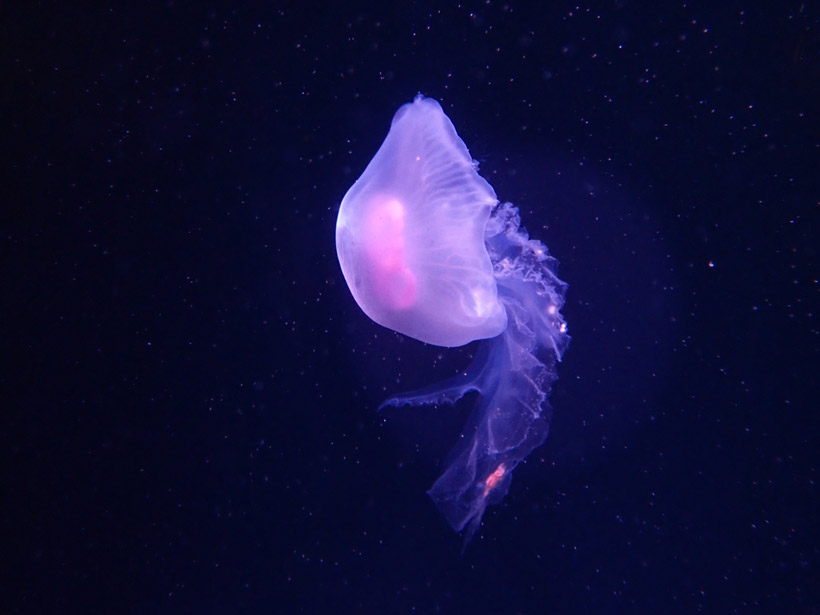
Jellyfish, taken with the Olympus Tough TG-6, photo Joshua Waller
Take a look at other waterproof and underwater camera options here: Top 12 Best Waterproof and Underwater Cameras
Fujifilm X100V – $1,399 / £1,339
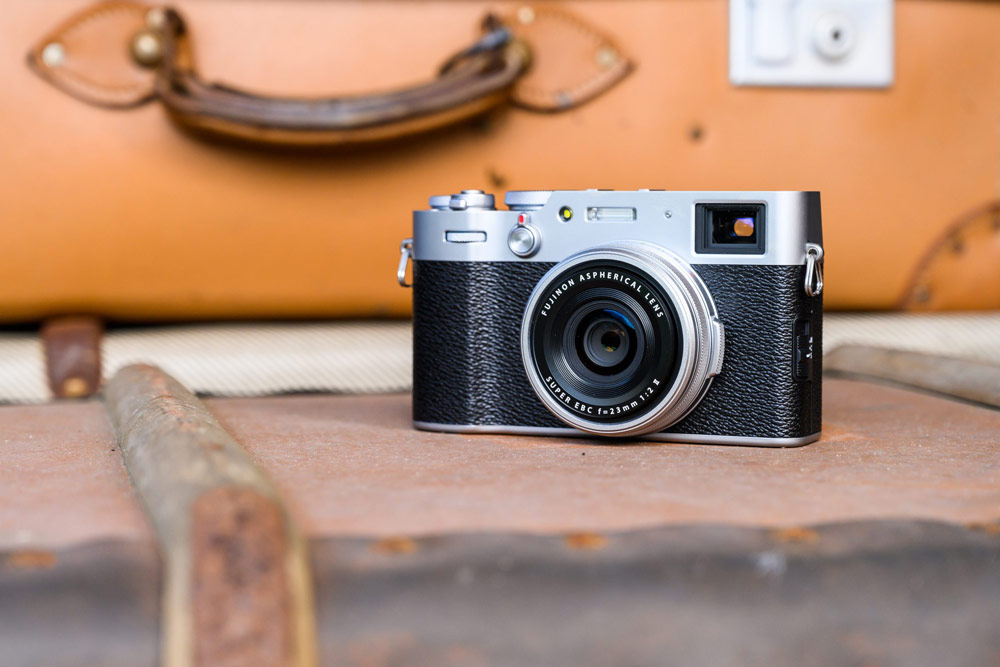
The Fujifilm X100V is a premium compact camera beloved of street photographers.
At a glance:
- 35mm equivalent f/2 lens
- 26.1MP APS-C X-Trans CMOS 4 sensor
- ISO 80-51,200 (extended)
- 11fps continuous shooting
- Hybrid optical/electronic viewfinder
- 3.2in, 1.62m-dot tilting touchscreen
Among all the cameras covered in this article, the Fujifilm X100V is unique, as it’s the only one with a fixed, single-focal-length lens . Usually for travel we presume photographers will prefer a zoom, ideally with an extended range to cover a broad array of subjects. But the X100V is different.
With its APS-C sensor, fixed 35mm equivalent lens, and classic rangefinder-like styling, it embraces a different way of shooting. It’s all about working with a fixed angle of view, and ‘zooming with your feet’ to find your pictures. It’s not for everyone, but for some photographers, it’ll be perfect.
While the X100V looks very much like the previous four models in the X100 series, it brings some significant improvements. Its redesigned lens is sharper, especially at close focus distances, and it gains a tilting rear screen that’s great for discreet, unobtrusive shooting.
Thankfully these upgrades don’t come at the detriment of the camera’s other major attractions, which include analogue dials for shutter speed, ISO, aperture and exposure compensation, and Fujifilm’s unique hybrid viewfinder that gives a choice of optical or electronic viewing.
Despite its old-fashioned good looks, the X100V is packed full of up-to-date features . It’s capable of 11fps shooting, 4K video recording, and face- and eye-detection autofocus. It also benefits from Fujifilm’s superb colour rendition, with a full array of Film Simulation modes on board to provide a variety of different looks.
And for those who really can’t do without a few different lenses, optional wideangle and teleconverters are available, giving 28mm and 50mm equivalent views.
Read our full review of the Fujifilm X100V.
- Sublime image quality
- Super-sharp lens
- Has nailed the street photography feel
- Expensive for a compact
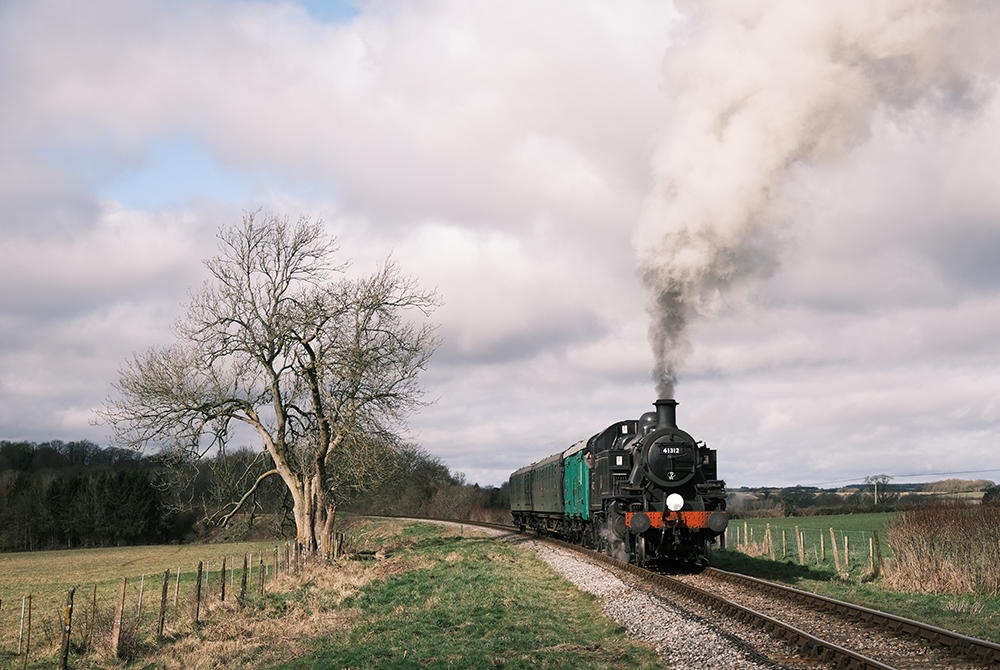
Image: Michael Topham
Panasonic LX100 II – $849 / £859

The Panasonic Lumix LX100 II
- 24-75mm equivalent f/1.7-2.8 lens
- 17MP Four Thirds sensor
- ISO 100-25,600 (extended)
- 11fps shooting
- 2.76m-dot EVF
- 3in, 1.24m-dot touchscreen
If you love the idea of an X100-like camera, but can’t live without a zoom, then the Panasonic Lumix LX100 II might just be for you. It boasts a similar array of external controls for shutter speed, aperture and exposure compensation, and incorporates a corner-mounted 2.76m-dot electronic viewfinder. But it also includes a 24-75mm equivalent optically stabilised zoom lens with an unusually fast f/1.7-2.8 aperture. This is particularly impressive given that the camera employs a relatively large Four Thirds type sensor.
One unique feature of the LX100 II lies with the way that it uses its sensor. It employs a multi-aspect ratio design that, at the flick of a switch on the lens barrel, can toggle between 4:3, 3:2 and 16:9 settings , all with the same diagonal angle of view, and therefore progressively wider horizontal views. There’s also a 1:1 option for those who enjoy shooting square-format images.
While the LX100 II is very much designed for stills shooters, it also offers 4K video recording , although with a 1.25x crop. Panasonic’s various 4K Photo modes are on board too, in effect shooting 8MP JPEGs at 30fps. Wi-Fi and Bluetooth are built-in for connecting to your smartphone.
The real attraction of the LX100 II, though, lies in just how pleasing it is to shoot with, thanks to its robust metal build and engaging control layout. It also delivers fine image quality. For enthusiast photographers who’d like a zoom compact camera that offers lots of manual control and creative potential, there’s nothing else quite like it.
Read our full review of the Panasonic Lumix LX100 II .
- Clever multi-aspect sensor
- Robust metal body
- Fast f/1.7 lens for low light
- Somewhat restricted zoom range
- Quite bulky for a camera of this type
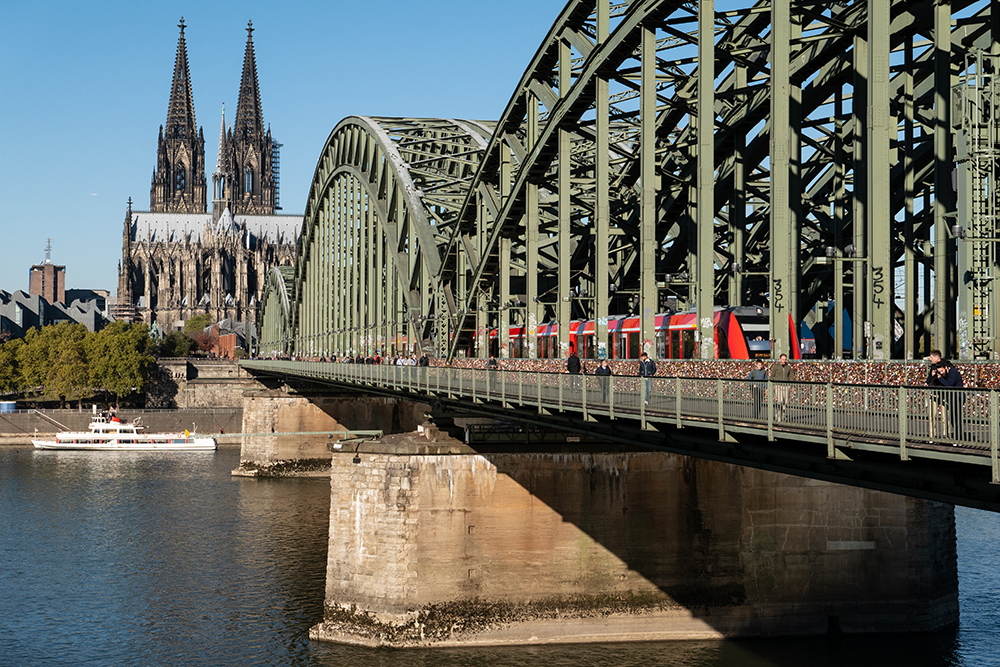
Panasonic Lumix TZ200 / ZS200 – $697 / £679
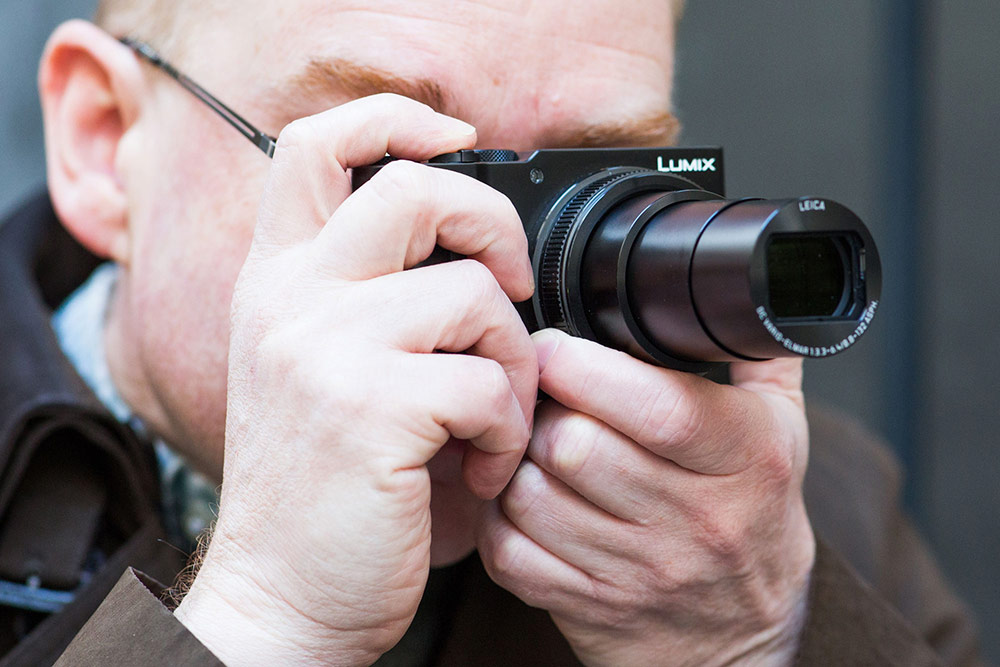
The Panasonic Lumix TZ200 is portable and agile, but boasts a hefty zoom range.
- 24-360mm equivalent f/3.3-6.4 lens
- 20.1MP 1in sensor
- ISO 80-25,600 (extended)
- 10fps continuous shooting
- 2.33m-dot viewfinder
Panasonic originally invented the long-lens, pocket-sized ‘travel zoom’ camera, and the TZ200 (or ZS200 in the US) is the ultimate expression of this concept. Like its predecessor the TZ100, it adds a 20MP 1-inch sensor into the mix, to provide considerably improved image quality compared to its cheaper siblings with smaller sensors, such as the TZ95.
But it improves on the TZ100 with a longer 24-360mm equivalent zoom (compared to 25-250mm) and a larger, higher-resolution electronic viewfinder, yet without noticeably increasing in size. For those who can’t afford the TZ200, the TZ100 remains an attractive proposition for £389.
In contrast to its sibling the LX100 II, the TZ200 is very much a point-and-shoot at heart. But it still offers lots of manual control, including a full set of exposure modes and raw format recording. It’s capable of shooting at 10 frames per second, or 7fps with live view between frames. A vast array of features is available for those who’d like to experiment further, including panoramic, multi-exposure, intervalometer and even stop-motion animation modes.
As usual, Panasonic has included 4K video recording, along with its unique 4K Photo mode that allows 8MP JPEGs to be captured at 30fps.
Crucially, the TZ200 gives attractive images, particularly in bright, sunny conditions. It’s also more usable than you might expect in low light, as while the lens’s aperture isn’t especially large, the optical image stabilisation is extremely effective. It’s a great choice for when you just want to carry a pocket point-and-shoot camera but not skimp on zoom range.
- Huge zoom in a tiny body
- Clever 4K Photo modes
- Effective optical stabilisation
- Pricier than TZ100
- Lens aperture tops out at f/3.3

Sony RX100 VII – $1,298 / £1,049

The RX100 VII benefits from a pop-up viewfinder.
- 24-200mm equivalent f/2.8-4.5 lens
- 20MP 1in sensor
- 2.36m-dot pop-up EVF
- 3in, 921k-dot tilting touchscreen
Sony’s RX100-series compact cameras are famed for the way they fit an awful lot of technology into a small, pocketable package. The latest model in the range exemplifies this, with a 24-200mm equivalent f/2.8-4.5 zoom, a 20MP 1-inch stacked CMOS sensor, a pop-up electronic viewfinder and a tilting rear screen, all in a body that’ll slip neatly into a jacket pocket.
What’s more, it’ll shoot at 20 frames per second and record 4K video. Compared to its predecessor, it gains an upgraded sensor that enables Sony’s AI-based tracking autofocus, along with a socket for an external microphone and a few interface improvements. Otherwise, the older RX100 VI offers most of the same features for a slightly more affordable £849.
With 357 phase-detection AF points covering 68% of the frame and Sony’s Real-time Eye AF and Real-time Tracking on board, the RX100 VII has the most sophisticated autofocus of any compact camera . Set it to continuous focus and tracking, and you can almost forget about having to move the AF area or change focus modes ever again. This is very welcome, as in many respects the camera’s ambitious feature set has rather outgrown its simple control layout.
One area where the RX100 VII excels lies with composing your images, thanks its large pop-up viewfinder and tilting rear screen. The lens is a strong performer too, especially when stopped down. Crucially, the camera delivers attractive images which are a noticeable improvement over older Sony models in terms of colour rendition.
- Class-leading autofocus
- Pocketable form factor
- Great viewfinder and screen
- Still very pricey
- RX100 VI will do most of the same stuff for less money
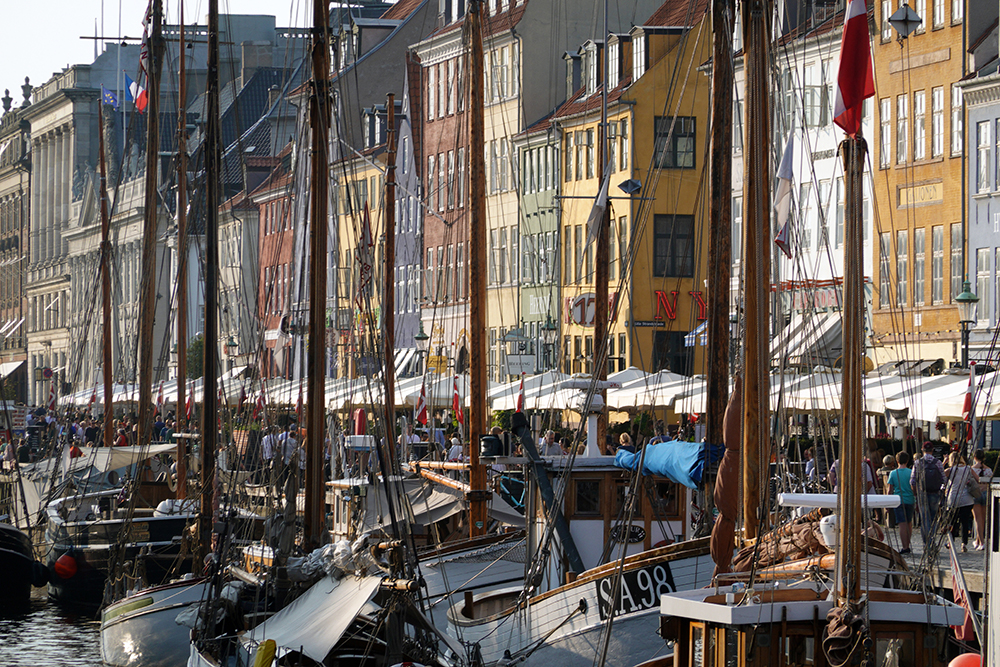
Sony RX10 IV – $1,698 / £1,499
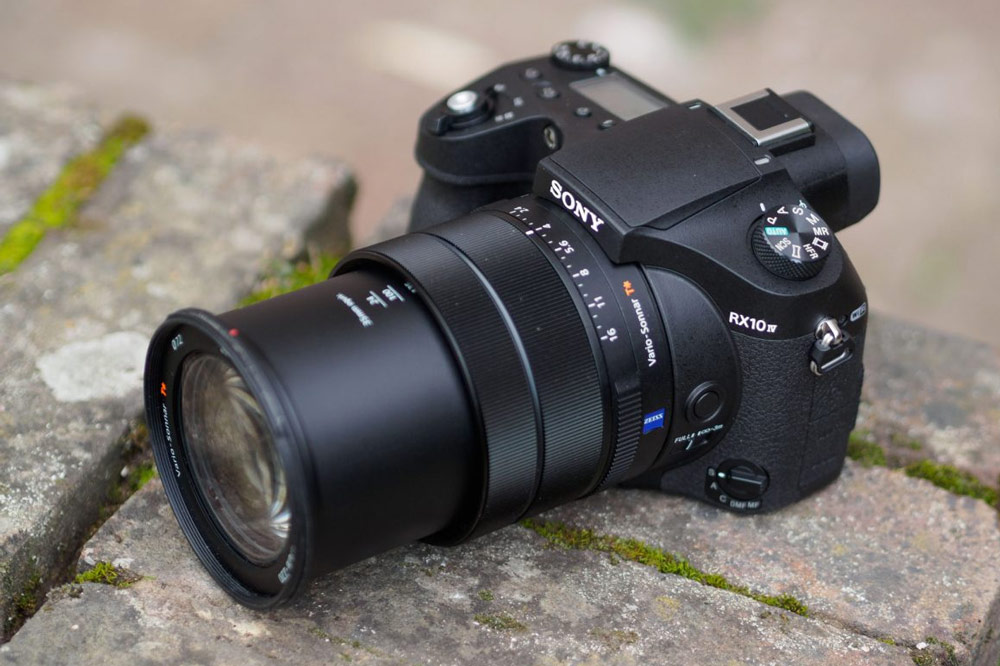
Sony Cyber-shot RX10 IV. Photo credit: Andy Westlake.
- 24-600mm equivalent f/2.4-4 lens
- 24fps continuous shooting
- 2.35m-dot viewfinder
- 3in, 1.44m-dot tilting touchcreen
For photographers who’d like an all-in-one camera with a long zoom lens , but who are prepared to carry something the size of a DSLR, there’s nothing else quite like the Sony RX10 IV .
Its 24-600mm equivalent optically stabilised lens offers immense versatility and reach, yet still boasts a usefully fast f/2.4-4 aperture . Meanwhile its 20MP 1in stacked CMOS sensor provides a combination of fine image quality and breathtaking speed. The camera also incorporates Sony’s sophisticated autofocus systems, including eye AF for both humans and animals.
The RX10 IV handles well too, with a large, comfortable handgrip. Three rings arranged around the lens barrel control zoom, focus and aperture, and there’s a dedicated exposure compensation dial perfectly placed for operation by your thumb. Focus area selection is handled using either the touchscreen or the rear d-pad. The viewfinder is decently large and gives an accurate preview, while the screen tilts for low-angle shooting.
To fully understand the RX10 IV’s attraction, though, we need to consider how it compares to mirrorless or DSLR alternatives. Quite simply, none can match its zoom range without changing lenses . What’s more, few other cameras get close to its ability to shoot at 24 frames per second with continuous autofocus and a vast 110-frame raw buffer.
The silent electronic shutter provides speeds as fast as 1/32,000sec while minimising any risk of subject distortion. Bluetooth and Wi-Fi provide smartphone connectivity, and as the icing on the cake, it’ll record 4K video. It’s without doubt the best bridge camera that’s ever been made.
Read our original review of the Sony RX10 IV
- Incredible built-in zoom range
- Fast burst and big buffer
- Comfortable, well-engineered handling
- Very expensive for a fixed lens
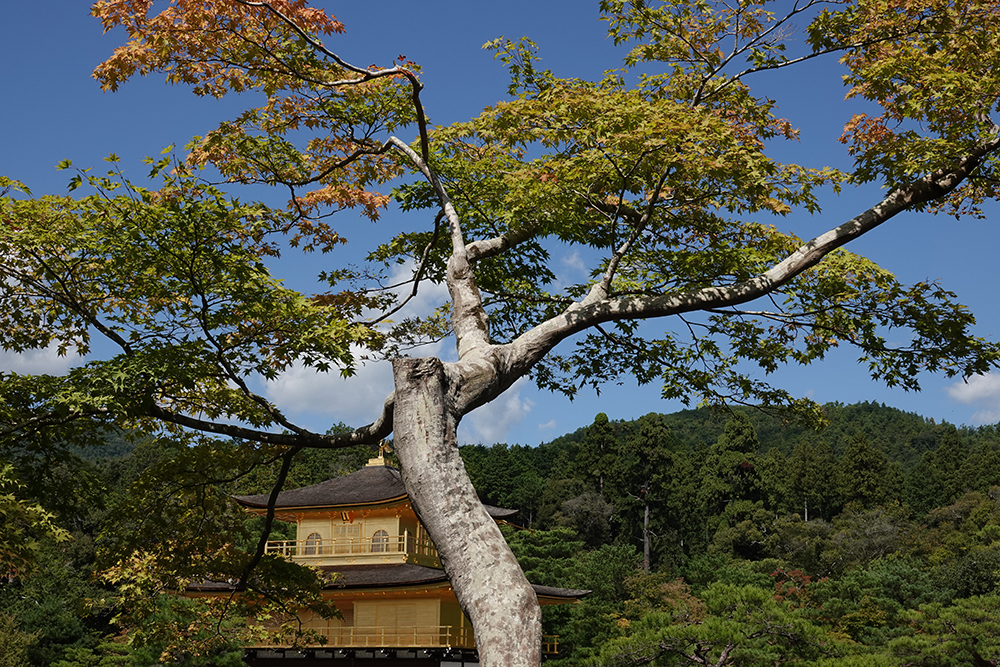
Nikon D5600 + 18-140mm f/3.5-5.6 lens – $969 / £749
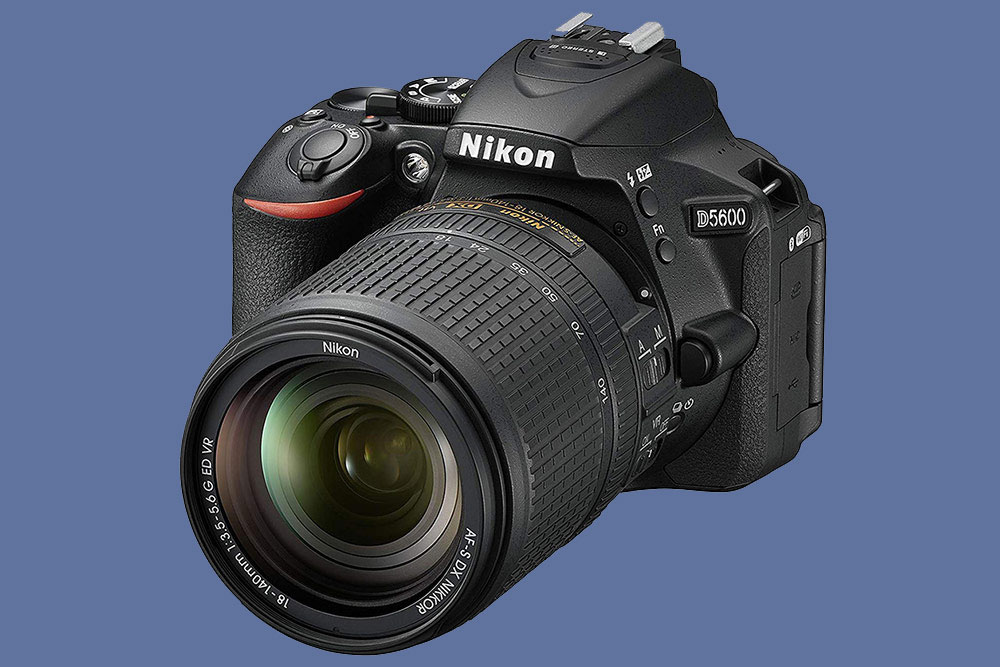
The 18-140mm lens transforms the D5600 into a travel photography powerhouse.
- 24.2MP APS-C sensor
- ISO 100-25,600
- 5fps continuous shooting
- Optical pentamirror viewfinder
- 3.2in, 1.4m-dot fully articulated touchscreen
Some photographers still prefer a traditional DSLR with an optical viewfinder, and Nikon’s D5600 provides a solid specification in a portable package. What’s more, it can be bought in a kit with a versatile 18-140mm kit zoom, offering a 27-210mm equivalent range, for just £749. As the icing on the cake, Nikon’s SnapBridge connectivity can transfer all your pictures automatically to your smartphone , making sharing your adventures a breeze.
In terms of key features, the Nikon D5600 boasts a reasonably solid specification. Its 24.2MP sensor goes up to ISO 25,600 and supports continuous shooting at 5fps. Autofocus employs a 39-point phase-detection system covering the central region of the frame, while metering is handled by a 2,016-pixel RGB sensor.
One area where the D5600 shows its age, though, is with regards to video recording, which is Full HD only, rather than 4K. Recent mirrorless models undoubtedly offer more, but on the other hand, they can’t match the D5600’s impressive 820-shot battery life.
In general the D5600 delivers attractive images, with warm, saturated colours and plenty of detail. It handles nicely too, with the responsive touchscreen making up for a relatively simple set of external controls. Those who’d like to add extra lenses are well served by Nikon’s sizeable F-mount range , including the affordable AF-P DX-Nikkor 10-20mm f/4.5-5.6G VR wideangle zoom and the AF-S DX-Nikkor 35mm f/1.8 G. The latter would nicely complement the zoom for low-light shooting. See our guide to the best Nikon F-mount lenses for more ideas.
Read our original review of the Nikon D5600
- Solid DSLR handling
- Good connectivity features
- Well-priced
- Price may go up as it gets harder to find
- Middling video spec

Fujifilm X-S10 + 16-80mm f/4 lens – $1698 / £1,399
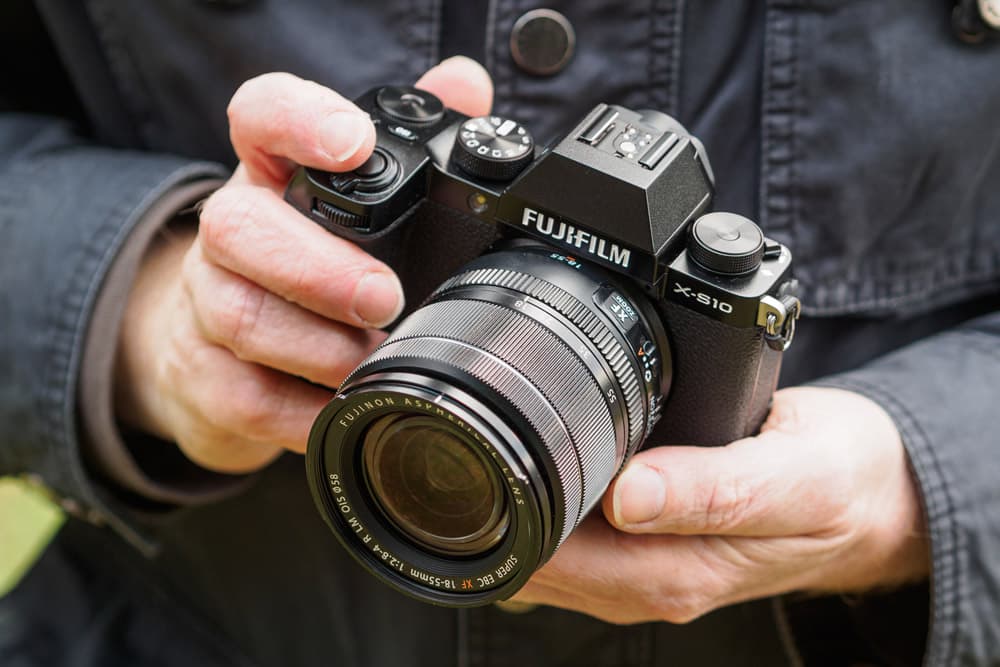
Fujifilm X-S10 in hand, Photo: Andy Westlake
- 26.1MP APS-C X-Trans CMOS sensor
- 2.36m-dot viewfinder
- 3in, 1.04m-dot fully articulated touchscreen
For enthusiast photographers who’d like a small, lightweight camera that handles well and offers excellent image quality , the Fujifilm X-S10 is extremely appealing. Styled to look and work very much like a shrunken DSLR, it offers most of the features of the firm’s flagship X-T4 in a considerably smaller body.
It comes in kits with various lenses, with prices starting from just below £1,000 for the XC 15-45mm power zoom. We’ve picked the most versatile kit zoom option, the XF 16-80mm F4, which provides a 24-120mm equivalent range.
Based around Fujifilm’s unique 26MP X-Trans CMOS sensor, the X-S10 delivers the firm’s signature attractive JPEG colour rendition. It even has a dedicated dial to select between the various Film Simulation modes, which provide an interesting range of different looks. Other highlights include 5-axis in-body stabilisation that works with every lens, and a fully articulated screen for shooting at unusual angles. When it comes to video, 4K recording is available at up to 30 frames per second.
With its prominent handgrip, twin control dials and joystick for positioning the focus area, the X-S10 provides the kind of handling that should satisfy experienced photographers. Fujifilm also makes the best available range of lenses for the APS-C format, including a nice set of compact primes.
What’s more, the major third-party lens makers have also recently started to support the firm’s X mount, with some interesting optics now available from Samyang, Sigma, and Tamron . This makes the X-S10 a great choice for existing DSLR users looking for a smaller camera.
A newer model, the Fujifilm X-S20 has recently been released and our review team found that when choosing between both models it depends if you’re planning on doing video content, particularly travel vlogging , ‘If you already have the X-S10 and are primarily a stills photographer, then the X-S20 may be overkill for you, but for the budding or experienced videographer, vlogger, and live streamer, the X-S20 hits it out of the park, with a cracking set of video features that really takes it to the next level.’
Read our original review of the Fujifilm X-S10 and how it compares to the newer Fujifilm X-S20 .
- Eye-catching images straight out of camera
- Excellent X-mount lenses
- Effective stabilisation
- Still quite pricey
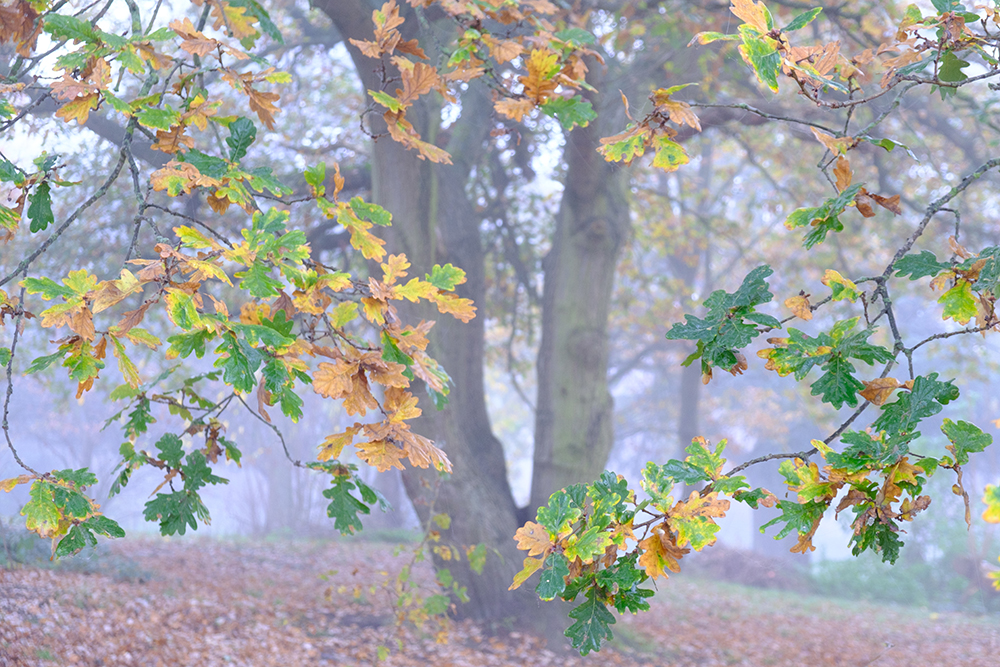
Olympus OM-D E-M5 Mark III + 14-150mm lens – $1,498 / £1,299

The Olympus OM-D E-M5 Mark III is one of the best Micro Four Thirds cameras you can buy.
- 20.4MP Four Thirds sensor
- ISO 64-25,600 (extended)
- 3in,1.04m-dot fully articulated touchscreen
Olympus cameras have traditionally offered high performance in a compact form factor, and the E-M5 series delivers on this principle particularly well. Like its predecessors, the Mark III is unique in being extremely small and lightweight, while still having a fully weather-sealed body and a good set of external controls. What’s more, you don’t have to spend a huge amount of money to get a matching sealed lens.
Buy it in a kit with the 14-150mm f/4-5.6 II, and you get an extremely useful 28-300mm equivalent lens that’s also dust- and splashproof. If you’re prepared to spend a bit extra, there’s even a 12-200mm superzoom that offers a massive 24-400mm equivalent range. Despite its small size, the E-M5 III doesn’t skimp on features.
Its 20MP sensor includes on-chip phase detection that provides 121 focus points spread across the entire image area. You get 10 frames per second shooting, a decently large viewfinder, and a fully articulated screen. As usual from Olympus, the camera also produces very attractive JPEG images , with well-judged exposure and white balance that complement the firm’s signature punchy colour reproduction.
Micro Four Thirds models inevitably give more visible image noise at high ISOs, but this can often be offset by the superb 5-axis in-body image stabilisation, as it allows you to shoot handheld at remarkably slow shutter speeds. There’s also a good range of affordable f/1.8 prime lenses available for low-light shooting that’ll take up next to no space in your bag. There is also a good choice of lenses .
Read our original review of the Olympus OM-D E-M5 Mark III
- Exceptional stabilisation
- Loads of lenses available
- Weatherproof body
- Unavoidably small sensor
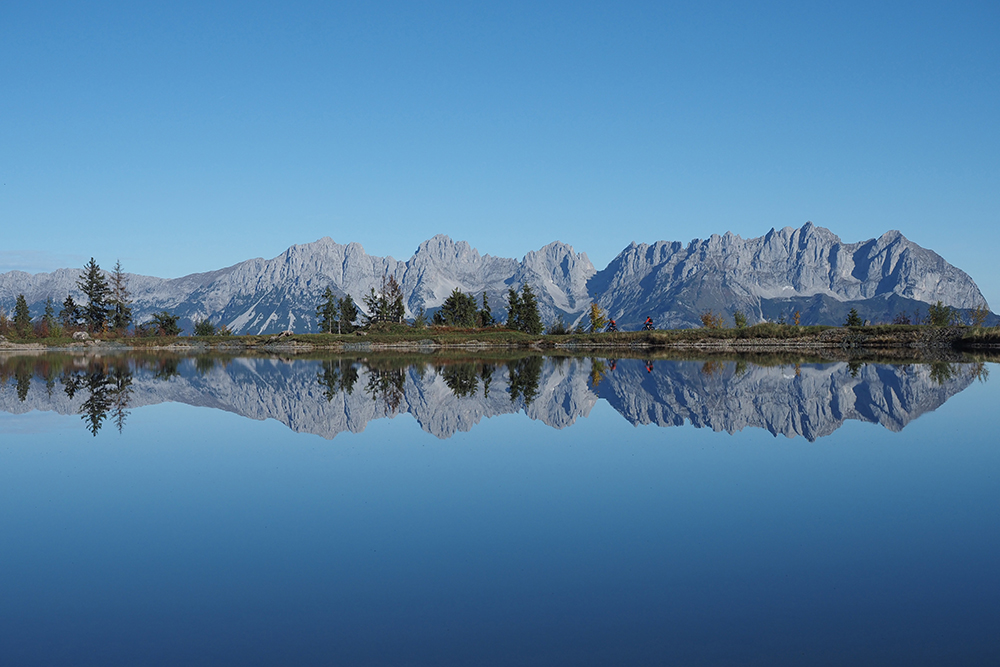
Nikon Z 5 + 24-200mm f/4-6.3 lens – $2,193 / £2,029
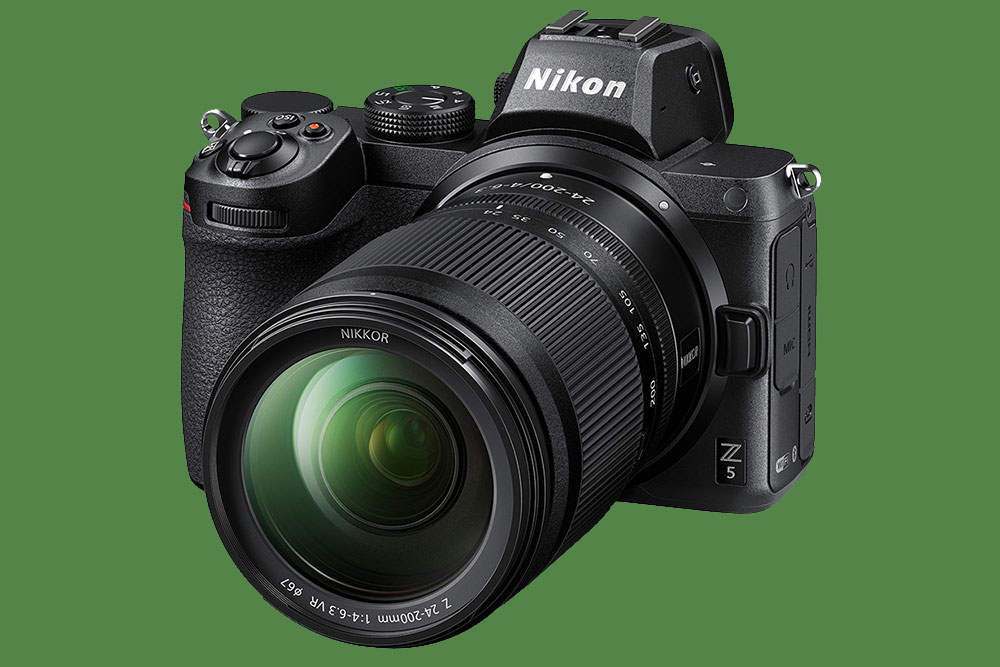
The Nikon Z 5 is the only full-frame camera on our list.
- 24.3MP full-frame sensor
- ISO 160-51,200
- 4.5fps continuous shooting
- 3.69m-dot viewfinder
- 3.2in, 1.04m-dot tilting touchscreen
If you really can’t do without full frame, the latest mirrorless models are ideal for travel , as they’re smaller and lighter than their DSLR counterparts. It’s also possible to get all-in-one superzoom lenses for them that deliver very creditable results. We’ve chosen the Nikon Z 5 , as it’s available in a kit with the firm’s Z Nikkor 24-200mm f/4-6.3 VR for a decent discount over buying the two separately.
The lens has a slightly shorter zoom range than its Canon and Sony counterparts, but provides a welcome weight reduction in return, of about 200g. While the Z 5 counts as Nikon’s ‘entry-level’ full-frame mirrorless body, it doesn’t give up a huge amount compared to the more expensive Nikon Z 6 .
Its 24MP sensor resolves just as much detail in good light, and while it falls behind in terms of noise performance at the highest sensitivities, it’s still perfectly usable at ISO 12,800. However, its maximum shooting speed of 4.5fps looks rather pedestrian by today’s standards, meaning it’s not the best choice for fast action or wildlife. It’s also only able to record 4K video with a significant 1.7x crop.
In other respects, though, the Z 5 maintains most of what makes Nikon’s mirrorless cameras so attractive. The body may be small, but it has plenty of external controls, along with a lovely large viewfinder and a tilting touchscreen . Dual SD card slots offer the option of backing up your images for peace of mind, while in-body IS means you can often do without a tripod. A range of fine fast primes is also available for low-light shooting.
Read our original review of the Nikon Z 5 here
- Satisfying controls and handling
- Does well in low light
- Gorgeous full-frame images
- Pedestrian burst rate
- Vicious crop into 4K video
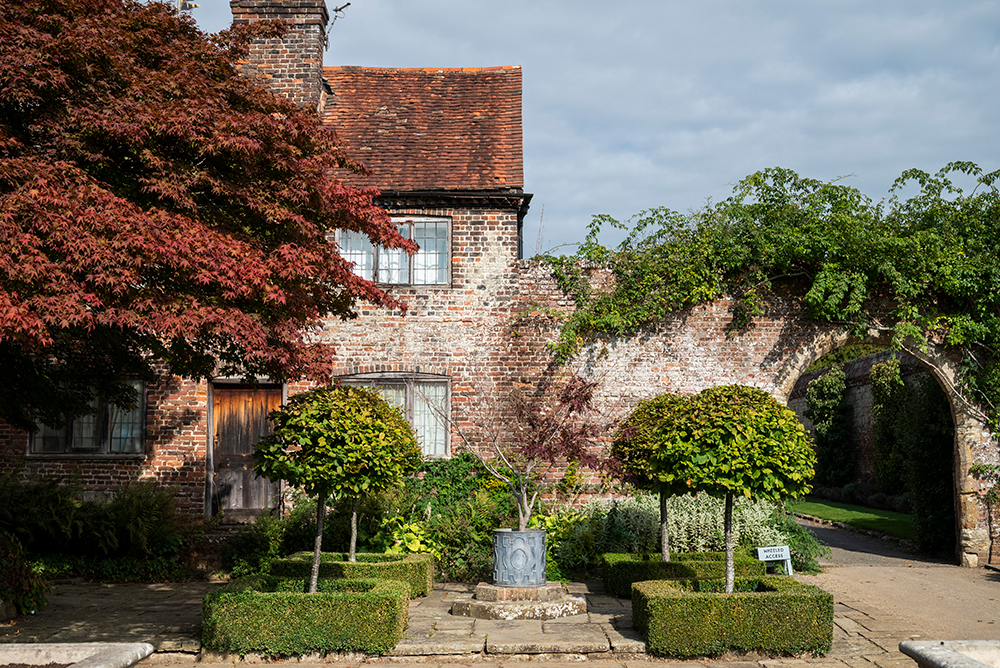
Take a look at our latest buying guides for more great options.
Related content:
- The DSLR is dead, long live the compact
- Flying with camera kit: how to do it
- Do travel photography like a street photographer
- How to take great travel photos with a smartphone
Follow AP on Facebook , Twitter , Instagram , and YouTube .
Andy has been Amateur Photographer's Technical Editor since 2014, responsible for reviewing everything from cameras and lenses to accessories and software. Prior to that, he was DPReview's Technical Editor, and introduced lens reviews to that website in 2008. Along the way, he's shot extensively with cameras and lenses of almost every imaginable type, brand and format.

You may also like...

May 3, 2024
The best budget camera phones in 2024
We pick the best budget camera phones we've reviewed, with low-cost options to capture great photos and videos.
by Rod Lawton
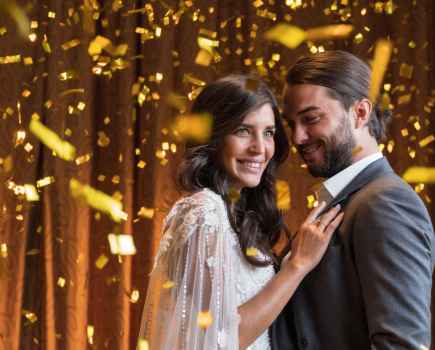
May 1, 2024
Best cameras for portraits and portrait photography in 2024
Here are the best cameras for portraits and people photography right now, from top-end options to ultra-affordable cameras for beginners.
by Claire Gillo
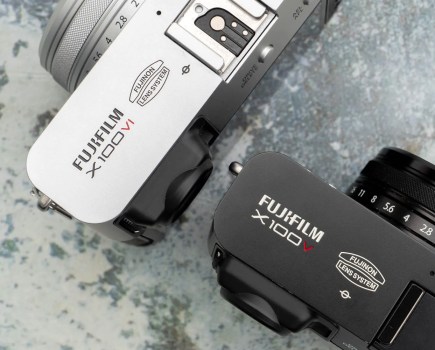
There are plenty of great retro-styled cameras that work as an alternative to the mega-popular Fujifilm X100V. Here are our seven favourites.
by Joshua Waller

Looking to improve your photography? Amateur Photographer is the magazine for you, subscribe today and pay just £26 for your first 13 issues!
No thanks, I’m not interested!

Savvy Travel Advice
Best Compact Cameras for Travel
Last updated: January 1, 2024 - Written by Jessica Norah 116 Comments
Almost everyone takes a camera with them on vacation, and we’ve decided to put together a guide to the best point-and-shoot cameras for travel to help you choose the best option for you. Having a great travel camera will help you capture those wonderful travel moments and share them with your family and friends.
This guide is based on our knowledge and experience as full time professional travel photographers and writers who use a range of cameras on a day to day basis, including point and shoot cameras, smartphone cameras, mirrorless cameras and DSLR cameras. We rarely go anywhere without at least one camera!
Cameras come in all shapes and sizes these days, from the one on your smartphone to compact cameras to professional level DSLRs. We personally think though that the best camera you have is the one on you and one that you know how to use. For many people, a compact camera, often called a point-and-shoot camera, is the perfect travel camera as they are generally small, lightweight, easy to use, and budget friendly.
We’ll help you decide if a point-and-shoot camera is a good choice for you, provide advice on how to choose the best compact camera, and share a list of the best compact cameras currently available across various price points. We also give some tips on how to make the most of your point-and-shoot camera.

Table of Contents:
Choosing a Point-and-Shoot Camera for Travel Photography
Before we get into all the various compact camera options though, we want to first explain how a compact camera compares to other camera options, point out the advantages and disadvantages of point-and-shoot cameras, and discuss the various features and specs to look for when choosing a compact camera.
What is a Digital Compact Camera?
A compact camera, also commonly known as a point-and-shoot camera, is a small and portable camera which is designed to make photography easy and accessible to everyone.
In most of the world, “compact camera” and “point-and-shoot camera” are used synonymously which is how we use them in this article. However, in some countries, the terms can have different meanings where “compact camera” refers to any smaller lightweight camera and “point-and-shoot” specifically refers to a fully automatic camera regardless of its size.
The idea is that you can point the camera at whatever you want to take a picture of and just press the “shoot” button, and the camera will handle all the technical stuff. It will shoot in an “auto” mode by default and try to choose the best settings given the conditions.
A compact camera is designed to help you capture great photos without needing to understand the underlying mechanics of how a camera works or fiddling with manual settings and dials. However, more advanced compact camera models do allow for those with more photography knowledge to use manual controls and have a number of professional quality features.
Is a Compact Camera the Right Type of Travel Camera for Me?
A compact camera is one of several types of cameras you might choose for taking photos while traveling. Photos from compact cameras are generally perfect for capturing memories, sharing with family and friends, posting on social media, or printing at a standard size.
Point-and-shoot cameras are not, however, generally ideal for professional photography, wildlife photography, portraits, or printing at a larger size. Although the more advanced and expensive compact camera models do have professional-level features, large sensors, and can take very high quality photos.
There are many options when it comes to picking the perfect camera for travel photography, which broadly fit into four major categories: smartphones, mirrorless cameras, and DSLR cameras.
There is also a sub-category of compact cameras known as action cameras, and these are cameras like a GoPro . These are however for very specific types of photography, and aren’t in most cases ideal for general travel photography use. But they can be a great option for the more outdoorsy and adventurous traveler who needs something small and more rugged than a regular camera. You can read our guide to the best action cameras if interested in those.
We’ll compare and contrast compact cameras versus smartphones, mirrorless cameras, and DSLR cameras, and discuss the general advantages and disadvantages of these cameras to help you choose the right type of camera for you.
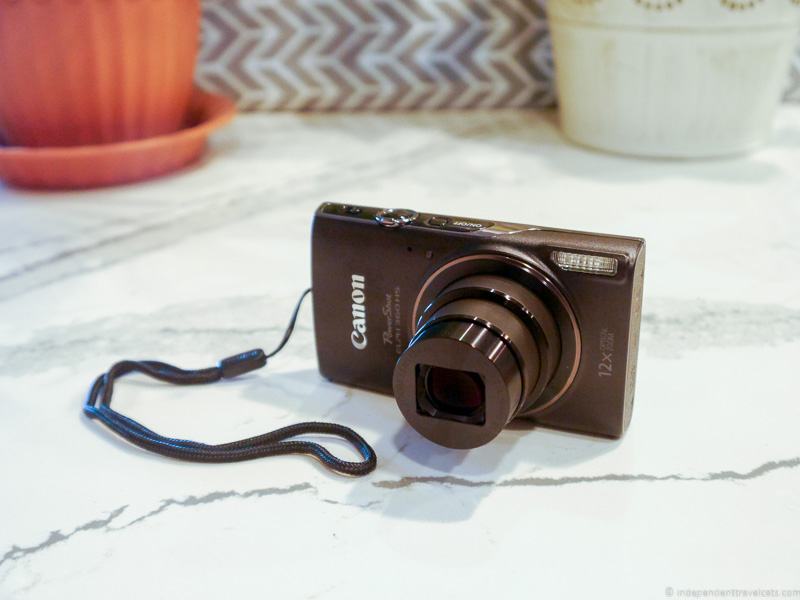
Point-and-Shoot Camera vs. Smartphone
The first, and probably most common type of camera in the world today is the one in your smartphone. These have the major advantage that nearly all of us have a smartphone which we carry with us everywhere, and the newest ones all have decent cameras. So using these as a camera doesn’t require any additional purchase or gear.
The disadvantage of a smartphone camera is that they are usually very limited in terms of optical zoom, meaning that you can’t usually shoot subjects that are particularly far away. They also tend to have a limited battery life (which also gets eaten up by all the other things you do on your phone), and most have very small sensors which means they don’t perform well in limited light situations.
Smartphone cameras are used by a very large and broad number of people and are probably becoming the most common type of device used by tourists to capture vacation photos. However, because of their limitations they are not normally the sole camera of those wanting to capture high-quality photos or those wanting to use a camera in all situations, but can serve as a good back-up option.
Point-and-Shoot Camera vs. Mirrorless Camera
Mirrorless cameras are the newest type of camera on the market and unlike the DSLRs do not have optical mirrors or an optical viewfinder. They offer interchangeable lenses, meaning you have flexibility in your lens choice, but in a relatively compact form factor compared to more traditional DSLR’s.
They are generally considerably larger, costlier, and bulkier than most point-and-shoot cameras, but do offer improved image quality and flexibility. Mirrorless cameras are popular among keen hobbyists and amateur photographers who want more control over their photography and some professionals.
Point-and-Shoot Camera vs. DSLR
Digital single-lens reflex cameras (DSLR) like mirrorless cameras also have interchangeable lens. DSLR cameras were the pinnacle of camera technology, although mirrorless cameras are rapidly catching up to them.
They tend to be the largest and heaviest of all the cameras, but they offer excellent image quality, long battery life, and the widest selection of lenses and accessories due to the fact they have been around the longest. As an example of the lens selection, check out my guide to the best lenses for travel photography , which will give you an idea of what is available.
The disadvantage of DSLRs are their bulk, weight, and cost of these cameras means that they are not the best option for most travelers. DSLRs are generally best suited for professionals or very keen amateur photographers.
Advantages of Compact Cameras
Here are the general advantages of a point-and-shoot camera:
- Specifically designed to take photos and be easy to use so that they can be used efficiently by almost anyone.
- Better image quality than the majority of smartphones and have optical zooms.
- Portable, lightweight, and small. Most models fit easily into pockets, purses, and backpacks, and don’t add much weight to luggage.
- Inexpensive compared to other types of cameras and there are many good value options out there.
- No expensive additional purchases needed to use the camera. Unlike mirrorless and DSLRS where you have to purchase a camera body and at least one lens, the only extras you need for a point-and-shoot camera is a memory card and perhaps some extra batteries.
- Due to their size, point-and-shoot cameras are much more discreet and unobtrusive than larger cameras.
- Perfect for capturing memories for those who plan to share photos with family and friends, post on social media, or print at a standard size
- Higher end compact cameras have a number of advanced features allowing you more control and can shoot at a quality similar to some mirrorless cameras.
- Great for situations where you are worried about damage to a more expensive camera such as during a hiking, climbing, skiing, boating, backpacking, or camping trip.
Disadvantages of Compact Cameras
Here are the disadvantages of a point-and-shoot camera:
- Requires you to carry a dedicated camera compared to just using the one on your phone.
- Most allow less manual control over photos than with most mirrorless or DSLR camera. This makes it more difficult to do more advanced types of photography like long exposure or time lapse photography.
- Small size means that they have smaller sensor sizes than most mirrorless and DSLR cameras, resulting in lower image quality, especially in lower light situations.
- Not ideal for those who want to sell their photos, use their photos for professional purposes, do wedding or portrait photography, or print them at larger sizes. Although at the high-end range (over $800) you can get professional quality results.
If after reading this you are leaning more towards a mirrorless or DSLR camera than a point-and-shoot one, I’d check out our mirrorless cameras for travel guide , guide to best DSLR cameras for travel , and this general camera guide .
If your are looking to give a camera as a gift, you might want to also check out our guide to the best gifts for photographers for more ideas.
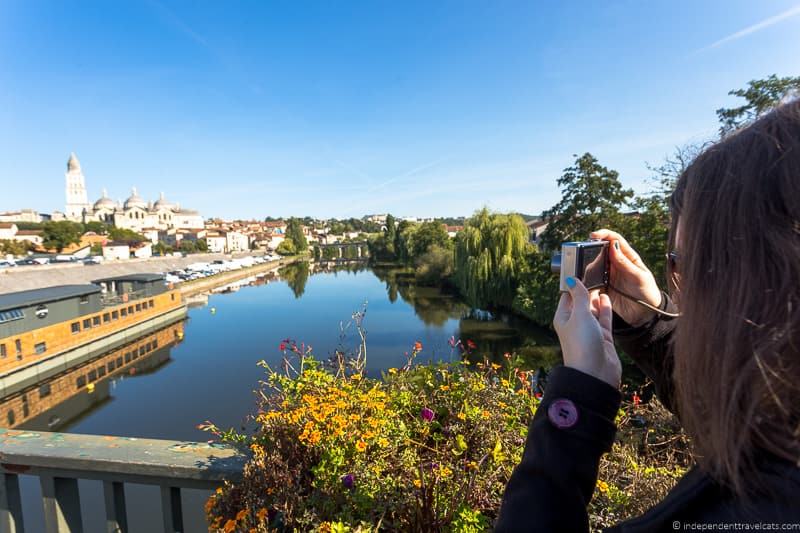
What to Look for when Buying a Point-and-Shoot Camera for Travel
When you are shopping for a compact camera (or any type of camera), you might find yourself quickly overwhelmed by technical jargon and features, and wonder which of them is actually important. Here are some of the key features you should keep an eye out for when looking at and comparing various camera models.
Optical zoom
An optical zoom is one of the main reasons to invest in a compact camera over a smartphone, so obviously this is an important feature to look out for! The number in the optical zoom signifies the difference in zoom between the most zoomed out setting and the most zoomed in setting.
So for example, a camera with a 10x optical zoom will be able to make an object seem ten times larger from one end of it’s zoom range to the other. We’d suggest a zoom of at least 8x would be a good number to aim for.
Note that optical zooms are not always directly comparable between cameras. Two cameras can have a “10x” optical zoom, but one might make your subjects seem bigger. This is because the “10x” just refers to the difference between the zoomed out and zoomed in positions of the lens, and if one lens has a wider angle at its most zoomed out setting, then the zoomed in result will be different to a lens with a narrower wide angle.
Image stabilization
Image stablization is a really important feature for any camera to offer, and compact cameras are no exception.
Generally when we take pictures, and especially with compact cameras, we are likely to be holding them in our hands. And I don’t know about you, but I find it’s generally impossible to hold anything entirely still for any length of time.
Unfortunately, the motion produced by our hand movements can quickly translate into blurry images that aren’t sharp. Thankfully, image stabilization resolves this problem by compensating for small movements from our hands, and letting us produce images that are still sharp. This is particularly important when shooting in lower light conditions, as the camera has to use a lower shutter speed to let more light in, meaning movement is picked up on the images even more apparently.
It’s also important to have image stabilization when shooting zoomed in as the zoom exacerbates the motion a great deal. So you really want to be sure that any camera with a longer optical zoom, say 8x or higher, has good image stabilization.
Aperture rating
When it comes to compact cameras, you will often see talk of a camera’s aperture rating. Usually this is denoted as a sequence of number, say 3.5 – 5.6, and may also be written at f/3.5 – f5.6.
The aperture of a camera refers to the size of the hole inside the lens through which light passes through. In most cameras, this aperture is variable and the camera can change the size of the aperture to let more or less light in, depending on the scene.
As a rule of thumb, the smaller the aperture number, the bigger the actual aperture, and the more light the camera will be able to let in. This will lead to improved image quality, especially in low light situations, and wider apertures are a desirable feature.
If you see the aperture is labeled as something like 3.5 – 5.6, this means that the maximum aperture varies depending on the zoom. So at its most zoomed out setting, a camera may have a maximum (widest) aperture of 3.5, and when zoomed in, the maximum aperture will reduce to 5.6.
Overall, the wider the maximum aperture, the better, as this will let more light in. A maximum aperture of f/3.5 or higher would be ideal, with more expensive cameras offering apertures as wide as f/1.8.
Sensor size
The sensor inside the camera is the modern day equivalent of a piece of film, and this is the part of the camera which records the light and saves it as image data.
The size of the image sensor is directly related to the quality of the image the camera will produce, with larger sensors producing better images. So generally the larger the sensor, the better quality the photos will be, especially in lower light situations.
For a long time, most compact cameras had similarly sized smaller sensors, but as of 2012, 1 inch sensor camera have become more popular. These offer improved image quality and better low-light performance, although the cameras tend to be a little bit heavier and more expensive as a result.
RAW / Manual controls
If you would like to have a bit more control over your photography process, you might want to invest in a camera that offers manual controls and/or RAW image support .
Manual controls just mean that you can adjust the settings of the camera, and specifically shutter speed, aperture and ISO yourself. So if you want to have more control over your settings, this may be a feature you want.
RAW is a file format and describes how the camera saves the image data, and RAW is essentially an uncompressed unaltered version of the more common JPG or JPEG file format. But unlike JPG or JPEG files which can be used, shared, or printed directly, RAW files cannot be used directly and need to be opened through a program and edited in a software program like Lightroom in order to create a usable image.
If you don’t see yourself doing either of these features, and just want a point and shoot camera that does everything for you and produces usable images, these are unlikely to be features you should worry about paying extra to get. However, if you think that in the future you may want more control over your photography, you might invest in a camera with these features but you can set the camera in Auto mode and use JPG or JPEG images until that time.
Video features / 4K support
Although compact cameras are mainly used to take photos, most compact camera these days also features video support. So if you are comparing cameras and there doesn’t seem to be much between them, take a look at the video support which might be a way to tell them apart.
As a rule of thumb, cheaper cameras shoot in lower resolutions. 720p is usually the lowest resolution available, followed by 1080p and finally, the most modern compact cameras offer high resolution 4K support.
Shooting video is quite demanding for a camera, so only a camera with fast image processing hardware can shoot at higher resolutions like 1080p and 4K. If you are thinking about doing video, then you might want to invest in a camera with 4K video support.
Many of the camera in this guide feature WiFi connectivity. WiFi connectivity isn’t critical but it is a handy feature that allows you to remotely control the camera and copy pictures from the camera to your smartphone or computer for easy sharing without having to use the camera cable or remove the memory card.
NFC (Near-Field Communications) is another technology that many cameras come with. This is a very short range wireless transmission technology that makes it easy to connect two devices together, such as when you want to pair your phone to your camera. This is definitely a “nice to have” but not a necessity, as you usually only need to pair your phone and your camera once, so I would definitely advise against worrying if a camera doesn’t have this one!
Battery life
Battery life is an often overlooked feature, but one that you will definitely start to care about when you find out that you camera dies after only taking 150 photos!
The battery life of compact cameras definitely varies a lot. It’s usually rated by number of shots the camera should be able to take in “average” conditions, although what exactly these conditions are is often a little vague. It’s always worth checking online reviews from real people to see if anyone reports noticeably lower battery life than that suggested by the manufacturer.
Generally you’ll want a camera that will go for around 300 shots or more per charge, although bear in mind that those big touch screens and additional features can drain batteries. Plus, you can always buy extra batteries quite easily, so don’t make this a deal breaker if it’s the only feature you’re not impressed by.
Size & Weight
Although most compact cameras are by nature fairly small and lightweight, there is a lot of variation in terms of size and weight of the cameras that are marketed as compact cameras. So it is important to still pay attention to the weight and dimension information, especially if size and/or weight is important to you.
Compact cameras often range between about 4 ounces (113 grams) and 14 ounces (396 grams) in weight, with the majority at 10 ounces or less. Cameras with larger sensors and more features are often heavier than more basic models.
In terms of size dimensions, most point-and-shoot cameras are 4 to 5 inches (102 mm to 127 mm) in width, 2 to 3 inches (50 mm to 76 mm) in height, and 1 to 2 inches (25 mm to 50 mm) in depth.
One of the reasons most people choose compact cameras is because they are smaller and more lightweight. The tradeoff, of course, is they lack some features that are common on mirrorless and DSLR cameras. So we’d look for cameras at 12 ounces or less. If you are OK with heavier and bulkier cameras, you might instead consider a mirrorless camera as you can find consumer-level mirrorless cameras in that weight range.
We list the weight for the camera as per Camera & Imaging Products Association (CIPA) standards which includes the approximate weight of the camera body with the camera battery and memory card.
The cameras on our list range between about 4 oz. (113 g) and 12 oz. (340 g). These camera can usually fit easily into large clothing pockets, small purses, backpack pockets, and fanny packs. They can also be comfortably worn with a camera strap around the neck or across the body.
Image burst shooting
Last on our list of features to look out for is burst rate, also known as continuous shooting or continuous frame rate. This refers to how many pictures the camera can take if you put it into burst mode, often used for capturing the moment when shooting action scenes.
Like video, continuous shooting requires high end camera hardware, and if a camera has a high burst rate, you can be fairly confident that the hardware inside is top notch. Of course, it’s not important for everyone and not a feature most people looking for a compact camera care too much about, but it can certainly be nice to have a better burst rate.
As an example of the difference, the Canon Elph 180 has a burst rate of 0.8 photos per second, which isn’t exactly great. The Sony RX100 VII on the other hand, can take 24 photos every second. Quite a difference!
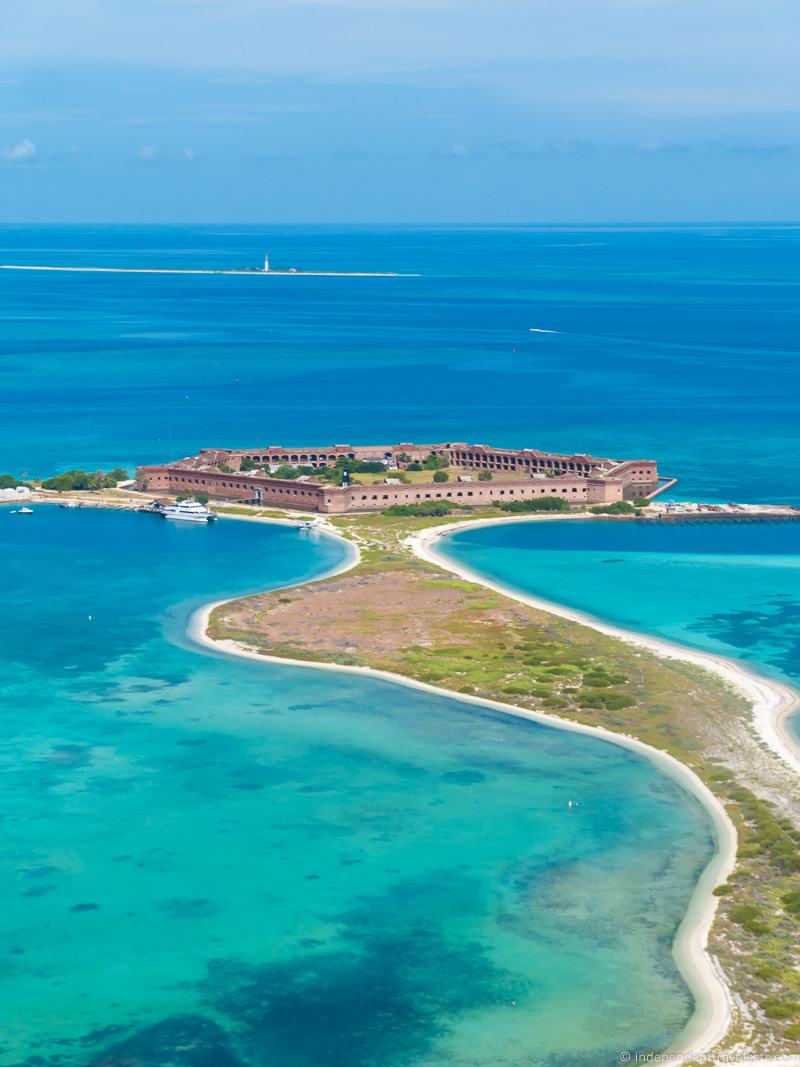
The Best Compact Cameras for Travel Photography
Now we’re going to go through what we think are the ten best compact cameras for travel photography across a variety of price points. These are ordered by price, from least expensive to most expensive. For each pick, we’re going to share a little bit of detail of each model. This compact camera comparison will hopefully help you choose the perfect camera for you.
We have chosen point-and-shoot cameras that we think would be ideal for every budget. Note that our suggested starting price point is $100 USD and while there are some cheaper compact cameras out there, we think at that price point you would likely be better off sticking with your smartphone rather than investing in something that may not perform well.
Here is our list of the best point-and-shoot cameras for travel photography.
Note that many brands are no longer actively developing compact cameras and stock levels have started to become low for some models. Unfortunately, with the switch to smartphones, we don’t forsee this situation improving significantly any time soon.
1. Canon PowerShot ELPH 180
If price is your key consideration, then this Canon Powershot Elph is a great option. Both Jess and I’s first compact digital camera were from the Canon ELPH range. We were always impressed by the image quality and features given the price point.

With image stabilization, an 8x optical zoom, a variety of creative shooting modes, and positive reviews, this is a great entry level compact camera for those on a tighter budget. Very lightweight at only 4.44 ounces and will even fit into your pocket.
Note there’s a very similar model, the Elph 190 . This has a slightly wider zoom range, and includes WiFi connectivity. It’s also marginally heavier and slightly more expensive.
Weight : ~ 4.44 ounces / 126 grams Check price on Amazon here , B&H here , and Adorama here
2. Sony DSC-W830
Sony have an excellent reputation for building excellent cameras, and even at the lower end of the price spectrum this little compact camera offers a number of great features.

Weight: ~ 4.23 oz / 120 g Check price on Amazon here , B&H here , and Adorama here
3. Canon PowerShot ELPH 360
The Canon PowerShot ELPH 360 is another excellent compact camera from Canon at a budget price point. With a 12x optical zoom and image stabilization, this model also offers a number of extra features over the lower end models, including Wi-Fi connectivity and NFC.

If you’re into video, this PowerShot also lets you shoot at 1080p high definition, which is a step up from the 720p of the Sony. The extra optical zoom is also nice. Lightweight at around 5 oz. Offers great value at this price point.
Weight: ~ 5.19 oz / 147 g Check price on Amazon here , B&H here , and Adorama here
4. Sony Cybershot WX220
Our next compact camera recommendation is another Sony, this one offering a few more features at a slightly higher price point. The main focus on this camera is its small physical size – somehow this diminutive compact camera manages to fit a 10x optical zoom with image stabilization, Wi-Fi, and NFC into a package weighing just over 4 oz!
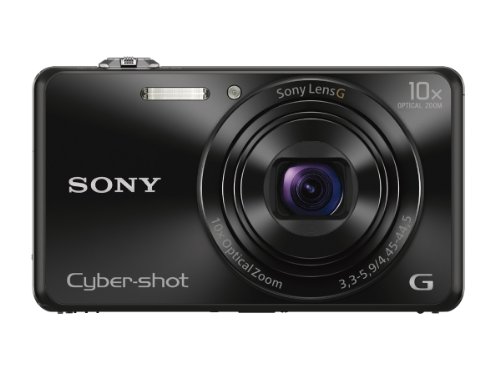
Definitely an excellent option if size is a primary concern. The image quality also receives positive feedback from reviewers.
Weight: ~ 4.27 oz / 121 g Check price on Amazon here
5. Panasonic Lumix ZS70 / TZ90
Stepping up the price a little bit, this is the first entry on our list from Panasonic, who have a solid reputation for making excellent compact cameras. This ZS70 is no exception, and your extra money largely goes towards the lens as this camera offers an impressive 30x optical zoom lens. This makes it perfect for capturing the action even when it’s far away.

You also get a number of other features, including good low light performance, the option to shoot in RAW for more control over your images, and an advanced optical stabilization system.
This is also the first compact camera in our list to feature an electronic viewfinder, which can make taking photos in brighter conditions easier.
It does come in at a little over 11 oz when you add the battery and memory card, but considering the size of the zoom, this might be a worthwhile compromise. This is our pick for the best compact camera at this price point.
Note that the Panasonic Lumix ZS70 is the same as the Panasonic Lumix TZ90 which is the camera model name in some markets such as the UK.
Weight : ~ 11.3 oz / 322 g Check price on Amazon here , B&H here , and Adorama here
6. Sony RX100
The Sony RX100 line of compact cameras marked a shift in compact camera thinking when first released in 2012, as it was one of the first compact cameras to feature a “1-inch” sensor. This larger sensor meant better quality images and better performance in low light situations, and the camera was named best invention of the year in 2012 by Time Magazine .

Since its release, seven models of the RX100 have been released, but if you look around you can still pick up the original, and to be honest, it’s an absolute bargain for what you get. With full manual controls, a 3.6x optical zoom, and a weight of 8.5 oz, this is a great compact travel camera for the price.
Weight : ~ 8.47 oz / 240 g Check price on Amazon here
7. Canon PowerShot G9 X Mark II
As with the Sony RX100, the well regarded PowerShot G9 Mark X II compact camera from Canon features a 1-inch sensor, offering good low-light performance and superb image quality.

The G9 X Mark II only features a 3x optical zoom. However, it has a wealth of manual controls, RAW support and a touch screen, as well as fast burst shooting and Wi-Fi support. All this fits in a package that weighs just over 7 ounces. If image quality means more to you than optical zoom, this is a good deal. This would be our pick for the best compact camera in this price range.
Weight : ~ 7.26 oz / 206 g Check price on Amazon here , B&H here , and Adorama here
8. Canon PowerShot SX740 HS
If optical zoom is more important to you than a large image sensor, then the Canon PowerShot SX740 should definitely be on your compact travel camera shortlist.

This model offers a remarkable 40x optical zoom, image stabilization, 4K video support, the ability to shoot at a fast 10 frames per second as well as a tilting LCD screen. It also offers manual controls, but no RAW support. That optical zoom does increase the weight a bit though, to just over 10 ounces.
Weight : ~ 10.55 oz / 299 g Check price on Amazon here , B&H here , and Adorama here
9. Panasonic Lumix ZS200 / TZ200
The last few cameras in our compact travel camera round up are somewhat more expensive, but you certainly get what you pay for, with near professional level features and image quality in remarkably small formats.

If you have the budget, this would definitely be our pick for the best point and shoot camera under $1,000.
Note that the Panasonic Lumix ZS200 is the same camera as the Panasonic Lumix TZ200. It just marked under different names in different markets.
Weight : ~ 11.9 oz / 340 g Check price on Amazon here , B&H here , and Adorama here
10. Canon G5X Mark II
New in 2019 from Canon is the Canon G5X Mark II, one of Canon’s premium compact camera options.

The G5X Mark II features a 20.2MP 1 inch sensor, a 5x optical zoom optically stabilised lens with a wide f/1.8 – f/2.8 aperture, meaning this will perform relatively well in low light situations.
There’s a tilting touchscreen as well as a popup electronic viewfinder. The camera can shoot in RAW continuously at 20fps as well as 30fps in burst mode, and there are full manual controls as well.
There’s 4K video support, a built-in flash, as well as both bluetooth and wifi connectivity. It comes in at 12 oz, and has a rated battery life of 230 shots. You can charge the camera in battery via USB, and it also comes with an external battery charger so you have the option of both.
11. Sony RX100 VII
At the top of Sony’s RX100 range is the RX100 VII. Released in August 2019, this offers a 1-inch sensor alongside an 8x stabilized optical zoom, world-leading autofocus performance, 24fps burst shooting, 4K video recording. and WiFi video connectivity. It also has RAW support and full manual controls.

Naturally, image quality is superb, and the camera manages to fit all this into a package that weighs just over 10 oz. It can’t quite match the optical zoom of the Panasonic Lumix TZ200, but it certainly has an impressive pedigree.
We currently have a prior version of this camera, the Sony Cyber-Shot RX100 V , and can recommend this model if you are looking for something less expensive. It’s a great compact camera.
Weight : ~ 10.7 oz / 302 g Check price on Amazon here , B&H here , and Adorama here
**You can also see all the compact cameras we recommend above in a single page on Amazon here with current prices for an easy and handy reference.**
Tips for Taking the Best Photos with a Compact Camera
Now that you’ve hopefully decided on the best point-and-shoot camera for you, we wanted to share a few tips for getting the most out of your new compact camera. We also have a guide to using a compact camera here , which you might find helpful.
Learn how to use your camera properly
I always think that you will get more out of your equipment if you understand the various features, modes, and buttons that it offers. Whilst the idea behind a point and shoot is to make your photography life easier, every camera has a variety of features that can help you take better photos. We’d suggest having a look through your camera’s owner’s manual, or looking online for information about your particular camera model.
It is also important that you understand how to enable and disable features on your camera if required. For example, when traveling there are often restrictions on the use of flash photography, especially in museums which house valuable art and objects that can be damaged by light. Flash is often set as automatic on compact cameras so being able to disable and enable features like this can be really important.
Finally, learning the limitation of your camera can be the difference between frustration and understanding. For example, point-and-shoot cameras are not usually great in low-light situations, so if you are trying to take photos in a dark room or at night, you are probably not going to get the most ideal photo. However, you can compensate for limitations such as this one by using a tripod or finding a low light mode that helps.

Learn how to compose a great photo
Many people think that the better a camera, the better the photo will be. This is untrue. Someone who knows how to compose a great photo can usually get good results, regardless of their photography gear.
Photography composition is the art of understanding what makes a good photo, and how to place your subjects, using ideas such as the rule of thirds, color, and leading lines. Check out our full guide to photography composition for more ideas.
Learn some basic editing techniques
In the case of point-and-shoot cameras, especially if you are shooting in JPG, for the most part, images will look good straight out of the camera. However, you might want to learn some basic photo editing techniques so you can do things like crop images, straighten photos, fix red eyes, adjust the lighting, and so on.
For editing on smartphones or tablets, we highly recommend Snapseed ( Android app version / iOS version ), which is an excellent free photo editing tool app. On computers, your camera may come with free editing software or you can a free online editor like Canva or one like PicMonkey (small monthly fee).
Or for more serious editing, we recommend investing in something like Adobe PhotoShop or Lightroom . You can see our list of paid and free photo editors to decide what might be best for you.

Take advantage of the light
Photography is the art of capturing the light, but did you know that not all light is the same when it comes to photography? For example, the light at the start and the end of the day, around sunset and sunrise, is generally softer and warmer, and results in more pleasing images. In contrast to this, the light in the middle of the day is usually a bit harsher and less flattering.
As well as time of day, direction, and availability of light is important. Generally, the more light that is illuminating a subject the better. If the sun is covered by clouds and you can wait until the clouds move, you will generally get a better photo with more color and pop. Although the sun is a photographer’s friend, you will generally want to avoid shooting directly into the sun as this will result in very high contrast photos.
Consider getting some camera accessories
Although you won’t need as many accessories as larger cameras, there are still a few extras you’ll likely want to consider:
- Extra batteries and memory cards. To ensure you can use your camera all day while out traveling, you’ll want to keep spare memory cards and batteries (and maybe your charger) handy. For the best performance of your memory card (and to keep from having to replace it a lot), we recommend getting a larger and faster one, we use these ones . Also remember that in cold weather, batteries will drain faster and you can check out these cold weather photography tips .
- Camera case to store the camera and protect it when not in use, particularly recommended for those using it as a travel camera. We recommend a protective case like this one (we use the large version of this one for our Sony RX100 V) or this one that will easily fit where you need it (e.g., purse) and store your camera plus your most used accessories (e.g., spare batteries, cable, and memory cards). Some cases come with shoulder or neck strap and a way to affix to a belt or belt buckle.
- You probably won’t need a camera strap with a lightweight compact camera. However, if you choose a heavier model or prefer to have your camera around your neck when traveling, a camera strap might be a good investment. Many of the colorful iMo straps are great for more lightweight cameras.
- If you want to enhance your photography, you might want to consider a tripod. A tripod can help you shoot in low light conditions, capture better photos of yourself , and take better couple photos when traveling. Although a bulky tripod is not ideal for traveling, you can get a foldable mini-tripod like this one that can fit into a purse or backpack. We have a travel tripod guide to help you explore your options.
Think about taking a photography course
Finally, photography is very much a skill that benefits from practice and training, and one of the best way to improve is to take a photography class or workshop. Laurence teaches a popular online travel photography course which allow you to learn at your own pace while getting personalized feedback. The course will teach you everything you need to know about taking better travel photos, and it even has a whole lesson dedicated to how to get better photos with a compact camera.
Whether you decide to take a course or not, one of the best ways to improve your photography is to practice, practice, practice. Don’t just dust off your compact camera when its time to take a vacation or capture a special event. Take your camera with you to family outings, hikes, cafes, museums, sporting events, and even while out walking the dog.
Take the time to look through your photos with a critical eye, and you’ll naturally see improvement with more practice. Practice, experiment, and have fun!
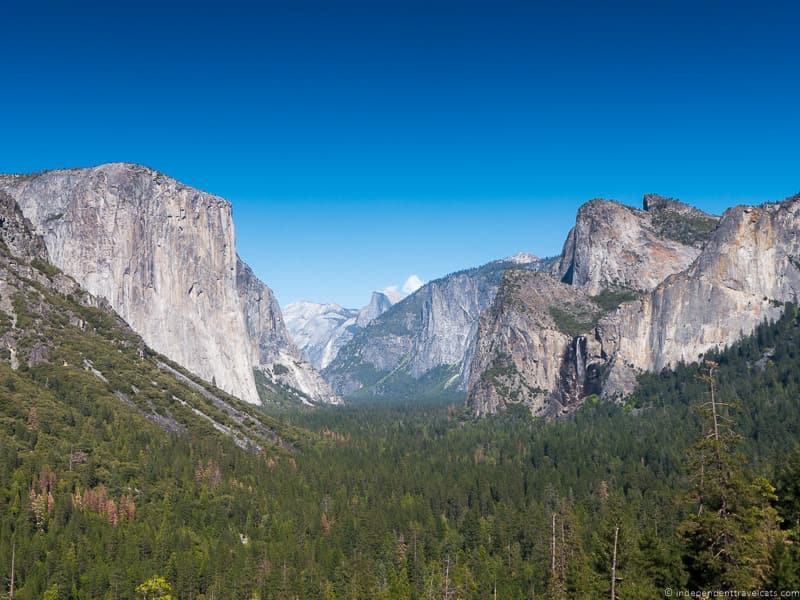
And that’s it for our advice on choosing the best compact camera for travel! Hope this helps give you if you are looking for a compact camera or trying to take better photos with your point-and-shoot c amera.
PIN this guide on Pinterest to read later:
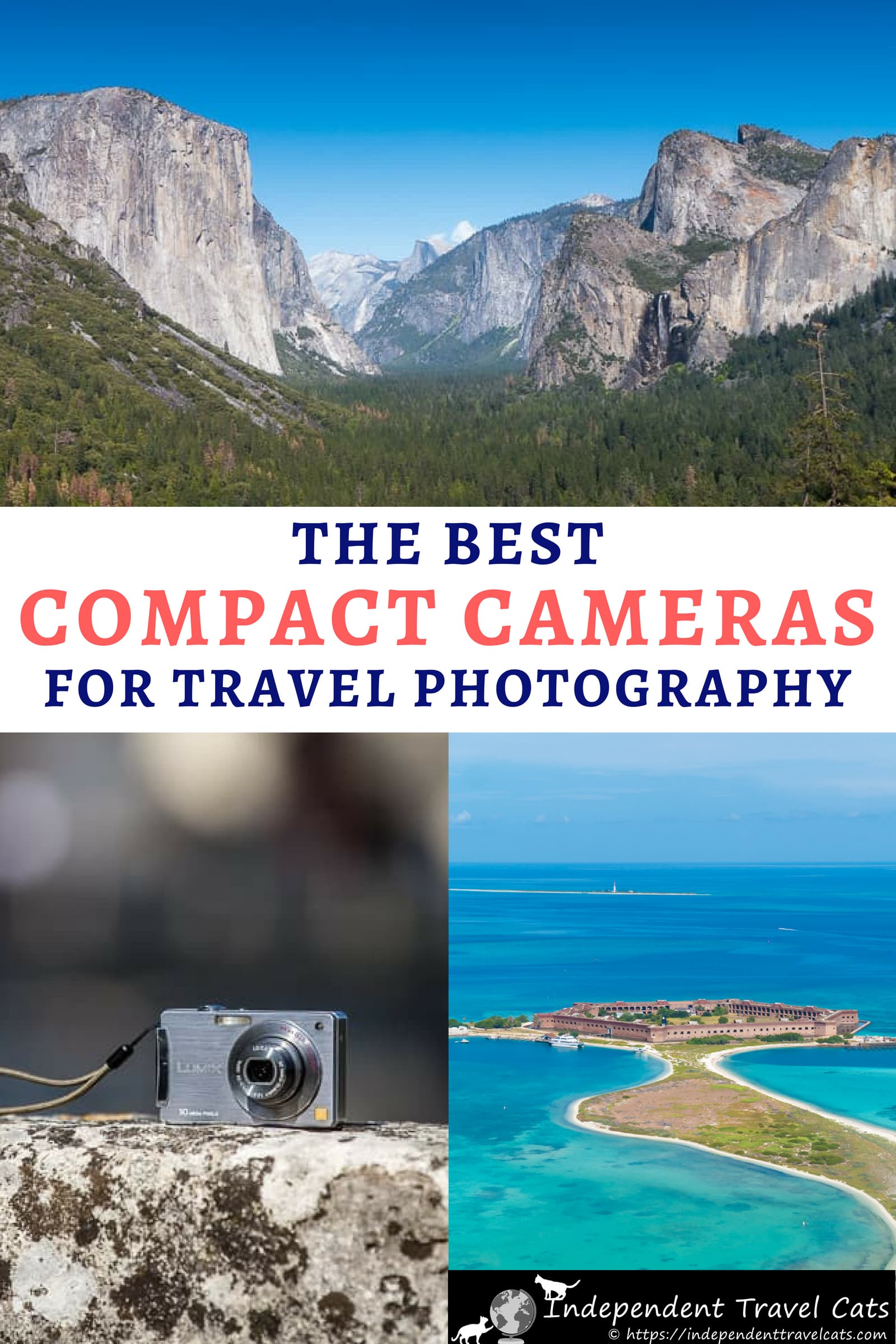
Do you have any of your own tips or advice choosing or use a point-and-shoot camera? Have a questions about compact cameras or travel photography? If so, just let us know in the comments below!
Share this Post!
There are 116 comments on this post.
Please scroll to the end to leave a comment
Anne Post author
November 16, 2022 at 7:09 am
Hi! I am planning a trip to the UK in September, and I have heard it can be quite a wet climate at that time. I will be traveling through Scotland and Ireland and I am looking for a camera that takes landscape pictures and video as well as good pictures of the numerous attractions I will be touring. Ease of use and battery life are of a higher priority. What camera would you recommend for me?
Jessica & Laurence Norah Post author
November 16, 2022 at 8:28 am
Yes, it can be quite wet here in the UK and Ireland so it is good to consider that when packing both your clothing as well as your gear. So for a camera, most compact cameras have little or no real weatherproofing (generally the best weather proofing and sealing is on the larger and more expensive camera models). So they are not designed for being used in the rain and can get water trapped inside if they get rained on or submerged in water. But you can easily prepare for this by simply having a waterproof camera case, bag, or even a sealable dry bag or Ziploc bag with you so you can always put it in there to protect it. Many camera bags and cases come with an included raincover if they are not waterproof.
So if it is raining hard or blowing rain and have a camera without any weathersealing, we’d probably recommend putting away and protecting your camera. But if it is just drizzling/sprinkling you can often still shoot if under an unbrella, camera rain cape, awning, etc. But to be honest, if it is pouring down rain, you are unlikely to get any good shots anyway 😉
So in terms of cameras, it really depends on your budget. But if you want a general recommendation of a mid-range compact camera, we’d suggest considering perhaps this Panasonic Lumix compact camera , which offers 380 shot battery life, has a great zoom, 20.3 megapixel sensor, and is pretty easy to use. Gets good reviews. But if you would like more suggestions, just let us know your budget.
Hope that helps, and just let us know if you have any further questions as you choose a camera and plan your trip to Scotland & Ireland!
Best, Jessica
Friadon Kader Post author
July 26, 2022 at 10:26 am
Hi I fully injoid your article, many useful subjects. I haven’t read the comments. I have a comment about choosing a compact/point-and-shoot camera which is”GPS” built. I did not see any referring to GPS in your article, it is very crucial to geotag any photo or video. I am looking for a compact/point and shoot camera with a focus on some criteria as: must be compact, GPS build-in, an optical zoom greater than 10, touch screen “3´”, wifi, good aperture and finally a price up to 800 $. Best Friadon
July 28, 2022 at 3:12 am
Hi Friadon,
So as you have observed, very few compact cameras these days come with GPS built in, and so it wasn’t a criteria we included as you will have a hard time finding a newer cameras with this feature. It was a popular feature a few years ago, but most manufacturers no longer include it as most users didn’t use it and so to save cost they leave it out. This is the same for larger cameras as well. We also like to geotag our images, so appreciate this is a bit frustrating.
The main issue with built-in GPS is that it uses a lot of battery so was mainly a feature on DSLRs as they typically don’t use as much battery as mirrorless and compact cameras. For example, the DSLR camera bodies we own have built-in GPS but neither our mirrorless or compact cameras offer this feature.
The good news is that many camera manufacturers still allow you to geotag your photos by pairing the camera with a smartphone, and then the app adds geotagging information from the phone as you go. This is an extra step you have to remember to do, but it does work, and is what we currently do with our mirrorless camera which does not have built-in WiFi. So you will just need to check to see if the manufacturer and camera you choose supports this and has an app that can do the geotagging.
Some example, cameras that include this functionality are various Sony compact cameras including the Sony RX-100 VII, RX100 VI, DSC-WX800, DSC-WX700, DSC-HX99, DSC-HX95. It’s also supported on the Panasonic ZS200. Other brands like Canon should also support it but you would need to check.
Based on your requirements, I would say the Panasonic ZS200 might be the best option, it has a 1 inch sensor, 15x optical zoom, relatively wide aperture and a touch screen. It’s also under budget. The other option would be the RX100 VI , which has similar features but it is more expensive. Performance on both is quite similar in most situations.
Hope this helps! Laurence
July 28, 2022 at 9:43 am
Hi Jessica & Laurence Norah Thanks a lot to you wherever you are on this planet. Your information is clear and useful. I came to a lot closer to decide my next camera. Especially these criteria as an app helps to geotag, compact form, 3´ inch touch, excellent optical zoom, wide aperture, 4k and at last under my budget is exactly what I am looking for. Sony cameras are excellent but usually overpriced everywhere even in my country Denmark. But the “Panasonic ZS200” might be the proper choice for me at this time. last week I spent a lot of time finding a camera close to all my preferences, but now I have this option Panasonic ZS200 from you. Usually, I am using my smartphone while I am travelling I enjoy plotting my photos on a google map “Coordinates and names” thanks to the GPS in the smartphone. But as we know smartphones are proper for taking photos to close, up to 7-10 meters away. Greeting Friadon
Laurence Post author
July 29, 2022 at 6:29 am
Glad to hear it was helpful! We hope you enjoy your new camera 🙂
Laurence & Jess
Friadon Post author
July 29, 2022 at 7:45 am
Hi Laurence & Jess
Thanks for your time and assistance, good luck.
Best Friadon
Zeb Grassi Post author
July 12, 2022 at 5:34 am
great post, a bit overwhelmed though as don’t know much about cameras. Just want a pocket camera that has decent zoom and fairly easy to use so can get good photos when traveling on an upcoming trip. Budget for camera up to around $500 or less. Live in USA. thanks for your kind assistance.
July 12, 2022 at 5:44 am
I would recommend taking a look at the Panasonic ZS70 . Based on what you are wanting, it sounds like it would be a good option, it is compact, has good image quality, good zoom, and comes in under your budget.
Hope that helps. If you have any further questions, just let us know!
Pam Post author
July 7, 2022 at 12:24 pm
Not sure what the update was, since nearly every camera is out of stock. Shame, because I thought the assessment was terrific and would have like to see more of your work. However, based on the comment dates this information is 4 years old, and there’s been plenty of changes since then.
July 8, 2022 at 5:16 am
This post was updated earlier this year. These are our latest recommendations for compact cameras. All the links worked fine when we checked today.
Unfortunately, the compact camera segment has become a little stagnant over the past years as consumers switch to smartphones or more powerful options. We checked all the cameras on our list and they are all showing as in stock on Amazon. B&H has less stock, but they don’t tend to focus on compact cameras, and there have been worldwide supply chain issues which are likely also contributing to that. But it will depend on where you live but if you live in US, Canada, Japan, or most of Europe, you should be able to get most of these camera models online. It can be a bit harder in other markets as it is with all types of cameras.
Some of the cameras we list have been discontinued by the manufacturer, but we keep them on the list while there is stock available and either a) they haven’t released an upgraded version or b) the upgraded version doesn’t offer significant improvements (such as the Panasonic ZS70 to ZS80) that make it worth paying more for.
We do keep this post up to date, as we strive to with all our content, however the reality is that there hasn’t been a lot new to recommend when it comes to compact cameras over the last couple of years, and as such our current recommendations still stand.
Which compact cameras are you interested in and where do you live? We are happy to try to see if we can help point in the right direction where you can purchase the camera of interest or suggest an alternative if it is not available in your particular region of the world.
Best, Jessica & Laurence
Anna Post author
August 14, 2021 at 6:30 am
Great article!
I have the Sony DSC-W830 and we love it. It’s very compact and cheap too! We bring it anywhere and let the kids use it. Will definitely consider the other cameras on this list, though.
Stay safe and cool!
August 14, 2021 at 10:31 am
Thanks for taking the time to let us know that you enjoyed our compact cameras for travel article!
Glad you like your Sony DSC-W830 . Sony makes nice compact cameras and that is definitely one of the better priced on our list. It was released in 2014, so there are definitely better models out there when you need to upgrade or replace it, but that camera sounds like it is great for your current needs!
If you have any questions about point-and-shoot cameras just let us know!
william henry Post author
February 3, 2021 at 11:51 am
I love travelling and want to buy this compact camera. Thanks for share!
February 8, 2021 at 6:24 am
Hi William,
Glad our compact camera guide was helpful in choosing a camera – if you have any questions about a specific camera, just let us know!
Steve martin Post author
November 9, 2020 at 3:13 am
Thanks for such an amazing blog, great information about compact cameras.
November 9, 2020 at 5:57 am
Thanks so much for taking the time to comment and let us know it was helpful. If you are looking for a new compact camera and have any questions, feel free to ask!
John Post author
June 1, 2020 at 10:57 pm
Hi Cats, I am looking for a camera at the moment and I’m finding it very difficult to choose the right one. I love your photos and I’m very interested in what you use to take them. I have a few questions I hope you can answer. 1) What camera models do you use for this website and in what situations do you use each of the cameras? I would love to be able to associate a camera to a picture if possible. 2) If you could only use one camera from a number of cameras you own which one would it be and why? 3) Which camera do you use the most? 4) Which camera do you love the most and if you don’t use it the most why is that? 5) If you’re looking at upgrading to another model of camera(s) at the moment which model(s) are they? 6) I have looked at your photos in more detail and have noticed that you have managed to reduce photo file sizes to a very small size (like 65KB and under) and still have the pictures looking great. What software do you use to reduce the file size? I only seem to be able to reduce down to 80-100KB at the most before a noticeable drop in quality. Can you tell me the settings you typically use in your software package to reduce the file size down to these very small file sizes. 7) At the moment I am torn between a camera with a larger sensor (1 inch) or a better zoom (30x or 40x). If you had to choose a camera based on having one of these advantages alone and giving up the other, which would you prefer to have? By the way this website is awesome. I look forward to exploring more of it. All the best, John
June 2, 2020 at 8:14 am
We have used a variety of cameras to take photos on Independent Travel Cats and Finding the Universe as photos span over a 10 year timeline! So these are no easy answer to that question as it depends on the specific photo as we have used over 10 different cameras. You can check here, for a list of all the travel photography and camera gear we are currently using.
But in general, the camera we use most during our travels is a Canon EOS 6D, this is a DSLR camera so I would guess most photos were taken with that camera across our two travel blogs. But for example, in this post, all the photos (those that are not photos of compact cameras) were taken with a compact camera since it is a post about compact cameras.
But our go-to camera is the Canon EOS 6D as we both have one of these which makes it easy to share lenses. It has a full frame sensor and takes great photos and is a camera we both enjoy using. However, for most people wanting an all-around travel camera, we’d generally recommend a smaller camera such as a mirrorless camera since they are generally more travel friendly.
There is no one best camera for travel, but you should choose one that best fits your needs, how you plan to use, where you plan to use, and your budget. The more important thing is learning how to use your camera to the best of its ability.
The last camera we bought was a Sony RX100 V compact camera. I am not sure what our next camera might be, but perhaps a Canon mirrorless camera. This year’s EOS R5 and R6 releases look very exciting and we hope to get a chance to check them out at this year’s Photography Show.
Image sizing can be a complicated topic, and comes down to both compression and file size. We do almost our editing and exporting through Adobe Lightroom and then further compression through WordPress plugins. Laurence has written about some of this in his guide to image compression here .
Whether you prioritize a large sensor or long zoom really depends on the type of photography you want to do. A larger sensor is better in lower light situations, whereas a longer zoom is better for wildlife and shooting things in the distance. So there’s no one size fits all, it just depends on the type of photos you want to take
It sounds like you have a lot of questions around photography, and we’d definitely recommend checking out Laurence’s Online Photography Course where he covers the basics of photography, how to choose a camera and camera gear, mobile photography, photo editing, advanced techniques, and much more. You also have access to unlimited help from Laurence and a group of like-minded individuals interested in photography.
Hope that helps!
June 3, 2020 at 3:00 am
Hi Jessica, thanks for the great response. I have signed up for your Online Photography Course which looks fantastic so consider me one of the family now. All the best, John
June 3, 2020 at 6:41 am
Awesome to hear, and glad to have you aboard 😉 I think you’ll find the course, the assignments, the private Facebook group, and everything really helpful!
Eli Post author
May 10, 2020 at 10:10 am
HI and thank you for this informative article. We are looking for a camera and would like your advice: this are the features that are important to us: 1. large zoom 2. large sensor 3. under 500$ 4. easy to handle in auto mode
These are the cameras we were looking at, would like to know your advice which would give us the best results: Sony RX100 I, PANASONIC LUMIX ZS100, Canon PowerShot SX530 (small sensor), Canon PowerShot G9 (small zoom), Canon PowerShot SX740 (small sensor) Please advise either between those 5 or if you have a different camera in mind Thank you so much!
May 10, 2020 at 11:01 am
We are happy to help! Based on what you want in a compact camera and price point, I would say the only really contender out of those is the Panasonic Lumix ZS100 .
The RX100 I has a small zoom (up until the RX100 VI model the zoom is only 3x). You have already done a great job of highlighting the shortcomings of some of the cameras you have picked, and I believe the ZS100 is really the only camera that really meets all your criteria from your list.
So I think the Panasonic Lumix ZS100 is an excellent choice available at a great price, and I think you’ll be happy with it. Feel free to follow-up and let us know what you decide and how you like it.
Best, Laurence
May 10, 2020 at 1:14 pm
Thank you! I will
May 10, 2020 at 9:27 pm
Hi again, Just before I buy – how about the PANASONIC LUMIX FZ1000 it has larger zoom and same sensor, a bit more expensive but still in the budget. What do you think? Thank you again so much
May 14, 2020 at 5:34 am
The Panasonic Lumix FZ1000 is a much larger camera, more similar in size to a small DSLR rather than a compact camera. It is a bridge camera so it does not have interchangeable lenses, so in that way it is similar to a compact camera.
But if you are OK with the size and weight of the PANASONIC LUMIX FZ1000, you do get a much longer optical zoon and it will have slightly better image quality and capabilities in low light. But since this is not a compact camera, the two are not directly comparable.
So I think if you are considering those two, you’ll have to decide between the increased features versus the size/weight.
Hope that helps! Jessica
Dave Post author
April 7, 2020 at 11:26 am
Awesome article; the only thing that needs (IMO) rectifying is entering camera weight in grams as weird ounces just don’t cut it. I’m leaning towards Panasonic zs100 but still deciding. Hmm.
April 7, 2020 at 12:08 pm
We will add more of the measurements in grams in a future revision for those who are not familiar with ounces 😉 But it is easy to convert as 1 ounce equals about 28 grams.
The Panasonic ZS100 is a good camera with a nice optical zoom and a decent price. Just let us know if you have any questions as you try to decide on a compact camera!
Lyn Post author
March 21, 2020 at 4:29 pm
Great information! I am struggling to decide what type of compact camera to buy .( even after your wonderful post ) I want a zoom but also good image quality. Would probably only print to 8 x 10 ( possible 11 x17 max ) . If you had to choose which would you recommend , Panasonic Lumix SZ70 or PowerShot SX740. Which has better image quality. Also does Lumix ZS 200 have noticeably better image at 8 x 10 ( 11×17) to warrant twice the price .,
Thanks so much , Lyn
March 22, 2020 at 5:54 am
Between the Panasonic Lumix SZ70 and the Canon Powershot SX740, we would recommend the Lumix SZ70 . It has more manual controls, RAW support, a touch screen, and a viewfinder. While it doesn’t have quite as much optical zoom as the Canon, image quality on the Canon tends to drop off at those longer zooms anyway.
For printing, the Lumix ZS70 (and most cameras on the market) would be fine at that size. Choosing the Lumix ZS200 might make sense if you plan on doing more indoor or low light photography when the larger sensor will make a more noticeable difference to your images – they should be less grainy. However, for more general outdoor photography where there is plenty of light I don’t think you would notice much difference that would justify the much higher price tag, it is certainly not twice as good!
Hope that helps! Jessica & Laurence
March 22, 2020 at 8:05 am
Thank you, that helps a lot !
Rob Post author
March 3, 2020 at 12:21 pm
Ease of use is really important if you not a “serious” photographer. Which of your recommendations are the easiest to use out of the box. My spouse would like something compact and better than her iPhone camera. She sees me struggling to remember how to use my Sony RX100 VI with all its manual options. We would like something that is compact, has a good sensor, has a good optical capabilities, and just a few important manual controls.
March 3, 2020 at 1:53 pm
In terms of those that are most simple to use, most compact cameras are designed to be able to used out of the box and in “Auto” only mode. So most of the cameras will get the settings correct or close to correct when taking a shot most of the time.
If you want a larger sensor, I’d look at the last 3 cameras on the list (by Canon, Panasonic, and Sony). We have the Sony RX100 camera and we find it usually does well just in Auto Mode (or in a setting such as Aperture Priority mode) and has a 1 inch sensor. So someone could probably use the camera that way most of time and still get good photos. But if you want something with less buttons/controls, then you’ll want to look at the less expensive options but then they will have reduced sized sensors. So the compact cameras with larger sensors usually have more manual controls and are geared to more professional users, so you’ll likely have to balance those two wants.
I’d let her have a go with just using your Sony first since you already have it and just set it in Auto and see what she thinks. Also knowing her likes and dislikes on handling that camera may help give you some tips for finding a better one that would suit her.
Another idea if mirrorless cameras are also in consideration is the Fujifilm AX-5 as it is one of the most compact mirrorless cameras. It is also supposed to work really great in Auto and is marketed as a good camera for those looking for a step up from a smartphone.
Hope that helps, and happy to help further if you have more questions.
Jenny Post author
February 29, 2020 at 1:43 pm
Hello, Which Point and Shoot Camera would you recommend that shows a date printed right on the photo ? We like to see a date on the pictures. Thanks
March 1, 2020 at 5:10 am
Several compact cameras do offer the option to add the date stamp on the photos, but many do not. We know that most (perhaps all) of the Canon Powershot ELPH cameras offer this option, including the Canon ELPH 180 . Same with the Sony RX100 range of compact cameras. For instance, I just double-checked and this is a setting available in our Sony RX100 V . So I would just check the specific model before making a purchase if this is a feature you really want.
If there is a specific camera you are considering or a specific budget range, happy to try to check for you.
However, we would generally recommend against adding the print stamps into your print settings in your camera as it will be permanently added to your image, and you’ll never have the option to remove it or change it. So just be sure you will want it on the photos before turning the feature on. You can, of course, change it and turn it on for some photos and off for others. Also be sure that the date and time are correctly set in your camera first (and when traveling you may need to manually change this) before using the feature.
A more flexible option would be to do this with photo editing software or a plugin. For example, free software like FastStone lets you batch add this to your images, which you can save as a copy.
March 1, 2020 at 8:01 am
Thanks Jessica. Your reply was very helpful. We do want the date stamp. We are looking at 3 different camera’s. Out of these 3 Camera’s wish would you recommend as the best one for us to purchase:
Canon Power Short G7 Mark II Nikon Coolpix A1000 Samsung WB350F
We are trying to stay away from Sony. We weren’t happy with the last Sony we purchased. We like Panasonic too. Thank you so much.
March 1, 2020 at 9:15 am
You’re very welcome 😉
So of the three you mentioned, I believe that they all include the option to add the date stamp imprint except for the Canon G7 X Mark II. However, the newer version of this camera, the Canon G7 X Mark III does have this as a feature. So that would be an option if you want to go with a Canon camera.
In terms of the best performing cameras of the three, we would probably recommend either the Canon Powershot G7 X Mark III or the Nikon Coolpix A1000. The Samsung camera is quite a bit older, so the technology is a little bit dated and Samsung has stopped producing cameras.
The Canon has the advantage of a larger sensor, meaning higher quality images and better performance in low light. However, it only has a 3x zoom, which is not a lot. The Nikon Coolpix has the smaller sensor, but the longer zoom (35x), which is quite a big difference. If you often take photos of far away subjects, the Coolpix A1000 would be a better choice of these two.
So if the larger sensor and image quality is more important, we’d probably say the Canon. If the zoom is being able to take pictures of subjects that are further away, then we’d probably say to go for the Nikon. The Nikon Coolpix is also a lot less expensive if price is a concern.
Pat Scussel Post author
February 3, 2020 at 6:17 am
A very interesting and on-target article. Traveling with a pocketable camera really enhances the quality of a trip. I have used a Canon G7X Mark ii for years and have stunning travel photos framed on my walls. The G7X is truly an advanced feature-rich camera well beyond less expensive P&S cameras. It’s f 1.2-2.8 up to 100 mm lens, minor in-camera raw processing, hand held night shooting, and so much more – and its size make it a terrific travel camera. It can still be purchased for a very reasonable price.
February 3, 2020 at 7:23 am
Thanks so much for taking the time to comment and share you experience with the Canon G7X Mark II . So glad that it has been a great compact camera for you and yes, there is something to be said for cameras that are lightweight and easy to fit into a pocket or bag. They certainly are more likley to come on daily outings and travels than a larger camera.
We definitely think the Canon Powershot G Range makes some great compact cameras that pack a lot of features in for a reasonable price point. It is also great that there are a lot of past and recent versions available at different price points.
Kat Post author
October 22, 2019 at 6:51 am
Hi, I am looking for a camera with decent quality picture and decent zoom with in budget. I found the Panasonic Lumix DCZS80 and Canon G7 X Mark II within my budget. Could you please give an advice that which one I should go with.
October 24, 2019 at 9:17 am
The Canon Powershot G7X Mark 2 has a larger sensor and will generally get better photos in a range of situations, including low light, compared to the ZS80.
However, the ZS80 has a much longer zoom and also supports 4k video recording.
If you are primarily going to be using the camera in outdoor and well-lit situations, the ZS80 would be fine and the zoom will likely come in handy. However, for portraits, indoor shooting, and times when there is generally less light available, the Canon will get better images, with the trade off that there is less zoom.
So I’d probably base your decision on whether the sensor size or zoom is most important to you. Hope that helps, and let us know if you have further questions!
Lisa Nussbaum Post author
October 19, 2019 at 11:22 am
Thank you so much for this guide! I am traveling to Costa Rica where I will be taking pictures in the rain forest as well as river rafting and zip lining. I am looking for a small light-weight durable digital camera with wifi capabilities and a viewfinder – I got used to it on me DSLR and find it much more difficult to look at the LCD panel. My budget is under $1000. The most important aspect to me is picture quality. Do you have any thoughts?L
October 19, 2019 at 2:31 pm
Your Costa Rica trip sounds exciting! For river rafting specifically, we’d recommend taking a waterproof camera like an action camera or a camera with waterproof casing to avoid potential damage from the water. Some cameras are weather sealed, so can handle a bit of rain, but not the sort of immersion you could get from river rafting. An action camera would also be a choice for ziplining as they are designed for that sort of activity and can be attached to your head, chest, wrist, etc.
Having said that, if it’s a compact camera you are after then the best option at your price point would probably be the Sony RX100 range. These have larger sensors than most compact cameras and offer great image quality for the size. You can even get an underwater housing for it if you wanted to make it fully waterproof, although these are a bit pricey.
The RX100 has a viewfinder and wifi capabilities, although the viewfinder is electronic. You won’t find an optical viewfinder on anything other than a DSLR.
Hope this helps – let us know if we can help any further!
Laurence & Jessica
J. Johnson Post author
September 27, 2019 at 9:59 am
This was a very well written and informative article. Thank you for sharing your knowledge.
I am having a hard time finding a point-and-shoot camera that fits all of my requirements. I would really appreciate advise.
I want the camera mostly for candid shots of my children. I’d like it for pictures of them playing inside, at home, and outside on playgrounds, for birthday parties, Christmas morning, Easter egg hunts, etc. I also plan it to use at zoos, water parks, hiking, etc.
Unlike the majority of people, I really, really dislike bokeh and would prefer for as much of the picture to be in focus as possible. (This is the most difficult requirement for me because I don’t really understand what specs I should look for to get pictures that lack bokeh.)
I would like an optical and an electronic viewfinder.
I would like it to have image stabilization.
It is very important me that it delivers amazing picture resolution and that it can take pictures quickly.
The ability would to take RAW pictures would be an added bonus.
I’d like a big zoom, but I also need it to take good pictures in low light because my house is often dark due to small windows and poor lighting. I realize that there will be a trade off with zoom and low light capabilities.
I know that to give me everything I’d like to have, the camera will likely not be cheap, and that I may have to concede on some requirements. Do you have any suggestions?
Thank you for your time!
September 27, 2019 at 11:01 am
Thanks very much. So you certainly know what you want, which always makes things easier.
In terms of bokeh, this happens when you shoot at wider apertures, usually between f/1.8 and f/4. These wider apertures let more light in, and also give a more shallow depth of field, which generates that bokeh effect that many photographers love.
So if you don’t want bokeh, you want a camera that shoots at narrower apertures. To be honest, this is easier to do than you would think as it’s the wider apertures that are usually harder to engineer.
However, there is an issue shooting at narrower apertures. Less light enters the camera when the aperture is smaller, which means you either need to shoot at slower shutter speeds (potentially resulting is blurry images) or at a higher ISO (resulting in noisier images). You can read more about how aperture, shutter speed and ISO work together in my guide to the exposure triangle .
In essence, what you want is a camera with a decent optical zoom and a reasonably sized sensor. The larger sensor will help offset shooting at smaller apertures. Another option is to get an external flash unit to provide more light, although that’s a whole other conversation.
In terms of compact cameras that will do what you want, the only model I can really recommend would be the Sony RX100 VI or VII . These both have all the features you are looking for, with the exception of the optical and electronic viewfinder. No compact camera has a true optical viewfinder – only DSLR cameras have optical viewfinders. If you mean a viewfinder you can put your eye to, the Sony does have that, but it is an electronic screen inside the viewfinder. The zoom is also reasonable, although again it’s hard to find a compact camera with a long zoom and large sensor – the physics just doesn’t work out.
I hope this helps – let us know if you have further questions after taking a look at the above!
Fermin Lopez Post author
September 17, 2019 at 6:52 am
I congratulations on the article. I own an old Lumix GF3 with an automated 14-42 lens. I use the camera mostly for outdoor activities like mountaineering. I am planning to renew it and from the lesson learned I am looking for a camera with viewfinder and a good optical zoom (in the range 20x to 30x). But from what i have read, i appears that I have to buy again a Lumix, as others cameras with viewfinder (sony) have a smaller zoom. Am I Right? I would consider Sony should they have a zoom like 15x, but if I am not mistaken they all have optical zooms 3,6X. What do you think? Are there any other options to consider? Thank you very much
September 17, 2019 at 8:09 am
So there are some options for you, depending on how much you are willing to spend and your weight requirements.
The two options I would first suggest would be either the Sony RX100 VII or Sony RX100 VI , both of which have a viewfinder and an 8.3x optical zoom. Then there’s the Lumix Panasonic ZS200 , which has a 15x optical zoom.
Those cameras feature a 1 inch sensor, which gives higher image quality than the average compact camera.
If those are a bit expensive, the Lumix ZS70 is another option to consider. It has a smaller sensor, but a 30x optical zoom.
If you don’t mind carrying something a bit bigger, then the Powershot G3X has a one inch sensor and a 25x optical zoom. It’s also weather sealed. An electronic viewfinder is not included as standard, but you can get one as an add-on feature.
Hopefully one of these options works for you – if not, let us know your budget and size requirements and we can come up with some more options! Laurence
Demir Özkaya Post author
July 28, 2019 at 1:54 pm
Dear jessica and Laurance,
First of all many thanks for your very informative and very well structured article, which is one of the best i have read about compact cameras on the web. I am traveling a lot and considering to buy a compact camera with good zoom facility with the aim of printing some good images in A3 size, taking some videos and sharing some images with my friends. I have a Nikon Coolpix 7100 but if it comes to snapshots from distance or in less light, my images are not so satisfactory. Maybe i cannot master my camera. Beside them it has no wifi facility. So i am considering to buy a new one. I was thinking of getting Canon Powershot SX 740. But in shop i have seen another Canon camera SX70 HS in the size of mirrorless cameras but with 65X optical zoom. It’s heavier and bigger than 740 but it has a good viewfinder, which is a very important feature for taking zoom photos in outdoor and suny weather i think. Which camera should i buy or do you recommend another one considering that i have a budget of 550$. Or should i use my Nikon and wait for sometime to other new opportunities? All the best Demir Özkaya 28th July,2019
July 29, 2019 at 5:59 am
Dear Demir,
Thank you very much, we are pleased to have been able to help. So the two cameras you mention should both produce images that can be printed up to A3 size; however, many cameras will struggle to produce images in low light, and both of these cameras will likely have the same issues. If you want to do low light photography, the best option on a budget is to invest in a tripod.
Of the two cameras you mention, I would say that the only real advantage of the SX70 is the longer zoom, as it has the same size sensor as the SX740. The viewfinder is also a definite benefit.
If you want better low light performance, you would need a camera with a larger sensor, however, these usually have less zoom and are more expensive. An earlier version of the Sony RX100 would be an idea, but they only have a 3x zoom. You might also consider the Lumix ZS100 – it’s a little older now, but it does have a 10x optical zoom, 1 inch sensor and as it’s a bit older it should be available within budget.
I hope this helps!
Laurence and Jessica
Steve Brodsky Post author
June 26, 2019 at 1:56 am
I was looking for features the basic compact cameras and this helped a lot. Thanks for the insightful article.
June 27, 2019 at 5:38 am
Hi Steve, Glad to hear it was helpful! Best, Jessica
Maria Wile Post author
June 23, 2019 at 10:11 am
Hello, I loved reading all the information you shared. Thank you! I do have a question. I definitely don’t have much photography experience, but I am going to be taking a trip to Scotland and need a good compact camera for the trip. My main concern is all the rain that I am expecting while I am there and making sure I get a camera that can handle getting some raindrops on it. Do you recommend any particular camera for shooting pictures in rainy/misty weather? I will be all around Scotland taking scenic pictures and pictures of historical sites, besides just pictures of the people I am going there with. I am very curious what particular camera you might suggest.Thank you so much for your time!!!!!!
June 24, 2019 at 6:38 am
So not too many compact cameras are insulated against the weather. A notable exception is the Canon Powershot G3 X . There’s also the fully waterproof Olympus TG5, but it has a limited zoom.
However, as people who live in Scotland, you don’t really need to get a waterproof camera for Scotland. We normally just hold an umbrella up and take photos from underneath the umbrella to prevent the camera from getting wet. Almost any camera can handle a little bit of rain or mist, you just have to make sure it is limited and that you dry it off quickly. Even a water resistant camera is not really designed to be shooting in heavy rain. So I would focus on choosing the camera that has the features you want within your budget range rather than focusing too much on the weather proofing.
Hope that helps, and just let us know if you have more questions! Laurence & Jessica
Andrei Post author
June 7, 2019 at 2:04 am
Thank you for your recommendation, as I am already using Nikon P900 whose specifications meet beyond my expectation and I am much satisfied to use it in every field of life events, occasions and ceremonies. Thank you for advices and tips for better optimization of camera.
June 7, 2019 at 11:14 am
Hi Andrei, Glad you are enjoying your Nikon P900. That’s a nice bridge camera and definitely better than a regular compact camera if you are using it to primarily shoot event and wedding photography! Enjoy, Jessica
karen gilman Post author
June 3, 2019 at 6:25 pm
I am looking for the best compact camera that has a good view finder so you can actually see what you are taking a picture of when it’s really sunny. The current camera I have takes good pictures but since it only has the screen on the back when it’s really sunny you have to guess what you are shooting at…What is the best camera that you can see what you are trying to capture….. Thanks in advance
June 4, 2019 at 7:48 am
It depends of course on your budget and what other features you want, but the two options we’d suggest are the Sony RX100 cameras and the Panasonix Lumix ZS200 . These are both high quality compact cameras with larger sensors and a popup electronic viewfinder. The RX100 comes in a number of versions, from 1 – 6. We’d suggest either 4, 5 or 6 (RX100 IV, RX100 V and RX100 VI). These all come with a higher quality viewfinder. Each one is priced slightly higher than the previous one. We currently use the RX100 V as our compact camera, and love it.
Alec Post author
May 22, 2019 at 4:46 pm
Great information in the article and comments. My daughter (12) loves taking pictures and she recently commented that she wants a Hauwei P30 Pro specifically for it’s photo quality (great reviews), size, water resistance and the fact that she can still text…(She is saving her money). As far as compact point and shoot cameras are concerned, do the point and shoot cameras take better photos? Do the water proof cameras hold any value? Should I try and convince her to get a decent quality point and shoot, and if so, maybe point out some pro’s and cons or should she just stick with the high-end smartphone? Thank you,
May 23, 2019 at 5:43 am
The Huawei P30 Pro has really good reviews (although we haven’t tried it ourselves), and as it comes with a proper optical zoom, it also overcomes the main disadvantage that most smartphone cameras have. It is definitely not a cheap option though, and you could pick up a mirrorless or high end compact camera for the same price (although of course it wouldn’t do any of the other smartphone things).
In terms of photo quality, there are some advantages to a higher end compact camera as covered in the article, but if she is primarily taking photos to look at on her phone, social media, web, small prints, then her phone is likely going to take as good as photos as a compact camera at that size. Smartphone also tend to have tech built into them for take selfies and the like so are often better for those sorts of things.
I think it really depends on what she wants it for the most. If she is mostly wanting to use it as a smartphone that also takes good photos, then a smartphone with a good camera is the way to go. She might also consider the Google Pixel 3a, which is one of the best smartphone cameras out there at a more reasonable price although it does lack the optical zoom option.
But if she is passionate about learning more about photography and/or considering it as part of a future career, then getting started with a “real camera” is probably the best way to learn as it is going to get her using something more similar to a professional camera. In that case at her age, we’d recommend a higher-end compact camera that shoots in RAW (and JPG) and a photo editing computer program that could learn to edit RAW files if she wishes. Then later she could move into a mirrorless or DSLR camera later if she decides to continue in photography and be able to use more manual controls and work with interchangeable lenses.
Just as a side note, I am sure you know this, but Huawei products are now sort of banned in USA and by many international firms like Panasonic after a number of security issues by the company. This doesn’t look good for the company as many South Korean and UK companies look likely to follow suit. This means that certain software, tech, and security will likely not be available for these phones, including Google’s Android service. We both had bad experiences with Huawei phones in the past and have switched to the Google Pixel. Although we have no experience with their P30 Pro which does have good reviews so far. But may be good to investigate the situation more closely at the time she is planning to purchase a phone as the chips, software, etc. may change in these phones.
I hope this helps,
Michael Perry Post author
May 15, 2019 at 1:17 am
Just found this article and wanted to comment. I originally learned basic stuff on a FujiFilm X100F camera that I bought from eBay gently used. It lived with me here in Southeast asia. In six months in Vietnam, the camera got soaking wet, was dropped a few too many times, and at the end sometimes refused to turn on or would turn off.
I then made a large personal mistake by purchasing a much more expensive Fujifilm X-T2 camera which started having shutter button problems a few months into me having it. I ended up getting rid of that camera after I had it fixed in Singapore and the problems started again in Siem Reap. I then got another FujiFilm X100F and that had problems with the LCD. Finally that camera was unusable in George Town Malaysia so I made the first really good decision. I went to a local shop and looked at the Panasonic Lumix LX10. The entire thing came around to me whilst sitting in my room that this was what I should have done to begin with. Since I live in Southeast Asia and travel wherever I wish these days and like to walk miles each day and take pictures, the best camera always would have been a compact camera. The LX10 also does 4k Video which is something I thought I would never have used but wrong again.
My main message and it took a long time to learn was for my particular use case the Panasonic Lumix LX10 camera is what works the best for me. I just took a roundabout way to realize it and spent way more money than I should have. Now I have this camera that fits in a pocket, can be set to manual or aperture priority mode but it also just lets me shoot in Program or Program Switch mode when I wish. My main goals are to actually take photographs, let other people see them on social media, and archive them in google photos so I have a record forever of the places. I don’t need to shoot in RAW mode. I don’t need something with inter-changeable lens. I just never saw this so went a different direction. Not very smart or fiscally sound I guess. But I ended up with this little beast of a camera that does exactly what I want and need.
So my main message is consider carefully your use cases for a travel camera. Do some research on the brands and their features and functionality. I just know now that my mistakes were not large or small. They were just mine. When discovered what I really wanted out of it all was something if stolen or broken i would not be out $1500, that would let me go where I want here in Asia and see what I want, a camera that could be placed in a pocket or a small over the shoulder bag easily, and finally one that took photographs that I liked and could share easily. It just took me a long route to get there 🙂
May 16, 2019 at 4:24 am
Hi Michael,
Glad you found our article and thanks for taking the time to share you experience. Humid and tropical places like southeast Asia can definitely be harder on cameras and shorten their life span. Glad you have found the camera (Panasonic Lumix LX10) that works best for you, and I think that it is not often not the most expensive camera that is the best fit for most people. Those buying a new camera (especially those relatively new to photography) should definitely consider what they plan to mainly use it for to guide their buying decisions rather than trying to get all the newest bells and whistles which many people may never use.
Thanks again for your story and personal advice!
Kevin Post author
April 30, 2019 at 10:09 am
Great info but my head is still swimming from it all. We’ve made do with (ever-improving) phone cameras but would like something better, especially for travel. Usually for us that means the mountains, lots of hiking, grand vistas, and lots of pics of everything along the way, so size/weight and ease of use matter. I also like getting up close with flowers, etc, and, if possible, zooming in to wildlife in the distance, although that isn’t a priority. Would love to experiment with night sky photos as well. Most of that seems to lean toward a good compact, but we also want to print several of our travel pics at 16×20 or 16×24. Plus, the better compacts are as much or more than some good mirrorless ones that come with a lens or two. But are those kit lenses with the Sony a6000 or Canon EOS M50 or M100 or Fuji X A5 even worth having, or do they defeat the purpose of having a nicer camera, meaning we’d have to spend much more on better lenses – and therefore losing the value of choosing an entry level mirrorless over a top compact? Are included lenses for entry DSLRs the same quality too? Final question: is there a way to carry a camera while hiking that is hands free, secure (i.e. not swinging from a strap), and easily accessible (not tucked inside a closed case)? Like a holster that attaches directly to the front of a backpack kind of thing? Thanks!
April 30, 2019 at 10:46 am
Lots of questions and I will do my best to answer them all ????
So you are correct, a good compact camera is going to be as expensive as a low to mid range mirrorless or DSLR camera. This is partly because fitting all that technology into a tiny body is a challenge!
We use the Sony RX100 V as our compact camera of choice. We settled on this as it has the larger 1 inch sensor, image stabilization and fast lens, whilst being small enough to slip into a pocket. There’s a newer model, the VI, but whilst it has a better zoom, the lens is not quite as fast for low light situations – we often find ourselves needing to take photographs indoors in museums for example, so for us that was a factor.
To answer your question about lenses – kit lenses have definitely improved a great deal over the years, but yes, there is a reason a kit lens is bundled with a camera and only adds $100 to the value, whilst a decent lens will cost you in the region of $800 – $2000 plus. That said, a DSLR or mirrorless camera with a kit lens will likely still yield good printable results. however, if portability is key, a high end compact camera is a great option.
For your final question, yes there absolutely are hand-free straps and clips, and you will want to look into something maybe like the Peak Design Capture Clip .This is a really neat clip system which attaches to a backpack strap or any other belt like apparel (I have used mine on both, it works great), and then you can just clip the camera into it. It works for any camera with a tripod mount, which is basically most cameras ????
Although if you go with a small compact camera, that would be a bit overkill. With a small compact camera, you can stick it easily into your pocket, purse, backpack pocket, etc. or you can get a camera case that clips on your belt loop or backpack.
I hope this helps – let us know if you have any more questions!
May 13, 2019 at 9:00 am
Thanks for your answers. They lead to another question. You’ve probably answered this elsewhere, but…. Is there a noticeable difference between pics with a 1″ sensor and those with MFT or APS-C sensors, other factors being generally equal? I’m guessing there wouldn’t be in a 4×6 or 5×7 print, but would be on a 16×24 size or viewed on a HDTV screen. We’ve printed several gorgeous scenes taken with good cell phones at 16×20 size. They look pretty good… until you look closer. I don’t want to spend several hundred $ on a compact with 1″ sensor and feel the same way looking at the resulting pictures. Thanks again.
May 13, 2019 at 9:13 am
Yes, you are correct, it is really only for larger printing that you are likely to notice a difference, or if you crop your images a lot. Otherwise, for social media use, web images, and smaller prints you likely won’t notice any difference. I’d say up to around 8×10 there won’t be a huge difference for printed photos.
That said, I’ve printed out images from a 10MP camera at 6 feet wide, and they’ve looked OK, because you tend to look at larger prints from further away anyway! So unless you are poring over your images from close up, you might not notice the difference (and other people are even less likely to!).
Hope that helps! Laurence
Luther Post author
March 24, 2019 at 11:51 pm
Hi independenttravelcats, Amazing travel photo advice. And of course you’re right – you certainly CAN take better photos with any decent equipment.
March 25, 2019 at 9:27 am
Hi Luther, Yes, we agree, while the camera and equipment are important (especially for certain types of photography), one’s skills (technical, artistic, editing) are probably just as, if not more, important. Best, Jessica
Pat Post author
March 16, 2019 at 12:35 pm
What are your thoughts about an electronic view finder? I notice that many cameras today are without them but it seems to be a good feature if doing sunny outdoor photography. I could use your advice.
March 18, 2019 at 5:41 am
An electronic viewfinder is definitely more of a luxury item on a compact camera as they take up a bit of space and weight, and add to the cost. This is why you generally only find them on the more expensive and high-end compact cameras. We personally prefer a camera with an electronic viewfinder if possible, for the reasons you’ve given as on a bright day they can make it easier to see what you are doing as the main screen can be harder to see.
But they are of course not necessary and don’t affect the photo quality, so it comes down to weighing the cost versus the convenience of extra features like this. If you have the budget and it is a feature you really like, then you can certainly get a nice compact camera with a view finder.
Barbara Idzerda Post author
March 5, 2019 at 11:35 am
I’m going on an African Safari and also plan to go to Iceland for the Northern lights. I travel very light so I’m wondering what would be the smallest camera I could get away with knowing I will need to zoom and have low lights at night?
March 5, 2019 at 12:00 pm
So this is a challenging requirement unfortunately – longer lenses with high quality capabilities tend to be larger and more expensive, and low light photography is also one of the more demanding types of photography! It might be helpful to know a bit more about your priorities, what you want to be able to use the photos for, your budget, and your photography experience to make the best suggestions.
For the Northern Lights, you are going to need a tripod, there’s not really a way around that if you want good images. So we can recommend reading our travel tripod post . Even a mini tripod that can fold up in a large purse would do that you can set somewhere.
In terms of a camera, we’d probably suggest a micro four thirds sized mirrorless camera like the Panasonic GX9. The reason is that the lenses for these are not too huge, and you can get a long lens for wildlife photography that won’t take up too much space. You can see our guide to lenses for different cameras here: https://www.findingtheuniverse.com/best-lenses-for-travel-photography/ , although we’d also suggest a longer zoom lens for safaris.
If you are committed to the smallest camera possible, then the Sony RX100 VI would be our suggestion. It has a reasonable zoom, great image quality, full manual controls, and with a tripod you’ll be able to photograph the Northern Lights. The other option would be the Panasonic ZS200 , which has a better zoom and so might be better for the safari.
You might also consider renting a zooms lens for Africa and just getting a smaller camera for the rest of your travels.
Mike Steenhuisen Post author
June 30, 2019 at 3:32 am
Hi, I have a similar predicament as far as the African safari. I was looking for advice on a compact with great zoom or a bridge camera and also weather sealed because of the dust. Your assistance is much appreciated and keep up the good work. Regards Mike
July 1, 2019 at 5:37 pm
Hi Mike, As a compact camera, we’d recommend taking a look at the Canon Powershot G3 X which has 25X zoom, a 1 inch sensor, and is dust and water resistant. One minus is that it does not have an electronic viewfinder. For a bridge camera, another option might be the Sony RX10 Mach III or IV , it is more expensive but does have a viewfinder.
We’d recommend getting the camera that sounds like the best fit well before your safari (just make sure it has a refund policy) and practice with it to see if it achieves the sort of results you were hoping for so you have the right camera for your trip.
Mike Post author
July 1, 2019 at 6:06 pm
Hi folks, Many thanks for your help. Kind Regards Mike
Tyler Post author
February 9, 2019 at 8:28 am
There are mentioned about best point-and-shoot cameras for travel. A great basic test you can do with your camera is to shoot a well-lit portrait. This helps you to choose Point-and-Shoot Camera for Travel Photography.
February 10, 2019 at 8:54 am
Hi Tyler, It is indeed a good idea if you are comparing different types of cameras to take a similar photo with each one. Although for travel, portraits may not be the best thing to focus on if you are mainly using it for landscapes, museums, family photos, etc. But that is definitely one way to test a camera! Best, Jessica
Francine Post author
February 7, 2019 at 7:49 am
Do most of the new point and shoot cameras have only the large display/LCD monitor to see what we’re taking a picture of? Is the view finder disappearing? In sunny or bright daylight, the rear display reflects the person taking the picture or the daylight itself, making it difficult to see the picture being taken. I find cameras without a view finder mostly good for inside picture taking.
February 8, 2019 at 12:32 pm
Hi Francine, Yes, the viewfinders are not as common on point and shoot. This is especially the case of the less expensive compact cameras as the viewfinder takes up more space and is more expensive to add. But many of the high end compact cameras do have viewfinders so that is something to pay attention to as you look for a point and shoot camera. You might also want to check out mirrorless camera options as well as more of those types of cameras do have viewfinders. Best, Jessica
Clarence Post author
December 29, 2018 at 5:56 am
Thank you so much for this post, it has been really educational.
I have just started to pick up photography, learning the basics and stuff with my friend’s camera. However, I’m looking into getting one myself, but I’m skipping the DSLR/mirrorless options because I want something more compact.
What I am looking for is to take photos at night. Is there a camera suitable for night photos with low light/light leak or does that all have to be edited in PS? Shots on my phone always tend out to be extremely grainy.
Thank you once again!
December 29, 2018 at 6:26 am
Hi Clarence,
Glad you are finding our guide to compact cameras helpful!
There are always going to be limits to how great photos at night or in low lights situations will be from any camera given they function with light, particularly compact cameras. But if you plan to do a lot of low light photography we recommend the following things in a camera and ways to maximize your results with any camera you choose:
1. Go with a camera with a larger sensor. Of all the specs, a larger sensor size is probably the feature that will help most in low light situations. 2. Get a camera with image stabilization as this will allow you to take photos at lower shutter speeds without them being as blurry. 3. Learn how to use your camera and its features/settings to its full potential. Read the manual and consider taking a photography workshop or online course such as Laurence’s Superstar Photography Course. 4. Yes, editing can always help a photo but it can’t perform miracles so you still have to get a decent photo to start with. If you want to do more in-depth editing, be sure to get a camera that supports RAW format. 5. Consider using a travel tripods to help get better photos at night. 6. A separate flash may be useful if you do a lot of indoor photography.
Hope this helps, and just let us know if you have more questions as you decide on which compact camera may be best for you!
Best, Laurence & Jessica
Valerie Post author
December 28, 2018 at 3:02 pm
Thank you for a great website. After searching the net I decided the Sony RX V1 was the one but I needed more assurance. You confirmed my decision. After owning bulky DSLR ‘s, video cameras, compact cameras with terrible video and looking like paparazzi on holidays I now have everything in one. Thanks a again.
December 28, 2018 at 4:00 pm
Hi Valerie, Glad you found our website useful in deciding on a camera. It sounds like you already knew it was the one for you before you got to our blog. Also just remember (keeping the return policy in mind of course) that you can always try it out for a few days and return it if it isn’t what you were looking for.
Hope that you enjoy the Sony RX100 VI camera and we’d love to hear your thoughts after you have had time to try it out!
December 15, 2018 at 10:13 pm
Thank you for your great article. I’ve done so much research, my head is spinning. I’m traveling in 10 days, and my iPhone 8+ is always filling up with Photos as I take waay too many. ????♀️
I’d like a fairly light camera that would fit in my tote. I use a Canon EOS SL1 at home but don’t want to carry it along with two lenses, etc., on the plane as I’m trying to travel light. I’d like a flip screen since my hubby doesn’t like to ask others to take our photo (lol,) WiFi connectivity so I can send the pics to my phone or iPad for editing and sharing, and of course, clear, high quality images. I’d probably not enlarge beyond a 5×7 or maybe a rare 8×10. I’ve mostly used Canon in the past but am open to suggestion.
As long as I spend under $1,000, budget isn’t my top priority. Quality, features and portability are. Any suggestions? Thanks in advance!
December 16, 2018 at 6:03 am
Ah, yes, it can certainly be a daunting task trying to decide on buying a camera, especially right before the holidays and a big trip!
Given your preferences, we’d suggest that you consider the Canon EOS M50 or the Sony RX100 V . The EOS M100 is a mirrorless camera from Canon which has a flip up screen and an APS-C sized sensor, making for great image quality. It comes with a fairly versatile lens and the lens contracts when not in use, taking up less space. It’s slightly larger than a compact camera, but not much, and it should be easy to learn to use to considering you have used a Canon in the past. You can also change the lenses if you want, and even get an adaptor for your existing lenses so you could use them on the body if you wish in the future.
If you wanted something even smaller, we’d suggest looking at the Sony RX100 compact camera range , and specifically in your case the RX100 V. This is a true compact camera with an excellent lens. The advantages are that it is smaller than the Canon, but you are restricted to never being able to change the lens, and the optical zoom is only 3x, so if you often find yourself zooming in on far away subjects it might not be ideal, but for most travel photography uses it will be fine. The sensor is slightly smaller than the Canon too. It has a flipping screen but it’s not a touch screen.
Note that few compact cameras have touch flip screens, but many mirrorless cameras do.
Personally I would likely go with the M100, as the image quality will be better thanks to the larger lens, you have the option to change lenses should you want to in the future, and the size difference is marginal. The touchscreen is also a bonus, and it can be had for a lot less. But it really depends on what is most important to you!
Hope that helps, and feel free to ask any more questions you may have.
December 17, 2018 at 12:23 pm
Thank you for the great suggestions! I notice that the M100 has an EVF wheraeas the M50 only has the LCD screen. I’m thinking about that. Also, I’m going to be touring a lot on foot this trip, and want to carry as little as possible, so my question is, what if I want a camera that will go from wide angle to zoom without changing lenses but still sporting the WiFi, flip screen, excellent photo quality, and maybe GPS ( not a deal breaker?)
I checked out the Sony you mentioned above, but many reviewers dislike the poor battery performance and speak of unreliability, so I’m hesitant to spend close to $1000 on it. I’ve a friend who has a Nikon Coolpix P610, and gets incredible shots, but that’s an older model, I think. What are your thoughts on Nikon?
Any other lighter weight all-in-one point and shoots you like? I should also mention that I love taking low light shots, and will be shooting pics of Christmas decorations after dark on this trip. Most important, though, is to get quality shots of people, with good color saturation. Thank you so much for your help; it’s great to have an expert to ask who is objective! You guys are awesome!!
PS Had tech issues today, so I apologize if this shows up as a duplicate post lol. ????
December 17, 2018 at 1:50 pm
Our pleasure. So to be honest, in terms of battery life any point and shoot or mirrorless camera will suffer from shorter battery life compared to a DSLR. The reason is that they always have to power the screen, be that the EVF or rear screen, and those things suck up battery. The best option is just to buy a spare battery, as there aren’t really any of these types of camera with particularly excellent battery life.
It sounds very much like you want a point and shoot for portability. The Nikon Coolpix you mention is a capable older camera. It’s a bridge camera, which sits between a compact camera and a DSLR in terms of features. However, it’s going to be a similar size to your DSLR, and it seems you would prefer a smaller camera, so this might not be ideal for you. Also, the sensors are about the same size as most point and shoots, so image quality will be roughly on par with those.
That said, if a camera like that has all the features you want, and the size is ok for you, then some options are the:
Panasonic FZ2500 Canon Powershot SX70 HS Nikon Coolpix P900 (or P1000 if you want a crazy amount of zoom)
Another thing to say is that shooting in lower light is probably the most challenging environment for any camera, and this is where the smaller sensors on compact and bridge cameras can really start to struggle. You can get around that by carrying a tripod, but that would sort of negate the benefits of a smaller camera!
So with all that in mind, I would be probably recommend thinking more of the Canon M50 or M100 again.
No camera is going to be perfect or have all the features you want given a need for it to be smaller and lightweight so I’d focus on those that check the top must-have boxes and still fits what you need (smaller and easy to carry for traveling).
valina1981 Post author
December 10, 2018 at 9:35 pm
I bought the Lumix but am still obsessed with this what to buy guide, wish this one had been out when I was deciding. Just need to learn how to use it now!
December 11, 2018 at 7:01 am
Hi Valina, Glad you are enjoying our compact camera guide 😉 Happy to hear you bought a new Panasonic Lumix camera. We’re recommend starting with just reading through the manual and learning the camera settings and functions. Then practice, practice, practice! If you want a boost, then you might consider doing a local photography class or workshop designed for you level of skill, or do an online photography course such as the one run by Laurence. Let us know if you have any questions. Best, Jessica
Jacqueline Sum Post author
November 28, 2018 at 10:13 am
I have a Sony RX100 but am not satisfied with the picture quality. Any suggestions for a point and shoot that gives good quality images?
November 28, 2018 at 11:25 am
Hi Jacqueline!
Generally the Sony RX100 is regarded as one of the better point and shoots for image quality, but there is only so much a compact camera with a smaller sensor can do. If you could elaborate what specifically it is about the image quality that you are unhappy with, and the kind of photography you enjoy, we could provide some more specific suggestions.
if you are definitely keen on another point and shoot, the two options we suggest are the Canon G1 X Mark III or the Fuji X100F which both have an APS-C sized sensor, the same as used in consumer level DSLRs. This should yield improved performance, and better images, especially in low light situations. Otherwise, I’d recommend considering moving up to a mirrorless camera model.
We hope this helps, and happy to answer any additional questions!
November 28, 2018 at 12:20 pm
Thank you for the prompt reply. The Sony RX100 that I have is the first generation. Will a later model make a difference? I have been travelling to destinations that will probably once-in-a-lifetime experiences and a substantial number of the pictures are blur.
I have a DSLR and some lenses and they take marvelous pictures but the camera is big ad clunky. I will be going to Italy in 2 weeks and would like to take a better camera with me. My requirements for the camera is that it is portable and can take pictures in low light. I do not shoot videos, nor do I post on social media. The photos are for my personal consumption.
November 28, 2018 at 12:33 pm
Hi Jacqueline,
Without seeing the images it’s hard to make an exact diagnosis, but I can give some ideas. You can also send a few example photos to us (you can find our emails on our Contact Us page) if you are not sure why they are blurry.
If the pictures are coming out blurry, this is most likely a result of shooting at too low a shutter speed – this can happen when there’s not enough light available, particularly in low light situations. The only real solutions to this problem are a camera with a bigger sensor (like a mirrorless or your DSLR), or a travel tripod . But as sensor size sounds like an issue in your case, I’m not sure a tripod would help and it would give you something else you would need to carry.
The other option is to get a camera with some sort of image stabilisation built in, although this is already a feature of the RX100 you have. A newer model might help as it has newer technology, but I feel that the upgrades probably won’t help too much in this specific case, as there will always be a restriction of how much light a smaller sensor can capture.
Perhaps you might consider a mirrorless camera instead? These are a bit bigger than a point and shoot but smaller than a DSLR. We’d suggest again something with built in image stabilization, like the Lumix or Olympus series, or the Sony a6500.
Whatever you get, I’d get something with a return policy so you can try it out before your trip in different conditions to see if the image quality is what you are looking for.
Hope this helps! Laurence and Jessica
James Post author
November 14, 2018 at 1:55 pm
Hey guys, thanks for the piece. Very informative. Question: what’s the model of Lumix in the main header image on this post? I’ve been happy with several Lumixes (Lumices? haha) over the years and this one looks like the prefect size to serve as a backup to my DSLR. I can’t see any mention of this particular model in the piece, although I assume it could be a special edition of one of the standard Lumix point and shoots. Any guidance you can provide would be awesome. Thanks!
November 15, 2018 at 4:08 am
It’s a Lumix DMC-fx500 (in the first photo pictured outdoors), which is quite old now (purchased in 2011). So we would no longer recommend that one which is why it is not in the list and you’d have to buy it secondhand probably.
The second camera pictured (sitting on a marbled table top) is a Canon Powershot ELPH 360, a much newer model compact camera purchased in 2018. This one is readily available online and in stores.
All of the cameras listed are small in size and most of the cameras on this list weigh only between 4 oz. to 10 oz. so easy to carry around as a back-up or to places where you might not want to take a bulkier DSLR.
But of more recent Lumix compact camera models of similar size and price to the pictured Lumix, we’d recommend checking out the Panasonic Lumix ZS50 . Another recommendation of a similar camera in terms of look and size if you don’t mind a Canon is a Canon PowerShot ELPH 360 (also pictured in post). We currently own both Canon and Panasonic Lumix cameras and have been very happy with them.
If you are looking for a compact camera with more professional features, I’d look at the last 3 ones on the list. One is the Lumix ZS200 which is one we are thinking of getting but is more of an investment at around $800. These ones are also larger than the others on the list with the Lumix ZS200 weighing in at 12 oz. so may not be what you are looking for.
Hope this helps, and do let us know if you have further questions! Laurence
Charla Post author
October 4, 2018 at 11:18 pm
Absolutely love this post! Thank you. I’ve spent the last few weeks drowning in information and agonizing over which camera will be the best for me. As a complete beginner who wants to capture great images but wouldn’t have the slightest idea where to start with changeable lens this guide is ideal. Thank you
October 19, 2018 at 3:29 pm
Hi Charla, Glad this helps you and a compact camera is a great place to start if you are relatively new to photography. They don’t have changeable lenses and are generally fairly easy to learn to use. You can start with it completely in auto and then learn to adjust some of the settings as you get more comfortable. Do let us know if you have any questions in choosing a compact camera – we are happy to help! Best, Jessica
Valentine B Post author
October 4, 2018 at 3:53 pm
I am not real superb with English but this post was very helpful in helping me and my friend decide on what type of compact cameras to buy on upcoming trip to Europe. We needed something not too expensive, good, and lightweight for travelling. Thank you very very much indeed.
October 19, 2018 at 3:25 pm
Hi Valentine, Thanks so much for taking the time to write and so glad you found our article helpful. Do let us know if you have any questions as you research buying a compact camera. Wishing you a wonderful time in Europe. Best, Jessica
Stephanie Post author
August 10, 2018 at 11:39 am
Great informative post on the best compact point and shoot camera to choose. A camera is an important investment to make and with this information makes the decision easier. Thanks for covering all the details. ? Pinned for later use.
August 13, 2018 at 12:53 pm
Hi Stephanie, Glad you found it useful and hope you find the perfect travel camera! Just let us know if you have any questions. Best, Jessica
Kreete Post author
August 10, 2018 at 1:52 am
Some amazing tips here and what an enjoyable read! I am in the market for a new travel camera and will definitely consider some of your recommendations. It’s awesome to have had someone review the cameras before purchasing! And yes, knowing your camera makes a huge difference in your photos!
August 10, 2018 at 7:56 am
Hi Kreete, Yes, doing some research before buying a camera (or any electronics purchase) is always a good idea! Just let us know if you have any questions if you are out camera shopping 😉 Best, Laurence
Anda Post author
August 6, 2018 at 3:07 pm
Great information! I’ll have to look more closely to it because I always struggle with my heavy camera (and lenses) when I travel. I’ve spent a great deal of money on it though and now I don’t feel like giving it up.
August 7, 2018 at 3:52 am
Hi Anda, Yes, we find a compact camera is a great back-up camera that you can use for trips when you might not want to take your heavier and more expensive cameras and lenses. Also great for sticking in the purse just in case when we don’t really plan to take photos. But it is all a matter of preference of course! Best, Jessica
Agness Post author
August 5, 2018 at 5:24 am
A good camera is essential if you want to take good pictures, especially for travellers, Laurence and Jessica. These are some great suggestions and I’ll have to consider which one from these to take and use in my travels!
August 6, 2018 at 4:43 am
Hi Agness, Thanks for taking the time to comment. Do let us know if you have any questions as you are choosing a new camera! Best, Jessica
Alexis Towle Post author
August 4, 2018 at 10:29 am
Unbelievable post on understanding compact cameras. I saved this to my travel board on Pinterest!
August 6, 2018 at 4:42 am
Hi Alexis, Thanks so much for sharing our post, we appreciate it! Best, Jessica
Kay R. Post author
August 4, 2018 at 7:14 am
Awesome tips!
August 6, 2018 at 4:41 am
Thanks Kay, glad you enjoyed it!
goblinette Post author
August 3, 2018 at 2:21 pm
I will use this guide when my current camera dies completely. Probably in a few weeks 🙁
August 3, 2018 at 3:13 pm
Hi there, So sorry to hear that you camera is not working property ;-( But hope this helps and let us know if you have any questions about choosing a travel camera as you search for a replacement! Best, Jessica
Anisa Post author
August 3, 2018 at 2:04 pm
We got a new camera recently and actually decided to go with a mirrorless camera. It’s not too much bigger than a point and shoot camera, which is nice. It’s more complicated to operate though.
August 3, 2018 at 3:12 pm
Yes, mirrorless cameras are great in-between cameras, I usually recommends them to bloggers, and we have had a Panasonic Lumix GX8 for the past few years as part of our photography kit. We use it when we need to take a smaller camera (our DSLRs are very bulky). But the mirrorless cameras are definitely much heavier and bulkier than the average point-and-shoot. Ours is 1.7 lbs for just the body alone (not to mention the lens weight), so it is not a great travel camera for someone wanting something light and easy to carry. But it allows you to change lens, gives you a lot more range in manual controls, and more features than most compact cameras. So definitely a great option for those who want more control.
Our next buy will be for a point-and-shoot camera at 1 lb or less in weight I think – which I imagine we’ll barely notice when carrying it with us 😉
Lolo Post author
August 3, 2018 at 12:37 pm
We’ve literally just been talking about investing in a easy-to-carry, point-and-shoot camera which can fit in my purse because there are just so many times we don’t want to carry all of our lenses and just want something simple but will produce good quality photos. I will be sharing this with my husband!
August 3, 2018 at 1:46 pm
Perfect timing it seems 😉 These are great for when you just need a simple camera and you you can get one for a really good value. Let us know if your husband has any questions and will consult Laurence who seems to get camera buying questions on a daily basis.
I gave my Canon Elph to a friend a few years ago when I moved and we haven’t had a compact camera since but intend to get one soon. We want something easy to carry around in a purse or backpack as a back-up camera and to take to places we don’t feel comfortable taking a larger camera so are looking for a good higher-end compact camera. We haven’t decided yet but do have our eyes on the new Sony RX VI.
Leave a Reply Cancel reply
Your email address will not be published. Required fields are marked *
Notify me of replies to my comment (just replies to your comment, no other e-mails, we promise!)
Subscribe to our monthly Newsletter where we share our latest travel news and tips
We only ask for your e-mail so we can verify you are human and if requested notify you of a reply. To do this, we store the data as outlined in our privacy policy . Your e-mail will not be published or used for any other reason other than those outlined above.
- Student Successes
- My Learning
5 Best Compact Cameras for Travel in 2024
You can also select your interests for free access to our premium training:
With the best compact camera for travel, you can capture stunning images and videos without being weighed down by heavy equipment. But which compact camera is best for your next adventure?
Are you looking for a simple photography camera? Are you a travel vlogger? Or are you an intrepid explorer who needs a robust travel companion? Our list has compact cameras for all types of travelers.
The Sony ZV-1 II is our top choice for the best compact camera for travel. Its pocket-sized body makes it super portable. It also has specialist features for vlogging, like a built-in mic and rotating touchscreen, and it takes gorgeous still images. It’s the perfect camera for the modern traveler.

If you buy a product through one of our referral links we will earn a commission (without costing you anything). Prices last updated on .
As an Amazon Associate, I earn from qualifying purchases. Product prices and availability are accurate as of the date/time indicated and are subject to change. Any price and availability information displayed on Amazon at the time of purchase will apply to the purchase of this product.
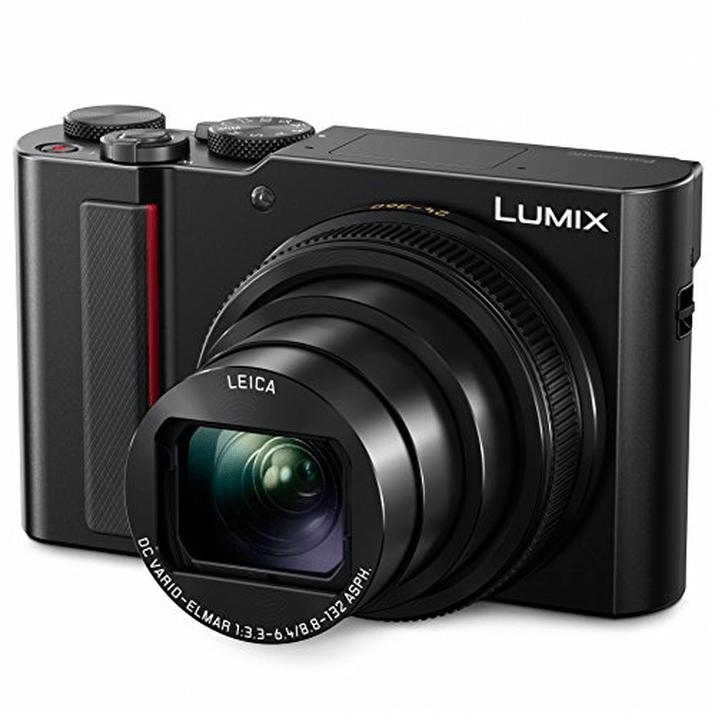
What Is the Best Compact Camera for Travel?
The best compact camera for travel should be small and easy to carry wherever you go, but it shouldn’t compromise on results. The Sony ZV-1 II , Panasonic TZ200 , and OM System Tough TG-7 top our list for those reasons.
With a compact camera, just because it’s not an interchangeable lens doesn’t mean you can’t capture incredible photos and videos. All the cameras on our list prove that compact doesn’t mean compromise.
Some have larger sensors than others, but you can expect gorgeous images from each one. And some of the cameras even produce stunning 4K video footage.
Other handy features for travel photographers? They include a zoom lens, accurate autofocus (AF), and specialist shooting modes. You might also want some durability so you and your camera make it home in one piece.
You can see our selection of the best compact cameras for travel in the table below. We take a closer look at each camera in the section after. Then we have a buyer’s guide at the end if you need more information to help you.
- Compact size for easy transportation
- Fixed 18-50mm lens with f/1.8-4.0 max aperture
- Eye-detection and tracking autofocus
- Webcam functionality
- Built-in 3-capsule microphone with sound muffler
- 4K video at 30 fps and 120 fps in Full HD
- In-body 5-axis stabilization
- Very useful 15x zoom
- Sharp and clear 4K video
- Impressive battery life
- Rugged, waterproof, dustproof, freezeproof, crushproof
- Fixed f/2.0 lens with 4x zoom range
- Five underwater shooting modes including underwater HDR
- Macro modes with 0.4 inch / 1 cm min focus distance
- 4K video with high-speed frame rates and vertical mode

- 26 MP sensor for good noise reduction and fast readout
- Sharp JPEGs with low noise
- 15 quality film simulations
- Hybrid optical/electronic viewfinder
- Tilting touchscreen
- Excellent 4K Ultra HD video

- Impressive lens quality in a compact camera
- 24-600mm equivalent zoom lens
- Superb 24 fps burst speed
- 4K video with several frame rate options
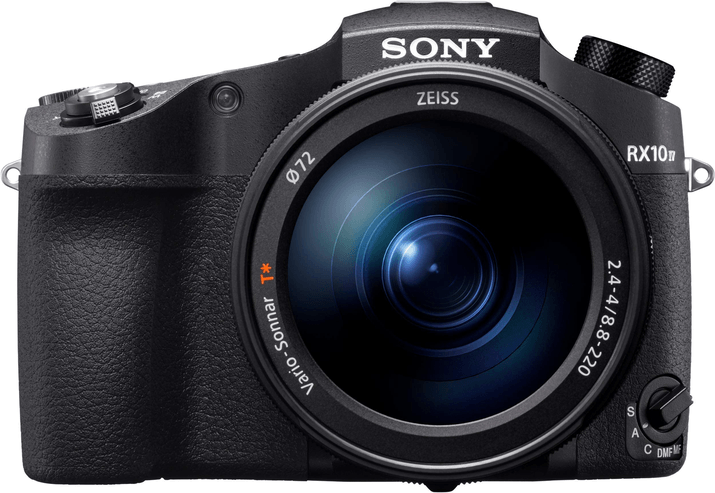
5 Best Compact Cameras for Travel
1. sony zv-1 ii.
The Sony ZV-1 II is the best compact camera for travel right now. Its high-resolution sensor and specialist vlogging features meet the needs of modern travelers. It’s an all-in-one content-creation camera small enough to carry in your pocket.
The 18-50 mm zoom lens offers decent composition flexibility. Although it doesn’t offer much magnification, the wide angle is perfect for filming vlogs and travel footage.
The optical quality of this Zeiss lens is excellent. Its f/1.8 to f/4 max aperture provides good low-light performance.
This entry-level Sony mirrorless is equipped with a small yet powerful CMOS sensor. Its 20 MP resolution is impressive for a one-inch sensor, and its images look fantastic on social media. You can even expand the low ISO to 80 to help you maximize image quality.
But most users choose the ZV-1 II for its video features. And the standard 4K footage at 30 fps is terrific. But you can switch to Sony’s special Cinematic Vlog Setting to make your video content more unique and eye-catching.
A built-in three-capsule mic helps you record audio with your video. You don’t need any extra audio equipment, which helps you travel light. The camera also comes with a wind muffler, so voices come through loud and clear when shooting outside.
Real-time autofocus keeps your subjects in focus as they move around the frame. The sophisticated system also has face and eye detection, which is ideal for filming people.
It also has gyroscopic video stabilization that reduces the effects of camera shake. This is handy if you don’t have a travel tripod or stabilizer.
The Sony ZV-1 II is the must-have compact camera for the traveling vlogger. It has everything a vlogger needs when traveling abroad. And it’s a worthwhile investment if you’re serious about creating exciting travel content.
2. Panasonic Lumix ZS200 / TZ200
The Panasonic Lumix ZS200 (TZ200) is a pocketable compact camera . It comes with an impressive retractable 15x zoom lens. Weighing 0.75 lb (340 g), it feels solid in your hand, thanks to the metal body.
It has a large 20.1 MP, one-inch sensor to ensure high image quality. Although not very fast, the zoom lens of the ZS 200 covers an impressive 24-360mm focal range. This is ideal for travel photography.
Low-light performance is good thanks to the five-axis Hybrid OIS stabilization. You can raise your ISO to 25,600. But aggressive noise reduction at the higher ISO values might make the image look too smooth.
Images are composed and reviewed with the large three-inch LCD screen. Although it’s not tiltable, it has touchscreen capabilities. The ZS 200 has plenty of auto modes to make it easier for beginners. Experienced users will enjoy switching to manual.
The Lumix ZS200 features 4K/30 video and a 4K Photo mode. You can extract single frames and save them as 8 MP still photos.
Battery life is good, ensuring about 350 shots before recharging. Another great feature for the travel photographer is the AC charger. This Olympus OM System camera can also be charged via USB using a portable power bank.
3. Olympus OM System Tough TG-7
The Olympus OM System Tough TG-7 is the best rugged compact camera on the market. Tough isn’t just a clever name with this one. It really can cope with the toughest of tough conditions. So, if you’re the more adventurous type of traveler, this is the camera you need.
It’s completely waterproof down to 50 feet (15 m). And we don’t just mean it’ll survive a dip in the water. You can use this camera underwater ! It even has five specialist underwater photography modes.
It’s also shockproof and withstands drops over 6.5 ft (2 m). Through dust-proofing allows you to use the camera in dry, desert-like conditions. And Arctic explorers can keep shooting in temperatures as low as -10 C. You can take this camera anywhere.
We’re disappointed OM System hasn’t improved the sensor resolution from the previous model. It stays at a modest 12 MP, which isn’t great compared to other modern cameras. But the picture quality is still accurate, rich, and vibrant. Your pics will look great on social media.
A 4x zoom lens gives you decent magnification and shot variety. And the constant f/2 maximum aperture gives you solid low-light performance.
The in-camera macro modes are a brilliant way to capture details close up. Nature lovers can snap detailed images of all the new flora in an exotic country.
Thrill seekers can use this Olympus OM System as a rugged action camera . You can attach it to your handlebars or helmet and record exhilarating 4K footage at 30 fps. And if 30 fps isn’t fast enough, switch to Full HD for a smoother 60 fps video frame rate.
The OM System Tought TG-7 is the perfect compact camera for wild, adrenaline-fueled travels. It can withstand the toughest conditions and helps you bring home some fabulous media.
4. Fujifilm X100V
The Fujifilm X100V is one of the most popular cameras among street photographers . It looks fantastic with a classic rangefinder design. It’s compact and easy to hold for hours at a time.
The weather sealing protects it from bad weather. Combine all that with outstanding image processing powers, and you’ve got one of the best compact cameras for travel.
Although it’s a compact camera with a fixed lens, it has a powerful APS-C sensor. The 26.1 MP resolution gives vibrant images with rich colors and details. The quality is far superior to most smartphones, even beating many interchangeable-lens cameras.
A 23mm focal length gives you a lovely wide angle for street-style travel shots. The wider field of view helps you snap images in tight spaces like old European streets or crowded markets. It also has an f/2 maximum aperture, giving you brilliant low-light performance.
The native 160 t0 12,800 ISO range isn’t great, but you can expand the top end to 51,200 if you’re in a dark location. There’s also a low ISO setting of 80, allowing you to boost image quality in stunning locations.
Fujifilm has used its knowledge and heritage of film photography to create fantastic film simulation modes. Each mode gives you images that replicate the finish of one of their iconic film stocks. They have simulations of color and black-and-white films.
Thanks to the glorious 4K video recording, this Fujifilm mirrorless is ideal for video travel logs. It offers a smooth 30 fps frame rate at full resolution and 10-bit 4:2:2 color via the HDMI port. The 120 fps frame rate option enables full HD slow-motion videos.
The X100V ‘s size, durability, and retro style make it a top choice for traveling street photographers. It fits in any camera backpack without fuss and is an absolute joy to shoot. It’s the best compact camera for travel if you love street photography.
5. Sony Cyber-shot RX10 IV
The Sony Cyber-shot RX10 IV is the most expensive camera on our list. But the price is justified by the camera’s performance, which will appeal to expert and pro photographers on the move.
The RX10 is a rather bulky, DSLR-style bridge camera . It’s not the lightest and most compact camera on our list. But it packs a wonderful zoom lens, covering an impressive 24-600mm range. And it is bright, too, having an f/2.4-4 variable aperture.
Optical stabilization is very effective. Combined with the fast aperture, it makes taking good images in low-light conditions easier. Another interesting feature is the hybrid AF. It’s fast and precise, and it has a 14 fps burst shooting mode and RAW image format.
The camera includes NFC, Wi-Fi, and Bluetooth for connectivity. These allow for the easy transfer of your images to a smartphone and remote control of the camera.
This camera also records high-quality 4K video . The dedicated microphone jack port allows recording audio with an external microphone. This makes this camera very attractive for vloggers.
Due to its size, the handling experience is very similar to that of a classic DSLR camera . You will not find yourself battling with small buttons.
A welcome feature for travel photography is that the Sony Cyber-Shot RX10 IV is weather-sealed. You can shoot in any conditions without worries.
Best Compact Camera for Travel FAQs
Packing the right gear is a key element of success when traveling abroad. Finding the best compact camera for travel is an important factor, but your camera is only one piece of the puzzle.
Other accessories are also important. And maybe you’re not confident about compact cameras. These Q&As should help you prepare for your next photography trip.
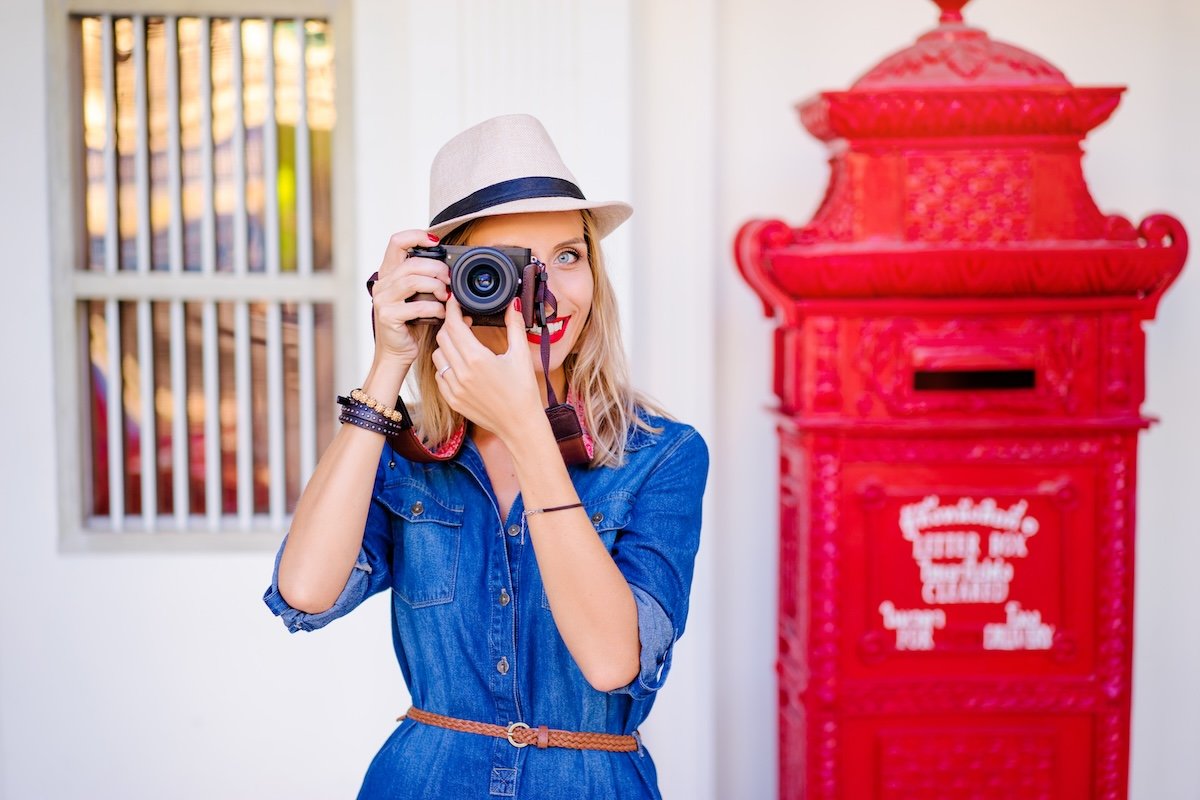
What Are the Best Mirrorless Cameras for Travel?
The Nikon Z50 is our top recommendation for a mirrorless camera for travel. Its compact body fits any travel backpack, and the APS-C sensor produces gorgeous images. The camera has many creative features and delivers lovely 4K video footage.
More experienced travelers might prefer the Canon EOS R8 . It’s one of the most compact and lightweight full-frame cameras around.
Its 24.2 MP resolution might be modest for a full-frame sensor. But the image quality is still exceptional, with a wide dynamic range and low-noise performance in low light.
Mirrorless cameras are an excellent choice for travel photographers. They are lighter and have smaller bodies than DSLR cameras, making them more portable. They have powerful sensors and superior features. A mirrorless is ideal if you want more from a camera.
Our full article has more of the best mirrorless cameras for travel . We also have another article on the best lightweight cameras , all of which make excellent travel cameras.
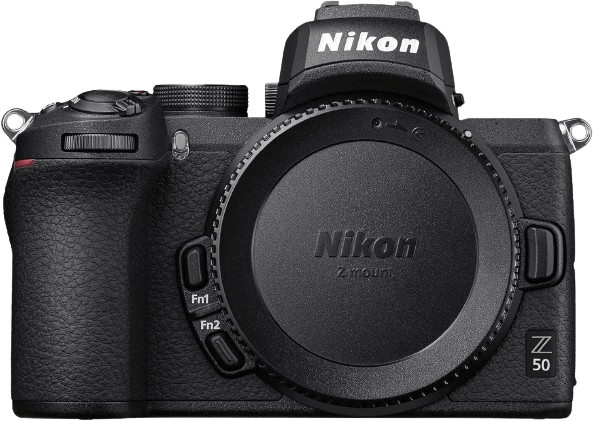
Which Backpack Is Best for Compact Travel Cameras?
If you’re traveling with a compact camera, we recommend the Wandrd Duo Daypack . It’s a stylish yet unassuming backpack with plenty of storage space and thorough weather sealing.
If you’re traveling with a compact camera as your main shooter and minimal gear, you don’t need a big travel camera backpack if you’re traveling with minimal equipment.
The Duo Daypack is ideal for the photographer who travels light. It has a protective “pop camera cube” for larger mirrorless cameras or DSLRs. But it also has padded pockets for smaller gear like compact cameras.
Sensational build quality reassures you when you’re traveling in a new place. You know your gear is safe within. And you’re confident the backpack will last the distance.
You can read our full, in-depth review of the Wandrd Duo Daypack here. Or you can see more of the best camera backpacks for travel we recommend .
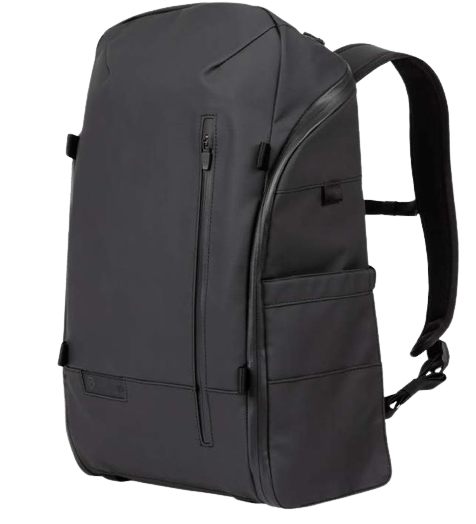
What Other Camera Accessories Does a Travel Photographer Need?
Packing too much gear can be a problem when going on a photography trip. It’s easy to fill your backpack with every piece of gear you have, just in case. You then have a heavy backpack of camera gear you won’t use.
The key to a successful trip is packing smart. So here are some photography accessories that are genuinely useful when you’re in a far-flung location.
A secure and protective SD card case is a must-have when traveling. When new, exciting visuals surround you, you can get pretty trigger-happy, and memory cards fill up fast.
Take as many SD cards as possible so your storage isn’t limited. But you have to keep them safe in a durable holder.
The Kiorafoto Professional Card Case is the best option. It has a solid outer casing and is completely watertight when closed. This affordable item can be a lifesaver. See more top-quality SD card cases we’ve reviewed .
Another digital storage solution is to take a rugged portable external hard drive. The LaCie Rugged Mini is ideal for travelers. It has storage options from 1 to 5 TB, is water and dust-resistant, and has fast read-write speeds for quick media transfers.
Another handy digital gadget is a portable power bank like Anker’s slim one . If your camera has USB charging, a power bank lets you fill it up whenever and wherever. This allows you to shoot longer without returning to your hotel or hostel.
Some travelers like to travel with a tripod. While tripods might seem big and cumbersome, you can get specialist travel tripods that are portable . The K&F Concept Lightweight Tripod is one of those. And it’s one we recommend if you need extra stability when country hopping.
Mini tripods are another handy option if you want a light pack. They’re popular with travel vloggers and content creators. And they work very well with compact cameras. The Manfrotto Pixi Evo is the best place to start with mini tripods.
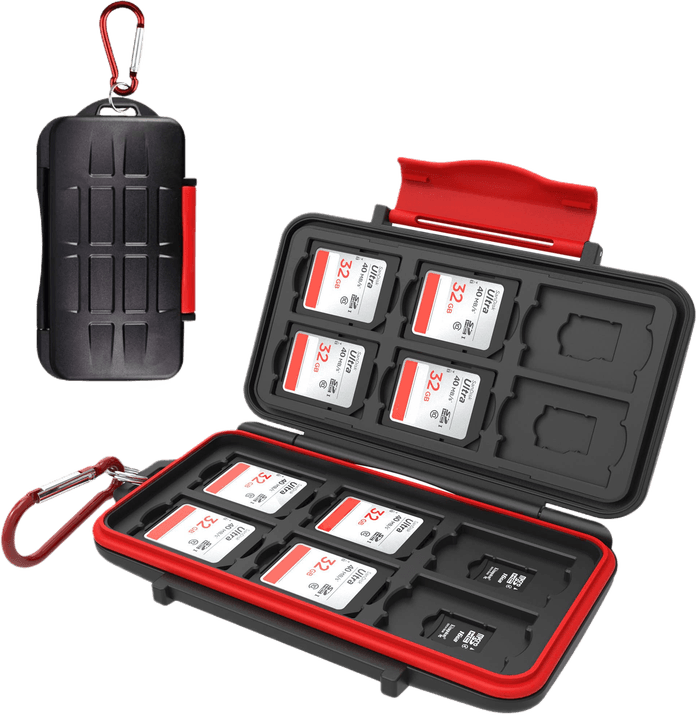
Conclusion: Best Compact Cameras for Travel
The best compact camera for travel is lightweight and portable yet delivers top-quality media. Whether you want high-level holiday snaps or exotic video content, there’s a compact camera with your name on it.
The Sony ZV-1 II is the top choice as the best compact camera for travelers. It produces lovely still photos but excels in vlogging features. The 4K video footage is gorgeous. Hardware features like the built-in mic or rotating touchscreen make it an all-in-one camera for content creation.
DPReview Recommends: Best Compact Cameras for Travel

There's a big world out there, just waiting for you to explore it. In our opinion, a camera is one of the best traveling companions you can have. They don't smell, they don't have any annoying food preferences, and you can stuff them in a bag without attracting the attention of the police.
Depending on where you're going, you might have specific priorities. Maybe you're heading to the mountains? In that case you'll want something light and tough. Or perhaps you're exploring a city? For that you'll probably want a quiet, discreet camera with a fast aperture lens. Or perhaps you're doing a round the world tour - in which case a super zoom camera which can go from landscape-covering wide-angle to long telephoto in a second might be the best choice. Here are our top five recommendations.
Prices given are representative of street pricing, and our recommendations are arranged from most to least expensive.
Recommendations are subject to change and are current as of November 2014
Fujifilm X100T
$1300 / £1000 | 16MP | Hybrid electronic / optical viewfinder | 35mm equiv F2 lens
Click here for full specifica tions, sample images, user reviews and more
Fuji’s X100 series has been immensely popular since it was first released, and has only gained fans on its passage through the X100S and now on to the X100T. Small, neat, stylish and highly effective machines, the X100 models produce images as good as the bodies look.
At the heart of these cameras is the Holy Trinity that comprises a high-class 23mm f/2 Fujinon lens (that delivers an angle of view similar to that of a 35mm lens on a full frame sensor), the well-respected APS-C –sized 16-million-pixel Fuji X-Trans sensor and a viewfinder that combines both optical and digital views – sometimes simultaneously.
The X100T brings the standard features we’d expect, but improves the viewfinder experience with a 2.3-million-dot resolution digital display and more complex information overlays when it is used in optical mode. The camera’s famous split-image manual focusing method can now be used with the optical view as well as in digital display mode, and even the 3-inch rear screen has undergone a refresh to now feature a much improved 1.04-million-dot resolution.
Other significant changes include a new electronic shutter mode that allows completely silent shooting and a top shutter speed of 1/32,000sec, extended exposure compensation of +/-3EV, the addition of the Kodachrome-alike Classic Chrome to the film simulation modes, and an improved AF system that offers face detection.
Also consider...
Ricoh GR The 16MP APS-C format Ricoh GR was one of the quiet stars of 2013, offering excellent image quality, good overall performance and a great lens for a reasonable price. Although its fixed 28mm F2.8 lens is a touch wide for some subjects and F2.8 isn't the fastest aperture in the world, the GR's convincing high ISO image quality makes the camera very useful for street and interior photography in poor light.
Sony Cyber-shot RX10
$1000 / £700 | 20MP | 24-200mm F2.8 lens | 3" 1.29 million-dot LCD | 1080/60p video
Click here for full specifications, sample images, user reviews and more
Sony's Cyber-shot RX10 marries the 20MP 1"-type BSI-CMOS sensor from the RX100 II with a 24-200mm Zeiss Vario-Sonnar zoom lens that has a constant maximum aperture of F2.8. Although relatively expensive (despite a recent drop in price) it's a cut above conventional smaller-sensor 'super zoom' cameras, and represents an impressively versatile, albeit not strictly speaking 'compact' package for both still and video capture.
The RX10 is the first Sony camera to feature a 'Direct Drive SSM' focus motor, which uses piezoelectric materials to position the focus element, rather than linear motors. This translates to snappy, accurate focus and in terms of image quality the RX10's 1-inch sensor delivers excellent images even at high ISO settings, which rival entry-level mirrorless and DSLR cameras.
Nikon Coolpix P530 : The Nikon Coolpix P530 is an update to the very capable P520, offering a 16.1MP BSI CMOS sensor. It's a bridge-style camera with a 42x optical zoom range (24-1000mm equivalent), and provides automatic as well as manual and automatic exposure modes. The camera has a 3-inch LCD and electronic viewfinder. It provides Wi-Fi connectivity by way of Nikon's optional WU-1a Wireless Mobile Adapter.
Panasonic Lumix DMC-FZ1000
$860 / £750 | 20MP | 2.4m-dot viewfinder | 3in, 921k-dot tilting LCD| 4K/30p video
The ‘bridge’ type camera, that combines the style and functionality of a DSLR with an all-encompassing zoom lens that never has to (or can) come off, is a very popular choice for the traveling photographer. Panasonic has had a successful history with these cameras, but its FZ1000 steps somewhat beyond what has gone before. With a 1-inch 20-million-pixel sensor this camera is capable of much better image quality than the usual compact camera sensor can offer, and the 25-400mm equiv lens, astonishing enough by its focal range, has a very fast maximum aperture of f/2.8-4. Those two elements in themselves make the FZ1000 a very attractive proposition, but add to that the camera’s 4K resolution and five-axis image stabilisation and the camera really begins to stand out.
This is not a cheap option and the price may well put it out of range for many, but there is no denying the specification. The XGA OLED electronic viewfinder features a 2.36-million-dot resolution that creates an extremely clear view of what you are about to shoot.
The camera borrows its ‘Depth from Defocus’ high speed focus system from the company’s top end GH4 G series camera, as well as in-camera raw processing and its size – this is certainly not a small camera.
It is a shame the FZ1000 lacks the almost trademark touch screen that other Lumix cameras enjoy, but with first class image quality, decent handling and quite amazing flexibility it is still an excellent stills and video companion for any traveller.
Canon PowerShot SX60 HS : The PowerShot SX60 HS is a 16MP superzoom compact built around a gigantic 65X optical zoom lens, equivalent to 21-1365mm. It offers 6.4 fps continuous shooting, 1080/60p video, and a max ISO of 3200 (at full resolution). It has a fully articulating 3" LCD as well as an electronic viewfinder and full manual control - plus raw capture mode - is available if you want it. The SX60 HS can't match larger-sensor cameras for image quality but its versatility and heavyweight feature set make it a great first camera for a beginner.
Sony Cyber-shot RX100 III
$800 / £640 | 21MP | 1.04m-dot viewfinder | 3in, 1.2m-dot tilting LCD| 1080/60p video
The Sony RX100 lll is one of the best compact cameras on the market, following on from excellent performances from the previous two models. Equipped with a 21-million-pixel 1-inch sensor (that’s a good deal larger than those in most compact cameras) this newest version brings the additional attraction of a 24-70mm f/1.8-2.8 Zeiss zoom – a super-fast lens that’s ideal for low light work and for creating shallow depth of field. It is the combination of the fast high-quality lens and that larger sensor that really helps this camera to stand out from the crowd, and to produce images that simply don’t look as though they were shot with a compact.
The other surprising addition to this tiny body is a built-in pop-up electronic viewfinder. The new SVGA OLED 1.44-million-dot viewfinder is useful for getting a clear view of what you are shooting and menu systems in bright conditions, when the camera’s built-in neutral density filters will also come in handy for allowing those wide apertures to be used in full sunshine – and when recording video.
Other significant features include a 3-inch tilting LCD screen with 1.23 million dots, full HD 1080/60p video recording, clean HDMI output and a customisable lens ring for changing apertures, focal length, exposure compensation and focus.
Canon PowerShot G1 X Mark II : Canon's PowerShot G1 X Mark II is a useful camera for traveling, thanks to its wide-ranging 24-120mm F2-3.9 zoom lens and near-APS-C format CMOS sensor. The G1 X Mark II's 12.8MP sensor is a little long in the tooth, but image quality in good light is excellent. Just don't expect miracles at high ISO sensitivity settings.
Panasonic Lumix DMC-ZS40/TZ60
$395 / £300 | 18MP | 24-720mm equiv lens | 200k-dot viewfinder| 1080/60p video
The latest in a long line of best-in-class travel zoom compacts, the Lumix DMC-TZ60 once again combines a long ranging zoom with a small form factor and a collection of surprising controls. Perhaps a little more plastic than previous models in the TZ range, the TZ60 is none the less well built and it fits nicely in the hand. A definite selling point is its viewfinder – a rarity in a compact these days – and perhaps too that the viewfinder is an EVF that is able to follow the zoom and display shooting information all at the same time. With such a long lens, that offers 24-720mm of optical zoom, holding the camera to the eye will provide an extra element of stability that arm’s length shooting cannot – even with the lens-based optical image stabilisation system.
Fitted with an 18.1-million-pixel sensor that can turn out raw files as well as JPEGs, the camera will appeal as much to the enthusiast as the beginner, as it offers a customisable lens-based control-ring to operate the zoom, apertures, shutter speeds, white balance and even to scroll through the multitude of special effects and shooting modes. Video shooters will appreciate the 60p 1920x1080 capability and perhaps the slow-motion mode that shoots at up to 100fps and which can yield stills from the footage in-camera.
Wi-Fi with NFC and GPS conclude an excellent feature set.
Canon PowerShot SX700 HS : The latest iteration of Canon's travel zoom product line, the 16MP SX700 HS is built around a 25-750mm equivalent zoom lens, and includes PASM modes for manual shooting as well as a range of beginner (and point-and-shoot) friendly automatic and 'scene' exposure modes. For video clips, 1080/60p video is also available.
Gear in this story

- Discuss in the forums
- See full product details
- Read our review
- View sample images

- Read our roundup
When you use DPReview links to buy products, the site may earn a commission.

You may also like
More about gear in this article.

There are now seven RX100 models currently on the market that you can buy. Should you save a few bucks and go with less than the latest-and-greatest? Find out which one is the right fit.

High quality EVFs, or electronic viewfinders, are pretty ubiquitous these days, but that wasn't always the case. This week we take a retrospective look at several cameras that raised the bar for EVF performance.

Is it the beginning of the end for the Fujifilm X100T? The camera has been listed as discontinued on B&H Photo's website. Read more

The X100F looks much like its predecessor and it's easy to assume it's only really the sensor that's changed. The more we looked at the differences between it and the X100T, the less true that seemed. Read more

Recently, DPReview Editor Barney Britton took the Sony RX10 III hiking, and he saw that it was good . How good? Back in the office Sam Spencer took the RX10 III, II, the Panasonic FZ1000 and the Canon G3X up to the balcony for a good old-fashioned shootout. Read more
Latest sample galleries

Latest in-depth reviews

The Fujifilm X100VI is the sixth iteration of Fujifilm's classically-styled large sensor compact. A 40MP X-Trans sensor, in-body stabilization and 6.2K video are the major updates, but do they make the camera better?

The Panasonic Lumix S5II launched the second generation of Panasonic’s full-frame mirrorless camera system and was the first Panasonic to feature phase detect autofocus. As our review reveals, it’s a heck of an all-around camera for both still and video shooters.

The latest Lumix puts a Four Thirds sensor in a full-frame body with boosted AF and a wealth of stills and video capabilities to create a Swiss Army Knife of a Micro Four Thirds camera.

The fourth camera in Leica's SL series of full-frame mirrorless cameras sees the 60MP BSI sensor from the Q3 and M11 models arrive with a significant interface redesign.

The Nikon Zf is a 24MP full-frame mirrorless camera with classic looks that brings significant improvements to Nikon's mid-price cameras. We just shot a sample reel to get a better feel for its video features and have added our impressions to the review.
Latest buying guides

What’s the best camera for around $2000? This price point gives you access to some of the most all-round capable cameras available. Excellent image quality, powerful autofocus and great looking video are the least you can expect. We've picked the models that really stand out.

What's the best camera for travel? Good travel cameras should be small, versatile, and offer good image quality. In this buying guide we've rounded-up several great cameras for travel and recommended the best.

If you want a compact camera that produces great quality photos without the hassle of changing lenses, there are plenty of choices available for every budget. Read on to find out which portable enthusiast compacts are our favorites.

'What's the best mirrorless camera?' We're glad you asked.

Above $2500 cameras tend to become increasingly specialized, making it difficult to select a 'best' option. We case our eye over the options costing more than $2500 but less than $4000, to find the best all-rounder.
- Gear Patrol
- Work for us
- Advertise with us
- Feedback / Contact us
- Camera reviews
- Lens reviews
- Printer reviews
- Buying guides
- Sample images
- Editorial enquiries
- Camera search
- Camera comparison
- Lens search
- Product timeline
- Browse all products
- Community Guidelines
- My Settings
- My GearList
National Geographic content straight to your inbox—sign up for our popular newsletters here
- 2023 IN REVIEW
The 9 best digital cameras for travelers, according to National Geographic
These are the cameras our photo engineering team likes for everyone from beginners to street photographers and those on a budget.

Now that the world is traveling again, the desire to capture precious moments is stronger than ever. A powerful travel image not only tells a story, it also reminds us of the wonders that await around every bend in the road.
With that in mind, we tapped the National Geographic photo engineering team to tell us which compact cameras they like best for travelers. Here are their top picks.
Best camera for most travelers: Fujifilm X-S20

- The X-S20 gives you a lot of bang for your buck. It follows the X-S10 (another outstanding model featured in past camera guides) with most of the top features that the Fuji X line offers in an affordable, versatile, and stylish package.
- Comfortable to handle, the X-S20 performs well with a balanced 26 megapixel (MP) sensor and a new, larger battery.
Tip: This camera is best paired with the all-around XF 16-80mm f/4 OIS WR lens. For a second lens, try the ultra-compact XF 27mm f/2.8 R WR, which gives human eye-like perspective at 40mm.
Find it on B & H .
Best camera for street photography (and most compact): Ricoh GR III

- The Ricoh GR III has appeared on our list four times, since it packs a ton of power in a pocketable size.
- With a stabilized 24 MP APS-C sensor, phase-detect autofocus, a highly responsive touch screen, and an easy-to-navigate menu system, the GR III works well for casual point-and-shoot settings and controlled manual shooting.
Tip: If the 28mm f/2.8 effective focal length is too wide, try the GR IIIx. Released in 2021, it’s identical to the GR III, aside from its lens, which has a tighter field of view with a 40mm f/2.8 equivalent lens.
Best camera for overall performance: Fujifilm X-T5

- Fujifilm’s XT series provides an excellent shooting experience for amateurs and pros alike. This line blends vintage dials with modern, professional-grade controls, rugged construction, weather sealing, and strong autofocus and speed performance.
- The X-T5 model remains one of the highest performing cameras with its combination of image quality, autofocus, size, lens choice, weather sealing, and battery life.
- Slightly smaller than the X-T4, it’s packing the 40 MP sensor from the X-H2 model—one of the highest resolution APS-C sensors on the market—keeping the X-T5 the reigning champ of travel cameras again this year.
Tip: We love Fujifilm’s selection of compact prime lenses for traveling, including the 27mm f/2.8 R WR and the 23mm f/2 R WR.
Best luxury camera: Leica Q3

- At $5,995, this camera isn’t cheap. In the mirrorless full frame market, only one camera model not made by Leica currently sells for over $6,000—the Sony A1, the highest performance 35mm camera in the world. What does all that money get you? Arguably the finest shooting experience for travel photography, in one author’s opinion. The elegant controls and stunning looks make this camera a joy to use.
- The image quality is second to none on this list, with massive 61 MP raw files that leave generous room for cropping. The camera is weather sealed and built like a tank.
Tip: We also suggest the Leica Q2, or the Q2 Monochrom, which sports a black-and-white-only sensor.
Best camera for a full-frame interchangeable lens: Nikon Zf

- A rock-solid sensor, rear screen, the same high-quality electronic viewfinder from the Z6II model, and charming retro style make the Nikon Zf our top pick for this category.
- It also features eight sensor stabilization stops and the same EXPEED 7 processor as Nikon’s flagship models, offering exceptional AF and VR performance.
- The weather sealing, magnesium alloy body, and etched brass mechanical dials show that a lot of thought and care went into the user experience. This camera was the most fun to test.
- The full-featured Zf sports tech (unique to this model) allows you to shift your focus point with the touch screen while using the viewfinder, use pixel shift shooting to create 96 MP images, and focus point stabilization. The Zf centers stabilization around your focus point, rather than the middle of the sensor. And it has a dedicated black-and-white mode.
Tip: If you get only one lens, make it the 24-120mm f/4. We recommend pairing that with one of the brand’s compact primes, such as the 40mm f/2 or the 28mm f/2.8.
Best camera for wildlife photography: OM System OM-1

- Like other flagship cameras from major brands (Sony A1, Nikon Z9, Canon R3), the OM-1 is stacked with features, and it’s incredibly fast. With continuous autofocus, the OM-1 can shoot up to 50 frames per second (fps)—faster than most video.
- Its outstanding subject detection system tracks all sorts of animals in high-speed situations.
- OM System’s flagship OM-1 has a unique Micro Four Thirds (MFT) sensor, which means the aspect ratio is 4:3, rather small at about half the size of full frame.
- The camera also has multiple computational modes, including a hand-held high-res mode (makes a 50 MP file from a burst of 16 frames), and our favorite, the Live-ND filter, which simulates a physical neutral density filter. This allows for slower shutter speeds in brighter conditions to capture motion. Think blurred ocean waves or majestic waterfalls.
- With the best weather sealing of any camera on this list, this model stands up to even the harshest conditions.
Tip: The top lenses for this camera are all in the pro line, which have outstanding build quality, often integrated lens hoods, and smooth focus/zoom rings. For the wildlife enthusiast and birder, the best lens is the 150-400mm F4.5 TC1.25x IS PRO. It gives you a lightweight 300-800mm range and an integrated teleconverter up to 1000mm handheld. The best overall lens for this model is the 12-100mm f/4 IS PRO (24-200mm).
Best camera for beginners: Canon EOS R50

- Canon continues to fill out its lineup of APS-C mirrorless bodies, and the R50 is a great choice for beginners or anyone wanting to upgrade from their cell phone.
- It’s compact and comfortable to grip, with an integrated electronic viewfinder, and a small pop-up flash. It also has one of the best touch interfaces, with easy menu navigation and a touch control panel for adjusting your settings while shooting.
- The greatest strength of the 18-45mm lens that comes with the R50 is its size. The APS-C line’s greatest weakness is the lack of lens options.
Best budget camera: Nikon Z30

- Nikon introduced the Z30 last year as the third model in its mirrorless APS-C lineup. The absence of an electronic viewfinder keeps the size compact, so it’s easy to carry around and fun to shoot with. Yet it still has great features. Plus, besides Nikon’s own line of DX lenses, there are many affordable third-party lens options.
- For an entry-level camera, the Z30 has impressive stills credentials, including excellent low-light performance, a mechanical shutter capable of shooting 11 frames per second with AF tracking, the option to save images as high-quality raw files, and strong autofocus capabilities.
Tip: This model is a perfect match for Nikon’s compact DX 16-50mm f/3.5-6.3 VR. For added fun, shallow depth of field, and improved lowlight performance, look no further than the DX 24mm f/1.7. It’s a compact prime that you may want to leave on your Z30 full time.
Most versatile camera for travel: Sony RX100VII

- Sony’s RX100 line remains one of the most versatile ultra-compact cameras. Featured in past lists, the RX100VII still has the same features we praised before: the pro line’s real-time autofocus for highly reliable eye/face autofocus for people and animals; electronic shooting with almost no distortion of moving subjects; silent shooting and high shutter speeds for bright light conditions.
- The RX100VII’s 24-200mm equivalent zoom lens still isn’t as bright as we would like, but it covers a wide range. Tom continues to consider the RX100 line his “desert island” choice.
Note: In future versions, we’d like to see a USB-C type connector for in-camera charging and image offloading. A model that sports Sony’s current menu system that’s easier to navigate and supports touch controls would be a welcome improvement too.
Related Topics
- DIGITAL CAMERAS
- PHOTOGRAPHY
- TRAVEL PHOTOGRAPHY
- PHOTOGRAPHY TIPS
You May Also Like

7 video cameras we love for every kind of traveler

The 10 best compact cameras, according to National Geographic
For hungry minds.

These are the best compact cameras for travelers in 2022


The Masterclasses 2023: 10 practical tips to help you succeed as a travel photographer

How I got the shot: Ben Pipe on coming face to face with a lion

How I got the shot: Jonathan Stokes on distilling Marseille's past, present and future

How to take great photos at night
- Environment
History & Culture
- History & Culture
- History Magazine
- Mind, Body, Wonder
- Coronavirus Coverage
- Paid Content
- Terms of Use
- Privacy Policy
- Your US State Privacy Rights
- Children's Online Privacy Policy
- Interest-Based Ads
- About Nielsen Measurement
- Do Not Sell or Share My Personal Information
- Nat Geo Home
- Attend a Live Event
- Book a Trip
- Inspire Your Kids
- Shop Nat Geo
- Visit the D.C. Museum
- Learn About Our Impact
- Support Our Mission
- Advertise With Us
- Customer Service
- Renew Subscription
- Manage Your Subscription
- Work at Nat Geo
- Sign Up for Our Newsletters
- Contribute to Protect the Planet
Copyright © 1996-2015 National Geographic Society Copyright © 2015-2024 National Geographic Partners, LLC. All rights reserved
- Meet the Team
- Work with Us
- Czech Republic
- Netherlands
- Switzerland
- Scandinavia
- Philippines
- South Korea
- New Zealand
- South Africa
- Budget Travel
- Work & Travel
- The Broke Backpacker Manifesto
- Travel Resources
- How to Travel on $10/day
Home » Gear » best travel camera
The 8 Best Travel Cameras of 2024 (For ANY Kind of Traveler)
Capturing the essence of your travels, one frame at a time, is a journey in itself. As a travel enthusiast, you understand the power of photography to immortalize the places you explore, the people you meet, and the memories you create. But in a world overflowing with camera choices, how do you pick the perfect companion for your adventures?
Join us on a visual odyssey as we delve into the realm of photography and uncover the ‘Best Camera for Travel.’ Whether you’re a seasoned globetrotter or embarking on your very first expedition, this guide is your passport to discovering the ideal camera that will transform your travel moments into timeless treasure
First, I’ll show you the top 5 coolest travel cameras on the market. I picked one for each budget and for different types of travelers so you can easily identify which of these epic adventure cameras is best for you.
Then, I’ll show you all of the important information that you need to know to take your travel photography to the next level. This is must-know information for anyone interested in taking stunning travel photos. By the end of this article, you’ll know exactly which travel camera is perfect for you!
- Quick Answers: These are the Best Cameras for Travel in 2024
Finding the Best Travel Camera for You
1. panasonic lumix zs100, 2. fujifilm x-t30 ii, 3. olympus tough tg-5, 4. panasonic lumix gh4, 5. sony a7r mark ii, 6. canon eos 5d mark iii, #7. sony alpha a5100, #8. panasonic lumix fz1000, why should travel photographers care about…, how we tested to find the 8 best travel cameras of 2024, faq about the best travel camera, quick answers: these are the best cameras for travel in 2024 .
- Panasonic LUMIX ZS100 – Best Travel Camera Under $600
- Fujifilm X-T20 – Top Travel Camera for Photography Enthusiasts
- Olympus Tough! TG-5 – Best Waterproof Adventure Camera
- Panasonic Lumix GH4 – Best Travel Camera for Video Recording
- Sony Alpha A7R Mark II – Best Travel Camera for Professionals
- Canon EOS 5D Mark III – Best Pro DSLR for Travel
As a professional travel photographer, I’ve personally tested out over a dozen cameras on my own journey as a professional travel photographer over the last few years and I can help you pick a great travel camera for your style of travel and photography! I have tried products from pretty much every camera brand on the market.
I know which cameras are awesome and which ones are appropriate for a certain photographer. I myself ended up with a Fujifilm X-T1 a year or so ago and most of my favorite travel photos are because of this gem.
Now, I’m going to help you find a great travel camera.
Before we get this ball rolling though, I want to make a brief disclaimer.
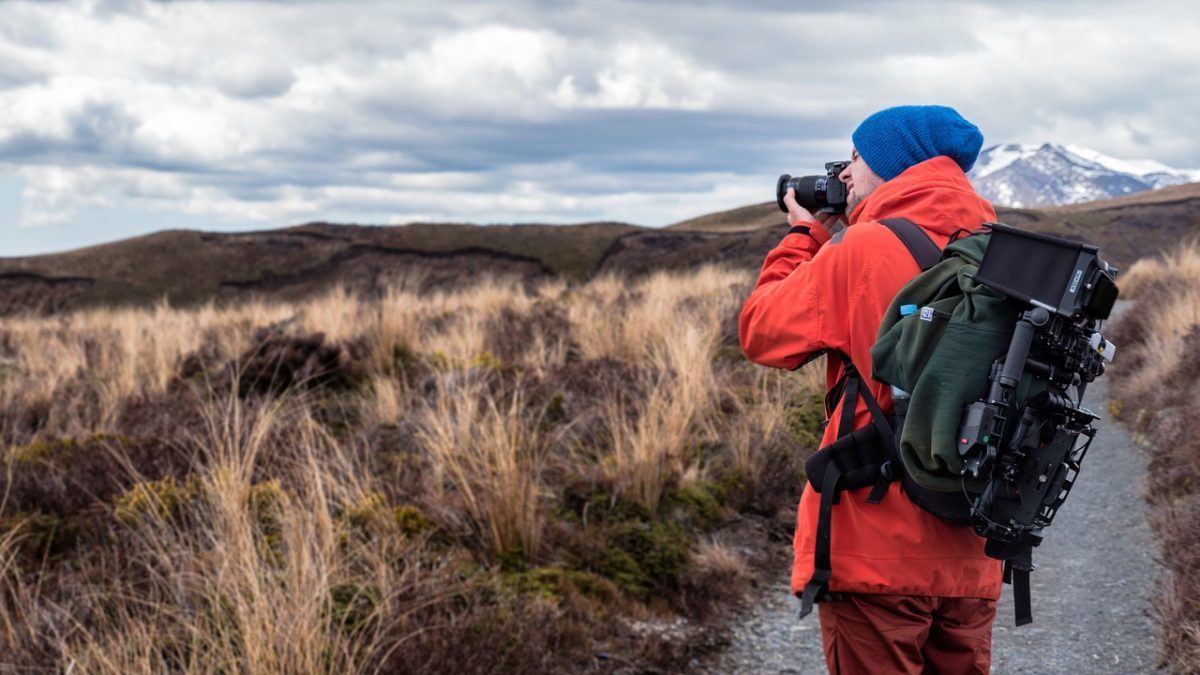
There is some technical jargon spread throughout this guide. If you come across something that’s confusing, please bear in mind that the final third of this article will explain all of the ins and outs of travel photography as well as explain the technical aspects that we have touched on throughout the post. I’ve included lots of extra resources for your benefit – this is a one-stop shop for camera newbies, enthusiasts, and veterans alike!
The following two sections are a brief introduction to some key concepts that you need to understand to get the most out of your travel photography… After that, we’ll be diving into a detailed breakdown of the best cameras for traveling!
So without further ado: let’s find the ultimate travel camera for you!
Point-and-Shoot vs Mirrorless vs DSLR
The hottest debate right now in the photographic world concerns mirrorless cameras vs DSLR cameras . Never before has there been a competition so fierce since Gore v. Bush.
Throughout this article, you’re going to see a lot of examples of both mirrorless and DSLR cameras and we’re going to be comparing them often.

Point-and-shoot cameras , which are often neglected because of their unfairly perceived feebleness, will be dutifully and deservedly discussed as well as if you’re looking for the best small camera for travel – a point and shoot is often the way to go.
The biggest difference between a mirrorless and DSLR camera is the lack of a physical mirror in the former.
Conventionally, a reflex mirror is used in a DSLR camera to enable the photographer to view a projection – via reflected light – of the scene that they want to shoot in a viewfinder (the thing you put your eye to).
Advanced sensor technology has enabled cameras to beam this preview onto an electronic screen or into an electronic viewfinder. This has eliminated the need to have a bulky mirror inside the camera body allowing for a more compact camera, which the public has dubbed mirrorless cameras. Point-and-shoots use the same sort of technology as mirrorless cameras.
With comparable sensors and lenses, mirrorless cameras offer the same image quality as DSLRs but in a much smaller package. There is, of course, way more to the mechanics of this system though. For the sake of brevity, I can not go deeper into the subject. Interested parties can refer to this article for more details.
Travel Camera Comparison Table
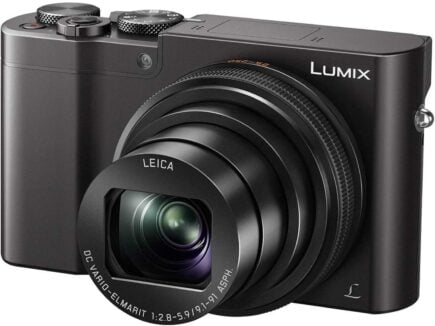
Panasonic LUMIX ZS100
- > Small, light
- > Easy to use
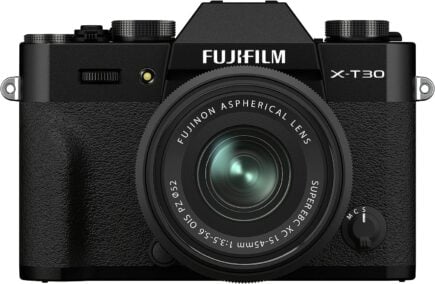
Fujifilm X-T30
- > Great lenses
- > Beautiful images
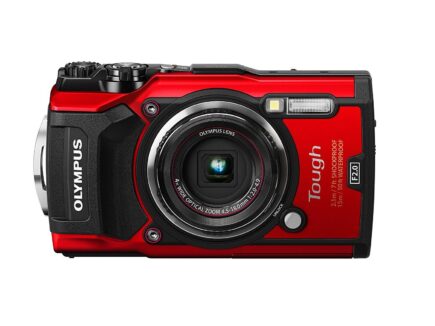
Olympus Tough! TG-5
- > Competitive image quality
- > Great video
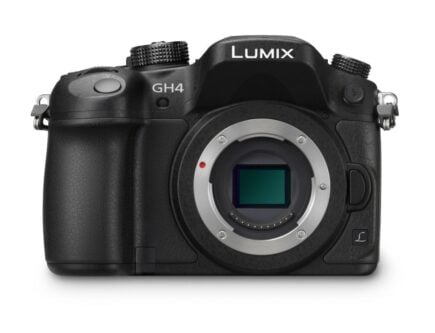
Panasonic Lumix GH4
- > The best video
- > Great photos
- > Well designed and built
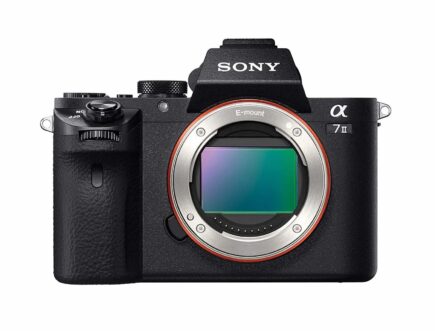
Sony A7R Mark II
- > Optimal image/video
- > Highly adaptive
- > Great for pros
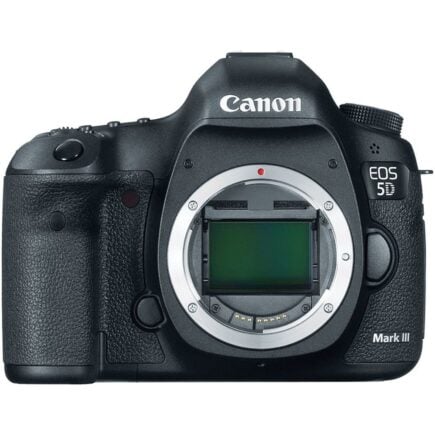
Canon EOS 5D Mark III
- > Industry standard
- > The best lenses
- > Very well rounded
Consider these features when looking for a travel camera…
- Size and Weight – Is the camera going to be big and heavy? How are you going to carry it? Is it small enough to fit in your pocket? The size and weight of a camera are HUGE considerations when it comes to traveling.
- Sensor Size – Larger sensors can capture more light and record more data. This means that they are more adept in low light situations and manage noise more efficiently. Bigger sensors mean bigger cameras though.
- Megapixels and File Formats – More megapixels means more resolution and larger file sizes. More resolution allows for better prints, more flexibility in post-processing, and, generally, greater sharpness. The ability to shoot in RAW is also beneficial. For now, all you need to know is that every camera in this guide can shoot RAW .
- Lens Selections – If your camera can change lenses, then you have WAY more shooting options. Do you like landscape photos? Buy an ultra wide angle lens. Wildlife? Get a telephoto lens. The possibilities are endless.
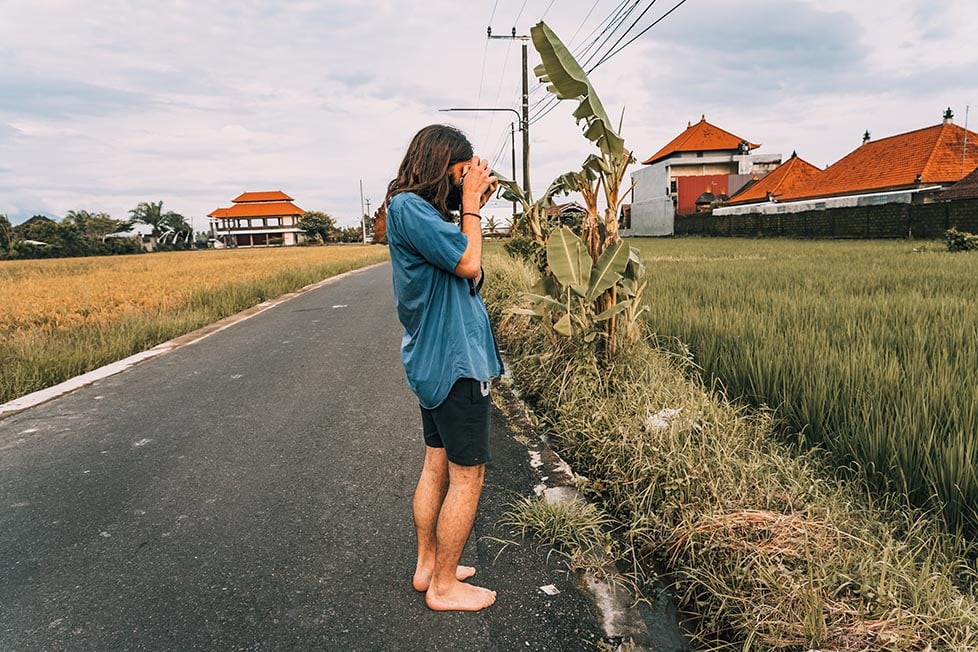
- Weather and waterproofing – Do you like to go outdoors a lot? Will your camera be exposed to the elements often? Weather and waterproofing will help keep your camera safe and functioning during harsh conditions. If you’re going to be battling raging rivers and perilous peaks, you need a tough adventure camera for your travels.
- Functionality – Is your camera easy to use? Is it a jumbled mess of buttons and dials? Do you want to control exposure or is AUTO ok? You need a camera that you can understand to get the most out of it.
- Video Capabilities – Do you want the best recording resolution possible? Do you like to have control over every setting possible while filming? Almost every camera can record video but not all of them does it well.
- Other Notable Hardware – Does your camera have image stabilization ? An EVF ? What about USB charging? These additions can make all the difference.

REI is one of America’s biggest and most-loved outdoor gear retailers.
Now, for just $30, get a lifetime membership that entitles you to 10% OFF on most items, access to their trade-in scheme and discount rentals .
Best Travel Camera Under $600
The camera for you if you want to start dipping your toes into travel photography
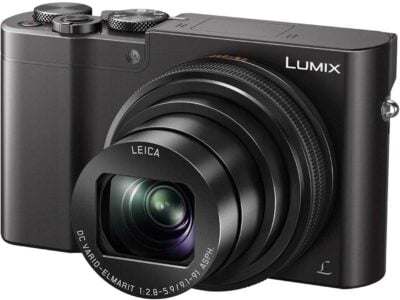
- 1.7 x 4.4 x 2.5 in / 0.69 lbs
- 1-inch 20.1-megapixel MOS sensor / 20.1 mp
- Built-in 25-250mm lens (10x zoom)
- No weather sealing
- 4K UHD 2160p video recording
The Panasonic LUMIX ZS100 is compact, takes good photos, and is very easy to use. Images from the LUMIX ZS100 are rich in color and have accurate tones. Its internal processor is surprisingly fast allowing for uninterrupted continuous shooting. Lastly, autofocus is reliable in most situations.
Because of its small size and excellent performance,Panasonic LUMIX DC-TZ90EB-K the Panasonic LUMIX ZS100 is a cut above other point-and-shoot cameras and is our top choice for the best small camera for travel. It’s one of the best budget compact cameras for travel and a great option for those who want a hassle-free photographic experience.
- Want an easy-to-use camera that still takes beautiful photos.
- Need a travel camera that is small and light.
- Don’t want to deal with buffering or slowdowns.
- Like sharp, crisp images.
- Want a good lens.
- Need long battery life.
Why the Panasonic LUMIX ZS100 is One of the Best
Though smartphones have created some serious competition for the point-and-shoot camera market, smartphones are still inferior when it comes to photography.
Nothing really beats a real camera if you want to visually document your journey. No matter what camera you use, be it a cheap compact or a luxurious DSLR, they will always offer more quality and control than a smartphone.
For those who don’t want to lug around a large DSLR or mirrorless, it’s still worthwhile to have a point-and-shoot. The Panasonic LUMIX ZS100 is an excellent choice. This compact camera is one of the best budget travel cameras that you can buy and coming from Panasonic you know you’ll get good quality as they are one of the best camera brands for travel .
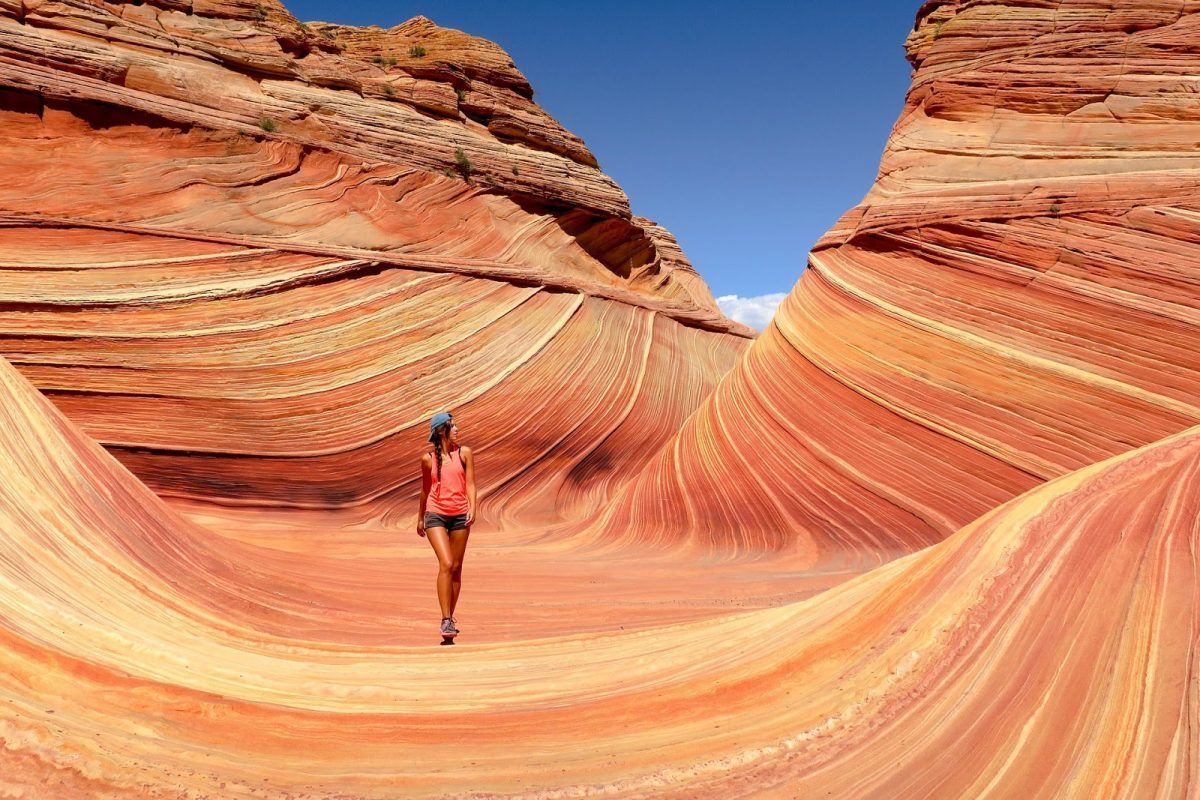
The Panasonic LUMIX ZS100 is remarkably small, takes good photos, and is very dependable. Its sensor is actually quite large given the camera’s size and it produces some very pretty photos.
Colors are vivid and accurate. The Panasonic LUMIX ZS100 even performs well at higher ISOs, which is where image quality begins to drop overall.
The Panasonic LUMIX ZS100’s controls are very simple and easy to use. Casual users could set this camera to full AUTO and almost never have to worry about changing any settings.
Social media addicts will be relieved to hear that the Panasonic LUMIX ZS100 also has very reliable WiFi and Bluetooth connectivity. Photo files can easily be transferred to your phone where they’ll be ready to post online.
Where the Panasonic LUMIX ZS100 Falls Short
Image quality is (obviously) not as impressive in the Panasonic LUMIX ZS100 as those from DSLRs and other mirrorless cameras.
The built-in lens is also somewhat poor compared to other point-and-shoots; the Panasonic LUMIX ZS100’s is shorter, slower, and a little softer. Buffering can take a while to clear after heavy use.
Finally, the rear display is difficult to see in bright light, which is a common occurrence in point-and-shoots.
Panasonic LUMIX ZS100 Budget Alternative
Want to get the best travel camera for under $350? The Panasonic LUMIX DC-TZ90EB-K is around $320 and still takes good photos.
Panasonic LUMIX ZS100 Pro Tips
- You can actually shoot photos in the RAW with the Panasonic LUMIX ZS100. RAW files contain more data and allow for more flexibility during post-processing.
- The built-in WiFi and Bluetooth on the Panasonic LUMIX ZS100 are pretty responsive. Link the camera to your phone or computer to upload photos immediately.
- You can charge the Panasonic LUMIX ZS100 via a USB port. Bring a power bank when the battery begins to struggle.
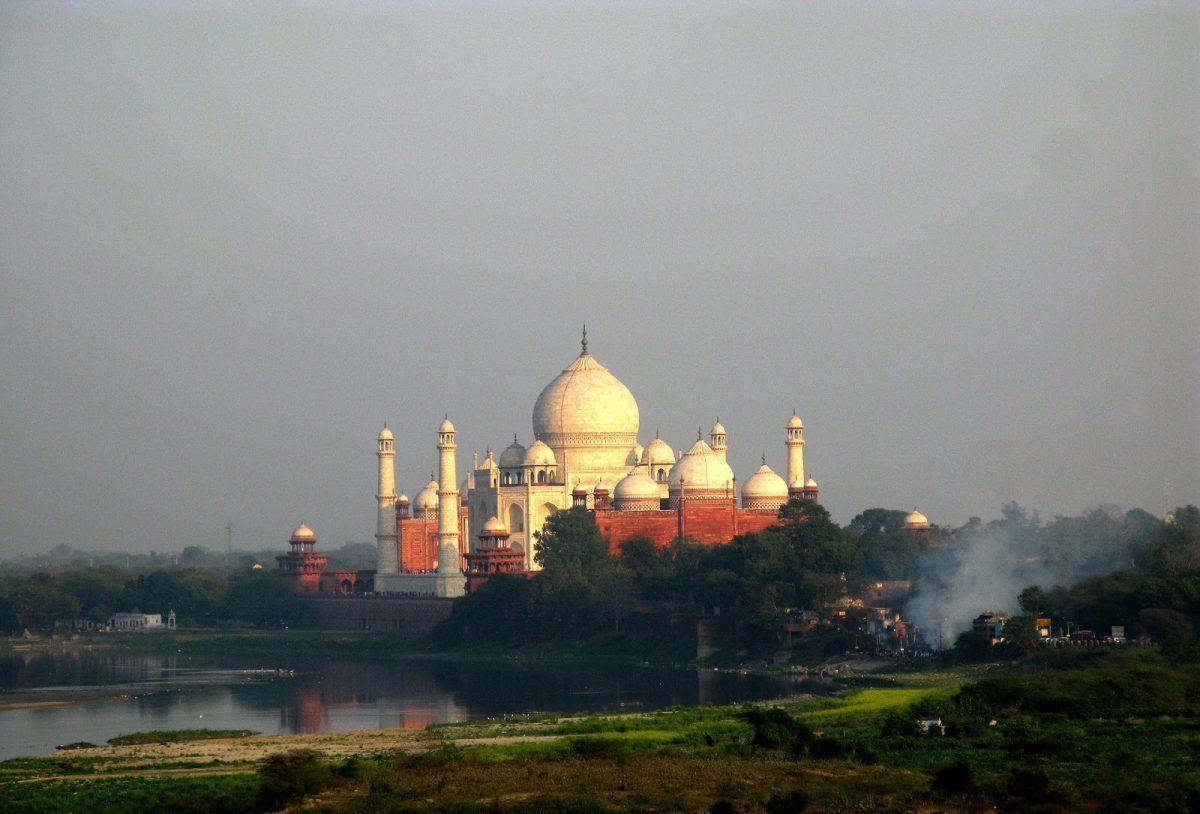
Is the Panasonic LUMIX ZS100 for You?
Do you want an upgrade over your smartphone’s camera? Do you want one of the best point-and-shoots for travel?
Shortcomings aside, the Panasonic LUMIX ZS100 is an excellent choice, it’s priced well and is a good camera for newbie – intermediate photographers.
For casual photographers, this respectable compact camera can take great photos and is a good camera for backpacking trips where space and weight matter!
When our team gave this camera a go it was a real hit amongst those less experienced with photography. The retro look, compact and lightweight form along with the easy-to-use controls and settings meant the learning curve from phone photography to the Panasonic LUMIX ZS100 was pretty shallow. The more experienced photographers however did feel somewhat limited but still enjoyed features like RAW shooting.
Top Travel Camera for Photography Enthusiasts
A serious camera to get started with photography (for a reasonable price!)
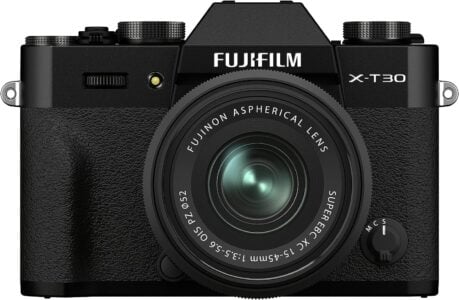
- W) 118.4mm × (H) 82.8mm × (D) 46.8mm (body only)
- 378g (body only)
- 26.1 MP APS-C X- Trans CMOS 4 sensor
- Fuji X-Mount – 20+ native lenses
- No weatherproofing
- Up to 4k video recording
If you’re looking to get a little deeper into photography but still don’t want to drop a couple of grand on a high-end camera, then I have the perfect solution for you.
Presenting: the Fujifilm X-T30. This bad boy is small, light, and takes absolutely gorgeous photos. The controls are very easy-to-use and, at around $999, the X-T30 won’t break the bank.
This makes the X-T30 not only one of the best travel cameras for beginners but one of the best mirrorless travel cameras on the entire market. Very few other cameras are able to compete with Fujifilm’s amazing package.
- Want an outstanding lens selection.
- Want optimal image quality without going full-frame.
- Like intuitive controls.
- Like long-lasting batteries.
- Need weather sealing.
- Want the best video recording technology.
Why the Fujifilm X-T30 is One of the Best
Fujifilm really has created one of the best cameras ever for travel photography.
Fujifilm’s lens selection for the X-Mount is exceptional. There is a lens for nearly every type of photographer and every one of them is razor sharp – some of the sharpest in the business, arguably.
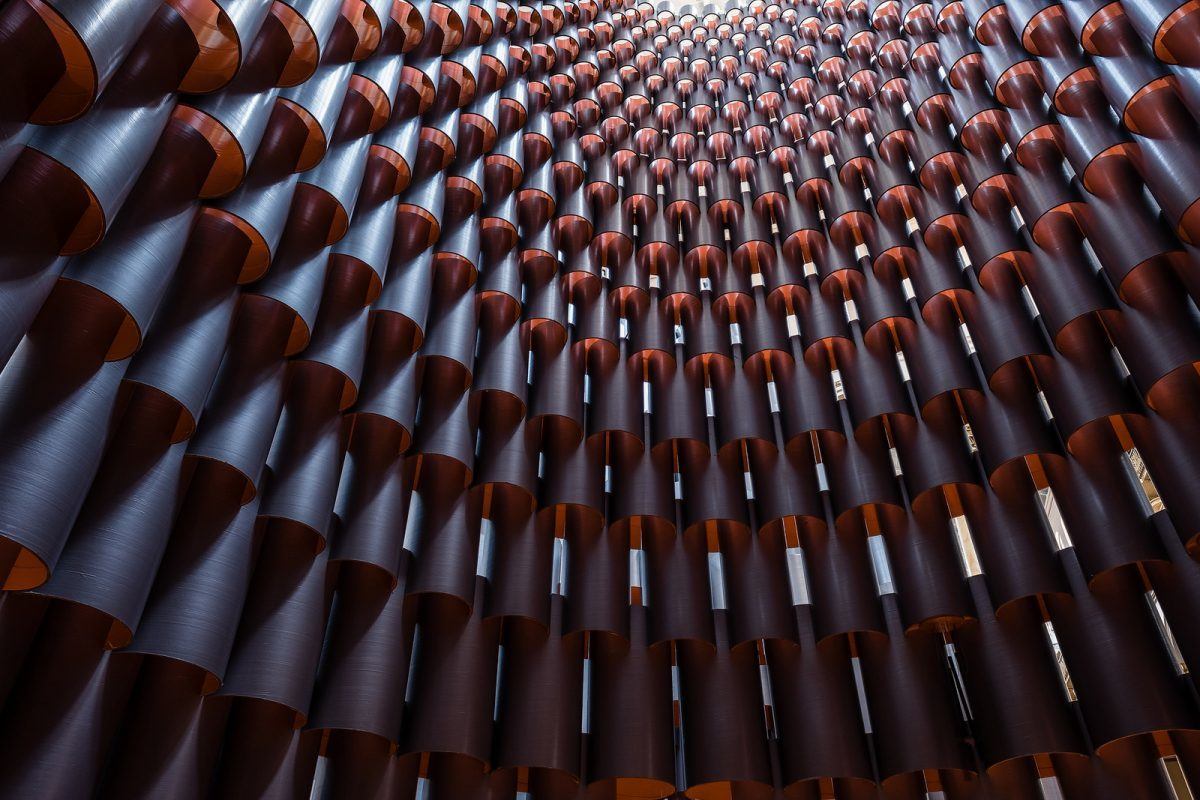
Fujifilm’s X- Trans CMOS 4 sensor is a marvel as well, pushing the limits of an APS-C sensor to 26.1 Megapixels without sacrificing any quality. So good is the caliber of Fujifilm’s images that the X-T30 can compete with some of the best cameras ever used for travel photography like the Canon EOS 5D and Nikon D850.
Most inspiring is that all of this technology is crammed into a body small enough to easily pack. You won’t break your back carrying loads of gear, which happens often with larger DSLRs. While the bags of many full-frame shooters can weigh more than 50 lbs, most Fujifilm packs will never weigh half as much. Essentially, you’re getting full-frame quality for half the weight.
Where the Fujifilm X-T30 Falls Short
To be fair, the X-T30 is not perfect.
Battery life could definitely be better. Though the X-T30 can film 4k videos, Fujifilm’s have never been known for their cinematic prowess, either because of control or buffering issues. Noise can be a problem with the X-Trans at very high ISO levels. Finally, this body lacks weather sealing, which is what made the original X-T2 so popular with adventure photographers.
Regardless of its few shortcomings, the Fuji X-T30 is still very attractive. The X-Mount system has been so successful, that it’s even converting full-frame shooters. Many (reluctantly) realized that they can take superb images without using a larger sensor. Beginners and enthusiasts who want to get started in travel photography will find the X-T30 a great place to start.
Fujifilm X-T30 Upgrade
Want weatherproofing and better battery life via an external grip accessory? Check out the X-T30’s precursor, the Fujifilm X-T5 .
Fujifilm X-T30 Pro Tips
- Fujifilm sensors are admired for the vivid colors that they produce, which makes the X-T30 is one of the best cameras for landscape photographers!
- Batteries drain faster in colder temperatures. Hide them in an inside pocket of your jacket to combat this – your insulating body heat will extend their life.
- Try to keep ISO below 3200 – image quality will start to suffer in the X-T30 beyond this number.
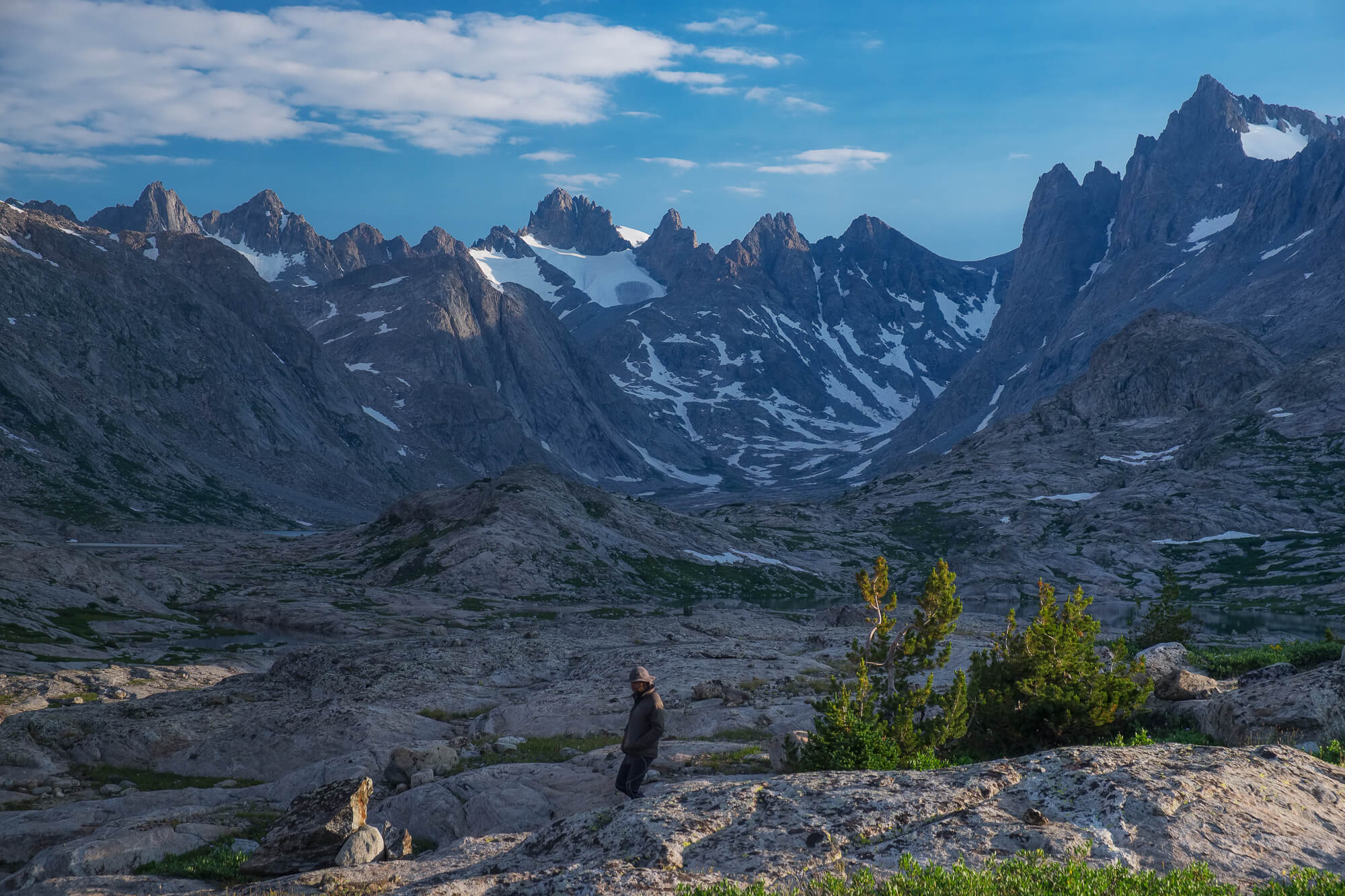
Is the Fujifilm X-T30 for You?
Do you want a camera that can take amazing photos without taking up too much space? Are you willing to sacrifice a few things like top video quality and long battery life? Get the Fujifilm X-T30! Seriously, it’s one of the best compact travel cameras in the business and an amazing deal. Join the Fuji family!
Our testers loved that this camera felt like it was the next step up from a point-and-shoot whilst still retaining an easy-to-use interface with physical dials rather than digital controls. The ability to change lenses, an APS-C sized sensor and full manual controls really allows those experimenting further into photography an easy and approachable pathway.
Best Waterproof Adventure Camera
The all-around best waterproof and action camera on the market!
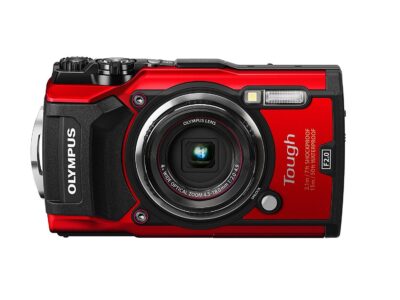
- 4.4 x 2.6 x 1.3” / 8.8 oz
- 12 MP 1/2.3” CMOS Sensor
- Built-in 4.5-18mm lens (25-100mm FF equivalent)
- Fully waterproof up to 50 ft, shockproof, freezeproof
The Olympus Tough! TG-5 is one of the best waterproof travel cameras out there. This armored camera is small, has good optics, and is packed full of fun features. Most importantly, the TG-5 is shockproof, freeze-proof, and – up to certain depth – waterproof. This means it can be dropped, tossed, submerged, buried, whatever and still function.
The TG-5 is an awesome tool to have and is shooting with it is very stress-free (since it’s so hard to break!). Travel photographers will find this is the hardiest adventure camera on the market!
Check out our epic guide to more action cameras and GoPro alternatives .
- Are worried about breaking your camera.
- Want the best image quality from a rugged-style camera.
- Would like some solid extra features like macro, 4k, and slow motion video.
- Want to shoot at night or in low light.
- Want optimal video recording.
- Prefer a super easy-to-use camera.
Why the Olympus Tough! TG-5 is One of the Best
For many travelers, a good waterproof camera will be the most valuable item in their pack. Rugged cameras are built to last and are meant to survive in some very harsh conditions. Owners, whether clumsy, risky or just plain neurotic, should feel some respite knowing that it’d be pretty damn hard to break these adventure cameras.
The Olympus Tough! TG-5 is one of the best waterproof cameras currently on sale. Short of some very high end and expensive underwater cameras, the Olympus TG-5 has some of the finest image quality of its class. Multiple shooting modes, including Live Composite and an impressive macro mode, give shooters lots of creative options. There’s even the ability to shoot in RAW format, which is a pleasant surprise.
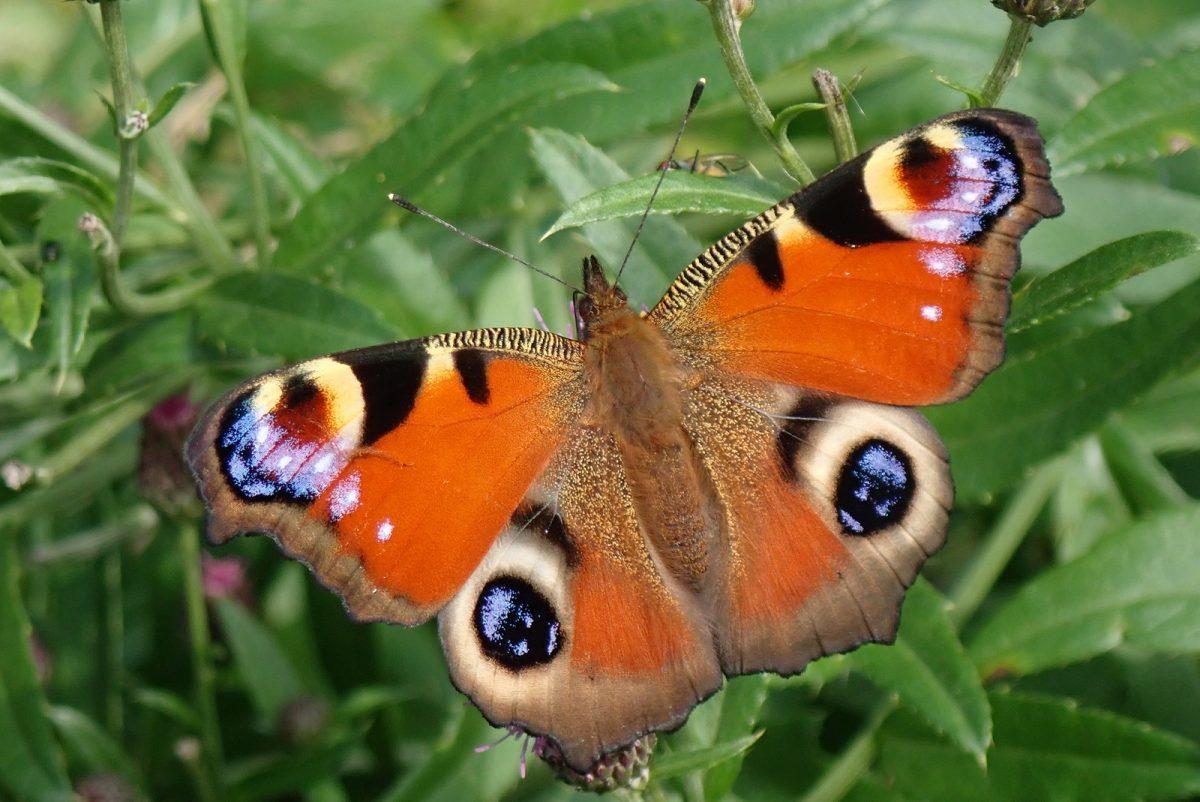
In addition, the Olympus Tough! TG-5’s processor is quite zippy and allows 20 fps continuous shooting, which is also commendable. Autofocus is relatively quick and accurate.
Video recording with the Olympus TG-5 is very notable. Users can film using either standard, High-speed (slow motion) or 4k modes. The second option is pretty cool; the third is outright shocking. Having 4k – though cropped – in a camera like this is honestly remarkable and totally worthwhile.
Where the Olympus Tough! TG-5 Falls Short
The Olympus Tough! TG-5really struggles in dimly lit situations, sometimes failing all-together. Increasing the ISO doesn’t help much as image quality rapidly degrades. The tiny sensor just can’t handle low light.
Secondly, Olympus cameras are infamous for having confusing menus and settings layouts – the TG-5 is no exception. Be prepared to scroll through lots of menu screens and frequently ask yourself “now why the hell would Olympus put this here?”
Olympus Tough! TG-5 Alternative
The Nikon COOLPIX AW130 is a great alternative and tough competition in the race for the “best waterproof travel camera.” With the Nikon, you’ll get a greater maximum waterproof depth at the sacrifice of image quality.
Olympus Tough! TG-5 Pro Tips
- The Olympus TG-5 was built for divers. Underwater photography is a very different game though and you’ll have to change your shooting technique up a little.
- The seals around the battery housing will gather salt over time. Make sure you clean this area frequently as the seals will eventually be comprised from prolonged exposure effectively making the camera no longer waterproof.
- Make sure you get a good wrist strap or flotation device for the Olympus TG-5. If the camera leaves you and is left in open water, it’ll sink like a rock.

Is the Olympus Tough! TG-5 for You?
Are you someone who often breaks or damages their equipment? Do you need a point-and-shoot camera with a little extra protection? Then the Olympus Tough! TG-5 is the best compact travel camera for you! It’s tough waterproof exterior will ensure that no matter how hard you treat it the Olympus Tough! TG-5 will keep going. Just don’t get crazy.
Our team happen to be the adventurous type and of course, we want to capture all of it! Our testers felt this camera offered a good balance between good image quality, ease of use and of course, protection. Now, it’s not top top quality, but for where you can take this tank of a camera, it offers most travellers a unique opportunity to capture their adventures without spending thousands of dollars and for that reason our team really enjoyed using it.
Best Travel Camera for Video Recording
If you are trying to take next-level video for a decent price, the Panasonic GH4 is for you!
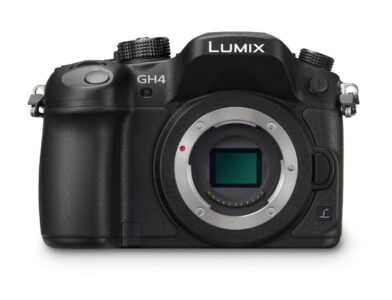
- 5.2 x 3.7 x 3.3” / 19.75 oz (body only)
- 16 MP MFT MOS Sensor
- Micro Four Thirds Mount
- Weatherproof
Back in 2014, the Panasonic GH4 made a lot of waves in the videographer world because it was one of the first mirrorless cameras to incorporate 4k recording technology. Today, the GH4 still remains one of the best travel video cameras out there!
The GH4’s creates stunning videos thanks to its ability record in 4k resolution. Its plethora of accessible features and system settings allow for full filming customization as well. The body of the GH4 is very rugged and comfortable to grip. Finally, with the help of a huge array of Micro Four Thirds lenses, this camera takes amazing photos as well. The GH4 has definitely aged very well and is still extremely useful.
- Want some the best video recording tech in the biz.
- Still want to take gorgeous photos.
- Want terrific ergonomics and shooting features.
- Still need something drastically smaller than a DSLR.
- Want better low light performance.
- Like a lot of processing power.
Why the Panasonic GH4 is One of the Best
The GH4 was one of the first mirrorless cameras to have 4k video recording. It’s stellar performance quickly made it one of the best mirrorless cameras at the time.
Now, there are a lot of cameras in this post that have 4k. Not many of them have the amount of customization that the Panasonic GH4 has. Understanding the camera’s many settings allows for a multitude of shooting styles. Videographers can set this camera up in a way to allow for flawless filmmaking. This makes the Panasonic GH4 one of the greatest travel cameras for vlogging!
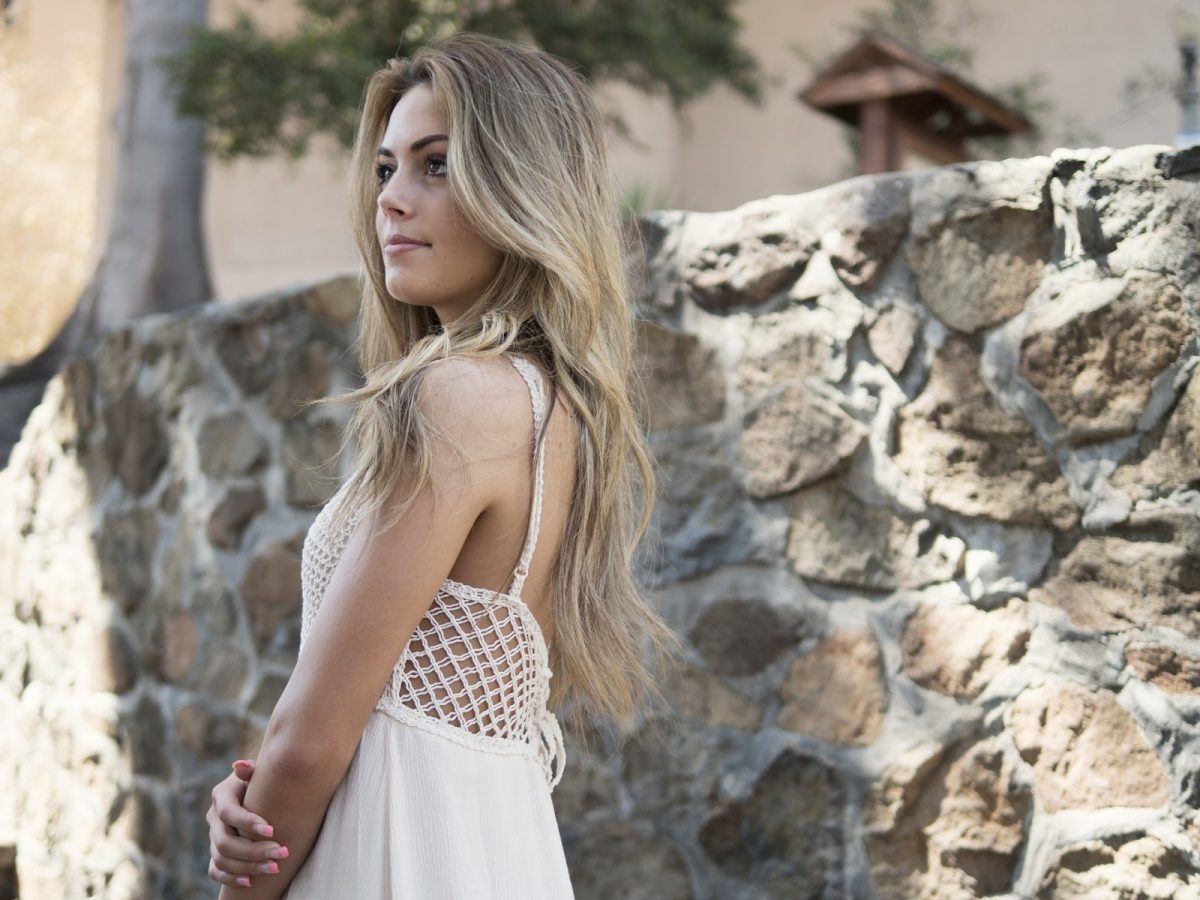
The Panasonic GH4 also has an absolutely enormous lens library to choose from courtesy of the Micro Four Thirds mount . Many of these lenses are of the highest quality because they are produced by optical giants like Leica and Voigtländer. Each lens will suit a particular style of shooting, down to the minutest detail; with them, you’re sure to find the perfect set-up. Video aside, the Panasonic GH4 still takes gorgeous pictures and can be used a more conventional camera.
Finally, the Panasonic GH4’s body is weatherproof and relatively compact. Many adventurous photographers – those who venture out into the harsh and unforgiving wilderness – utilize this camera’s robustness to get shit done.
Where the Panasonic GH4 Falls Short
The Panasonic GH4’s small sensor size makes shooting in low light more difficult. Noise is noticeable at higher ISOs and depth of fields can be a problem when using drastically low apertures to compensate.
The GH4 isn’t as compact as other mirrorless cameras though it’s stiller smaller than most DSLRs. In addition, the GH4 has a stationary back screen that can’t rotate, which is sometimes inconvenient. Many videographers want a vlogging camera with a flip screen for shooting at weird angles.
Panasonic GH4 Upgrade
Want image stabilization, which can make your videos even smoother? The latest model, the Panasonic GH5 , has this tech!
Panasonic GH4 Pro Tips
- The GH4 uses the Micro Four Thirds system, which means that it can uses lenses from other systems that use Micro Four Thirds, like Olympus and Black Magic. Use them and create the ultimate lens kit!
- Because of its huge amount of customizable settings, there is a myriad of ways to shoot video with the GH4.
- Shooters may create too much depth of field when recording with little light and a low aperture number. Position yourself farther away to compensate for this.
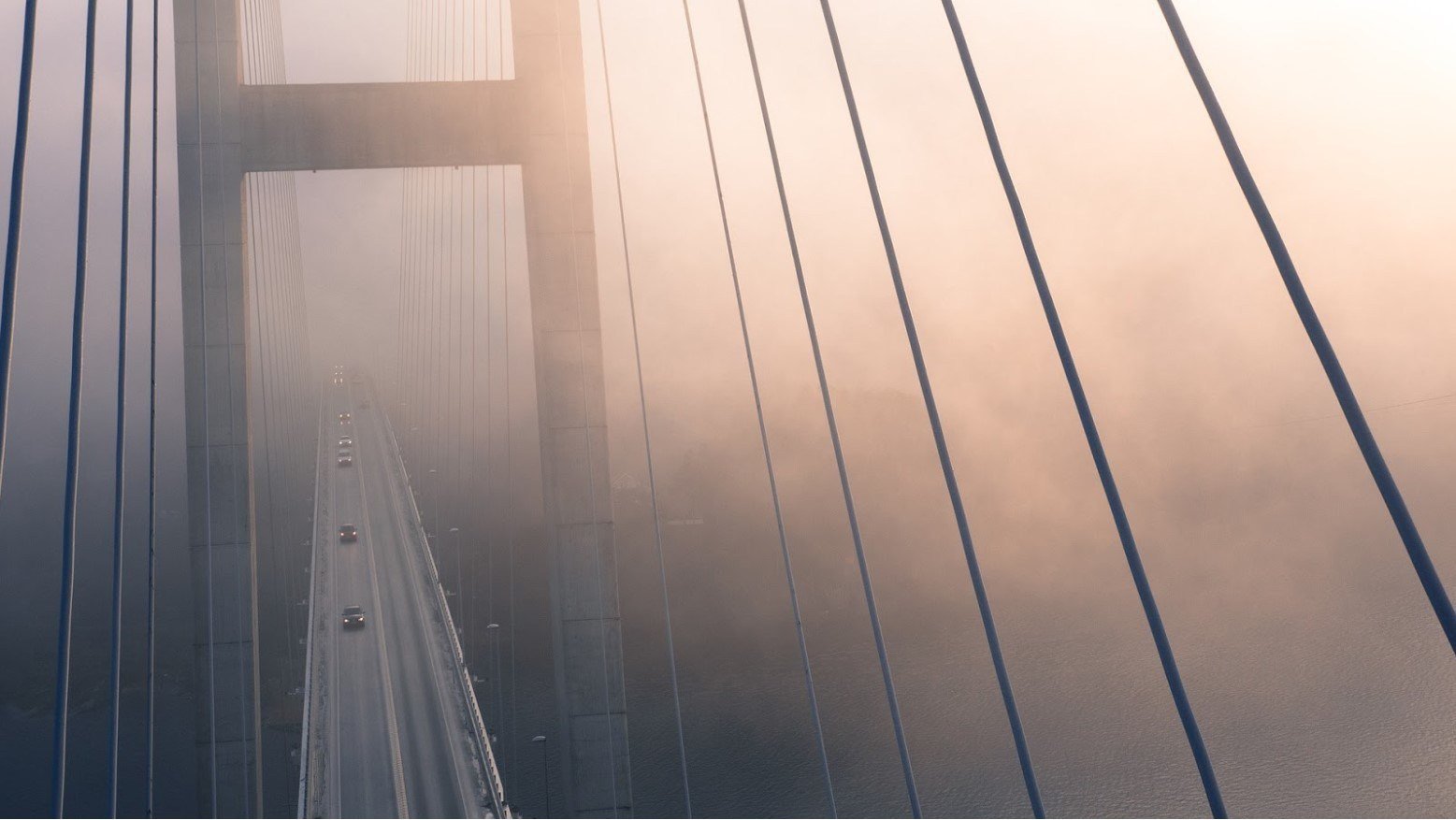
Is the Panasonic GH4 for You?
Do want one of the best video cameras for travel that is (relatively) compact? Would use also like the ability to shoot excellent photos? The Panasonic GH4 has everything that you need! With 4k video recording, you’ll be making professional grade videos in no time. Join the revolution and get one of the best mirrorless video cameras yet!
Our testers are often used to using their phones for videos, so how did they find this camera? Well for those looking to push their vlogging and video making they felt this camera both offered a huge leap in quality and control but in a package that wasn’t intimidating to use and learn. The great quality stills offered by this camera were also a great bonus and for our team, they felt it was that package that made carrying and using this camera over a phone worthwhile.

Do You Want to Travel FOREVER??
Pop your email in below to get a FREE copy of ‘How to Travel the World on $10 a Day!’.
Best Travel Camera for Aspiring Professionals
If you want a powerhouse that can do almost everything
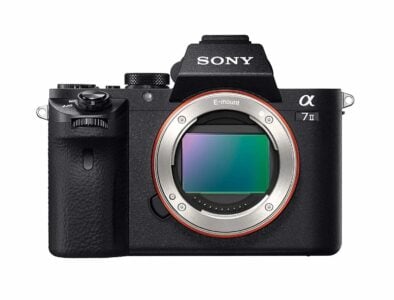
- 5.0 x 3.8 x 2.4” / 22 oz (body only)
- 42.4 MP full-frame CMOS Sensor
- Sony E-Mount – 20+ Native Lenses – Adapters allow for exponentially more non-native lenses
- Internal 5-axis image stabilization
This is the cream of the crop. The future, if you will.
The mirrorless camera that is seeking to knock out the dynasty that was created by full-frame DSLR giants like Canon and Nikon. This is the Sony A7R Mark II.
The Sony A7r Mark II may not only be the best mirrorless camera for travel but the best mirrorless camera, period.
Boasting a mind-boggling 42.4 Megapixel full-frame sensor and a cutting-edge autofocus system this camera can capture just about anything, regardless of lighting or conditions.
Most impressive is the ability to mount almost any non-native lens on the A7R Mk.II via a series of adapters. That luscious Canon glass – the kind that every photographer idolizes – is no longer exclusive. Sony is literally poaching the competition with its amazing flagship, the A7R Mk.II.
- Want the highest possible image and video quality.
- Would like the ability to mount non-native lenses.
- Want to become a professional photographer.
- Are on a budget.
- Need lots of battery life.
- Like to shoot rapidly.
Why the Sony A7R Mark II is One of the Best
What can be said about the Sony A7R Mark II except “extraordinary.” This camera apparently has it all: an amazing sensor, top-notch focusing, the ability to mount nearly any lens possible, and a rugged body to go with it.
I could gush about the quality of images that the A7R Mk.II produces but that would be pointless – I will simply state that they are brilliant. Gorgeous colors, huge dynamic range, and a minute amount of noise are all noteworthy points. All this makes it very worthy of being constantly listed as one of the best travel cameras in 2024.
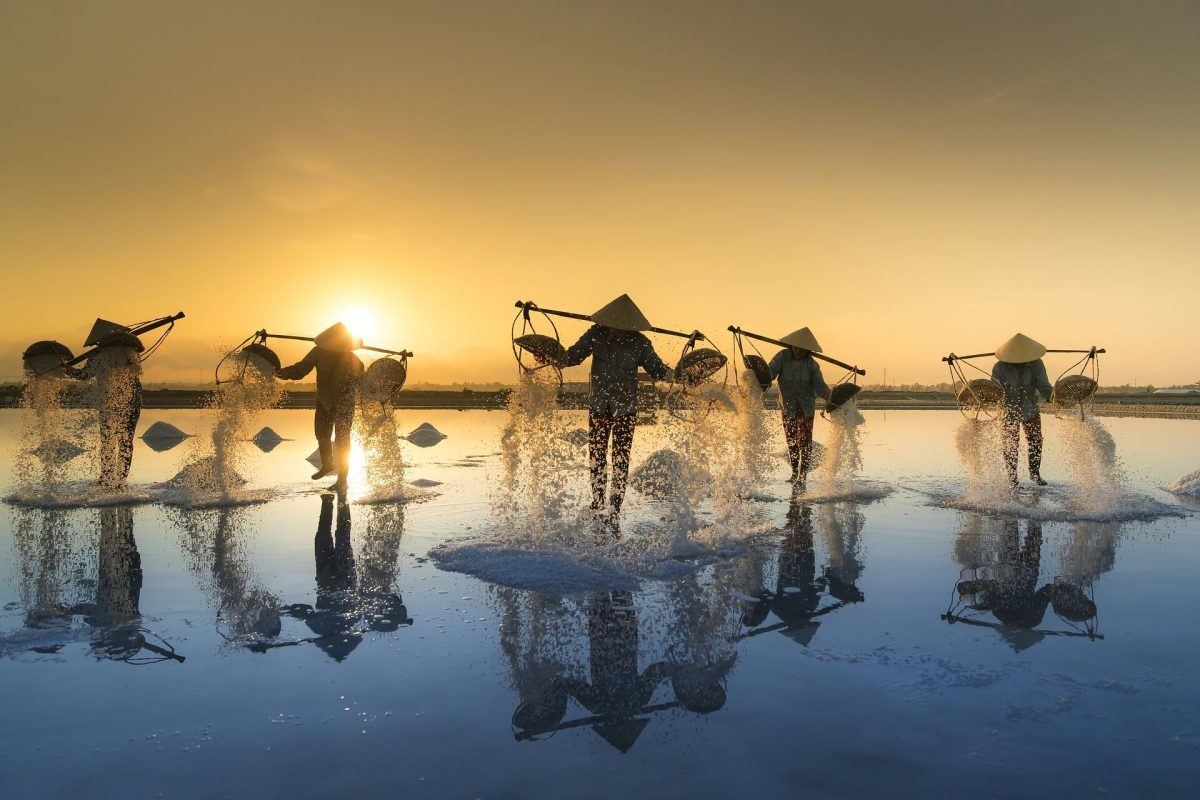
For a mirrorless camera, the A7R Mk.II’s autofocus is ahead of its time. Where many mirrorless systems can be relatively sluggish, the A7R Mk.II excels and can compete with the most advanced DSLRs. Even non-native lenses when mounted on the A7R Mk.II snap to focus quite quickly, which is remarkable.
The fact that the A7R Mk.II can function with any lens via an adapter is a huge accomplishment. Many photographers have clung to reputable brands simply because the glass is so good. The ability to mix and match incompatible brands had been unheard of until the Sony Alpha series.
Now photographers can use any lens they want when using the Sony A7R Mk.II. The inclusion of an in-body image stabilizer also ensures maximum sharpness regardless of the adapted lens’ possible lack of stabilization.
Where the Sony A7R Mark II Falls Short
The A7R Mk.II’s battery life can be frustratingly bad. Performance can be slow in certain circumstances i.e. continuous shooting and buffering. Video – though possible in 4k – can be difficult to record thanks to some technical and ergonomic flaws.
Finally, the E-Mount lens library is fairly uninspiring, and those who resort to larger Canon/Nikon glass effectively negate the benefits of using such a small camera body in the first place.
Sony A7R Mark II Upgrade
Want to splurge even more? Sony A7R Mark III features greater processing power, better continuous shooting, a touch screen, and more!
Sony A7R Mark II Pro Tips
- The A7R Mk.II can be charged via a USB port while in the field. Bring a power bank with you for those long shoots.
- The A7R Mk.II can switch to an APS-C mode, which will add extra focal length at the cost of resolution. This feature is great for wildlife and distant subjects.
- The extremely limited amount of noise that the A7R Mk.II produces allows photographers to worry less about ISO. Set ISO to AUTO and apply a minimum shutter speed to streamline shooting.
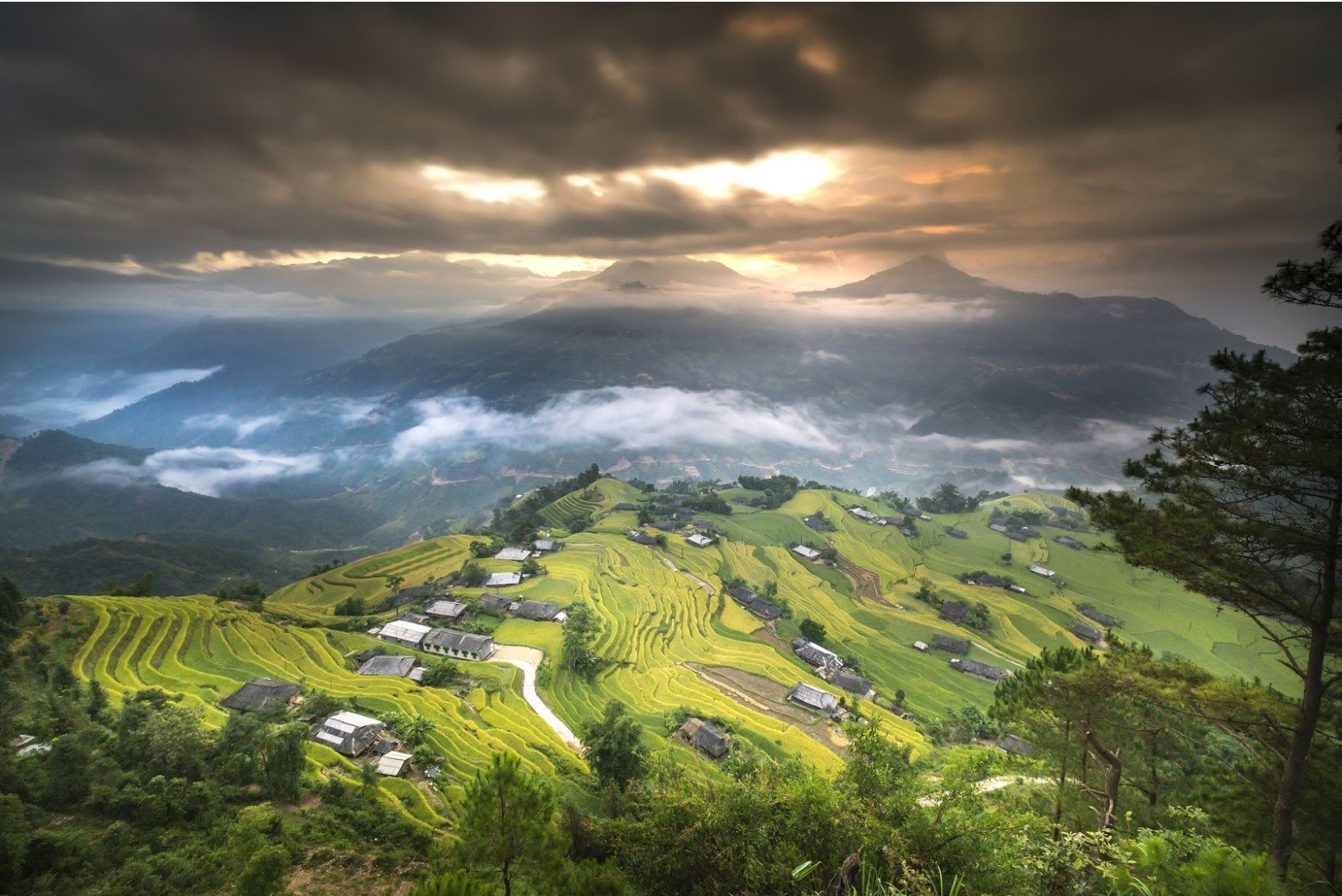
Is the Sony A7R Mark II for You?
Do want to have one of the best mirrorless travel cameras currently available? Are you willing to invest in a tool that will help take your photography to the next level? If so, then the Sony A7R Mark II is just about the best professional camera for travel that you can buy. Though it may struggle at times with battery life and processing speeds it will serve any travel photographer very well.
Now, I’m biased here, but I think this is the ultimate travel camera, but I have had one for the last 4 years and used it across the world on various trips and adventures!
For me, this was the culmination of many years of a growing interest in photography where I built up to owning a full-frame camera. For the beginner, this camera is overkill and possibly too complicated. But for those looking to take a step into professional photography, you can’t go wrong with this camera. It offers excellent quality, a great selection of travel appropriate lenses and does it all at the fraction of the weight of a full-frame DSLR.
Best Pro DSLR for Travel
If you are looking to have that ‘National Geographic’ look… you’ve found your camera
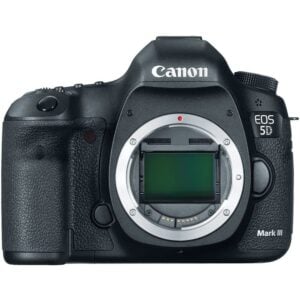
- 6.0 x 4.6 x 3.0 / 1.89 lbs (body only)
- 22.3 MP full-frame CMOS Sensor
- Canon EF Mount – 20+ native lenses
- Weather resistant (not sealed)
- 4k video possible w/ extra firmware
For the last decade or so, the Canon EOS 5D series has been the king of cameras.
With a respectable 22.3 MP full-frame sensor, excellent controls, and being backed by one of, if not the most reputable lens libraries, the Canon EOS 5D Mark III is for many the go-to choice. The Canon 5D Mk.III excels in all fields of photography. For this reason, the Canon 5D Mk.III is the best DSLR camera for travel.
- Want amazing images.
- Would like a huge selection of cutting edge lenses.
- Want just an all around great camera.
- You want the absolute best full-frame sensor possible.
- Are concerned about size and weight.
Why the Canon EOS 5D Mark III is One of the Best
The Canon EOS 5D Mark III has been so successful that its name often feels synonymous with the term “professional photography.”
The Canon EOS 5D Mark III is probably the leading camera in the photographic industry. It can do just about anything. The 22.3 MP sensor produces some truly stunning photos that are noise-free even at the highest ISOs. Autofocus is very fast and reliable.
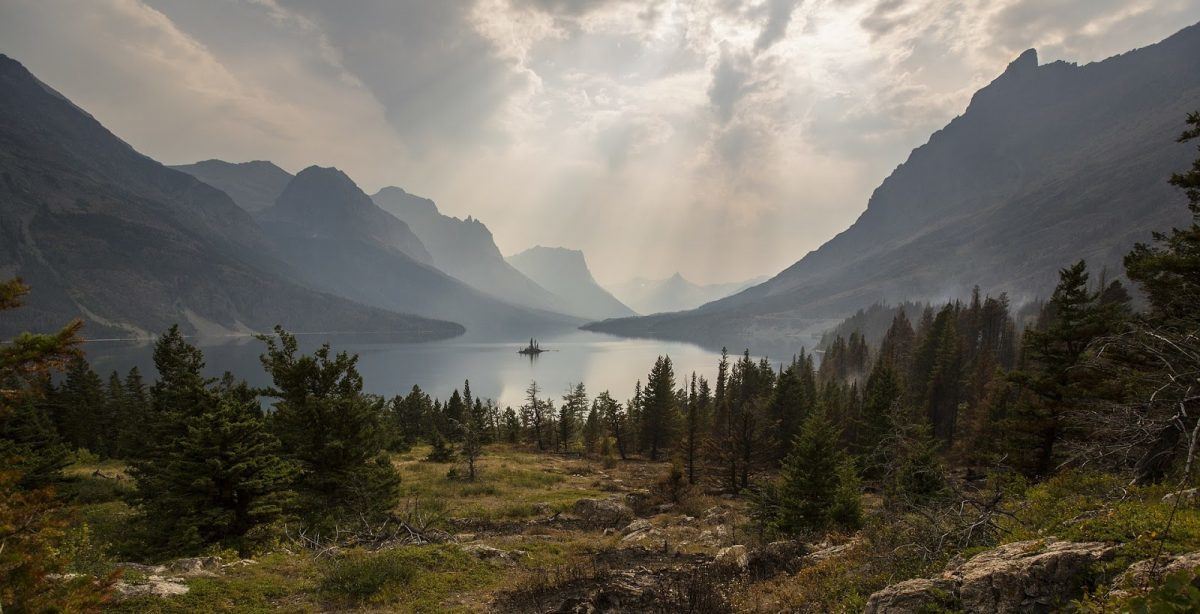
Video recording is also top quality in the Canon 5D Mk.III. For most of its existence, 1080p has been the highest resolution possible when recording with the 5D Mk.III. A new firmware has expanded upon this though and made 4k possible thus pushing the 5D Mk.III even further into the stratosphere.
The controls of the Canon 5D Mk.III are well placed and most settings are fully customizable. Users can set up their camera in whatever way suits them. Weather sealing and awesome battery life further cement the Canon 5D Mk.III as one of the most dependable cameras available.
Where the Canon 5D Mark III Falls Short
Honestly, I have a hard time finding much fault with the Canon 5D Mk.III. There’s a reason it’s one of the most popular cameras today: it simply works – amazingly well.
The biggest complaint that one can make about the Canon 5D Mk.III pertains more to the general nature of full-frame DSLRs themselves. full-frame DSLRs are big, heavy, and cumbersome. Even a partially complete pack including a camera body, a lens or two, and a couple of mandatory accessories can top out at over 30 lbs.
For travelers who often live out of a backpack and must be mindful of pack weight, this can be a problem. Interested photographers will have to measure the pros and cons and make their own decision but if you’re looking for a compact backpacking camera, this probably isn’t the best choice.
Canon EOS 5D Mark III Upgrade
Do you want an even more powerful camera? The Canon EOS 5D Mark IV is a part of the next generation of full-frame cameras and builds upon its forerunner in nearly every way.
Canon EOS 5D Mark III Pro Tips
- RAW images that are taken with a full-frame sensor are more malleable in post-processing. Find a good editing program and learn how to use it.
- Enable the Highlight Alert feature in the Canon 5D Mk.III. It’ll let you know when an image has been blown out and has unrecoverable highlights.
- The bigger the camera, the bigger the tripod. Make sure your tripod can support the weight of the Canon 5D Mk.III with a decent sized lens attached.
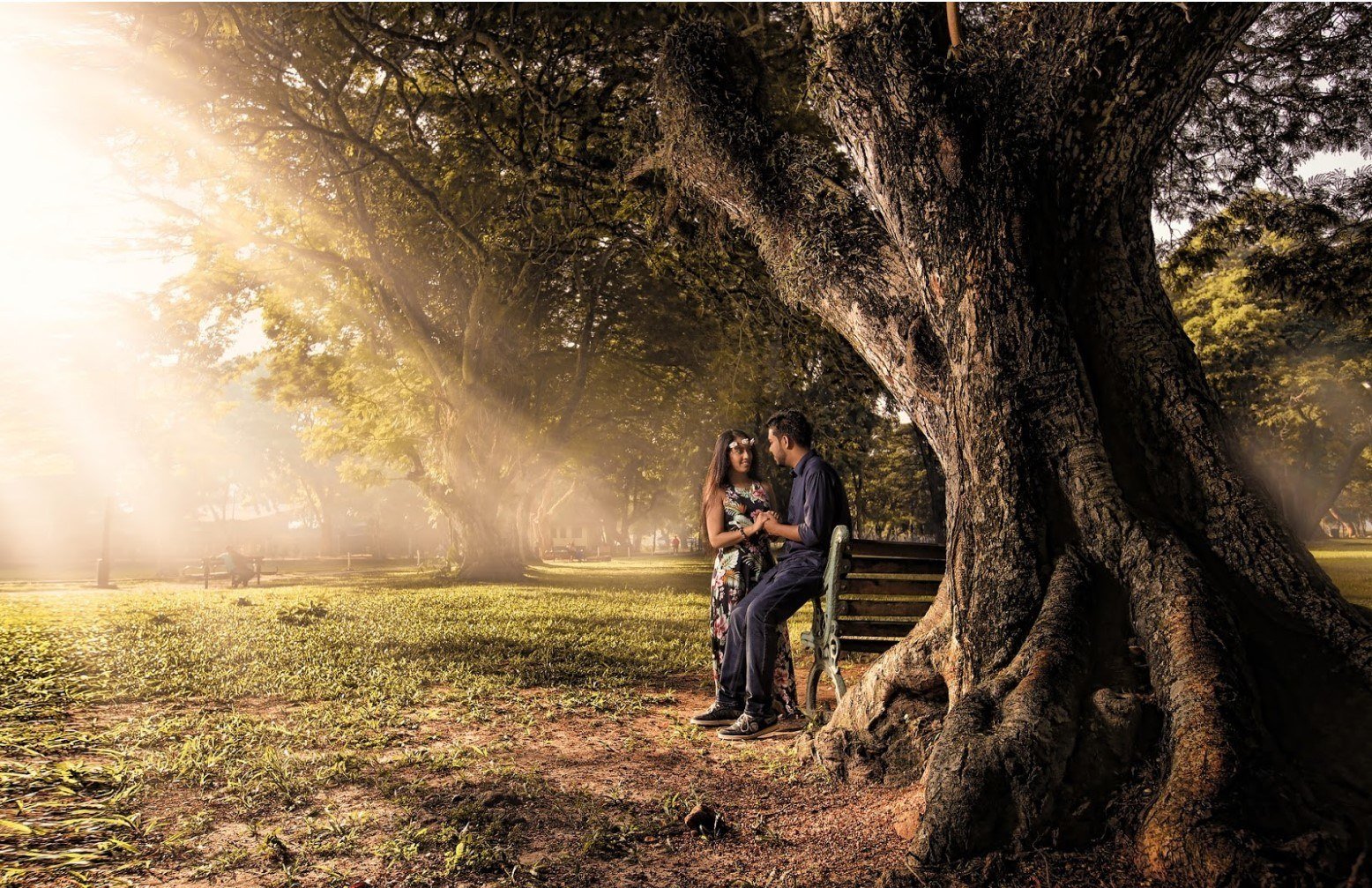
Is the Canon EOS 5D Mark III for You?
Do you want one of the best professional travel cameras of all time? Are you ready to bear the burden of this technological behemoth? Then join the party and get yourself a Canon EOS 5D Mark III. With spectacular in-body performance and arguably the best selection of lenses that money can buy, you’re sure to find success. Welcome to the Canon life.
For the most serious amongst our team you just can’t beat the Canon EOS 5D Mark III. Our testers felt this camera was really only for the most experienced and that beginners would be pretty overwhelmed. However, for those who know how to use these high-end cameras it gave them the ability to really unleash their potential. Two of the real stand-out features of these cameras is the unbeatable image quality and the unrivalled range of lenses available.
Best Mirrorless Camera Under $500
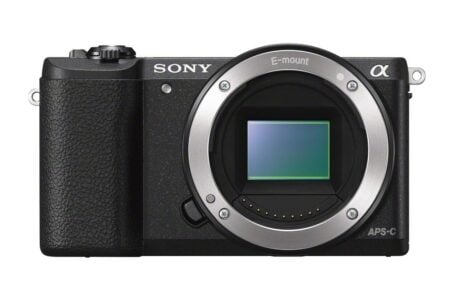
- 4.3 x 2.5 x 1.4” / 10 oz (body only)
- 24.3 MP APS-C CMOS Sensor
- Up to 1080p video recording
The Sony Alpha a5100 is a pint-sized powerhouse. Somehow, Sony managed to fit a staggering 24MP APS-C sensor into a body that is only a little larger than the average cell phone. Its startling size and performance make it both one of the best travel cameras for under $500 and perhaps the absolute best compact travel camera currently available. Novice photographers and those wanting to save a buck should instantly be drawn to the Sony Alpha a5100. Being under 500 bucks and being super compact and light makes it our vote for the best budget camera for backpacking.
Be sure to read our in-depth review of the Sony a5100 here.
- Want superb image quality in a tiny package.
- Are a beginner in photography and want to improve your skills.
- Want above average battery life for a mirrorless.
- Become frustrated by multiple menus.
- Like to use an Electronic Viewfinder.
- Need to use hot shoe accessories.
Why the Sony Alpha a5100 is One of the Best
It really is astounding what Sony as done with the Alpha a5100. They’ve created a camera whose images could rival those of a much larger DSLR, yet it could still fit in your front pocket (depending on the lens). That’s a big deal.
It’s not just the 24MP APS-C sensor either – the Sony Alpha a5100 also has surprisingly nimble autofocusing, excellent noise control, and solid battery life. For many amateur photographers, these features are all that is needed to take great photos.
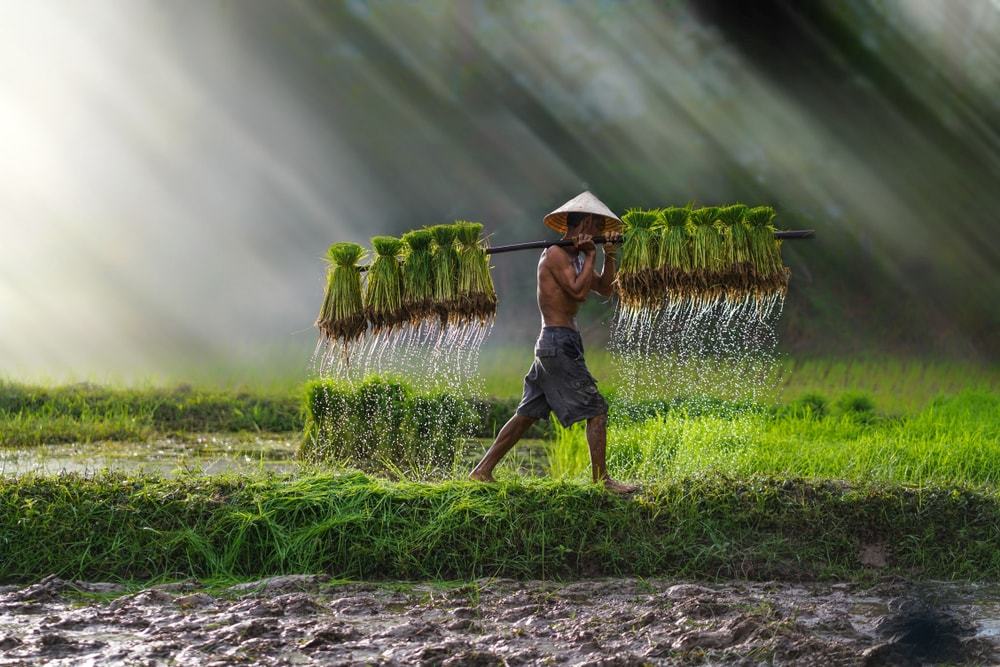
The body of the Sony a5100 is fairly blank – hell, the camera is nearly all sensor/mount and rear touchscreen – which can be a boon and a curse. Most settings can be found in one of the camera’s extensive menus. Via these menus, you can change just about anything exposure-wise that a semi-professional camera can. This makes the Sony a5100 one of the best travel cameras for beginners who want to break into photography without breaking the bank.
Conversely, it can be really frustrating to scroll through multiple screens just to change something like shutter speed. Your attention will instantly be diverted from the scene if you intend on setting the exposure manually with this camera.
Where the Sony Alpha a5100 Falls Short
The inclusion of an over exaggerated sensor doesn’t come without sacrifices as the Sony a5100 lacks a lot of important tech. For one: there is no EVF (Electronic Viewfinder), which makes sense because these take up a lot of space. Shooting via a rear screen on a bright day is notoriously difficult.
Also missing is a hot shoe, which means you won’t be able to connect any external accessories. Unfortunately, using a larger flash will be impossible leaving you to deal with the a5100’s own flash, which leaves a lot to be desired.
Sony Alpha a5100 Upgrade
Are you impressed by the a5100 and willing to spend a little extra cash? The Sony Alpha a6000 is a newer model and beats its predecessor in almost every measurable field.
Sony Alpha a5100 Pro Tips
- Though it lacks the buttons and dials found on more premium cameras, the Sony a5100 still has fully adjustable exposure. Play around with the aperture, shutter speed, and ISO to really step up your photography game.
- 24 Megapixels renders a pretty big file. Make sure you have a large memory card and enough processing power on your computer to process these images.
- There are a plethora of cool shooting modes in the a5100 including panorama and time lapse. Try them all out!
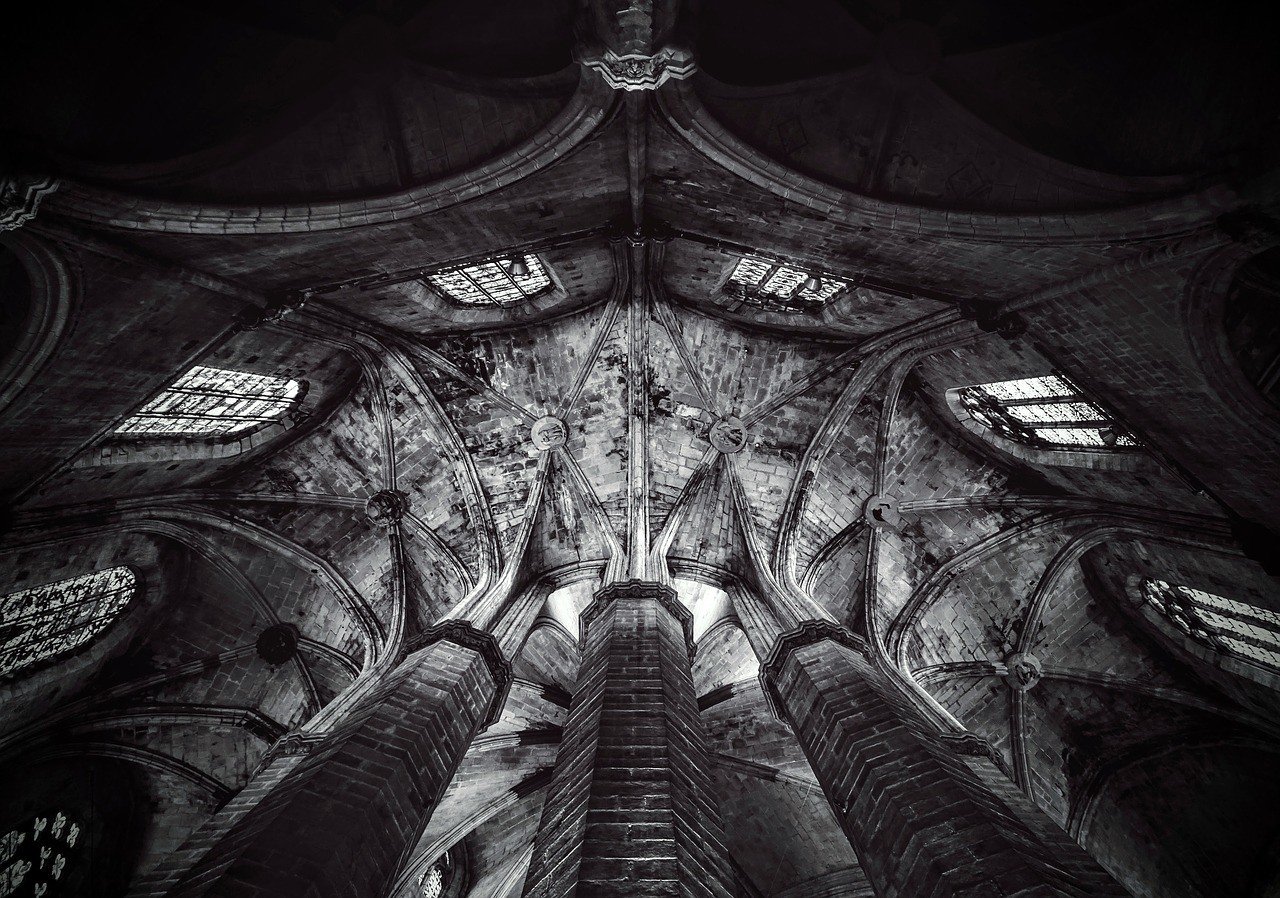
Is the Sony Alpha a5100 for You?
Are you looking for a compact camera that packs a punch? Are you ready to start learning the basics of photography but don’t want to commit to a full DSLR? The Sony Alpha a5100 is for you then! This mighty mouse of a camera is small, inexpensive and takes gorgeous photos making it one of the best budget travel cameras available.
Now I said above that I now use the Sony A7II, but before I upgraded to that camera, I learnt how to use a “proper” camera on the Sony Alpha a5100. What I loved here was that this camera was so easy to use, especially when finally branching out into full manual, that it really sparked my passion for photography. Having the freedom to change lenses, and affordable ones at that, really allowed me to experiment without shelling out a huge amount of money.
Best Bridge Travel Camera
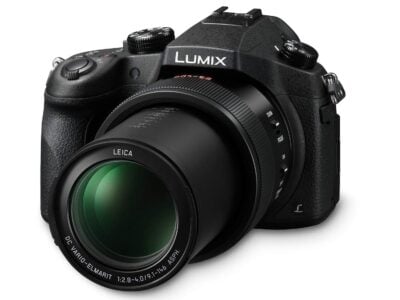
- 5.4 x 3.9 x 5.1” / 1.83 lbs
- 20.9 MP 1” MOS Sensor
- Built in 9.12-146mm Leica lens (25-400mm FF equivalent)
- Built-in Image Stabilization
The Panasonic Lumix FZ1000 is one of the best zoom cameras around! This camera takes surprisingly superb images mostly in part to its built-in long range Leica lens. The controls on the Lumix FZ1000 are very easy to use and make the experience of shooting a breeze. Best of all, the Lumix FZ1000 is currently the only “bridge camera” on the market that can shoot 4k videos, which makes it one of the best travel video cameras as well! At $600, you’re sure to get lots of use out of the wholesome Panasonic Lumix FZ1000.
Check out our in-depth review of the Panasonic Lumix FZ1000 here.
- Don’t want to worry about changing lenses.
- Want a lot of focal flexibility.
- Want very easy controls.
- Want maximum image quality.
- Like to shoot in low light situations.
- Are concerned about size and portability.
Why the Panasonic FZ1000 is One of the Best
The FZ1000 is considered a long zoom or “bridge” camera, which is essentially a hybrid of a point-and-shoot and a DSLR. The idea behind bridge cameras is to combine the most desirable traits from both systems – the accessibility of a point-and-shoot combined with the image quality of a DSLR. Many people find this system more enjoyable as they don’t have to worry about changing lenses or fiddling with overly complicated settings.
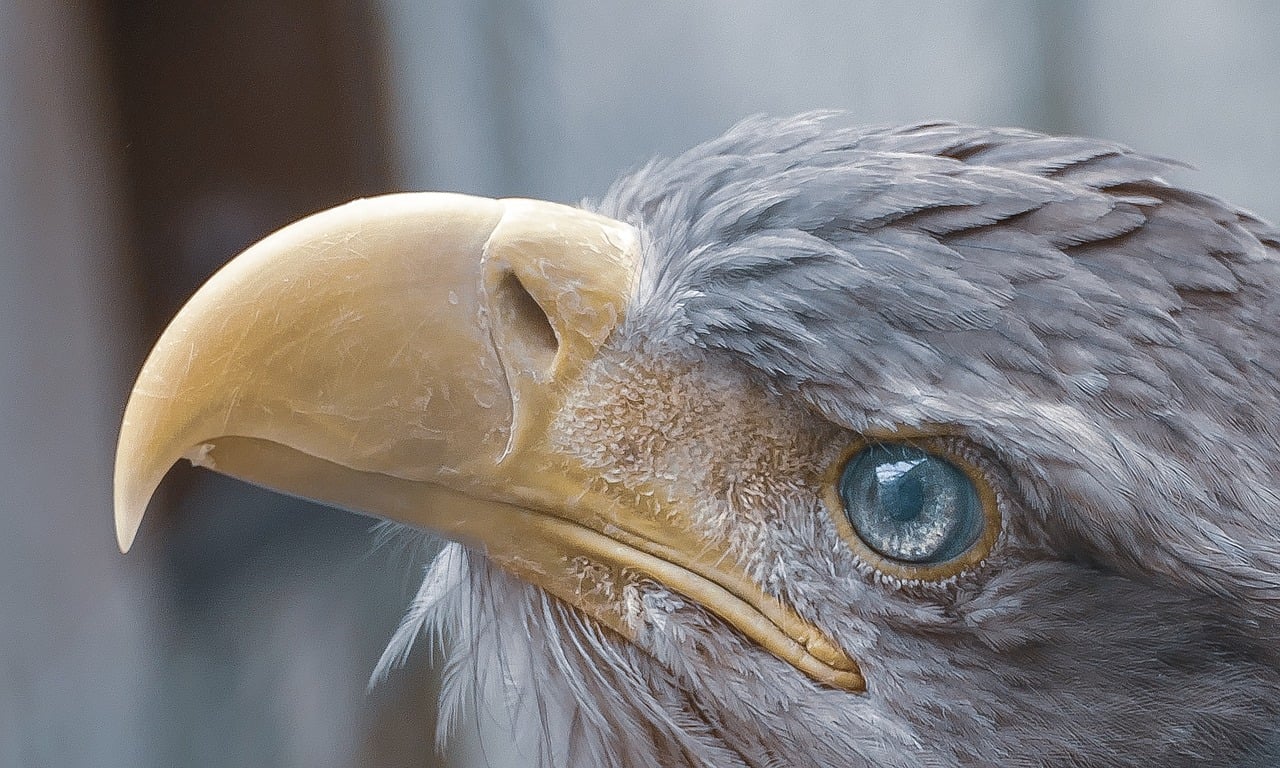
The Panasonic FZ1000 is one of the best long zoom cameras (or bridge cameras) out there. Aside from its inherent benefits, the FZ1000 consistently beats its opponents in several areas. The autofocus is superlative. The quality of the lens is top-notch (as Leica glass is legendary). Finally, the ability to film 4k is both extremely convenient and unheard of on a long zoom camera prior to the FZ1000.
The FZ1000’s controls are very intuitive and make shooting extremely easy. This also makes the Panasonic Lumix FZ1000 one of the best cameras for beginners in travel photography who want to learn the basics.
Where the Panasonic Lumix FZ1000 Falls Short
There are some negatives to the Panasonic Lumix FZ1000, which are endemic to all bridge cameras, unfortunately. Though the Panasonic FZ1000 (or any long zoom camera for that matter) may have a great lens, it’s small 1” sensor isn’t able to produce the sharpest and most dynamic images. Image noise becomes a problem even in moderately lit conditions. Highlights and shadows may be unrecoverable when shooting in harsh lighting conditions.
Portability is also an issue as most long zoom cameras tend to lean towards their DSLR brethren in size and weight. This makes the Panasonic Lumix FZ1000 not the best compact travel camera. The FZ1000’s body also lacks weather sealing, which may turn off many shooters who like to go outdoors.
Panasonic Lumix FZ1000 Alternative
Need a little extra range? The Nikon COOLPIX P900 has one of the longest and finest zooms of any travel camera but at the sacrifice of image quality.
Panasonic Lumix FZ1000 Pro Tips
- Bridge cameras, like the Lumix FZ1000, have low apertures and small sensors meaning they suffer in low light situations. Use this camera outdoors to get the most out it.
- The Panasonic Lumix FZ1000 has a built-in flash – use it! Even outdoor scenes can use a little extra light from time to time.
- Make sure the image stabilization is turned on! This feature can mean make or break a photo when shooting handheld – especially in low light situations.
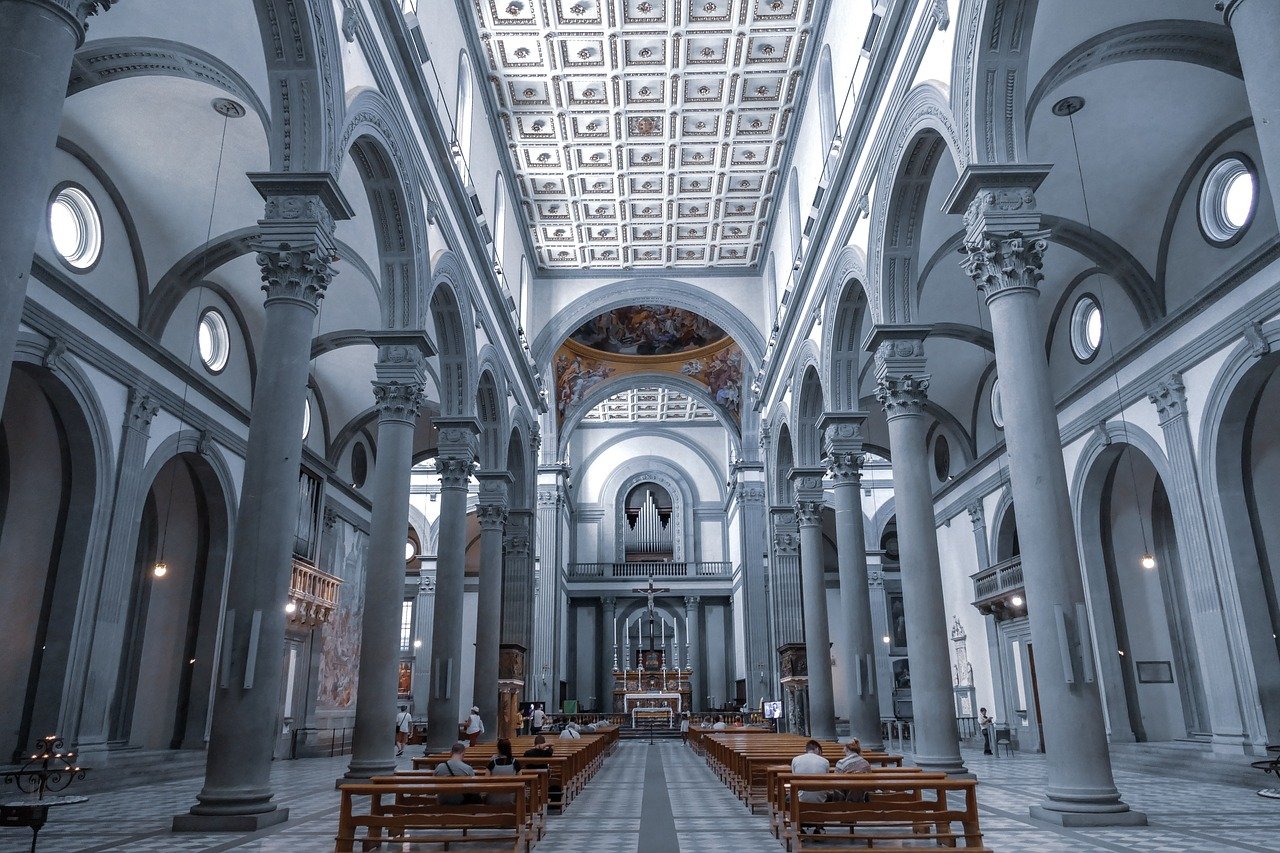
Is the Panasonic FZ1000 for You?
Do you want a very easy-to-use camera that can also take solid pictures? Do want the ability to capture a multitude of scenes without having to change lenses? Then the Panasonic FZ1000 is the camera for you! This “best-of-both-worlds” camera will meet most of your needs while traveling around the world and at a competitive price.
Our testers liked how the Panasonic FZ1000 was super versatile and offered great image quality without having to fork out for different lenses or worry about getting dust on the sensor when switching between focal lengths. Whilst not being super compact compared to some of the smaller cameras on this list, they felt for the focal length the weight of the whole unit was pretty good.

Now, you could spend a fat chunk of $$$ on the WRONG present for someone. Wrong size hiking boots, wrong fit backpack, wrong shape sleeping bag… As any adventurer will tell you, gear is a personal choice.
So give the adventurer in your life the gift of convenience: buy them an REI Co-op gift card! REI is The Broke Backpacker’s retailer of choice for ALL things outdoors, and an REI gift card is the perfect present you can buy from them. And then you won’t have to keep the receipt. 😉
Size and Weight
Size and weight are one of if not the most important things that photographers need to consider when looking for the best travel camera. Seriously, this is an extremely important subject. A photographer’s experience – and well being – could vary wildly depending on which camera he chooses and how big the whole system is.
For example, a photographer wants to have the absolute best camera for travel photography possible so he ends up buying a full-frame camera that weighs around 2 pounds. That’s just the body though, so he ends buying a few lenses, each weighing around 2-3 more pounds. But what about lens filters? Gotta have those. Extra batteries? Of course. Remotes? Those are handy. The list of additional accessories goes on and on. Next thing you know, they’ve got more than 30 pounds of camera gear.
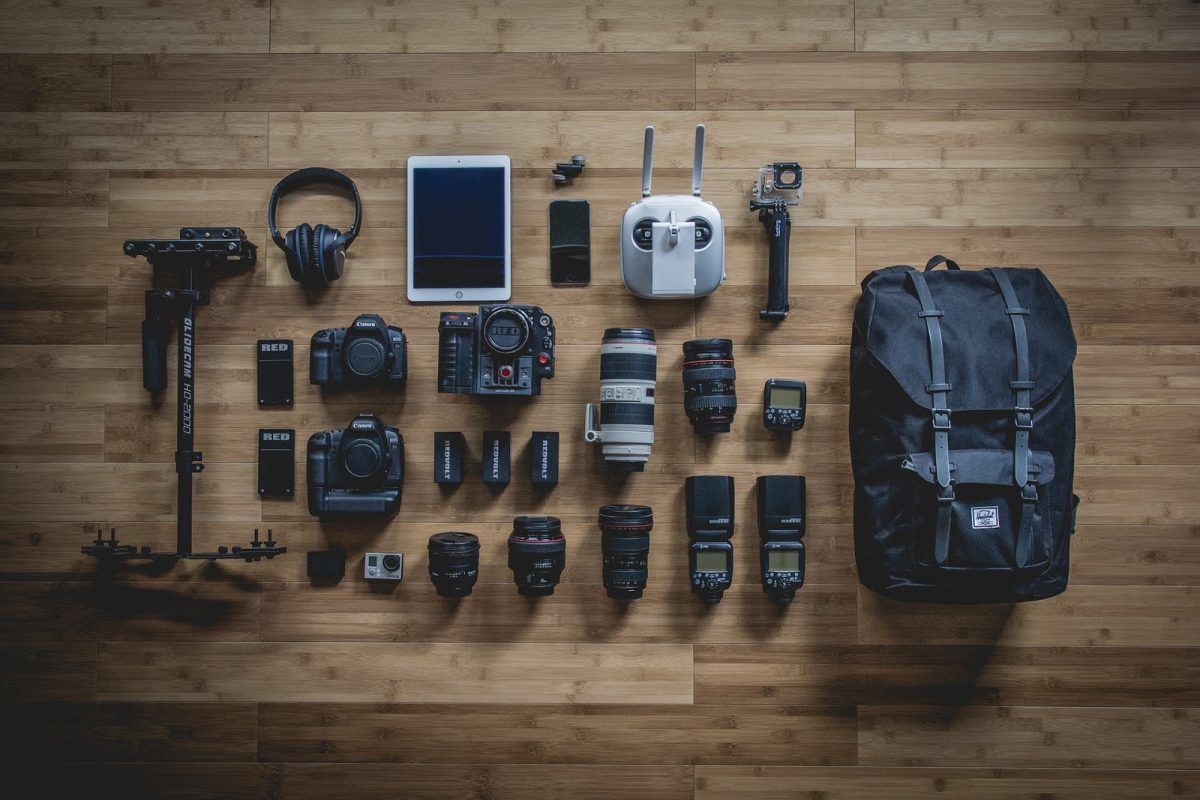
Moral of the story: shit gets heavy quick.
Photographers need to be mindful of how much space their prospective travel camera is going to take up. Yes, that full-frame DSLR takes amazing photos but are you really willing to lug all that gear around? Conversely, a pocket-sized compact camera is super easy to carry but you’re going to be ill-equipped during many photographic opportunities. Good luck shooting at night or any animals with that dinky point-and-shoot.
Consider what your needs are vs what you’re willing to sacrifice in terms of either comfort or image quality. The best cameras for traveling Europe are going to be different to those you might be happy to sit in the back of a jeep on safari with!
Those investing in a travel camera first need to think about how much they are willing to carry. Only afterwards should they consider how good the photos may be.
A good resource when considering size and weight is CameraDecision . This website will help you compare cameras and their dimensions and allows a nice visual.
Make sure you have the right backpack for your camera kit – check out the best camera bags for travel in 2024!
Sensor Size
Choosing a travel camera with an appropriately sized sensor is a crucial decision. The size of the sensor, essentially, dictates three things: 1) low light performance 2) noise control and 3) dynamic range . Now, in almost every situation a larger sensor will assuredly mean a larger camera. As always, you’ll have to weigh the benefits of having a larger sensor against the potential size and cumbersomeness of the camera.
Larger sensors are usually better in low light situations because they usually* have larger pixels.
If a sensor’s pixel is larger, it can receive more “data” – e.g light – when taking a photo. This leaves less room for informational inconsistencies, which is commonly referred to as noise. Noise visually appears as a sort of graininess and is often considered unattractive outside of certain creative situations.
To put all of this into context, a larger sensor will be better equipped to register as much light as possible even when there is very little of it. In dimly lit situations, like at night or when you’re indoors, a larger sensor will create a better, cleaner photo.
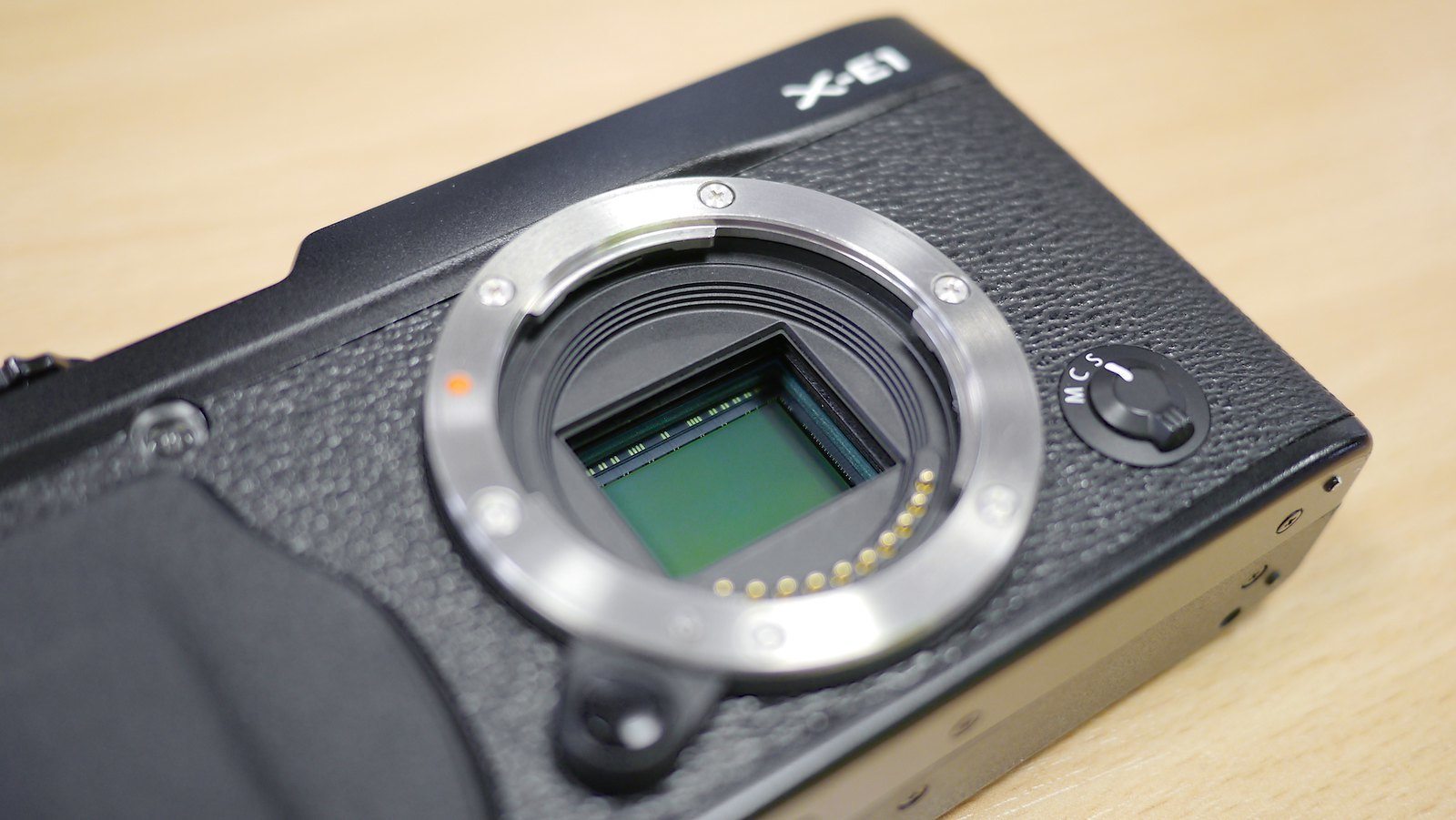
Finally, dynamic range is the extent of luminosity that your camera can record, from absolute white to black. Simply put: a sensor with better dynamic range will be able to create a better photo with highlights that aren’t washed-out and shadows that aren’t totally black.
Honestly, dynamic range is a complex and controversial subject, one that I encourage people to research. While it’s true that greater dynamic range is often indicative of a better sensor, it’s not the thing that “makes” a pretty picture. At the end of the day, good photographs come from good photographers.
Remember, the best budget camera for travelling might look ok from a distance, but might not perform up to your expectations. Sensor size matters and it costs!
* Sometimes larger sensors don’t always have larger pixels but just more pixels e.g. more megapixels.
Megapixels and File Formats
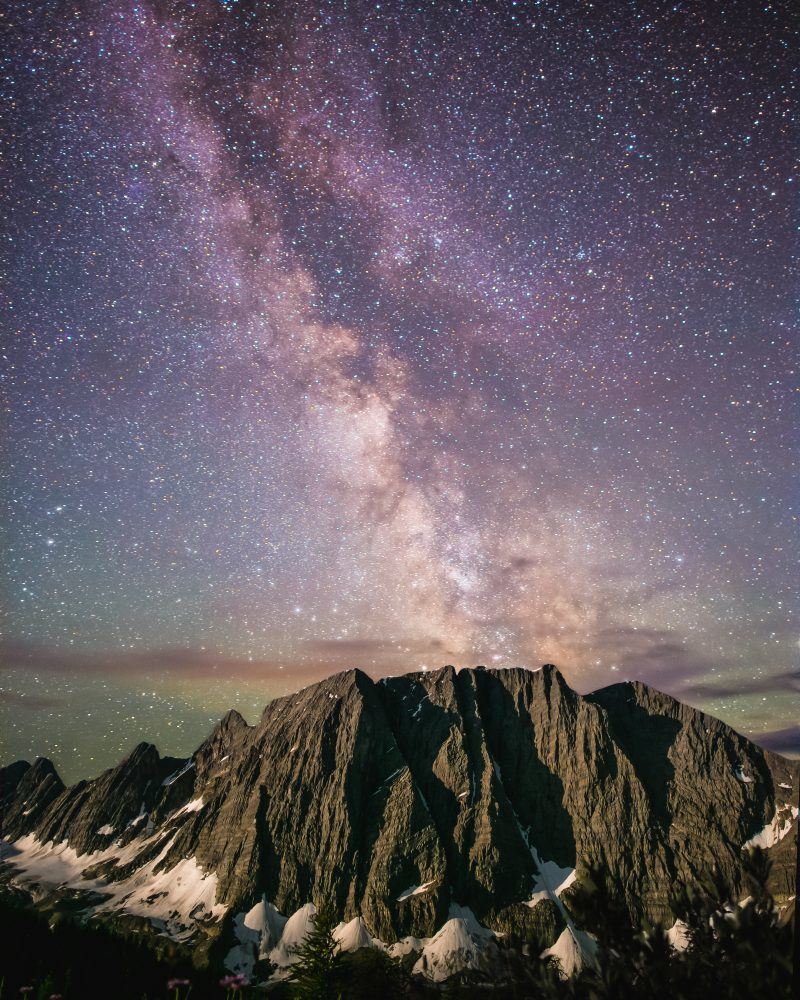
Ah yes, the eternal debate: do megapixels really matter? Many (misguided) photographers collect megapixels like they were gold bars and believe that more is better. Contrary to popular belief, megapixels actually have very little to do with the quality of the actual image. Image quality has more to do with sensor size, lens selection, and the skill of the photographer.
What megapixels do allow for is greater resolution , which comes in handy when you’re looking to make prints of your photos. The more megapixels your camera has, the larger the prints. Pretty straightforward.
If you aren’t planning on printing anything and just like to post on social media or the internet, 16MP will be fine. The average electronic file on the internet is usually around 2000 x 2000; 16 MP will yield a file that is around 4000×3000.
In post-processing, there are a couple of benefits to having more megapixels as well. Image sharpness is slightly better in larger files because of the increased resolution. With larger files, you are able to crop more without a loss of quality too. Photographers that use a Sony A7R Mk.II – with it’s 42 MP sensor – are known to abandon narrower telephoto lenses altogether because they can just crop a photo and get a relatively similar effect.
Finally, the ability to shoot in the RAW (as they say) format is also crucial if you want to professionally edit your photos. RAW files have soooooo much more data than JPEGs and can be molded in so many ways. The topic of RAW vs JPEG is a long one, which I, unfortunately, don’t have the time to get into. Instead, I’ll refer you to this wonderful explanation by SLRLounge.
Want to take gorgeous photos at night? Make sure you have a good tripod while traveling!
Lens Selections
For many photographers – including myself – this is the main reason to invest in a certain camera company. Lenses are what literally create your image and a good one can make all the difference. A high-quality lens will make your image sharper, more vivid, and more enthralling.
Lenses come in so many different shapes and sizes, from fisheye to super telephoto to medium zooms and so on. Each one of them appeals to an individual shooting style and photographer as well. Do you like to photograph epic vistas? Grab wide angle lenses so you can get as much as possible in the photo. Do you like to take pictures of people? Invest in a quick lens with a low aperture so you can create some lovely “ bokeh .”
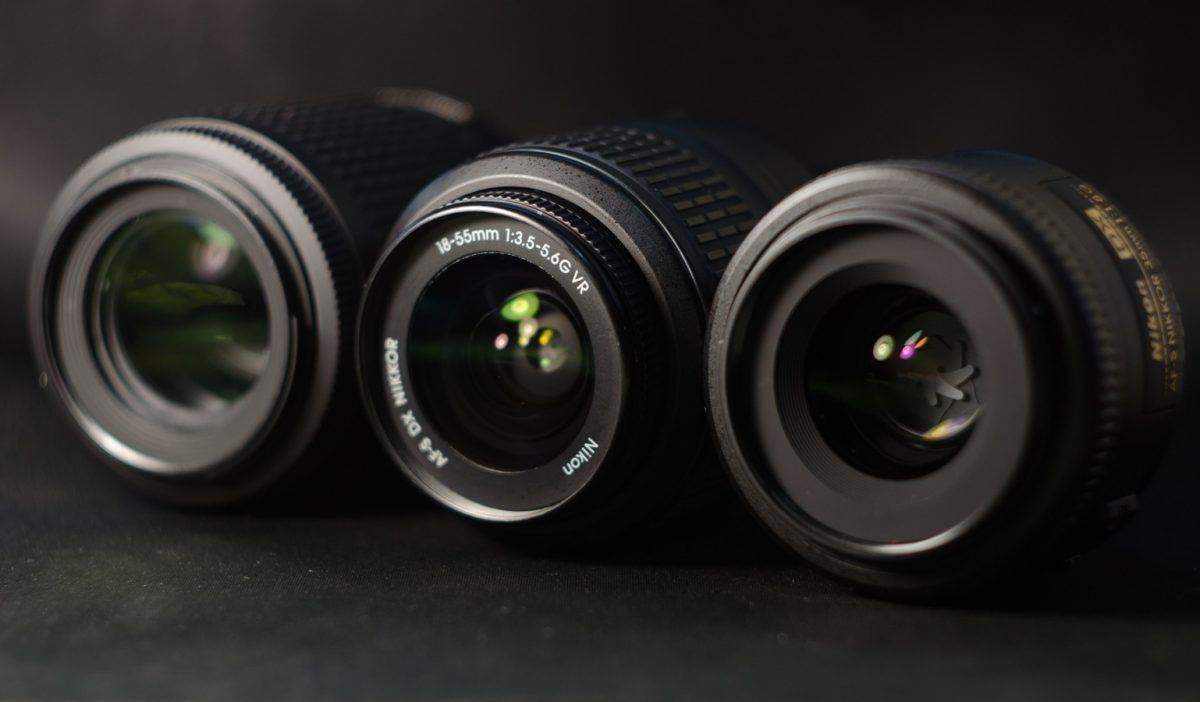
Regrettably, I can’t tell you which lenses to buy – not in this article at least. What I can do is refer you to this informative guide and then give you this advice: if you want to take certain photos and of a certain quality, then you need to buy the proper lens. Investing in a lens is just as important as investing in a camera body.
Lenses add to your pack weight though and take up space – sometimes a lot of it. I’m going to tell you right now: you probably aren’t going to have a lens for every situation unless you want your bag to weigh a ton. You need to choose only a couple that best suits you and your target pack weight.
One piece of advice I can give you is that a high-quality lens combined with an affordable travel camera is better than a cheap lens on an expensive camera.
Check out these additional articles for more on lenses!
- Best Canon Lenses for Travel
- Best Nikon Lenses for Travel
Weather and Water Proofing
Various travel cameras offer various types of protection. Some, like the Sony A7R Mark II and the Panasonic GH4, have a specially designed body that is made of moisture-repellent materials – usually magnesium – that helps resist the elements. Others, like the GoPro HERO9 and the Olympus Tough! TG-5, are completely waterproof and have all of their essential components sealed.
Whether or not you need weather sealing is really dependent on what kind of photographer you are. Obviously, you’re not going to need weather or water sealing in certain situations. Do you mostly take pictures of people and when the weather is nice? You’re probably not going to need weather sealing. Even if you get caught in the occasional rainstorm, your travel camera will be fine.
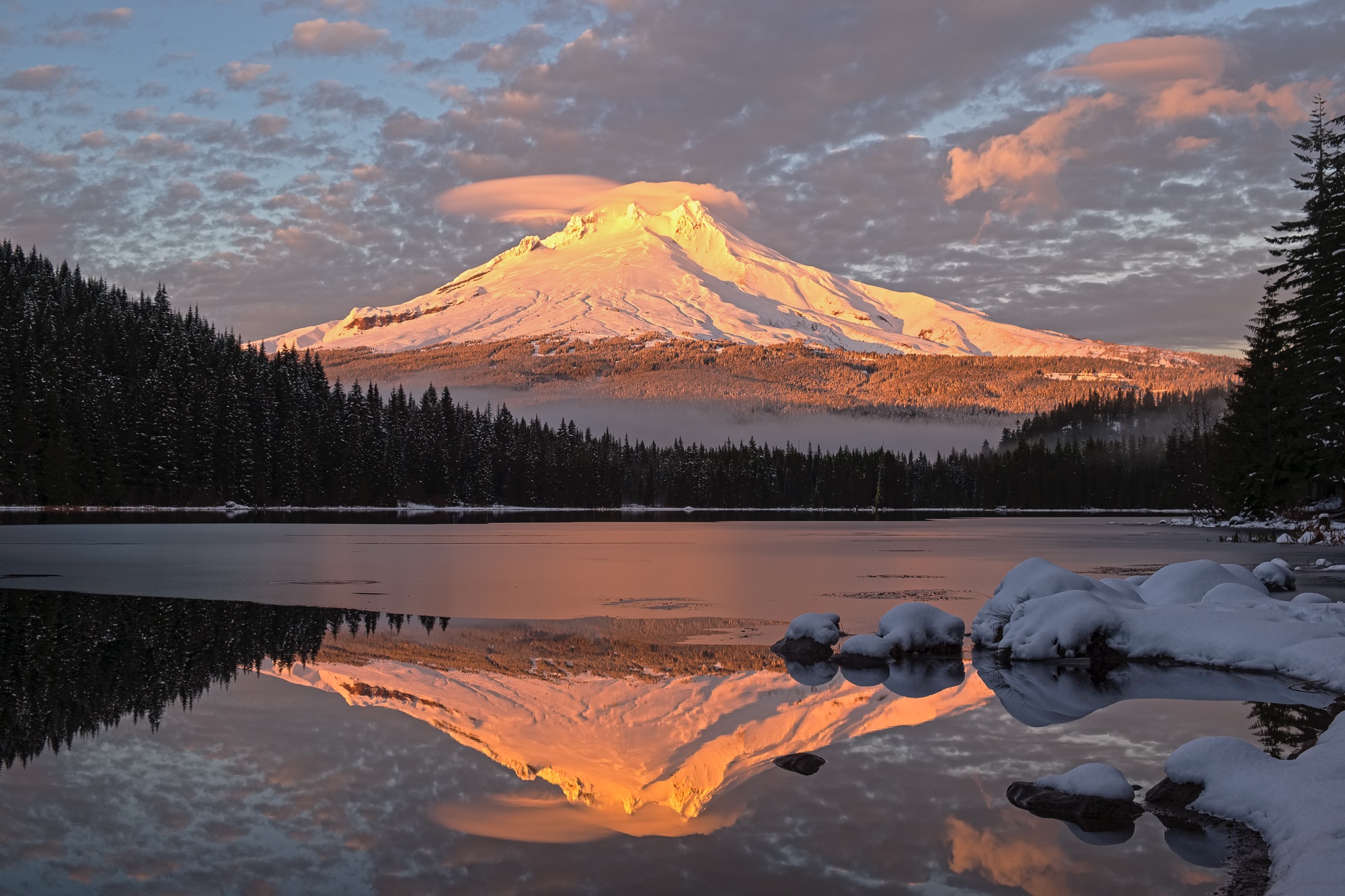
Do you go into the wilderness often and/or insist upon taking photos even the harshest of conditions? Weather sealing will probably be a benefit to you as your camera will be better suited to handle the extreme environs.
Note that weatherproofing doesn’t mean that your camera can actually be totally submerged in water. If you’re actually beating the shit out of your camera, either from overuse or misuse, you’ll probably want to invest the best waterproof travel camera that you can find; or just be more careful. Unfortunately, many of the more affordable cameras for travel might not be weather-sealed.
When using a waterproof travel camera, it’s important to remember that a camera is only as waterproof as its lens. The point where the lens mounts onto the body is very vulnerable. A proper weatherproof lens will have a rubber seal to keep water out of the lens and sensor chamber. If you’re using a lens that isn’t weatherproof, then it kind of defeats the purpose.
Functionality
A camera is only as good as the photographer that wields it. In order to get the most out your travel camera, you need to be able to understand it and use it effectively. So, when looking for the best travel camera possible, you need to ask yourself two questions: how much control do I want and how intuitive will camera x be?
If you just want an easy-to-use camera, one where you won’t have to worry about adjusting exposure or anything else that is overly complex, then invest in a good compact like the Sony Alpha a5100 or Panasonic Lumix FZ1000. You can dive deeper into the menus and settings of these cameras whenever you feel like it – don’t feel like you’re making an irreversible decision.
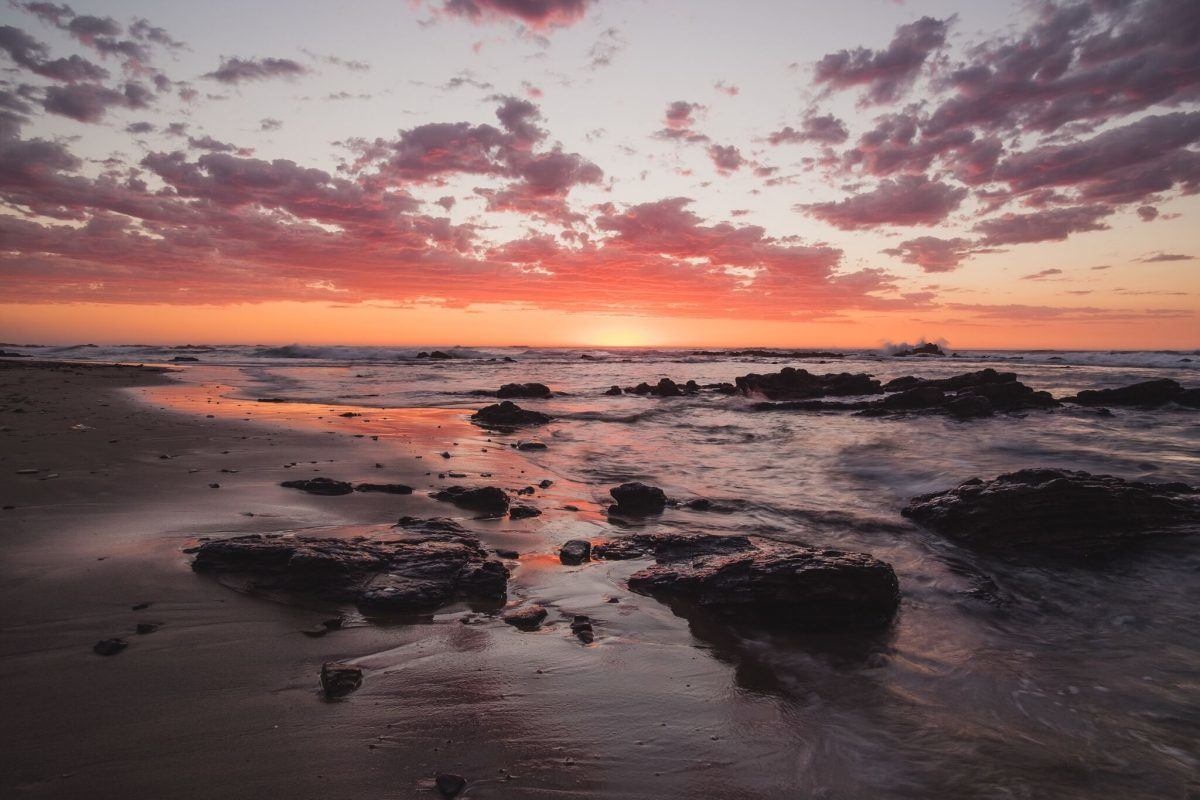
If you’re someone who considers themselves an enthusiast or even an expert and you want the best travel camera available, make sure that its controls are straightforward and intuitive. There are so many amazing cameras out there that (for some reason) have the most absurd and unreasonable controls. Painful operations make for painful shooting sessions.
These days, more and more travel cameras are developing tech that really makes photography fun and, at the same time, efficient. Features like touchscreen focusing and focus peaking are really helpful and are kind of changing the way we shoot photographs.
Regardless of your level of expertise, it will pay dividends if you learn how to use tools like these. Armed with the proper knowledge, you’ll be a pro in no time. But if you’re just starting out, the best beginner camera for travel is one that is easier to use and more importantly doesn’t feel like a chore.
Increase your camera’s capabilities by investing in the right accessories!
Video Capabilities
Most modern travel cameras have video recording capabilities that are quite impressive. Gone are the days where you had to buy a separate camcorder just to film. So reliable is the video in modern travel cameras that an increasing amount of talented videographers are using them for their professional endeavors.
Almost every travel camera offers at least HD video recording (1080p) but the most prestigious and desirable form of recording is 4k. 4k video is the highest technical level of video recording at the moment and the current industry standard. If you want the best travel camera for vlogging, then look for one with 4k recording. Just remember this costs, even the best cheap travel cameras probably won’t reach to 4K.
Now, I mentioned earlier (in the GH4 post) that just because a camera can shoot in 4k video doesn’t mean it’s good at it. There is a number of other processes involved in shooting that make a great video – fps (frames per second), stabilization, and a smooth aperture to name a few. Like functionality, getting to know the recording features of a camera will enable a whole lot. Remember: a video is only as good as the videographer.
If we’re being honest, I don’t know a whole lot about the real intricacies of filming other than the basics, which I just mentioned. What I do know is that photographers should study the video capabilities of a camera just as much as they practice still photography – admittedly, I tend to gravitate towards the latter.
Other Notable Hardware
New camera technology is constantly being developed. It seems that every other a year a new travel camera is being released that looks unlike anything else before. When digital sensors became powerful enough to make mirrorless systems possible (and reliable) it ushered in a whole new era of travel photography. Hell, experts are even talking about experimental cameras that record odor and even work in the dark .
I’m getting ahead of myself though.
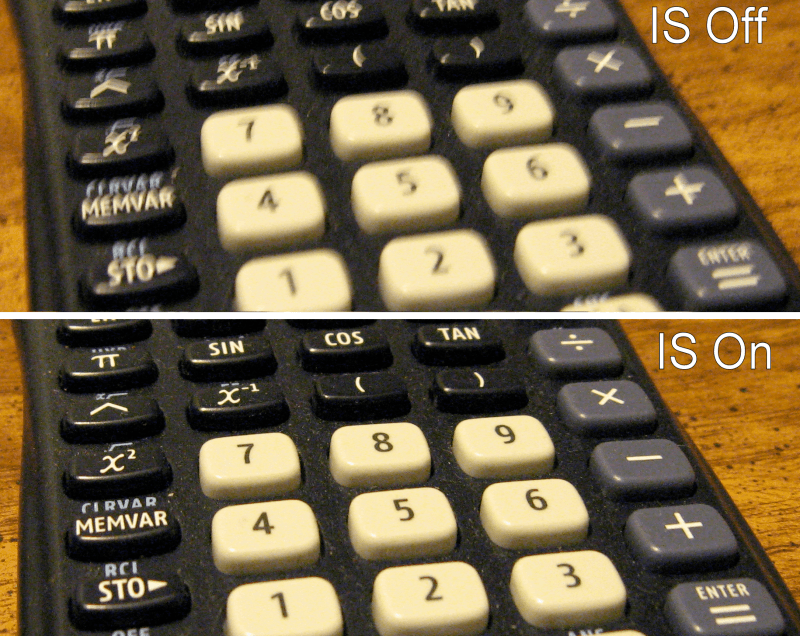
These days there are only a couple of technological innovations in photography that you should be aware of. They are as follows:
- (Internal) image stabilization – A feature that was once found mostly in certain lenses but is now incorporated into the actual camera body. Internal image stabilization limits motion caused by handshake to maximize sharpness. By building stabilization into the actual camera body, every mounted lens is, essentially, stabilized. Note that cameras with internal stabilization are almost always larger in size.
- Faster processors – Digital cameras are computers. Better processors mean faster computers. A travel camera with a more powerful processor can shoot more quickly and be subject to less lag caused by buffering. For sports and action photographers, having a quick processor is vital to their work.
- Better sensors – These days, camera manufacturers are focusing less on megapixels and more on image quality when it comes to developing sensors. People want better color and increased dynamic range in their cameras and they don’t want it to weigh a shit-ton. Progressively more compact cameras are equipped to handle harsh lighting, and this tech will only get better over time. There are even talks of a revolutionary organic sensor but that’s still a ways away.
Between the whole Broke Backpacker team, we tried out every single camera on our list ourselves. In order to fairly assess and compare these cameras, we looked at the following criteria;
User Friendliness
There are only a few team members who are serious photographers. So with that in mind, we put extra value on cameras that the regular traveller could use easily and without too much of a learning curve.
Image Quality
This one is presumably a bit of a no-brainer right? I mean let’s be honest, a camera lives and dies on image quality! After trying out a camera in various shooting locations and inspecting the images, we got a feel for the quality of the images it produces.
This one is a tricky one to judge because depending on your experience level some people love a whole heap of features, while others find them confusing. With this in mind, we’ve pondered the intended user for each camera and assessed whether the features are appropriate.
Battery Life
If you look at any camera manufacturer’s website, they will tell you how long a camera’s battery life should last for. However, in actual use, things can turn out very differently, so we made sure to put these numbers to the test ourselves.
Packed Weight
Having a great camera is awesome, but if it weighs you down all day and feels too uncomfortable on your back and shoulders, well you might just end up not wanting to take it out at all. So our team tested out how each camera actually felt both packed in your bad but also dangling around your neck all day too.
Once you’ve got that travel camera locked in, the next step is to hunt down a photogenic destination that’ll light up your IG! Let’s take you through some of the best Insta destinations on earth .
Still have some questions? No problem! We’ve listed and answered the most commonly asked questions below. Here’s what people usually want to know:
How do I choose a travel camera?
Find out what kind of photos and videos you want to shoot during your trip and choose your travel camera accordingly.
Which is the best camera for travel photography?
We highly recommend the Canon PowerShot G9X Mark II for travel photographers. It’s relatively cheap, easy to use and very reliable.
Can travel cameras shoot professional photos and videos?
While travel cameras offer incredible specs, to shoot professionally, you will have to upgrade to a more serious and more expensive camera.
What is the best vlogging travel camera?
The Panasonic Lumix GH4 is known to shoot some of the best photos and videos on the travel camera market, which is exactly what vloggers need during their adventures.

Our GREATEST Travel Secrets…
Pop your email here & get the original Broke Backpacker Bible for FREE.
Final Thoughts
Travel photography is not an exclusive art. Good travel photos are not made by fancy technology or cutting-edge features but by people that have vision. The most important thing you can own is an eye for the evocative and a sense for the thrilling. Anyone – and I mean, anyone – can develop the skill to be a world-class travel photographer!
The key to becoming a great photographer is finding the best travel camera possible. I don’t mean the camera that has the best sensor or the best video capabilities or whatever – I mean the best camera for you.
Each individual camera is better suited to each individual photographer. Some excel with a big ol’ DSLR in their hands and some like a compact that they can run around with. Equally a cheap travel camera might leave you disappointed once you get home. So choose wisely!
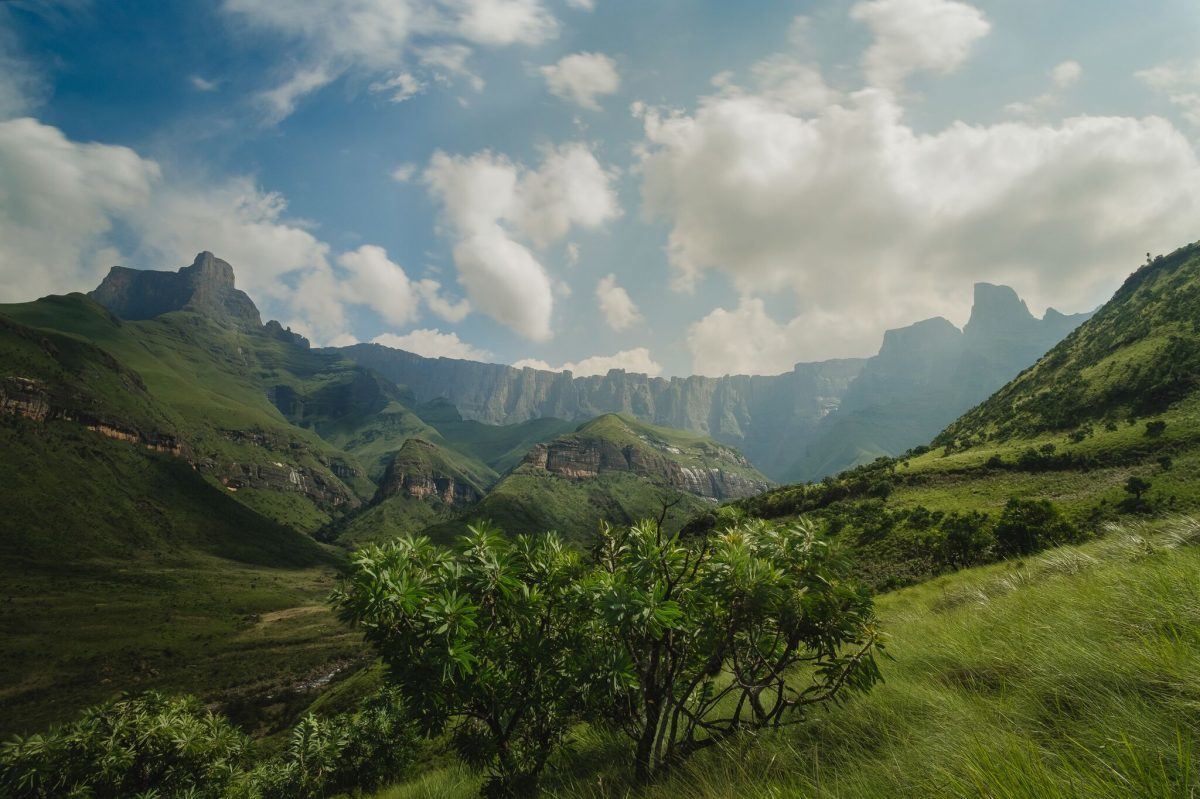
So my advice to anyone looking for the best travel camera is this: don’t worry so much about the specs or what you see other people doing – just go out there, find something you like, and start shooting. You may end up juggling a few different systems but I guarantee you that you’ll enjoy doing it. In the end, you’ll have the right camera, no matter what.
Happy shooting, everyone!

Share or save this post

14 Comments
I recommend my wearable hands free camera. Perfect for travelers who want to capture their moment in HD, built in stabilizer, large field of view, USB charger, attractive to wear and under $250.
Stupendo sito e ottime recensioni. Ma Sony A7III è forse il top. Quest’anno in America Latina con Batis 18mm e una Sony RX10M3 che ha lo zoom fino a 600mm . con luce la RX è fantastica, pesa poco, e ha una resa perfetta e si scatta anche senza cavalletto. La mia compagna con Sony A7III e il 24-105 f4 sempre Sony ha scattato per un mese sia paesaggi che ritratti. Complimenti
I recommend the Fuji X-T30 if you want great shots and short, high quality videos. It’s an upgrade to the X-T20 and produces excellent shots, the best I’ve seen from an APS-C camera. After years of caring around large cameras like the Sony full frames and even larger Canon EOS 5D mark II, I’ve learned that small is important, especially if traveling in theft prone areas. For most uses, especially non high end, the smaller sensor is not that big an issue. The X-T20 is a bargain if your budget is limited get this camera.
Thank you very much for this camera information.
This is a great post! With so many cameras on the market, it’s really hard to know which one is the best. It is so important to have a reliable camera when you are travelling as well, you’ll be making memories which will last a lifetime and you need a camera that will be easy to carry and take great pics!
Normally I would take my iPhone for photos – however I want to do a long treck with no possibility of recharging the phone/camera for 2 weeks – can take a spare battery (for a camera) but don’t want to take several. What camera would you suggest? Will be backpacking so has to be small (and simply – I can’t be faffing with tiny dials on a Lumix – since without my glasses I can’t see what I’m doing). Thanks
The Nikons are epic cameras and that’s what I’m shooting on now – the Nikon D5500, highly recommend it 🙂
Thanks for sharing the list! Think I will stick with a GoPro, and stick it underwater.
Great tips you shared to captured stunning photos. Camera and phones which you mention in that post have good specification. Apple phones are best.
Nice read Will, went with your advice and opted for the Go-Pro, size and portability being the obvious plus points.
Thanks for this amazing post, these are the cool cameras which every traveler wants in life.
This is such a fantastic article. So in depth. I’m trying to upgrade from my iPhone and it’s so confusing! Thanks for putting it together.
Chanced upon this article while researching for a new camera to invest in for my travels. Thanks for writing this guide, it definitely narrowed down my choices of cameras to buy!
What do you think of the Nikon D3400? I ask because I just bought it recently and I really didn’t have much money to spend (under $600 was best). I’m getting better at taking pictures and editing with it. Do you know of any cheaper lenses for a Nikon camera? I have two already but wouldn’t mind venturing out to get more (under $1,000 would be preferable). Thanks!
Leave a Reply Cancel reply
Your email address will not be published. Required fields are marked *
Save my name, email, and website in this browser for the next time I comment.
Notify me of followup comments via e-mail.
- Reviews TV REVIEWS v1.11 HEADPHONES REVIEWS v1.7 MONITOR REVIEWS v2.0 SOUNDBAR REVIEWS v1.3 MOUSE REVIEWS v1.5 KEYBOARD REVIEWS v1.3.1 PRINTER REVIEWS v1.2 VACUUM REVIEWS v1.3 PROJECTOR REVIEWS v0.8 TOASTER REVIEWS v1.0 BLENDER REVIEWS v1.0 KEYBOARD SWITCH REVIEWS v1.0 SPEAKER REVIEWS v0.8 CAMERA REVIEWS v0.12.1 LAPTOP REVIEWS v0.8.2
- In Progress
- Newsletters
- Mirrorless For Travel
- Table of Contents
- Best Camera
- Best Full Frame
- Best Upper Mid-Range
- Best Mid-Range
- Best Budget
- Best Vlogging
Notable Mentions
Recent updates, all reviews, the 6 best mirrorless cameras for travel - spring 2024 reviews.

As is often the case, the best camera for the job is usually the one you've already got on you, and that's especially true when you're traveling and likely don't have the space to pack a bulky camera kit. A smartphone will suffice for most people, especially since modern smartphone cameras can get more impressive by the year. But if you want to take your travel photography to the next level, a mirrorless interchangeable lens camera will get you there. While the battery life on mirrorless cameras isn't as strong as their DSLR counterparts, they're tough to beat on portability, making them great travel cameras if you want the versatility of shooting with different lenses.
We've bought and tested over 100 cameras in our lab, and below, you'll find our recommendations for the best mirrorless cameras for travel. If you'd prefer a fixed-lens compact camera, check out our best compact cameras for travel instead. You can also check out our top vlogging cameras if you're a travel vlogger. Or, if you want a mirrorless camera for use beyond just traveling, see our recommendations for the best mirrorless cameras overall.
Best Mirrorless Camera For Travel

Among mirrorless options, the Fujifilm X-T5 stands out as one of the best for travel photography. It's aimed at enthusiast photographers, with old-school exposure dials that make it easy to adjust settings on the go. It also has a relatively portable, lightweight design and sturdy build quality, with weather-sealing for added peace of mind when shooting in adverse weather. Beyond its sleek exterior, it also comes equipped with one of the highest-resolution APS-C sensors on the market, at 40 megapixels, capturing stunning levels of detail and giving you plenty of leeway to crop your photos.
If that wasn't enough, it has excellent battery life for a mirrorless model and features Fujifilm's most advanced autofocus system, with intuitive AF tracking and subject detection for a wide range of subjects, including people, birds, and vehicles. Overall, the X-T5's combination of image quality, portability, and photography-first design make it our top pick for the intrepid travel photographer.
See our review
Best Full Frame Mirrorless Camera For Travel

If image quality is your top priority, the Sony α7C is hard to beat for high-level travel photography. It's one of the most compact full-frame bodies on the market, proving that portability and image quality aren't mutually exclusive. While full-frame lenses are still bigger than APS-C or Micro Four Thirds alternatives, the compact body helps make a more portable kit, especially if you stick to smaller prime lenses. Its compact size does mean fewer custom buttons and an uncomfortably small viewfinder; however, these are small sacrifices to make if you need portability but still want the best possible image quality.
The camera's real selling point is its excellent full-frame sensor, which can capture beautiful images—from busy street scenes in European cities to breathtaking landscapes in the mountains of South America or anything in between. That said, the camera's now been succeeded by the Sony α7C II , which boasts a higher-resolution sensor and more advanced video features, but it's more expensive. Overall, the α7C performs on par for photography, so it's a better deal for most travelers.
Best Upper Mid-Range Mirrorless Camera For Travel

Micro Four Thirds (MFT) models like the OM SYSTEM OM-5 are practically made for travel photography. Though there's a slight trade-off in low light capability with an MFT sensor, you can still get excellent images out of this camera. It also has some neat computational photography features, like a high-resolution composite mode to capture stunningly detailed landscapes. Plus, the MFT system has a well-established lineup of lenses, including more compact options that'll make for a more portable overall kit.
On top of that, the OM-5 is weather-sealed and ruggedly built, giving you some peace of mind while traveling. Built-in image stabilization allows you to get clear shots at slower shutter speeds, and the camera has a decent autofocus system, though it falls short of the standard set by brands like Sony and Canon. Battery life is also underwhelming, but this model is still a sure bet if you're looking for a portable and feature-rich camera system at a reasonable price point. If you can find it for cheaper, the older Olympus OM-D E-M5 Mark III offers near-identical performance, though it uses an older sensor and lacks a few extra features found on the OM-5, like 'Live ND' mode.
Best Mid-Range Mirrorless Camera For Travel

The Fujifilm X-T30 II doesn't offer too many upgrades over the original Fujifilm X-T30 , but if it ain't broke, why fix it? As far as mid-range options go, the X-T30 II is an excellent choice with a super portable body. Like the higher-end Fujifilm X-T5 , it has a sleek retro-inspired design with the same old-school exposure dials, giving you more hands-on control over camera settings on the fly.
The camera's APS-C sensor captures excellent image quality straight out of the camera. And while competitors like the Sony α6400 (or one of its α6x00 series siblings) might have better autofocus, the combination of physical controls and Fuji's film simulation profiles make the Fujifilm a blast to shoot with. Throw in a solid selection of fast prime lenses, and you've got a great camera for travel photography, particularly if you're interested in capturing people or street scenes. That said, unlike the OM SYSTEM OM-5 mentioned above, there's no IBIS here, and the camera is less versatile for videos and vlogs because of its tilt screen.
Best Budget Mirrorless Camera For Travel

If you're on a tighter budget, the small and mighty Olympus OM-D E-M10 Mark IV offers a ton of value for its price. Like its higher-end sibling above, it uses an MFT sensor, making for a more portable overall kit with a budget-friendly price tag. It's a great option for beginners, with simple controls and plenty of creative shooting modes that allow you to play with different photography styles.
Beyond that, this is one of the few cameras at this price point with in-body image stabilization, which can help reduce camera shake in videos or make it easier to get clear handheld shots at slower shutter speeds. That said, this model doesn't have the most reliable autofocus, so if that's important to you, the Canon EOS R50 is a good alternative with a larger APS-C sensor and a more effective AF system. Just be aware that there are fewer lens options for Canon's RF mount, and the lenses are generally bigger.
Best Mirrorless Camera For Travel Vlogging
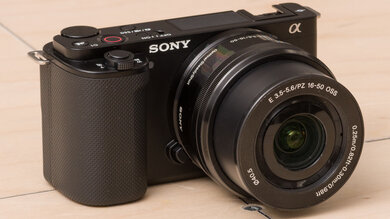
If you're more inclined to shoot videos while traveling, consider a vlogging camera like the Sony ZV-E10. It's small and lightweight, so it's easy to toss into a bag and take on the go. While it doesn't have a viewfinder like the Olympus OM-D E-M10 Mark IV , its fully articulated screen is perfect for vlogging, allowing you to monitor yourself while shooting. It has vlogging-friendly features like a detachable windscreen to reduce ambient noise, specialized focus modes, and a great battery life.
It's worth noting that the camera doesn't have built-in stabilization, and its e-stabilization feature can introduce a distracting wobble effect, so you're better off using an optically stabilized lens if you want to keep the camera shake to a minimum. Otherwise, the ZV-E10's relatively low price, convenient size, and solid video features make this the ideal mirrorless camera for travel vlogging.
- Fujifilm X-T4: The Fujifilm X-T4 is the predecessor to the Fujifilm X-T5, and though it's a tad heavier, it's a great choice if you want to save money, offering many of the same advantages. That said, it uses an older processor and lower-resolution sensor and has a less reliable autofocus system. See our review
- OM SYSTEM OM-1: The OM SYSTEM OM-1 is a fantastic Micro Four Thirds camera. It's more rugged and better built than the OM SYSTEM OM-5, but it's also pricier and likely overkill for most people. See our review
Mar 20, 2024: We've reviewed the article to ensure the picks and text are up to date.
Jan 26, 2024: Replaced the Olympus OM-D E-M5 Mark III with the OM SYSTEM OM-5, as it's more widely available.
Oct 27, 2023: Added mention of the Sony α7C II to flesh out the market context for the Sony a7C.
Aug 31, 2023: Added the Fujifilm X-T5 as the 'Best Mirrorless Camera For Travel' and shifted the Olympus OM-D E-M5 Mark III down to the upper mid-range spot.
Jul 06, 2023: Renamed the Sony a7C to 'Best Full Frame Mirrorless Camera For Travel' and replaced it with the Olympus OM-D E-M5 Mark III.
Our recommendations above are what we think are currently the best mirrorless cameras for travel for most people to buy, according to their needs. We factor in the price, feedback from our visitors, and availability (no cameras that are difficult to find or almost out of stock in the U.S.).
If you'd like to choose for yourself, here's the list of all our interchangeable-lens mirrorless camera reviews, ranked by their suitability for travel photography. Be careful not to get caught up in the details. There is no single perfect camera. Personal taste, preference, and shooting habits will matter more in your selection.
Finding the Universe
Travel tales, photography and a dash of humor
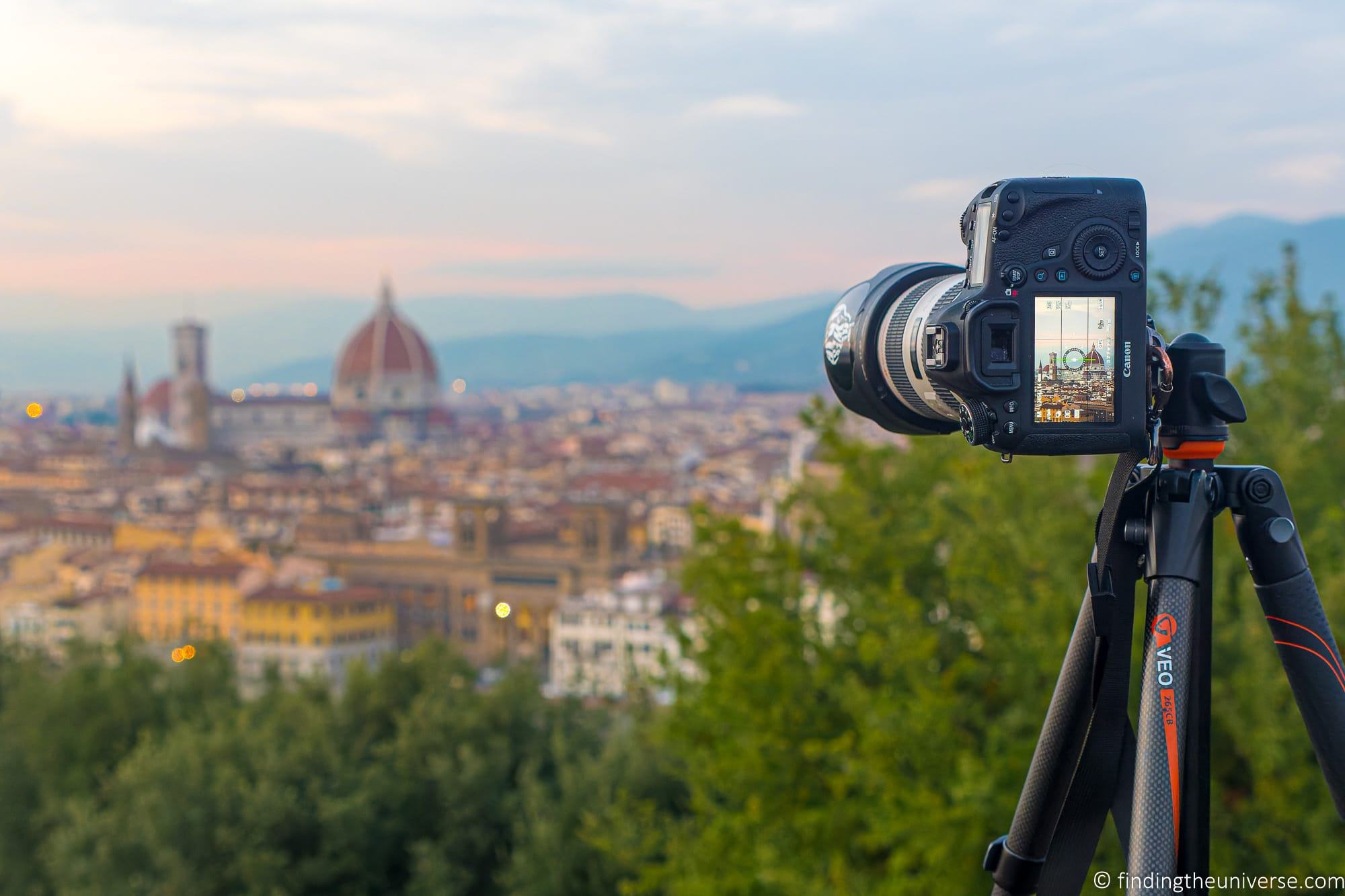
The Best Travel Camera: Compact, DSLR, Mirrorless & Phone!
Last updated: April 7, 2024 . Written by Laurence Norah - 167 Comments
I’m a professional travel photographer, and one of the most popular questions I’m asked by readers and students on my travel photography course is what the best travel camera is.
With that in mind, I wanted to put together a definitive (and regularly updated) guide to the best travel camera out there.
This guide covers everything you need to know to help you choose the best camera for travel, based on your needs and budget, as well as a guide to all my favourite cameras.
This is a detailed post, in which I’m going to cover my top picks for the best camera across a range of categories, including smartphones, compact cameras, mirrorless cameras and DSLR cameras, to name just some of the options.
These travel camera picks will suit a wide range of budgets, needs, and expertise levels. Our picks are ordered in approximate order of budget, from lower budget models through to higher end models.
I’m also going to go through in detail what you need to look for when buying a camera for travelling, and why each specification is important, so you can make the best choice for you.
Remember, the best camera for travel is going to be very dependent on your needs and situation, but after reading this post you should be able to pick the right camera for you – even if it’s not one we suggest!
I also have a guide to the best cameras for hiking and backpacking which contains some different options specific to those requirements, as well as a guide to the best action cameras .
This guide will also work if you are looking to buy a camera for someone else, and I recommend taking a look at our photography gift guide for more ideas of what to buy a photographer too.
Now, before we dive into individual travel camera recommendations, let’s get started by looking at what you need to think about when picking a camera for travel.
I think this is essential reading, as understanding what you are looking for when buying a camera will help you make a truly informed decision.
What To Consider When Picking A Travel Camera
Budget – how much do you have to spend on a travel camera.
This is an important one. Cameras vary wildly in price, from a couple of hundred dollars up to thousands of dollars. So you definitely need to think about how much you want to spend.
Also, this is a travel camera. Whilst you want to get the best shots, travel can expose you to risks, from loss to theft. Obviously, these are things that can be mitigated against with insurance, but it’s something to bear in mind when making an investment – the more pricey the camera, the higher the insurance premium.
Finally, don’t forget that the camera is only a part of the puzzle. You will also need things like memory cards, spare batteries, lenses – as well as possibly a tripod and filters. Your needs will vary, but don’t forget to include them in your overall budget – I’ve written a post on travel photography accessories to give you some pointers, as well as a guide to picking the best lens for travel photography .
Weight – How much are you willing to carry around?
This is a really important question. If you’re the kind of person who likes to travel light, then you’re not going to want a bulky DSLR. Having the best travel camera that sits in your hotel room while you’re out having fun isn’t going to be much use.
Even a mirrorless system might be too much for you if you want something that will truly fit in your pocket or purse, and your best bet is probably a smartphone or compact camera.
On the other hand, if image quality and low-light performance are more important to you than weight, and you’re happy carrying spare lenses, filters, and other accessories, then you’ll likely be looking at a mirrorless or DSLR system.
Remember, as a general rule of thumb, the bigger the camera, the more room it has for a larger sensor. A larger sensor means the camera can capture more light, which means you’ll get sharper, cleaner images even when shooting in darker situations.
Use – What are you going to be taking pictures of?
The type of photography you’re going to be doing makes a big different to the type of travel camera you will be buying. If your main goal is to take nice travel photos for your albums, social media, and to post to friends and family online, then any of the camera types will likely do the job.
However, if you’re going to be doing a lot of action photography, or need the camera to be fully waterproof, then something like a GoPro is going to be the best option.
If you like astrophotography, you’re going to need a camera with a big sensor to let in plenty of light and you might want to invest in a DSLR. Conversely, if you just want a general purpose camera with plenty of flexibility for a variety of travel scenes, from food to landscapes to people, then something like a mirrorless system will most likely be best, offering the best performance for the weight.
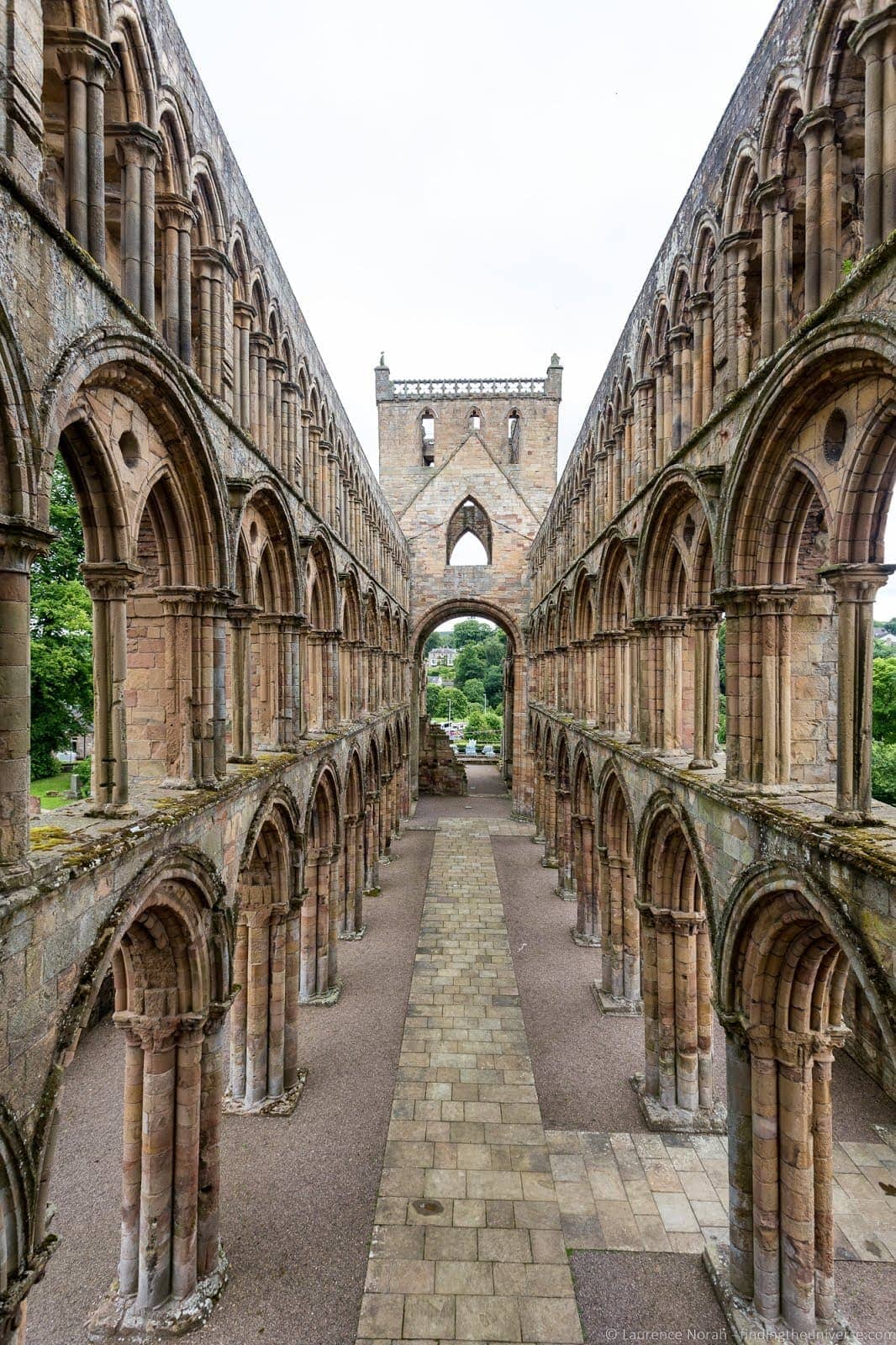
Extra features to look for in a Travel Camera
A lot of cameras these days come with extra features that you may or may not care about. I’m talking about touchscreen interfaces, built-in GPS, WiFi, weather resistance, pivoting screens, and so on.
The main features you should be looking at in terms of actual image quality are the sensor size, aperture range, level of manual control, and, for cameras without an interchangeable lens, the optical zoom. Beyond that, which features you are interested in depend on your needs.
For example, you may also want to take videos with your camera. Some cameras are much better at video than others – notably Panasonic’s range of Lumix cameras are known for their video performance.
Personally, I love having a camera with GPS and WiFi capabilities so I can easily remember where my shots were taken, plus I can remote control my camera from my smartphone. On the other hand, a touchable, pivoting screen isn’t a deal breaker for me.
What works for me might not work for you though, so think about which features are important to you when making a purchasing decision. The best camera for travel photography definitely varies from person to person, but hopefully the information in this post will help you make the right decision.
Photography Terminology to Know When Buying a Camera for Travel
Like any subject, photography brings with it a raft of terminology – some of it is important to know about, other things are manufacturer buzzwords that don’t really make any difference to your photography. Here are the important terms to look for when buying a camera for travel, and what they mean.
Aperture. The aperture is the hole in the lens that lets light in, and is one side of the exposure triangle . Aperture is measured in numbers, with an “f” preceding the number, for example, f/1.8, f/2.2. The smaller the number after the “f”, the bigger the hole, and the more light that gets in. Look for smaller numbers, which will let you get better pictures even when there is less light available, and also allow you to better control depth of field .
Optical zoom. This represents the difference between the smallest and largest magnification that the camera’s lens can achieve. So a camera with a 10x optical zoom can make objects seem 10x bigger in the image compared to when the camera is zoomed out.
Digital zoom. A totally pointless feature that some manufacturers add to their cameras. It’s basically a software zoom – the same effect you get if you zoom in on your PC or smartphone when you have an image. Avoid using it.
Focal length. Focal length is the proper photography term for optical zoom, and is a standard across lenses and manufactures. Optical zoom is an easy to understand number that you will find in point and shoot cameras. Focal length, measured in mm, is the number you will find on cameras with interchangeable lenses. The bigger the focal length, the more magnification the lens offers.
EVF. An electronic viewfinder. This means that the camera has a viewfinder, but rather than being a glass based version that shows the scene in front of you as your eye sees it, instead there’s a small electronic screen which shows what the camera sensor is seeing – the same as the display on the back of the camera. You generally only find these on high end mirrorless cameras.
Megapixels. Megapixels just refers to the number of pixels the camera’s sensor has. Mega means million. So 12 megapixels is 12 million pixels, and would be an image 4000 pixels wide and 3000 pixels high. 4000 * 3000 = 12 million.
Thankfully, manufacturers are nearly over the megapixel war, which is a good thing, because as long as you have over about 12 megapixels, you’re good to go. In some cases, such as smartphones, less megapixels is actually better, as you’ll probably get better low-light performance as each pixel on the sensor might be bigger. But yes, unless you’re planning on printing out your images on billboard sized canvases, you can essentially ignore the megapixel marketing.
OIS / EIS. These are image stabilisation technologies, either Optical Image Stabilisation (OIS) or Electronic Image Stabilisation (EIS). OIS is found in a number of camera and lens systems, and a small number of smartphones, and is a mechanical system that compensates for small movements of the camera system, such as your hand. EIS is generally only found in smartphones, and is a software solution for motion compensation. OIS generally achieves better results.
Sensor size. The size of the sensor inside a camera is one of the most important specifications to be aware of. The bigger the sensor, the more light it can capture, and so the better it will perform in conditions where there is less light.
Sensor sizes range from tiny, such as those found in smartphones, and generally increase in size as the size of the camera increases. Here’s a diagram to show different sensor sizes, and you can read more about different formats here .
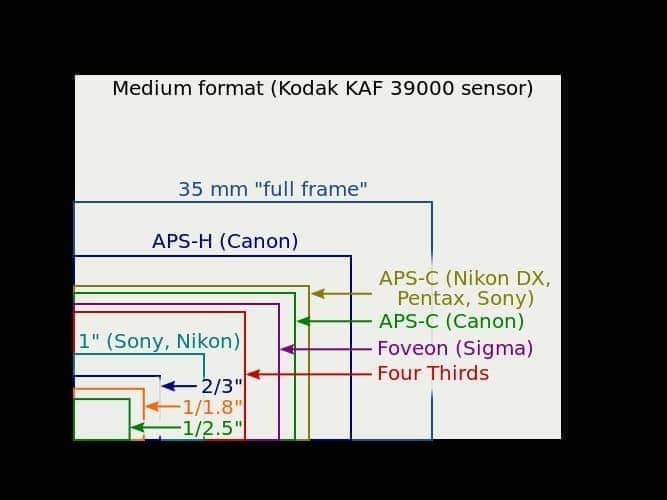
Do be aware that manufactures can be a bit sneaky when it comes to describing sensor sizes, particularly in compact cameras. They might for example, talk about having a “1-inch” sensor.
This refers to the type of sensor, rather than it’s physical size. So whilst a 1/2.3 inch sensor is smaller than a 1-inch sensor, neither sensor is actually close to 1/2.3 inch or 1 inch. See more on how physical sensor sizes map to actual sensor sizes here .
RAW. RAW is a file format that more advanced cameras use, allowing you to save the unmodified image data that the camera has captured, rather than the edited JPG version.
This gives you much greater control over the final look of your images, with the downside that file sizes are much bigger, and you have to edit them on your computer in an image editing program before you can use them anywhere.
Many cameras give you the option to shoot in RAW, JPEG/JPG, or to shoot in both. We recommend shooting in both even if you plan only to use the JPG version for now – in the future as your photography skills develop, you’ll be pleased to have the option to go back and edit the original RAW files. You can find out more about RAW in my guide to RAW in photography .
If you are interested in learning more about photography and understanding in detail all the terms above and how they affect your shots, check out my travel photography course , which has all the photography answers you need.
The Best Travel Camera
I’ve divided this list into the different types of camera for travel, with some information on what to look for in each category. I will keep this post updated with the latest travel camera options as they are released. You can see the last date of update at the top of the post.
Each section has a series of the best travel camera recommendations ordered approximately by price, from lowest to highest. Note that prices change and sales occur, which is why we link you to the relevant pages on Amazon and other camera retailers for up to date pricing information.
This should give you everything you need to know to help you make a decision on which would be the best travel camera for you to buy, based on your budget, usage scenario and luggage space.
Best Smartphones for Photography
Why pick a smartphone for travel photography.
If you care about portability, ease of use, and not having to carry another device around with you, then my advice is to get a smartphone with a decent camera, and just use that.
A smartphone can certainly make for a good travel camera, and the latest smartphones take excellent photos in a wide variety of situations.
They also have more features than your average small travel camera – you can share the images directly from the smartphone to your favourite social media platforms, plus have them automatically back up to the cloud as you go using something like the Google Photos app.
In addition, since a smartphone is a device that nearly all of us will be travelling with anyway, choosing one which takes good photos is a cost-effective way of buying a camera.
The main disadvantages are the lack of lens options, reduced manual controls, and generally poor performance in low-light due to the small sensor. But if you want something you’re always going to have on you, a smartphone is hard to beat.
Finally, I’d also add that it’s worth picking a smartphone with a good camera even if you plan on buying a standalone camera. It will serve as a good backup, and you are likely to always have it on you.
What to Look for When Buying a Smartphone for Travel Photography
Manufacturers are fairly inventive when it comes to squeezing tech into tiny smartphone bodies, but obviously there’s a limit to what can be achieved in such a small form factor.
Features to look out for include a wide aperture, which will let more light in, and let you capture shots in low light conditions. Another good feature is an optical zoom, which will let you capture images of further away subjects. This is usually achieved either with a clever nifty periscope zoom, or through the use of multiple cameras as different focal lengths.
Some smartphone manufacturers talk about having bigger pixel sizes. This relates to the physical size of the pixels on the sensor, a number measured in µm, or micrometers. Larger pixel sizes are good as they are more light sensitive and help low light performance.
Speaking of pixels, be wary of high megapixel numbers. In my opinion, anything above 16MP is a warning sign that the manufacturer is trying to win you over with high numbers – you really want less megapixels, as each pixel can then be bigger to capture more light.
Other features to look out for are some form of stabilisation, either optical or electronic, which will let you get photos in lower light and compensate for your hand movement. Better smartphones will have more manual controls to give you more options for your photos. There are different types of focusing system, but I’ve never found a lot of variation between them. Waterproofing can be a benefit, meaning you can get photos in the rain or at the beach.
Also if you plan to travel internationally with your phone a lot, try to choose an unlocked phone so you can put a foreign SIM card in, and that works on multiple frequencies so you still get 3G, LTE/4G and 5G (for more recent phones). That means you can still easily use it to call, text, and get online when travelling internationally. Here’s an excellent resource for finding out which phones work on which networks in which countries.
The Best Smartphone for Travel Photography
Here are five suggestions for current phones which I think are some of the best smartphones for travel photography and should definitely at least get you started in your search. Prices are for the unlocked version of the phones, you might be able to get a better deal through a carrier on a contract.
1. Google Pixel 8

Launched in late 2023, the Google Pixel 8 and Pixel 8 Pro offer a combination of reasonable price and excellent camera performance. They can take great pictures in the majority of lighting situations, including in low light, when it switches into a low light mode.
Most users will likely be happy with the Pixel 8 version. This comes with a 50MP wide angle camera (which outputs 12.5MP images) and a 12MP ultrawide camera, as well as an 8MP front facing camera. It comes with a 1/1.31” sensor and a f/1.7 aperture. The wide-angle camera has 1.2µm pixels, whilst the ultrawide uses 1.25µm pixels
You also get 4K video support as well as built-in image stabilization. The standard Pixel has no optical zoom, but it does support shooting in RAW. Being a smartphone, it has a touchscreen, and it’s also water resistant.
You can also upgrade to the Pixel 8 Pro if you want an additional 5x telephoto lens, although it does cost a bit more.
This would be our pick for the best reasonably priced smartphone for travel photography.
Check latest price here .
2. Fairphone 5
Since 2013, Fairphone have been manufacturing smartphones that are fairly made. What does that mean? Well, the idea is that the production of their devices is made in a sustainable way, with practices that benefit everyone involved.
That includes the people involved in everything from the mining of the materials that go into the phone, through to you, the consumer. Over the years, smartphones have become increasingly hard for consumers to repair, with the industry moving towards a more disposable model.
Fairphone wants to change that, with phones that are user repairable and upgradeable, as well as relatively affordable.
Now, to be honest, the first few phones from FairPhone weren’t class leading. Building a device that meets all their requirements is tough. But they have continued, and the latest iteration, the Fairphone 5, is actually solid performer when it comes to general use, and also as a camera.
You get two main cameras. The first is a 50MP f/1.9 aperture camera with a 1/1.56″ sensor, 1 μm pixels and optical image stabilization. The second is an ultrawide 50MP with an f/2.2 aperture, 0.7um pixels and a 1/2.51″ sensor.
Now, the image quality from other phones on our list will be marginally better, but the green and environmental credentials of the Fairphone are world leading for smartphones.
3. Samsung Galaxy S23 Ultra

Samsung’s flagship Galaxy phones are known for their superior photography capabilities, and the 2023 Galaxy S23 Ultra is no exception.
You get four rear mounted lenses, a boggling 200MP f/1.7 wide angle, a telephoto 10MP f/4.9, a second telephoto 10MP f/2.4 and an ultrawide 12MP f/2.2.
This range of lenses gives you a 10x optical zoom, as well as impressive digital zoom capabilities which go all the way up to 100x! The front facing camera is no slouch either, offering a 12MP f/2.2 wide angle.
Pair that with pixel sizes from 0.6µm-1.4µm pixels and OIS – all packaged in a water-resistant smartphone, it’s no wonder that it is usually found at the top of the pile when people review cameras for smartphones. This is the smartphone I currently own and use for my mobile travel photography needs. Check latest price here .
4. iPhone 15 Pro Max

The latest iPhone Max model offers a range of photography focused features that make it a worthwhile upgrade over previous iPhone models. You get 3 cameras in total.
There’s a main 48MP camera which also offers a 2x 12MP zoom. Then there are 2 12-megapixel cameras, one which offers an ultra-wide lens, and one with a 5x telephoto zoom. This latter is the biggest optical zoom of any iPhone to date.
There’s also a built in LIDAR scanner, which makes for wonderful night photos, as well as a RAW mode. A great choice if you’re an Apple person. Check latest price here .
Best Compact Camera for Travel Photography
Why pick a compact camera for travel photography.
A compact travel camera offers a number of advantages. First, they offer larger sensors than most smartphones, so image quality and performance is usually improved. They are pocketable, so easy to take with you.
Compact cameras also tend to be designed to be more user friendly (hence the nickname point-and-shoot cameras) and are generally much less expensive than mirrorless and DSLR camera systems. Many models offer manual controls, and having a separate device means you can keep on taking photos even if your smartphone battery is on the way out.
One of the biggest advantages though, and the reason to pick a compact travel camera over a smartphone, is the optical zoom. All the compact travel cameras we feature have an optical zoom (except the GoPros), letting you get shots of distant objects that you wouldn’t be able to get with a smartphone.
The main disadvantages are the smaller sensor sizes compared to a mirrorless or DSLR and the lack of interchangeable lenses.
If you’re interested in buying a compact camera, see our detailed guide to getting the most out of a compact camera here for some tips and advice.
What to look for when buying a Compact Travel Camera for Travel Photography
There are a variety of features that compact travel cameras offer for travel photography. Key features to look for are the optical zoom, and specifically, how much optical zoom the camera offers.
Other features include the size of the sensor – the bigger the sensor, the better the performance – the maximum aperture, and whether or not there is some form of image stabilisation technology built in.
Any camera with a long optical zoom needs excellent image stabilisation, as the more you zoom in, the more exacerbated tiny movements become.
Other features to consider depending on your needs include GPS, WiFi and touchscreen capabilities. Some more advanced compact travel cameras also include manual modes, which can really help you get the most out of them, and some even shoot in RAW. Let’s take a look at our pick of the best compact travel cameras.
The Best Compact Camera for Travel Photography
Here are a number of my top suggestions for compact travel cameras which I think are some of the best options for travel photography.
Note, many manufacturers have ramped down production of their compact cameras and new models are not being released. This is largely due to the popularity of smartphones.
The main impact is that many of the models I recommend are now older models.
This means stock and availability of some compact camera models can be very low. This is especially the case at the lower price points.
I’d suggest checking used camera sites like KEH or MPB if you are struggling to find a specific model.
1. Panasonic Lumix ZS70 / (TZ90 in UK)

With a 30x optical zoom lens, a 20.3MP 1/2.3 inch sensor, OIS, full manual controls and RAW support, this camera puts out some great shots at an excellent price for what you get. It even has an electronic viewfinder, which is rare in a compact camera and can make composing images in bright sunlight easier.
A newer model was released in 2019 – the ZS80 . This adds Bluetooth and a higher resolution EVF but not much else. We’re not sure that is a sufficient upgrade to justify the price difference, but it’s up to you. If you find them at the same price, then you might as well get the ZS80, otherwise the ZS70 remains our pick while it’s still available.
Check price on Amazon here , B&H here and Adorama here
2. Sony RX100

It also has a fast f/1.8 aperture and a 3x optical zoom. It’s a little long in the tooth now, but you can pick one up for a great price, hence the inclusion in this list. You can also get newer models with newer features at increasing price points.
We use and love the RX100 version V , which offers a number of upgrades over this model and is available at a reasonable price. You can see the bottom of this section for the latest and greatest version as well.
Check price on Amazon here
3. Canon Powershot SX740

At 1/2.3in, the sensor is similar to other cameras at this price point. Also, as with other cameras with a long zoom, it comes with the tradeoff that the maximum aperture only goes to f3.3, and at maximum zoom, is all the way down at f/6.9.
Still, it’s one of the best zoom cameras in our list of point and shoot travel cameras, especially at this price point, and the price is excellent for what you get.
4. Olympus TG-7 Waterproof Camera

If you need a camera that will survive nearly everything you throw at it, including drops and being submerged in water, then this Olympus is a great option.
It’s particularly focused on those looking for underwater photography, and unlike the GoPro mentioned below, it features a 4x optical zoom lens. This is also optically stabilized.
This camera also has RAW shooting, 4K video support, a fast f/2 lens and built in GPS, as well as a variety of dust, shock and waterproof features. Of all the cameras in our list, this is probably the one with the most survivability!
5. Canon Powershot G9 X Mark II

It has more manual controls, allows for RAW shooting, and an aperture that starts at f/2. The optical zoom isn’t too impressive at 3x, but you definitely get improved image quality from that larger sensor.
6. Sony Cybershot HX99

With an excellent 28x optical zoom packed into a small body, the camera offers an 18.2-megapixel 1/2.3in sensor, flipping touch screen, 4K video support, electronic viewfinder, manual modes, RAW support, Bluetooth and 10fps shooting support.
It’s an excellent choice for a compact zoom camera, with good image quality and solid features. It’s also reasonably priced for what it offers.
Check price on Amazon here , B&H here and Adorama here .
7. Panasonic Lumix ZS100 (TZ100 in UK)

Panasonic’s 1-inch sensor camera model is no slouch, with an f/2.8 aperture lens and an impressive 10x optical zoom. It also has full manual controls, a touchscreen interface, EVF, OIS and RAW shooting.
It’s a little more pricey than other options in our list, but that optical zoom is a definite bonus in the 1-inch sensor category. There is also a newer model, the ZS200 , which costs a bit more and also has a 15x optical lens, although it has a narrower aperture as a result.
8. Panasonic Lumix LX100 II

We’re moving up a price point now with the Panasonic Lumix LX100 II. This is unique amongst the compact cameras in our lineup, as it uses a micro four thirds sensor.
This larger sensor results in better low light performance, but does mean the camera is larger and heavier. The sensor offers 17MP of resolution in a 4:3 aspect ratio. The camera comes with a 24-75mm equivalent lens (approximately 3x optical zoom) which offers a variable aperture of f/1.7 – f/2.8.
You also get a touch screen, electronic viewfinder, optical image stabilization, full manual controls, and RAW support. The screen however doesn’t flip out.
Overall, this is an excellent option for those who don’t mind trading absolutely portability for improved image quality. If you fall within this category, you may also consider the Canon PowerShot G1 X Mark III , which has an even larger APS-C sized sensor in an even larger body.
9. Sony RX100 VII

There’s a big jump in price to Sony’s latest RX100 model, the RX100 VII. Released in August 2019, in our opinion this is one of the best compact travel cameras money can buy. If your budget can stretch to it then this would be our pick for the best compact camera for travel.
Like the previous model in the lineup, the VI, this camera is a leap over previous cameras in the RX100 lineup as it has a far more impressive optical zoom, equivalent to 8x, with a 24mm – 200mm lens.
This compares very favourably to the previous optical zoom of models in the range (versions I – V), at 3x.
It still retains the 1-inch sensor, so you get better image quality than your average compact camera. It’s also the first in the series to feature a variable aperture which is slightly slower – however we feel this is a reasonable trade-off due to the zoom capability. It also has image stabilisation, a tilting screen and an electronic viewfinder.
We would argue that this is the best small camera for travel photography, if you have the budget for it, although the improvements over the VI are not too significant, so if you can find that for a lower price, that might be the one to go for. We personally have the version V model which we got for a great price during a sale event.
The Best Action Camera for Travel Photography
Why pick an action camera for travel photography.
If you are going to be spending time doing any kind of adventure activities, from snorkelling and swimming to skiing or snowboarding, an action camera is likely going to be the best option for you.
These tiny cameras are designed for use in more extreme environments, including total water immersion, and are perfect for capturing moments that other cameras simply wouldn’t survive.
That survivability does come with a trade-off of course – most action cameras don’t have manual controls, optical zoom or the ability to change aperture settings. However, when you’re catching the perfect wave you are unlikely to be wanting to fiddle with that sort of thing anyway – you just want something that works.
We’d generally say that an action camera is going to be best as a secondary camera or if you plan on making a lot of video. It can work as your primary camera, if you are happy to live with the restrictions.
What to look for when buying an Action Camera for Travel Photography
Most action cameras are fairly similar in size and features, although there are a few things to look out for.
Obviously, the environments the camera can survive in are important to consider. Some action cameras are totally waterproof for example, whilst others will need a special housing.
The interface is also important. These cameras are very small, so having a simple interface is key so you aren’t fumbling with setting when trying to get the shot.
Other features to look out for are image or video stabilization, size of the screen, if it has a touchscreen for control, additional features like voice commands and the resolution of the video and photo files. Support for 4K video for example should be the default for any action camera you buy for travel.
It’s also worth checking to see what accessories the camera comes with, as this can add a lot to the price. Some cameras come with a lot of accessories out of the box, whilst others will require you to spend quite a bit on additional accessories to meet your needs.
Best Action Camera for Travel Photography
Here are some of our suggestions for the best action cameras for travel photography. We also have a more complete guide to the best action cameras if you want some more suggestions.
1. Akaso Brave 7 LE

Despite the lower price, this camera doesn’t skimp on features. It supports video at up to 4K at 30 frames per second, 20MP still image capture, voice commands, electronic image stabilization, a large touch screen for control, and a second front facing screen which is perfect for selfies. It’s even water resistant without the case down to a metre, or 40 metres with the case.
Check price on Amazon here .
2. GoPro Hero

The most well-known brand in action cameras has to be GoPro, and specifically the GoPro Hero range of action cameras. Whilst they tend to be the more expensive option, they excel at action photography and video.
If you need something that’s going to survive water and action, then the GoPro line is the best option out there.
Advantages of the GoPro are that it is waterproof without a housing down to 10 metres (with housings available deeper than this), and they have fantastic image stabilization. It also has voice activated commands.
The disadvantage is that to get the best shots you are going to need to buy a number of accessories so you can mount the GoPro wherever you want. These can add up a bit. You’re also likely to need additional batteries.
Still, if you want the best action camera out there for image quality and features, the GoPro series is the one to go for!
Check price on Amazon here and B&H here
3. Insta360 Go 3
If you can’t decide between an ultraportable action camera and one with a screen, then we’d highly recommend checking out the Insta360 Go 3, which offers the best of both worlds, and is one of the action cameras we currently use.

The camera itself is tiny, weighing around 35g (1.2oz). Despite the diminutive size it’s still fully featured though, supporting 2.7K video. It’s also waterproof without a housing and features a powerful magnet system which allows you to mount and attach it almost anywhere.
If you use the camera on its own then there’s no screen. However, pop it into the “action pod” and it turns into a more traditional looking action camera with a full size tiling touchscreen, control buttons and additional battery life.
4. Insta360 X3

Most cameras on the market today shoot what’s in front of you. However, if you want to capture all the action, then you might consider a 360-degree action camera.
If that’s the case, then the brand we recommend is Insta360. They’ve been making 360-degree cameras for a number of years, and we have used a number of their cameras on trips around the world.
Their latest 360 action camera is the Insta360 X3 . It comes with two cameras, meaning it can capture a 360-degree view of the world at 5.7K. It’s no slouch at photography either, able to capture a 72MP 360 degree photo.
That means that you can get the shot and then crop down as you wish to frame the exact action moment you want. Alternatively, you can shoot with a single lens if you want. Both front and rear facing cameras are equipped with a 1/2″ 48MP sensor. It also supports HDR mode and is waterproof to 33ft (10 metres).
Check price on Amazon here and B&H here
Best Mirrorless Camera for Travel Photography
Why pick a mirrorless travel camera for travel photography.
A mirrorless travel camera is a relatively new development in the travel camera space. They are similar to DSLR cameras; however they do not have an internal mirror to reflect light from the lens to the optical viewfinder.
This means that they can be smaller, lighter and more portable – making them a top contender for the best camera for travel.
Mirrorless cameras also have all the other benefits of a DSLR – larger sensors, manual controls, excellent image quality and interchangeable lenses.
In terms of disadvantages, they are of course larger and heavier than smartphones or compact travel cameras and are more expensive, especially when you factor in one or two good lenses.
Compared to DSLRs, they generally have poorer battery life, and less lens choice – although this latter is improving as mirrorless systems mature.
What to look for when buying a Mirrorless Travel Camera for Travel Photography
Mirrorless cameras come with different sensor sizes, from the micro 4/3 format up to full frame. All of these are larger than those you will find in compact travel cameras or smartphones, and again, the larger the sensor, the more light the camera can capture in any given situation.
Another key factor to consider is the lens selection. Different manufacturers offer different lens systems, so it’s worth investigating to be sure there are sufficient lens choices for the kind of photography you want to be doing. Also be aware that whilst most mirrorless cameras ship with a kit lens, you can also buy them without a kit lens and then buy a more suitable lens for your needs.
Other considerations include the screen type, if the camera has an EVF, WiFi, water resistance, type of focus system and so on.
Also be aware that all of the camera manufacturer’s below have a range of mirrorless options – I’ve done my best to highlight those that offer the best combination of price and features for travel photography.
Based on a few years of experience shooting with a variety of different mirrorless camera systems, and feedback from fellow travel photographers, we’re put together our list of the best mirrorless cameras for travel.
If you choose one of these, we also recommend reading our guide to how to use a mirrorless camera to get you started!
1. Canon EOS R100

With a large APS-C size sensor as found in their consumer DSLRs, the Canon EOS R100 is one of the best budget travel camera options to consider. It took Canon a while to get into the mirrorless camera game, but their “R” series is now a serious line-up of excellent cameras.
The R100 is the entry level model, launched in July 2023. You get an APS-C sized 24.1MP sensor, a superb autofocus system, support for a wide range of lenses as well as built in Wi-Fi, NFC and Bluetooth. The relatively large sensor offers good performance, and I’ve personally always found the Canon menu system to be the most intuitive to use.
There’s no touchscreen, which is a logical omission at this price point, but other than that you are looking at perhaps the best entry-level mirrorless camera for beginners.
Check price on Amazon here and B&H here .
2. Olympus OM-D E-M10 Mark IV

The Olympus has an excellent in-camera stabilisation system, an EVF, a (fixed) touchscreen and WiFi connectivity. There’s also a wide range of micro 4/3 lenses available.
3. Sony a6100

Sony have been making mirrorless cameras for a long time, and the a6000 was our model of choice for a long time. However, the camera was released in 2014, and is now getting a bit long in the tooth.
Today, we recommend the a6100 which was released in 2019. This features an APS-C sized sensor (the same as you find in most DSLR’s), fast autofocus, a tilting touch screen, EVF, and a wide range of lenses, plus WiFi, and is an excellent bit of kit for the price. The main omission is weather sealing, for which you’d want to consider the a6400 or a6600 .
Sony have a number of models in the a6xxx range. These include the a6000 (2014, discontinued), a6300 (2016, discontinued), a6500 (2016, discontinued), a6600 (2019), a6400 (2019) our current recommendation, the a6100 (2019) and the a6700 (2023).
Each of these offers different features and capabilities over the a6100. Differences include battery life, autofocus, touch screen capabilities and image stabilization.
Depending on your budget, you might find one of these suits your needs better. The a6600 in particular is an excellent choice as it offers in camera image stabilization as well as a touch screen, weather sealing and much improved battery life.
However, as of writing we think the a6100 is one of the best budget mirrorless cameras for travel.
4. Nikon Z50

Nikon was late to the mirrorless camera game, but they’ve now released a number of mirrorless camera models including full frame and DX sensor models.
The Z50 is their more entry level mirrorless camera, which features a DX sized sensor, similar to the APS-C sensor in other cameras.
It has a 20.9MP sensor, 11fps burst shooting, 4K video support, a tilting touchscreen display and an OLED viewfinder. You also get Bluetooth and WiFi connectivity, with battery life rated to around 300 shots.
If you are an existing Nikon user looking to make the leap to mirrorless, this is an excellent option. It’s a great lightweight alternative to something like the D7500, and has compatibility with most of Nikon’s lenses via an adaptor.
If you’d prefer a full frame option, consider the Nikon Z6 II or Z7 II .
Price: Check price on Amazon here , B&H here , and Adorama here
5. Panasonic Lumix GX9

To start with, Panasonic cameras are known for excellent video performance, and if this was a round-up of the best travel video camera, it would have many more Panasonic cameras in!
The GX9 also has the advantages of a fully tilting touchscreen, 4K video, excellent sensor based optical stabilisation, a wide lens choice (most micro 4/3 lenses will work). Unfortunately, unlike the GX8, this doesn’t have a weather sealed body.
6. Fujifilm X-T30 II

The X-T30 II features an APS-C sized 26.1MP sensor, excellent build quality and a reputation for taking superb, sharp photos.
You also get an EVF, a tilting touch screen and WiFi.
If you want a more traditional mode dial interface, check out the Fuji X-S10 which offers similar specifications but with the addition of in-body stabilization.
7. Canon EOS RP
This is the first full frame option in our list. I wanted to include full frame cameras in this list, despite them being a little larger and often more expensive than cameras with smaller sensors.
A full frame camera has a sensor that is approximately equivalent to a frame of 35mm film, and they generally offer the best image quality and low-light performance, at the downside of a higher price and larger physical size.
Canon’s full frame mirrorless range launched in 2018 with the Canon EOS R , and the RP is the more budget friendly offering, which has an excellent feature set in a very compact offering.

For your money you get a full frame sensor in a lightweight, weather-resistant body. There’s a flipping touchscreen, WiFi and Bluetooth connectivity, and a 26.2-megapixel sensor.
The best news though is that if you are an existing Canon user, there’s a lens adaptor. This will let you use all your existing EF and EF-S Canon lenses with the camera, meaning you don’t have to re-invest in all new lenses.
There are a few omissions – there’s no in-body image stabilization, and burst rates max out at 5fps. However we think this is an excellent option, especially if you already have some Canon lenses.
If your budget stretches to it you might instead consider the more recent Canon EOS R8 , but for the money I think the RP is a bargain full frame option.
8. Canon EOS R7
Launched in 2022, this APS-C camera is packed with the latest technology. In fact, a lot of the technology in this camera, especially around autofocus, is borrowed from Canon’s high-end EOS R3, a camera which retails in excess of $6,000 USD.
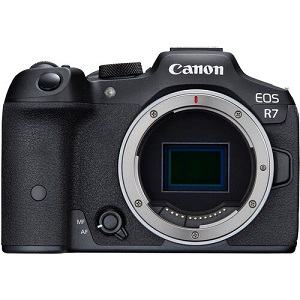
At the heart of this camera is a 32.5MP APS-C sized sensor. That is fully image stabilized, and it supports shooting at 15 frames per second (mechanical) and a staggering 30 frames per second (electronic).
Perhaps the most impressive feature though is the autofocus. This can identify and track a range of subjects, including animals and birds. I have used this system extensively and it is amazing how well it can lock onto even a fast moving subject to enable you to get sharp shots every time.
You also get a touch-enabled flip screen, weather sealing, Wi-Fi and Bluetooth connectivity, and compatibility with a massive selection of Canon lenses. Battery life is reasonable at 660 shots, and the weight without a lens is also good at 612g/ 21.58oz.
If the price is a bit much, consider instead the Canon EOS R10 . The sensor has fewer megapixels and you lose image stabilization and weather sealing. However, it weighs a lot less and you still get a very powerful camera for your money.
Price on B&H here and Adorama here
9. Sony Alpha 7c II
If you like the look of the Sony A6xxx line but want something with a full frame sensor, look no further than the Sony A7C.

Somehow, Sony has managed to fit a full frame sensor into a body that is almost identical in size and weight to the A6600, making it one of the smallest full frame mirrorless cameras on the market today.
They haven’t cut corners in terms of features either. You get a 33MP sensor, 10fps shooting, in body image stabilization, 4K video, WiFi, bluetooth, vari-angle touchscreen and weather proofing.
It even manages 540 shots on a charge. A fantastic option if you want something with a full frame sensor but in a relatively compact size.
Check latest price on Amazon here , B&H here , and Adorama here
10. Canon EOS R6 Mark II
In 2020, Canon launched two spectacular mirrorless camera options, namely the Canon EOS R6 and the Canon EOS R5 .

These were the first full frame mirrorless cameras from Canon featuring in-body image stabilization, offering an amazing 8 stops of stabilization when used with a compatible lens.
In 2022, a new model of the R6 was released, the R6 Mark II. This features improved battery life, a slightly larger sensor, and a much faster burst shooting speed compared to the original R6. It also retails at the same original MSRP of the R6, so would be the camera we recommend.
Compared to the R5, the R6 Mark II is the lower priced version, and the one we would recommend for most travel photographers. The R5 is an amazing bit of kit, with 8K video support and a higher megapixel sensor. We personally use the R5 (see our full Canon EOS R5 review here ), and love it.
However, the R6 Mark II offers a very similar experience with a much-improved price point, so unless you really need the 8K video support or higher megapixel count, we think the R6 Mark II is a great option.
Specs wise the Canon EOS R6 gives you a 24.2MP full frame sensor, autofocus that can track people, animals, and vehicles, up to a staggering 40 frames per second burst shooting, Wi-Fi & Bluetooth, 4K video, as well as a flip-out touchscreen. It’s also dust and drip-proof.
As with the Canon EOS RP above, there’s a lens adaptor which will let you use all your existing EF and EF-S Canon lenses with the camera, meaning you don’t have to re-invest in all new lenses. If you have the budget, this would definitely be my camera of choice for travel photography.
You can see our full Canon EOS R5 review here , which covers a lot of the features of the R6 Mark II, to see if it might be the camera for you.
Check price on Amazon here , B&H here and Adorama here .
11. Sony Alpha a7 IV
Sony effectively started the mirrorless camera revolution, and the Sony a7 IV, as the name suggests, is the fourth iteration in the excellent a7 range.
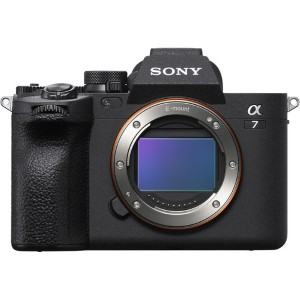
It comes with a full frame 33MP back side illuminated sensor, flip out LCD display, a high refresh rate EVF, WiFi, 10fps burst shooting and a fast autofocus system that includes animal and people eye tracking.
It also has excellent battery life at 610 shots per full charge, and includes weather sealing.
Of course, all these features do mean the price is relatively high. The good news is that you can still pick up previous models in the range, including the A7 III and A7 II . You lose some of the latest technology, but you still get great performance at a much lower price.
Check price on B&H here and Adorama here .
Best DSLR Cameras for Travel Photography
Why pick a dslr travel camera for travel photography.
Honestly, if this is your first travel camera purchase, then I suggest that a mirrorless camera is a better choice for most travel photography use compared to a DSLR. They offer all the control you need in a smaller, lighter package, with an ideal balance of portability and image quality.
For a time DSLR’s had a better choice of lenses and improved battery life over their mirrorless counterparts, but those areas have been significantly improved with modern mirrorless cameras and so this is no longer a good reason.
The main disadvantage of a DSLR is the weight – the weight in particular, especially when you add in some high quality lenses, is a real issue for many users.
That said, at the entry level especially, you can pick up some real bargain DSLR cameras. So if you are just starting out and want something to learn photography with, a DSLR can be a solid budget option, giving you full manual control over your photography.
Just be aware that the main manufacturers are almost exclusively focusing on mirrorless cameras going forward, which would appear to be the future of photography.
What to look for when buying a DSLR Travel Camera for Travel Photography
DSLRs tend to be the largest type of camera, so one thing that is important to look for is that the camera is comfortable in your hand. My suggestion is to visit a store and try the camera in hand, with a variety of lenses attached, to see how they perform before making a purchase. Canon and Nikon still rule the cameras in this category.
Features are fairly similar across most DSLR’s in terms of capability. They’ll either offer an APS-C sized sensor, or, more expensively, a full frame sensor.
Other features to look for include the ISO range, lens selection, weather resistance, GPS, WiFi, touch screen, autofocus system and number of control dials. More dials can be a good thing – letting you quickly set the camera up for different needs without having to dive into menu options.
If you do purchase a DSLR camera, do also take a look at our guide to using a DSLR camera to help you get the most out of it.
Best DSLR Camera for Travel Photography
We personally travel with both mirrorless camera’s and DSLR’s – for our work as travel photographers we still love our full frame DSLR – the image quality and lens selection still make these a great choice for us. Based on our experiences, here are the top five DSLR travel cameras available at the moment:
1. Nikon D3500

For the money you get a 24.2 APS-C sized sensor, solid performance and an excellent selection of lenses. To be honest, there’s not much between this and the more expensive Canon below other than this doesn’t offer 4K video support. It really depends what works for you and your budget.
2. Canon Rebel SL3 (EOS 250D in Europe)

The Canon Rebel line is an excellent series of good value entry-level DSLR cameras (my first DSLR was a Rebel), and the SL3 is no exception.
It’s one of the smaller SLR cameras Canon has made, and offers great performance for an excellent price. Specs include a touchscreen, 24.2MP sensor, WiFi, 1070 shot battery capacity, 4K video support, and compatibility with all of Canon’s lenses (and a great many third party lenses.).
The SL3 was released in April 2019, and it’s predecessor (and our previous pick), the Rebel SL2 , is likely to be available at a good price as a result. It’s a very similar camera, featuring the same sensor, but has around half the battery life and doesn’t support 4K video.
3. Nikon D7500

Moving up into the “prosumer” category of DSLR camera’s, and Nikon’s version is the D7500. This is Nikon’s high end APS-C camera, with a 20.9MP sensor, fast autofocus, a weather sealed body, and Wi-Fi. It also has a tilting 3.2″ touchscreen.
If you’re looking to upgrade from an existing consumer focused Nikon to something a bit more professional from the Nikon range, this is a good choice. However, you might prefer the lighter and just as fully featured Nikon Z50 instead.
4. Canon EOS 90D

5. Canon EOS 6D Mark II

Compared to its predecessor, and our previous favourite travel camera the Canon EOS 6D, the Mark II adds a touchscreen which swivels.
It’s solidly built, and well priced, having seen some great discounts since it launched at $1800. For a full-frame travel DSLR, we think this is a great bit of kit.
Just be aware that it’s only compatible with “EF” mount lenses – any “EF-S” mount lenses from other Canon bodies won’t work. If it’s a bit pricey, do consider the original 6D, which is still a fantastic travel camera and is very competitively priced nowadays.
What is the Best Budget Travel Camera?
As a bonus section – this is one of the most popular questions I’m asked when people ask me to help them choose the best travel camera, so I thought a section to help those of you with a fixed budget would help.
My suggestion for the best budget travel camera is one of the following cameras. Note that some of these are older and may no longer be in stock. As a result, you might want to pick them up second hand, see my guide to buying used cameras for tips on how and where to do that.
1. Nikon D3500
It also comes with the advantage that you get access to all the Nikon and Nikon compatible lenses, which is a huge choice. If you’re keen on an SLR, this is a great option at a fantastic price point.
2. Olympus OM-D EM-M10 III

It’s also cheaper since the launch of the Mark 4, meaning you can pick it up with a lens and be right on budget!
3. Sony RX100
With full manual controls and the ability to shoot in RAW, plus a 1-inch sensor and excellent image quality, this is far more than “just” a point and shoot.
As mentioned in the compact camera section above, there are various iterations of this model available, and you can pick up one of the earlier versions for a great price.
If you’re looking for a quick summary of the best travel camera on the market today, these would be our picks, ordered by camera type.
- Sony RX100 range : If you’re just looking for a point and shoot camera that will take great photos with minimal input, then I’d suggest this range as a great option.
- Panasonic Lumix ZS70 : If you are constrained by budget but want a good zoom, this is the best budget compact travel camera with a decent zoom.
- Sony a6600 : If you want a great compact mirrorless camera, the Sony a6xxx range is the one to go for. The entry level model is the Sony a6100 , (discontinued in late 2021 but stock is still available) but if you can stretch to the a6600 that’s a better option as it has image stabilization and a touch screen.
- Sony Alpha 7c II – if you want all the benefits of a full frame camera but in a compact package, this is the camera to go for. I think it’s the ideal camera for hiking or backpacking .
- Sony Alpha a7 II – for a budget full frame mirrorless camera, this would be our choice. It’s also fantastic value. Note this is a bit older now, so the A7 III or A7 IV might be a better option depending on your budget.
- Nikon D3500 : If you are looking for a DSLR for travel photography, I’d recommend this Nikon at the entry level
- Canon EOS 6D Mark II : This is our pick for our favourite high end DSLR for travel photography, although we’d recommend a mirrorless camera to most users
- Canon EOS R6 Mark II – An excellent compact full frame mirrorless camera with all the features you need. If your budget will stretch to it, also consider the Canon EOS R5 which is the camera I currently use
Hopefully this summary helps with your purchasing decision! If I was purchasing a camera today with no previous lenses, I would likely go with the Sony Alpha 7c if I wanted something lightweight.
As a Canon user with lots of lenses though, I’d go with the Canon EOS R6 Mark II or Canon EOS R5 . If you are a Nikon user with existing lenses, then I’d suggest the Nikon Z50 , the Nikon Z6 II or Z7 II .
When upgrading, it’s often easier to stay with the same manufacturer as the menu systems are usually going to be familiar, and your existing lenses might carry over.
Accessories for your Travel Camera
When budgeting for your travel camera, don’t forget to think about any accessories you might need.
If you’re planning to buy an interchangeable lens camera like a mirrorless or DSLR system, then you will obviously need a lens. Check out our guide to the best travel lenses here for some recommendations across a range of systems.
We’d also recommend considering some of the following accessories.
Travel can be rough on your photography gear, and so I recommend investing in a good photography bag.
Camera bags are specially designed to provide padding and protection for your gear, and many of them also come with rain covers. This means that you have somewhere safe, protected and padded to put your gear.
Personally, I use Vanguard photography bags and I’ve been an ambassador for Vanguard for many years now. If you see something on their store that works for your equipment, you can save money using our exclusive Vanguard discount code. This will give you 20% off everything in the Vanguard store.
Just use the code FindingTheUniverse for your discount! This code works in the Vanguard USA, UK, Australia, Spain, and Germany stores.
There are of course a range of other camera bags available, you can see the options on Amazon here and B&H Photo here .
External Hard Drive
When you travel, it’s important to be able to store your photos somewhere safe. To do this, we recommend investing in an external SSD.
The price of external SSDs has come down in recent years, so we would recommend one of these over a mechanical version as they are much faster, smaller, as well as being far less prone to losing data.

The external SSD we currently use by Adata is ruggedized and dust and water resistant. It also supports both Mac and PC users.
Photo Editing Software
To get the best out of your photos you are going to want to edit them, and to do that you’ll need a photo editing application!
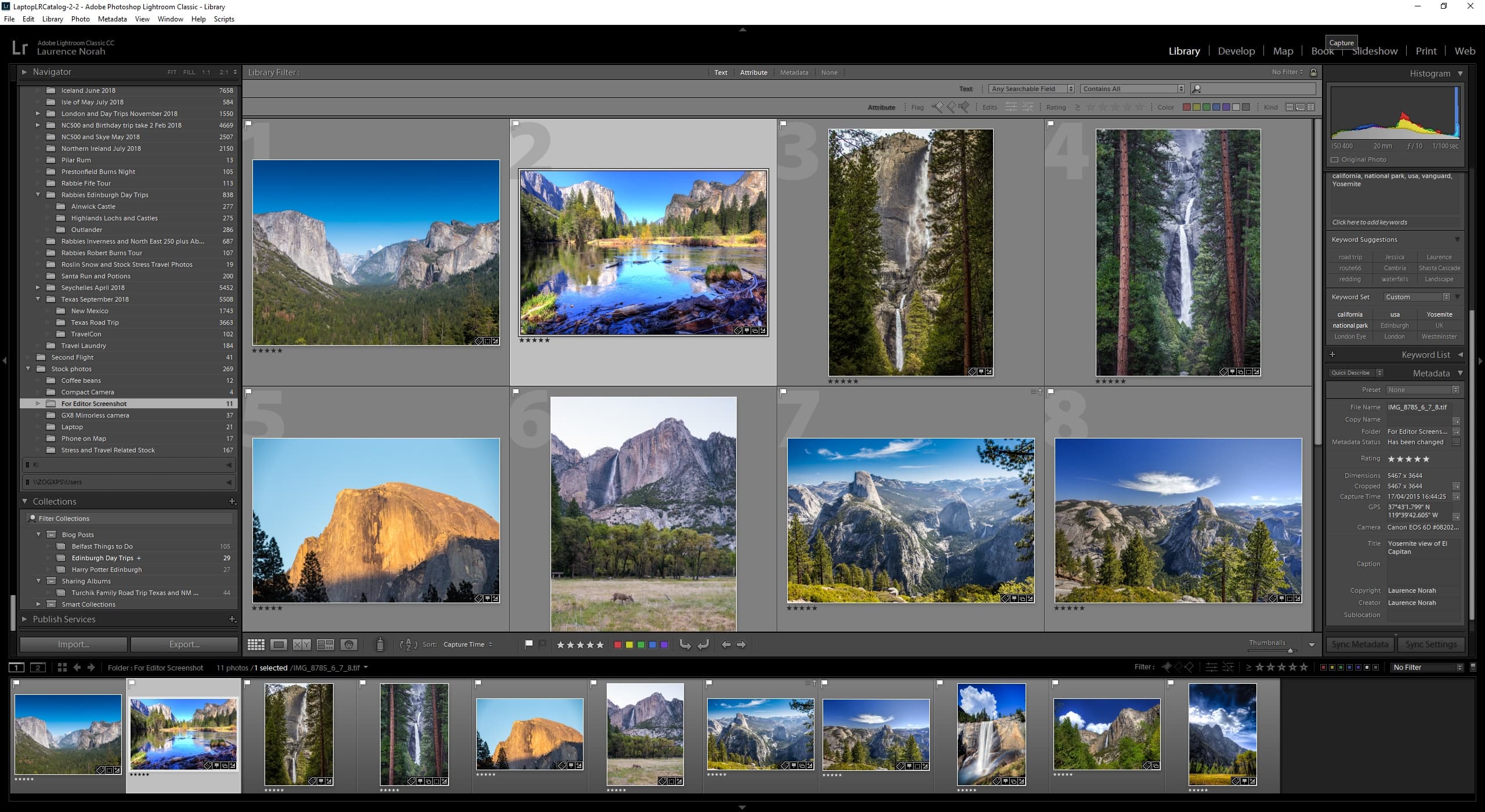
There are a number to choose from, including paid options like Adobe Lightroom Classic CC , Skylum Luminar AI , and ON1 Photo RAW , as well as free options like Darktable and Fotor .
Deciding which to go for is a whole other decision. To help you out, I’ve put together a guide to the best photo editing applications , which has both paid and free options.
Accident Protection
A camera is a significant investment, and as such you might want to protect yourself from accidental damage.
The price of this varies depending on the cost of your camera gear, but a relatively small investment can provide peace of mind against a variety of common accidents, from liquid spills, to accidentally dropping it.
For some examples, here’s a 3 year accident protection plan for electronics valued between $1500 and $1999.99, whilst this one covers products between $800 and $899.
Note that both of these are only valid for qualifying purchases from Amazon.com. If you are shopping elsewhere, or direct from the manufacturer, check what they have available before purchasing if this is important to you.
It’s also possible to take out separate insurance, or that your homeowners insurance for example covers such things.
Backup Software
If you aren’t already backing up your photos, now is the time to change that. There’s no point having an awesome laptop to edit your photos on if you lose them all!
We have a complete guide to how to back up photos , which has a range of options and covers what to look for.
However, if you want an easy to use option with unlimited backups, then we use and recommend Backblaze . It’s well priced and in our experience is just works. You can try it out for free here .
Further travel photography reading and resources
And that summarizes my guide to the best travel camera for travel photography! Hopefully you found it useful. I’ll be keeping it up to date as new camera models come out and prices change.
In the meantime, if you’re looking for more resources to help you make the most out of your travel photography, check out the following resources I’ve put together:
- My guide to picking the best lens for travel photography , which will be useful if you have a camera with interchangeable lenses.
- My always expanding series of Photography Location Guides , to help you get the best shot in locations around the world.
- Photos need editing to get the best out of them. See our guide to the best photo editing software for our suggestions. If you’re looking for something to edit your photos on, see our guide to the best laptops for photo editing
- An overview of my Travel Photography Gear , in case you wondered what a professional photographer has in his bag
- Our guide to what to buy a photographer , which has gift ideas at every price point and experience level. For more general gift ideas, see our gift guide for travelers , and our tech gift buying guide .
- A Beginners’ Guide to Improving your Travel Photos
- My series of Photography Tips , which I am always expanding and updating with posts like this one. See our guides to northern lights photography , lens compression , back button focus , fireworks photography , taking photos of stars , cold weather photography , long exposure photography , RAW in photography , use of ND filters , depth of field and photography composition , which should get you going
- If you like the photos on this blog, you’ll be pleased to hear they are all available for sale. Head on over to our photography sales page to place an order.
Looking to Improve Your Photography?
If you found this post helpful, and you want to improve your photography overall, you might want to check out my online travel photography course .
Since launching the course in 2016, I’ve already helped over 2,000+ students learn how to take better photos. The course covers pretty much everything you need to know, from the basics of how a camera works, through to composition, light, and photo editing.
It also covers more advanced topics, including astrophotography, long exposure photography, flash photography and HDR photography.
You get feedback from me as you progress, access to webinars, interviews and videos, as well as exclusive membership of a facebook group where you can get feedback on your work and take part in regular challenges.
It’s available for an amazing one-off price for lifetime access, and I think you should check it out. Which you can do by clicking here .
And we’re done! Thanks for reading – if you’ve got any comments, feedback or suggestions, just let me know in the comments below.
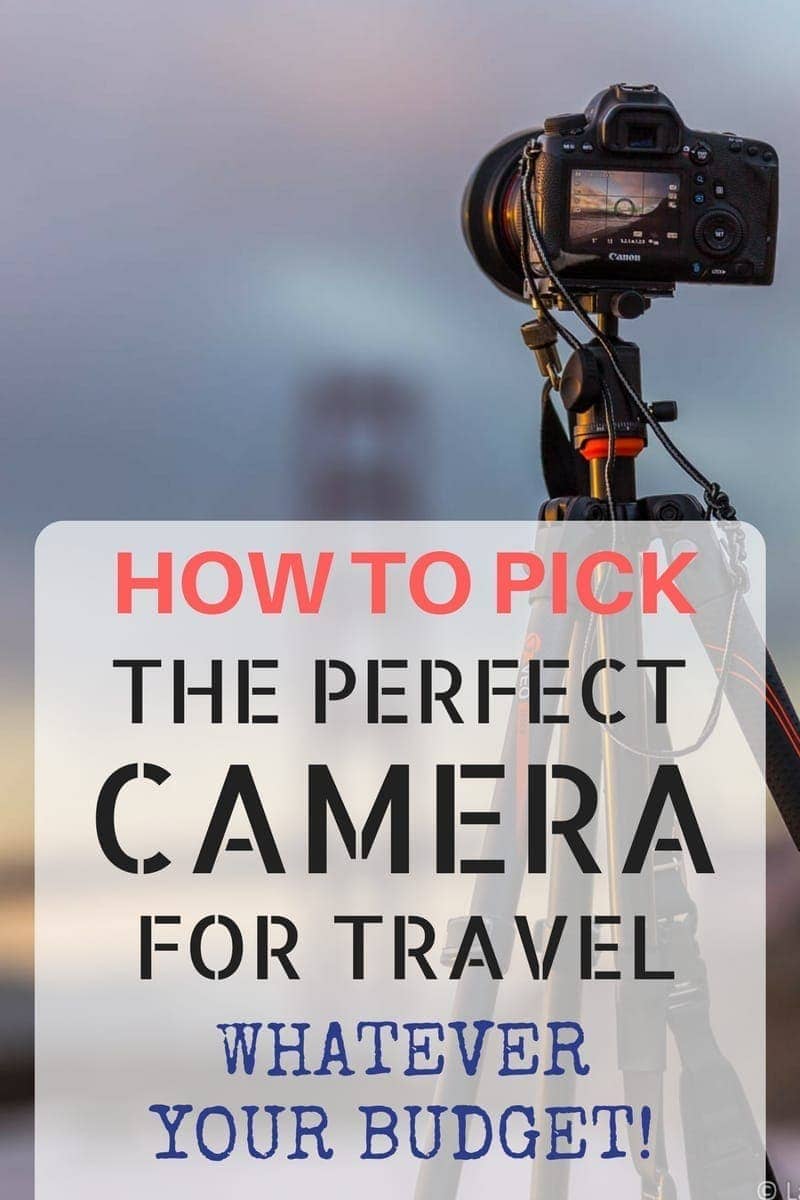
Enjoyed this post? Why not share it!
There are 167 comments on this post
Please scroll to the end to leave a comment
Ian Andersen says
28th January 2024 at 10:29 am
Thanks for great and thorough reviews. I did not read through all of them and I was wondering if you could say which travel (super zoom) camera WITH GPS is better.
Laurence Norah says
28th January 2024 at 5:58 pm
Unfortunately, the majority of newer cameras don’t come with built-in GPS tagging functionality on the camera. Instead, if you find a camera which has WiFi and a companion smartphone app, they tend to pull the GPS info from the companion app. So really what you want is one of the travel cameras which has this feature. The Sony cameras in this list such as the RX100 do support this, and I believe the Panasonic ones do. However I’d recommend doing a search for each camera to ensure it does meet your requirements. Do you have a short list of cameras you like already, and I can look at trying to help.
29th January 2024 at 6:29 am
Thanks Laurence, I was a satisfied Lumix TZ user for many years up to – was it TZ 60 or 70 that still had the GPS built in. The argument for losing it was saving battery power but I found that carrying extra batteries was way simpler than using their clunky iPhone app. My latest is a TZ 202. Great pictures but annoying not to gave them tagged. I tried to switch to the SONY DSC-HX90V hoping for easier operation of the phone connection. Again, great photos but clunky GPS solution. So I am really hoping for a small (belt-carried) camera with GPS so I can get away from almost exclusively using my iPhone 15 pro.
29th January 2024 at 4:05 pm
I assure you, I feel your pain. I shot on a Canon 6D for a very long time and one of the features I loved was the built-in GPS tagging. Now I have an R5, and I have to use the Canon companion smartphone app for GPS tagging. Whilst it works pretty well, it’s another step I have to remember to do. It also eats up my smartphone battery if I forget to shut it off after shooting. About the only system I know of that still has built in GPS on a relatively compact camera is the Olympus Tough TG6, but that doesn’t have much of a zoom and is more designed as a rugged camera. So I’m not sure it will meet your needs, but one to look at.
Happy shooting 🙂
Farhana Farid says
29th September 2023 at 6:22 am
This guide on the best travel cameras is a game-changer for wanderlust enthusiasts like me! The detailed reviews and recommendations provide a clear understanding of which cameras are most suitable for capturing those breathtaking moments on the go. The consideration of factors like portability, image quality, and versatility is spot on. Thanks for making my travel photography decisions so much easier!
1st October 2023 at 10:13 am
My pleasure Farhana, I hope you find a great camera for your travels 🙂
Kevin Nalty says
15th October 2023 at 1:43 am
Hi. Agree- this is really thorough and didn’t overwhelm me. I’m curious what you think of the Canon EOS R50. I did a review of it in my blog (Willvideoforfood) but I’m not even remotely as informed. -Kevin
15th October 2023 at 12:14 pm
Thanks very much! So I think Canon has been hitting it out of the park recently with their mirrorless camera options and to be honest it’s almost hard to go wrong with whatever recent mirrorless model you pick up. The R50 specifically offers tremendous value and you get a lot of features, especially the autofocus system, which has the same features as you would find on their super high-end models like the R5 (which is what I use). In the old days of Canon they arbitrarily kept some features for their higher end models only, but that approach seems to be changing for the better which is good news for us consumers. The main downside with the R50 as you note in your review is a lack of optical image stabilization. I would also add that I don’t create video, so those areas of a camera are something I don’t review or use.
For anyone else reading this, now is honestly a great time to be buying a camera. The vast majority of recent releases have been excellent, with superb image quality and a solid range of features. As I said, it’s almost hard to go wrong 🙂
Thanks for stopping by!
Gurshabad Bakshi says
9th September 2023 at 6:02 am
Hi, awesome post. Very thoughtful and comprehensive. I have been reading your bogs and planned a visit to Bali based on your suggestions. I want to carry a leisure photography budget camera, that can click good photos and underwater videos and stuff. I have some questions for that. For what all activities and where all do you use Akaso Brave 7 camera? Is its image quality good enough? And if you could share some sample pics and viseos, it would be so very wonderful and helpful.
10th September 2023 at 3:02 pm
Hi Gurshabad!
So we honestly only use the Akaso (and any other action camera for that matter) for specific situations like underwater photography. The reason is that we personally have other cameras that are better for things like landscapes, and wildlife photography, but the Akaso is the only camera we have for underwater photography. So whilst it definitely works for that, we wouldn’t personally use it for everything just because we have other camera gear. However, if you are happy with the limitations, like not being able to zoom or adjust many settings, it could certainly work. I’m on a trip right now so don’t have access to all my images, so I can’t share samples unfortunately.
Hopefully this helps a bit. Have a great time in Bali 🙂
William says
22nd August 2023 at 11:10 pm
Great review and suggestions!. Thank you.
23rd August 2023 at 10:35 am
Thanks William!
Rachel says
3rd June 2023 at 8:47 pm
Thank you for this great article! I’m going to be traveling for my honeymoon soon, and decided I should upgrade from using my smartphone for all my photos to using an actual camera so I can get some printable quality photos. I’ve read a few lists like this one, but yours is the only one I’ve read that doesn’t just feel like a paid advertisement. I appreciate all the tips and advice you listed here. I now have a camera on my wishlist, thank you!
4th June 2023 at 7:03 pm
Hey Rachel! I’m so glad you found my article helpful, and many thanks for taking the time to let me know. I hope you enjoy your new camera, and if you have any questions as you continue your photography adventure feel free to reach out!
Claude AYMARD says
31st January 2023 at 8:15 pm
Hello, for you which can be the best safari travel camera easy to used for good photo quality -canon sx70 hs -canon m200 with 55-200mm -lumix tz100 -Lumix GX9 with 14-140mm thank’s in advance
1st February 2023 at 10:40 am
I do have a guide to the best safari cameras here which might help. However, from your list I would probably lean towards the Canon SX70HS for ease of use and also the great zoom means you can get good shots of further away subjects. My dad actually has the SX60 and he really likes it, we’re on safari right now and he is using it with good results.
Let me know if you have any more questions and bon voyage 🙂
9th August 2022 at 2:04 pm
10th August 2022 at 12:38 pm
Thanks Tanis!
9th July 2022 at 8:13 pm
Hello! I am so happy that I stumbled upon your website when researching for a trip to Iceland. I fell in love with photography when I was on my high school’s yearbook staff, a long long time ago. I have collected many SLR cameras over the years, manual and digital along with lenses (Nikon and Canon). Sadly, none of them have been used for several years and when I recently pulled them out, I realized how outdated they are. So…I am looking to sell everything (thanks for your amazing article on how to do that!) and start fresh. If you were me, with a budget of $2k-$4k, looking for a very high quality, relatively light weight camera system with the latest and best technology, what would you recommend? I would like one camera with two lenses at the most. Light weight enough that it’s easy to carry and use, without sacrificing image quality. Something that I can ‘grow into’ as a I renew my love of photography. Many thanks for sharing your expertise. Cheers!
10th July 2022 at 9:59 am
It’s great to hear from you, and I’m so pleased you have been finding the site useful so far!
With your requirement for something lightweight but that also has great image quality (and within budget of course) I would probably suggest the Sony Alpha 7c . Excellent autofocus, in body image stabilization, a full frame sensor and a weather sealed design, somehow all in a body that weighs about a 1lb.
If you wanted lighter, the Canon EOS RP is another full frame option which is fractionally lighter and also significantly cheaper, however you lose in body image stabilization and the focus tracking system isn’t quite as accomplished as the Sony in this model. It’s also slightly larger, despite being less heavy.
Both cameras have an excellent selection of lenses to choose from depending on what you want to photograph 🙂
Let me know if I can help any more!
17th April 2022 at 12:56 am
Hello Laurence, First off let me say thank you for such great articles, guides, advice and overview for someone who’s never been to Scotland and interested in touring the NC500. With that said, there are many great choices concerning camera & lens combinations in your article. Getting specific addressing the NC500 route, just what would be your best advice for focal lengths in reference to 35mm full frame? I see many wide to ultra wide images in the article, so inquiring about specific needs. Want to pack a 1-2 lens kit for this specific trip, and of course I’m thinking a tripod will be handy also!
17th April 2022 at 10:21 am
It’s our pleasure, I am pleased to have been of help. So I primarily travel with two lenses, a 16-35mm and a 70-200mm. Most of the landscape shots I take are with the wide angle, although there are sometimes nice opportunities to use the longer lens for isolating a subject. But if I was going to only take one lens it would be the wide-angle all the way.
Hopefully this answers your question! Let me know if I can offer any further input, I’m happy to help.
Edward says
31st January 2021 at 9:50 am
Hi, I was happy to read where you wrote “Personally, I love having a camera with GPS”. So do I, or rather so would I, but I am having trouble finding one that I like the look of. All I want is a compact camera with GPS and a viewfinder, with a useable zoom (say up to 200mm equivalent) and good image quality (which today would imply a sensor of 1″ or bigger). There is no such unicorn.
So what do you use, please, that gives you GPS? Or do you use an “add-on later” method like recording a GPS track and geotagging your photos later? I personally am reluctant to do that for a number of reasons, mainly that I travel for 3-6 months at a time (or at least I did when I could) without carrying a computer, so I would not only have a lot of geotagging to do later, but the on-the-road backup to Dropbox would not be geotagged.
31st January 2021 at 2:11 pm
I currently use a Canon 6D, which is a full frame DSLR. For a while Canon added GPS units to a number of their cameras, but unfortunately this useful feature has been missing from their newer models. For me it’s one of the most useful features to have, so I don’t like the omission. The reasoning is to do with battery life I suspect. GPS units take up power, and newer mirrorless cameras are already battery hungry. So leaving off the GPS is done in an effort to conserve battery power I suspect.
The good news is that many cameras today include the ability to pair with a smartphone app over Bluetooth or Wifi. When the camera takes a picture, it polls the smartphone app for location data, and embeds that in the photo. This of course does require extra setup, remembering to connect the camera to the phone before every shoot, and can drain your smartphone battery too. So it’s not amazing as an alternative, but it does at least work.
I believe that the Sony Image link app supports this for the Sony RX100 series, so with your requirements of a 200mm zoom and a 1″ sensor, the Sony RX100 VI or higher would be an option. Another option I believe would be the Panasonic ZS200.
Finally, another option, as you mention, is to use a third party GPS logger, either a standalone device or an app on your phone, that records the data and saves it, which you can then manually sync later. Again, it’s more work.
Overall, I would much prefer that manufacturers just add the GPS device and let us as users decide for ourselves if we want to use it and use up battery life. Hopefully it makes a reappearance as a standard feature!
1st March 2021 at 5:06 pm
Hello, thanks for the well thought-out response. It gives me a lot to think about, and if I do have to give up one or more of my checkboxes (or at least half of one, by needing to use a separate app), I may rethink them all – take a step back and ask myself what I really want to do, rather than ask what equipment will satisfy what I think are my wants. I suspect that the RX100 VI plus the app would be the nearest I could get. Or the Panasonic SZ200/TZ200 (or SZ100) plus its app. It is ironic that it seems that 1-inch sensor compacts really took off in the mid-2010s, just as manufacturers were deciding to drop GPS.
2nd March 2021 at 4:37 pm
My pleasure Edward! I would say that one of those would be the best option. It is certainly disappointing that this is no longer a standard feature!
Kyle O'Donnell says
16th December 2020 at 8:30 am
awesome list, you put it together very well 🙂 i got a Sony A6400 from amazon, it’s absolutely amazing, it really show in my vlogs.
16th December 2020 at 11:12 am
Thanks Kyle!
Charles Haskins says
29th April 2020 at 10:19 am
I have been reading through your responses to questions and I am astonished by the detail and the thoughtfulness of your answers. Quite apart from the photography info, it is a great lesson in human decency – great “customer service” for people who aren’t even customers really. I will definitely be following you in the future! Thank you!
29th April 2020 at 10:21 am
Hi Charlie,
Thanks very much, that’s kind of you to say. We do our best to try and answer everyone’s questions, be it photography or travel related 🙂 If folks have taken the time to read and leave a comment, then we feel it’s only right to answer if we can!
Thanks again for your comment, and don’t hesitate to reach out if you have any questions of your own!
All the best
29th February 2020 at 11:15 pm
I am quite new to photography. I purchased the M50 last summer (my first non-compact). I don’t know if it is my skills, the camera, or that I need better lenses, but so far I haven’t had much success getting sharp images.
1st March 2020 at 10:52 am
Sorry to hear about your issues. There are so many variables that go into what could make an image less sharp, from incorrect focus through to a lens issue. It’s hard to diagnose without seeing an image – do you have one somewhere online you can link to that I can take a look and provide some more insight? It would be best if it also shows the camera settings at the time – usually a site like flickr will save this info.
1st March 2020 at 4:27 pm
These aren’t all from the M50, but several of them are. Also, these happen to be the better ones: https://www.flickr.com/photos/me77777 . I feel like I have to sort through so many that aren’t as sharp as these to find a good one, but even some of the ones I’ve posted could certainly be sharper.
1st March 2020 at 4:41 pm
Thanks for sharing. So, some initial thoughts:
On this image of the lighthouse: https://www.flickr.com/photos/me77777/49596740501/in/photostream/
The camera is set to f/29. This is a super narrow aperture. Most lenses produce their sharpest images at around f/8, with sharpness falling off towards the edges wider than f/8 (i.e. f/5.6, f/4 etc). Above f/16, sharpness dramatically reduces due to an effect known as diffraction. It’s generally not advisable to go above f/16 for this reason. Performance will vary by lens, but as a general rule, f/8 – f/12 is a good range.
Of course, this doesn’t consider depth of field for composition. For landscapes, a wider depth of field is usually preferable, so you’d be looking at f/8 – f/16 in most cases. For portraits, a shallow depth of field would be preferable. Softness in portraits is less of an issue as you wouldn’t normally have the subject on the edge of the shot, so the softness wouldn’t be too noticeable.
Now, here’s another image of a church in a city: https://www.flickr.com/photos/me77777/49503917028/in/photostream/
So this was shot a 1/40th of a second at 200mm focal length. The longer the zoom, the harder it is to hold a camera steady. As a general rule of thumb, shutter speed should not be lower than the inverse of the focal length. So if you are shooting at 200mm, you would not use a shutter speed slower than 1/200th of a second. A 50mm focal length would be 1/50th of a second.
The file format you are shooting in will also make a difference. If you’re shooting in JPG, then the compression setting and sharpness setting in camera will make a big difference to the final image sharpness. Ideally you’d want to shoot in RAW, so you can edit sharpness after the fact.
These are just some ideas to start with. Something like this shot looks wonderfully sharp to me: https://www.flickr.com/photos/me77777/49498974486/in/photostream/
Happy to provide any more feedback if you have more specific images of course 🙂
https://www.flickr.com/photos/me77777/49503917028/in/photostream/
2nd March 2020 at 4:34 am
Thanks for taking the time to give feedback. You have an amazing site.
2nd March 2020 at 11:19 am
Thanks Craig – my pleasure 🙂
Natalie says
24th December 2019 at 1:05 pm
Thank you very much for collating all this information together- I do not feel nearly as overwhelmed as I did before!
I am going away travelling to India and South East Asia, and would like to both take great pictures in low light, and film a short documentary (so stability is also key without lugging a tripod around (Oof).
I am looking into purchasing a DSLR, budget however is a concern. This will be my first time camera, however I have a little experience in film cameras (mostly SonyPMW200).
I am currently looking at the Nikon D750…can you recommend something cheaper and still great for filming? I guess the Nikon D5300?
Nikon also seems to be cheaper for lenses than Canon- what would you reccomend?
Any suggestions would be great. Thanks so much
24th December 2019 at 2:53 pm
Hi Natalie,
Thanks very much!
So I have to be honest, video is not an area of expertise for me. However, if you want to shoot stable video without a tripod, you are going to need to think about how you are going to stabilize your camera. Without a tripod, your best bet is going to be some kind of camera stabilization. Currently, the Canon and Nikon DSLR’s don’t offer this in camera, so you would need to rely on a lens with image stabilization built in.
Alternatively, you could look for a camera with image stabilization built in. I’m not sure what your budget is all in, but one of the micro four thirds cameras from Olympus or Panasonic might be a good option. These are notable for producing great video, have a wide choice of lenses, and most importantly, have built in image-stabilization in the camera body. The Olympus Om-D E-M10 Mark 3 is currently on sale all over the place with a lens. For video and low light, you will benefit from a wide aperture prime lens, such as the Sigma 30mm f/1.4 .
I appreciate this might not be the answer you were looking for, but if video is important, I think this might be a better direction to go in than a DSLR. All the capabilities are the same, the only disadvantages are a reduced battery life and a slightly smaller sensor. However, by using a wide aperture lens you can make up for the reduced low light performance.
I hope this helps – I’m happy to discuss further of course!
20th December 2019 at 1:17 am
Sorry I visited your site but couldn’t read a thing. Please fix the site. Best regards
20th December 2019 at 10:46 am
Thanks for your comment. Could you clarify perhaps what you couldn’t read and what i need to fix? The site loads ok on all our devices, but if you can let me know what device and browser you are using, and what specifically is not working, then I will be happy to take a look,
Martha Dobson says
3rd November 2021 at 4:02 pm
Website was beautiful, I think that this man is lying to you about the website not being legible.
3rd November 2021 at 6:07 pm
Thanks Martha!
Marije says
17th December 2019 at 8:47 am
Hi Laurence,
Thank you so much for this very insight- and helpful review. I’m looking to buy a compact camera with good optical zoom possibilities for photographing people, landscapes and wildlife during my holidays. As I’ll be visiting Swedish Lapland for a week of winterfun, I would like a camera that will also be Able to capture the northern light (autora). Which compact camera will be a good or even the best choice. Was Leaning towards a Sony Cybershot DSC-RX 100 series but found vi and vii quite expensive anD not shure about optical zoom of v. Love to hear your opinion.
17th December 2019 at 9:14 pm
So I would say probably the next best option after the RX100 would be the Panasonic Lumix ZS100 or ZS200. The Canon Powershot G3X is another good option as it has a 1 inch sensor and a 25x zoom lens. I have to say, northern lights photography is a challenge for any camera though, even a full frame DSLR. So while you will definitely be able to get photos with a compact camera, just be aware of its limitations. I have some tips on taking taking photos of the northern lights here , which might be worth a read.
Otherwise, let me know if you have any more questions – and have a great trip!
22nd October 2019 at 8:36 am
How about the Panasonic G90/95? It has all bells and whistles of GX9 and much more (like UHS-II support, stronger IS and focus stacking). It has a comfortable grip and a rugged body, a swivel touch screen, unlimited video shooting, mic and headphones port (hello vloggers!). Similar to GX9 it can be charged via usb but comes with an external charger and both can be charged via a powerbank with 2 ports! I’m almost happy with my gx9 but miss the weather sealing and the mic port. If Pana doesn’t release a gx10 with these 2 features I’ll go for the G90.
24th October 2019 at 12:51 pm
The G90/95 is certainly an excellent camera, although is at a bit of a price premium compared to the GX9 so isn’t directly comparable in my mind. However, if it fits what you are looking for you should definitely go for it – this list is by no means definitive (hence the long section at the beginning to help people decide).
Enjoy your new camera, whatever it turns out to be!
lalan kalansooriya says
15th September 2019 at 12:36 pm
Hi I am bigginer to the photography and i wish to buy a camera. I love to travel photography. My budjet is about 300$. So I would like to know what are the recomended cameras for me
15th September 2019 at 2:25 pm
At $300 you will definitely be looking at either a mid-range compact camera or a lower end DSLR. There aren’t many mirrorless cameras at that price point unfortunately, unless you go second hand. In terms of compact cameras, I’d suggest either the Lumix DC-ZS70 or the Sony RX100 .
For DSLRs, consider the Nikon D3400 or the EOS Rebel T6 .
10th August 2019 at 8:23 am
Hi Laurence and Jessica, Just a quick thank you message to say that this is the first article I read (and I ‘ve read quite a few!) that really explains things about cameras in a clear way! Im new to travel photography and was looking for info on how and where to start from. Thanks a lot!
11th August 2019 at 11:38 am
Our pleasure! We’re always happy to hear that we’ve been able to help people, and believe me, I know that photography is not the easiest topic to get to grips with 🙂 Let us know if you ever have any questions!
Stuart Svoboda says
21st July 2019 at 6:03 pm
Thanks for your thoughtful and comprehensive advice. Obviously, budget plays a big role in most people’s decisions and there are few aspects of photography that don’t involve some compromise. However, for those who are willing to part with a bit more cash in pursuit of a supremely capable yet practical alternative, you missed at least one significant choice and that’s the Lumix G9. My G9, battery grip, lenses (mostly Leica, covering the 35mm-eq range from 16-800mm), spare batteries, flash/soft box, filters, etc. (including an Olympus TG-5, which I agree is a great, bomb-proof, go-anywhere camera) all fit into a small pack that weighs 6400) ISO noise with moving subjects. Big deal (looks more like film anyway). A much more compact (although not pocket-sized) and far cheaper alternative that still produces great IQ (stills and 4K video–much better than a 1/2.3) is the Lumix FZ1000. The first-gen (which I got for c.US$600) is still available and a great bargain (IMHO, the best price/performance value currently available). The Mk II adds some nice features but has the same great 1″ sensor and 25-400mm-eq Leica lens. If you can’t get great images under most conditions with that, it’s not the camera… And no, I don’t work for Panny–they just make great cameras (performance and ergonomics). Bottom line: the IQ achievable in most conditions from even “mid level” cameras these days is more than enough for most purposes–much beyond that is overkill (but some of us like overkill on occasion).
Thanks for your blog.
21st July 2019 at 6:32 pm
Thanks Stuart! We also like the Panasonic gear, I’ve had a G6 and still use the GX8 on a regular basis. There just wasn’t room for every camera on the list, but we certainly appreciate your recommendation and no doubt folks reading the post will find your input useful as well 🙂
Sandra says
11th July 2019 at 7:50 pm
Thanks for such a great article! I am wondering what you think of the new Canon PowerShot G5 X Mark II which was announced July 9th and is due in stores August 1st. How do you think it compares to others in your compact camera list? I am taking a 3-week trip to China in September and want a great travel camera. Looked at the Sony RX100 VI but it felt very small in my 73-year-old hands and I missed it not having a grip. I am replacing a very old Canon G16. Thanks for any input you can share!
12th July 2019 at 4:19 am
I’ve been reading up on these two cameras and they both look very promising. I would say that they would probably be excellent, but I’ve not been able to personally try them out as yet. However, if you are used to Canon, it would be a logical step to buy one of these two, and I am confident you will be happy with the performance. I’ll be updating this post in the near future, but likely after your trip. In the meantime though, I am still happy to recommend them on spec as the price / specifications are great.
Candy Luong says
24th June 2019 at 8:45 pm
Thank you for the well-written review! I am on the market to purchase an upgrade from a 2011 Canon Rebel T3i with a couple of EF lens. I am conflicted between upgrading to a DSLR or mirrorless camera for travel and leisure photography. What I look for in an upgrade is WIFI, GPS, lightweight, adaptability to the canon lens, and does not break the bank (max $1500) for a full kit. Is there a mirrorless camera that has a proven adapter for canon lens? I’ve looked into the Canon EOS RP but the price point for a full kit is insanely expensive. What would you recommend?
25th June 2019 at 1:38 am
So the Canon EOS RP would be my recommendation – with the adaptor the body only should come in under your budget, and it will work great with the Canon lenses you have. If you move to another manufacturer, I think you will struggle to get a full frame camera for any less money, and the adaptors are not so good as they have to do a conversion between the electronic systems, which usually results in slower performance. The only thing missing from the EOS R is built in GPS, however the low energy bluetooth capabilities mean you can sync GPS from your phone without too much battery drain.
If it’s still too much, you might consider a second hand Canon 6D or 6D Mark 2, which are both great cameras. I still shoot full time with the original 6D and have no complaints. GPS is one of my favourite features on it, and I wish more cameras had it as a default!
I hope this helps!
Kathy Golden says
17th June 2019 at 11:27 pm
I just happened upon your website while researching DSLR cameras and I found a treasure-trove of information! Thank you so much for this thorough and informative blog. It is very helpful. I hope to compare mirrorless and DSLRs for both travel and “family” photography.
19th June 2019 at 4:18 pm
My pleasure, let me know if you have any questions!
6th June 2019 at 11:50 am
Really found this article useful – thanks!
Soon, I am quitting my job and going travelling for the ‘foreseeable future’ – yay fun!
I love taking pictures generally (e.g., smartphones or on friends cameras). But knowing I am going travelling, I would love to capture some great quality shots and edit them myself etc along the way. Although a ‘first purchase’, I need it to be high quality so that it is worthwhile over a smartphone, worth the financial investment, and worth carrying around. I am very likely to take a look into some of your courses too before I go (so that I actually CAN capture some good moments) – with this in mind, what would you recommend?
Many thanks in advance!! Flo
6th June 2019 at 12:02 pm
My pleasure! So it will depend on how much you want to carry with you. If it’s a minimal amount, then you’d be better off with a high end point and shoot, like the Lumix ZS200 or the Sony RX100 series. These both take excellent photos, have full manual controls and even shoot in RAW.
If you want to step up above that there are many choices. For travel, I’d recommend probably a mirrorless camera to keep the weight down, paired with one or two lenses. At this point it will come down to your budget – all the mirrorless cameras on this list will do a great job, but they are at different price points, starting with less expensive and then getting more expensive! At the higher end, I’d suggest perhaps the Canon EOS RP, whilst at the lower end, the Sony a6000 or Olympus OM-D E-M10 Mark III.
Let me know if I can help any more 🙂
6th June 2019 at 7:32 am
Hi thank you for such wonderful tips. Im no expert. I would really appreciate some guidance. I own iphone x and photos are great. But for travel I d also need a solid zoom for vast landscapes. I ve been looking into Panasonic, I like idea of Leica lens… what I d like is what can i get up to 1000 usd ( preferabbly less) that would make sense to get better photography then iphone x, a good zoom and still a nice looking not too big camera. Thank you 🙂
6th June 2019 at 11:40 am
So based on your requirements for a smaller camera, I’d say either the Sony RX 100 VI or the Lumix ZS200. They both offer a good zoom range and good image quality, as well as manual controls.
You could look into mirrorless cameras too, but to get a good zoom you’d need a larger lens, and it wouldn’t be so compact!
Let me know if you need any more information, I’m happy to help 🙂
12th May 2019 at 10:46 am
Hi .. I am a Nikon d5300 (with two lenses 18-55mm and 55-200mm lenses) user and I need to buy a compact camera with dslr quality lesser in weight .. please suggest
12th May 2019 at 7:16 pm
So if you want something really compact then the Sony RX100 range is a good option. The quality is great for a compact camera, and you also get full manual controls. If you just want something a bit smaller, then you might consider one of the mirrorless options, but they aren’t always a lot smaller, so a compact is likely to be a better option.
Thomas Mygind says
1st June 2019 at 7:38 am
If you want the smallest Full Frame option – then this basis option weighs 450 gram + EF-lenses. Cannon M100 + Viltrox 0.71x adapter makes your APS-C into a full frame eqvivalent.
Then add any EF-lens you like -for example: Canon EF 24-70mm f/2.8L USM Lens 33.5 oz (950g) 3.3 x 4.9″ (83 x 124mm) 77mm 2002 Canon EF 24-85mm f/3.5-4.5 USM Lens 13.4 oz (380g) 2.9 x 2.8″ (73 x 70mm) 67mm 1996 Canon EF 24-105mm f/4L IS USM Lens 23.7 oz (670g) 3.3 x 4.2″ (83.5 x 107mm) 77mm 2005 Canon EF 28-105mm f/3.5-4.5 II USM Lens 13.2 oz (375g) 2.8 x 3.0″ (72 x 75mm) 58mm 2000 Canon EF 28-105mm f/4.0-5.6 USM Lens 7.4 oz (210g) 2.6 x 2.7″ (67 x 68mm) 58mm 2002 Canon EF 28-135mm f/3.5-5.6 IS USM Lens 19.1 oz (540g) 3.1 x 3.8″ (78 x 97mm) 72mm 1998 Canon EF 28-200mm f/3.5-5.6 USM Lens 17.6 oz (500g) 3.1 x 3.5″ (78 x 90mm) 72mm 2000
9th May 2019 at 11:20 am
Hi, I’m relatively new to serious photography, but I’ve long had an interest in photo editing and am now wanting to learn more about the actual photography part of it. As it is, you’ve pretty much sold me on the Nikon D3500 since it sounds like an excellent option to learn from without being too expensive, though I’m also considering the D5300 for its video capabilities (from what I’ve found) and the GPS option. Can you recommend a few additional lenses, ideally at least one for further away shots? Particularly for some darker areas.
Whatever the case, this guide has taught me quite a bit and given me a lot to think about. Thank you for that.
11th May 2019 at 9:03 pm
Delighted to have been of assistance. So my first recommendation would be to check out our guide to the best travel lenses, which has a number of options for Nikon. You can see that here:
https://www.findingtheuniverse.com/best-lenses-for-travel-photography/
The criteria you have (long lens that is good in low light) does unfortunately bring you into the more costly type of lens – you need a wide aperture to capture more light, and all the glass ends up costing more. I’d suggest looking for a lens with a f/4 or faster aperture (f/2.8 would be ideal), and 200mm to 400mm focal length.
Happy to provide some more specific suggestions if my linked post doesn’t do it for you 🙂
13th May 2019 at 9:39 am
Hey Laurence,
You make a compelling point, as did the price tags once I looked into what you suggested. I’ll add that to my “eventual” list once I’ve gotten good enough to justify the cash.
I ordered a D3500 bundle “w/AF-P DX 18-55mm & 70-300mm Zoom Lens” and “55mm Wide Angle & Telephoto Lens”. Seemed like a fair way to start (though I wish I’d have ordered it a few hours prior because I missed a nice sale, haha).
I’m keeping this page bookmarked, there’s so much to learn and I appreciate the help. I had to check out your guide on San Francisco since that’s part of why I wanted a new camera: I’m taking a trip up that way later this year and am planning on making the most of it – I live in California, but I’ve never spent much time that way since it gets expensive fast – including a few museums, Grace Cathedral, Chinatown, and several other areas. Now I’ve just got to practice a lot in the next 3 1/2 months so that I can manage something awesome by then.
Thanks again, this has been incredibly helpful.
13th May 2019 at 6:34 pm
It’s absolutely my pleasure, and please do reach out if you ever have any more questions about photography or travel, and I’ll do my best to help out. Enjoy your new gear, I’m sure you’ll be very happy with it!
4th May 2019 at 10:06 pm
Great website!
I will be going to Europe this summer and I intend to take many HDR pics. I currently have a Nikon D3400. (I prefer the APS-C cameras to the full frame cameras because I like the lighter weight, especially for travel.). I like the camera except for the fact that it has no exposure bracketing at all. This makes HDR photography, especially of tourist sites that might have people walking in the distance, slightly difficult. My question is: Should I take the D3400 to Europe or purchase the latest Canon Rebel, with which I can do 3 quick shots continuously?
Please consider: I have compared my Nikon to my old Canon T3i. Using the same settings for both, the Nikon seems to take better pictures when I compare the exact same shots side by side. Is that just my imagination or is that due to the very slightly larger sensor?
So, again, the choice is: 1) take the Nikon, which seems to take good pics, and be forced to take all my HDR shots manually? (The advantage there is that I could take 5 or more.); OR 2) buy a new Canon T7 or T7i and be able to take 3 quick shots at different exposures? (I don’t mind the extra cost if you find it is the best choice.)
I would appreciate any advice you can provide.
Thank you very much for your time and consideration to this matter.
5th May 2019 at 9:48 am
Thanks! So the sensor size probably doesn’t make that much difference, but the sensor technology likely will. The T3i was released in 2011, and it’s hard to really compare that against a much newer camera, as sensor technology moves on every year. I would say that the newer Canon would likely be comparable. It’s definitely frustrating that the Nikon cameras in the D3xxx range don’t have exposure bracketing, that’s a real omission by Nikon. I would say that if this is something that is important to you, and you don’t have a wide selection of Nikon lenses, that you might find the Canon more suited to your specific needs. I also can’t speak for the T7i, but on my Canon 6D, I can set it to take 3 or 5 shots for the exposure bracketing 🙂
Best of luck, and have a great trip!
22nd April 2019 at 7:03 am
Thank you for your great article. It is well-written and informative. I notice in your picture comparing sensor size, that Nikon’s aps-c is larger than the Canon aps-c. Is Nikon’s significantly better than Canon’s in terms of the final picture? What is the measurable difference between the two, in terms of pixels and/or quality? Should I base my decision on that? Thanks again
22nd April 2019 at 10:30 am
There is not a big difference between the two to be honest, the small size difference is not big enough to make a real world difference in my opinion, certainly not enough to make a purchase decision on 🙂
Mohit Chupra says
21st April 2019 at 9:57 am
Hi , after read the content i understand that there a lot of good value entry -level DSLR cammers .
21st April 2019 at 11:22 am
That is correct, DSLR cameras are great value for sure 🙂
20th April 2019 at 2:27 pm
Hi, I currently have galaxy s10 and thinking of buying Famon g7x for travelling. The main purpose of the trip is the northern lights. Would g7x worth buying? Or would s10 do the trick? Thanks
20th April 2019 at 3:25 pm
So the Canon G7x does have a larger sensor than a smartphone, and will therefore be better for northern lights photography. Smartphones are capable of taking pictures of the northern lights, but they won’t produce the best results. Either way, you will definitely want a tripod as otherwise you will get blurry pictures. I have a full guide to taking pictures of the northern lights you might want to check out too.
Let me know if you have any questions!
Sanjeev Rai says
12th April 2019 at 7:34 pm
I am going on a family trip to Europe covering Italy Switzerland and Paris . Looking into various videos of gopro I am inclined to buy go pro but not sure how much I will utilize as I am not into adventure sports. Although I feel a good family video covering mountains and beach will be cool. Also thinking of buying Nikon D3500 or May be both . Totally confused . I am not a photography enthusiast but regularly travel and wants to keep memories of my trips . Pleas guide
12th April 2019 at 7:44 pm
Hey Sanjeev,
So a GoPro is good as a general point and shoot action camera that will survive most situations. It’s also great for video. However, it has limitations – you can’t zoom, and it takes very wide angle photos. So things will seem further away. This is great for action sports and so on, but not really ideal for landscape photography.
If you want something pocketable that does great quality, I’d probably suggest one of the compact cameras on our list, or a mirrorless cameras. Most of these also do good video as well 🙂
Sanjeev says
13th April 2019 at 11:50 am
Thanks Laurence
I have budget of USD 500 . Will see which one fits the budget. Also may be GOPro + IPhone 7
13th April 2019 at 2:18 pm
Best of luck 😀
7th April 2019 at 7:18 pm
Hi – I’ve been a portrait photographer for too many years to say 🙂 and have always used Canon. At the moment we have 2 5d mark iii and one 7d at the studio with multiple lenses. I have finally made a decision to follow my passion and start traveling to shoot more landscapes and small towns. Weight is the biggest issue for me, however, quality of camera and lens is too. I’ll be headed for Europe then Asia this fall so I have some time but I’m trying to figure it out now. Any advice would greatly be appreciated.
7th April 2019 at 7:27 pm
Ah, the old conundrum – weight vs quality! Personally, we travel with a pair of Canon 6D’s and usually three lenses, a wide angle, a 70-200 (plus 2x convertor for wildlife) and a fast prime.
The key is a good strap for the camera (we love the Peak Design straps) and a good bag.
If I was you, and used to the Canon system (which I am), I would stay with it. I’d probably also suggest sticking with full frame. If size is the predominant issue, mirrorless cameras can help a bit, but not as much as folks might make out, because often so much of the weight is in the lens anyway.
I would probably be tempted by the Canon EOS RP. It’s a full frame mirrorless camera that, with a mount, will be compatible with all your EF (and even EF-S) lenses. It’s very compact for a full frame mirrorless camera.
If you want to just start over, and don’t mind investing in new lenses, then I might suggest something like the Fuji X-T30, which produces really lovely images. My only concern with shifting to a new system is that Canon is really great and colour, and other camera systems may not be as good as you used to (this is a reason many photographers I know have not shifted to the Sony mirrorless system for example).
I hope this response helps a bit! Let me know your thoughts 🙂
7th April 2019 at 10:04 pm
Hi Laurence, Thank you for your quick reply. I agree about the Sony, as we are so invested in all Canon lenses it makes it hard to change. I have, however, been very interested in the mirrorless camera and now with Canon’s out I have contemplated it but don’t see it being so much better than the 5diii except of course the weight, (which is what I need) I also worry that the battery doesn’t last long and even if I use an attachment won’t it slow down my lens? Deb
7th April 2019 at 11:38 pm
Canon has designed the mount adaptor so it just works like a passthrough. There’s no impact on the lenses. I know this has been an issue with other systems, like using the Canon lenses on Sony cameras, you lose autofocus speed and sometimes stops of light, but Canon didn’t want that to happen so the lenses should work just as well as if they are native.
To be honest, the performance won’t be massively improved over the 5D Mark III which is a great camera. If you are happy travelling with that, then go for it. But if size is a consideration, I’d say it’s the best option that would also let you use your existing lenses.
Carrie says
4th April 2019 at 9:16 pm
Thanks for the reply.
It’s a little difficult for me to describe how looking through a viewfinder on a non-DSLR camera affects my eyes. For many photos I prefer using the viewfinder, but for other photos I really like having the articulated screen.
I’m leaning toward the Canon EOS Rebel SL2 or one of the Nikon’s with an articulated screen (the good thing about a Nikon is my boyfriend has Nikon cameras and we might be able to share lenses). It’s just a matter of finding the right Nikon.
5th April 2019 at 12:04 pm
My pleasure. So it sounds like a DSLR is the right kind of camera for you. I would definitely recommend Nikon if your boyfriend has Nikon already, as this will save you the hassle of multiple lenses. When Jess and I got together, she had Nikon and I had Canon, and we just decided we’d merge everything to Canon to make life easier.
In terms of cameras, the Nikon D5600 is probably the best option as it comes with the tilting screen. You could also pick up the D5500 for a lower price if budget is a concern.
3rd April 2019 at 10:09 pm
The current camera I’m using is a Nikon B700, which I like for its small size, articulated screen, and super-zoom. However, the image quality seems to have deteriorated a lot in the two years I’ve had it and I now am having issues with using the viewfinder (my dry eyes are making it difficult to see what I’m trying to focus on because I’m looking at a tiny screen). So I think it’s time to switch to a DSLR or mirrorless camera. Mirrorless might be better because of the smaller size, but having never used one I don’t know how my eyes will handle it.
Any recommendations for a good, smaller DSLR or mirrorless with a good zoom and an articulated screen? My father has been using Panasonic Lumix cameras for years and has been very happy with his results.
4th April 2019 at 12:12 pm
So for DSLR and mirrorless cameras, these don’t come with a fixed lens, meaning you can change the lens to something that meets your requirements. However, there are not many lenses out there that would offer the sort of zoom you might be used to with the B700, that would also be smaller. So even if the camera body ends up being smaller, the overall package would be fairly large. Bridge cameras like the one you have are a fairly specific product and the main way they have been able to differentiate from all the other types of camera out there is by offering these pretty incredible zoom lenses.
I am a little confused though – the B700 has a screen, so I am wondering why you would not be using that for the focus? If the viewfinder is too small, this will be a similar problem with viewfinders on other cameras too I think.
I just don’t want to recommend a camera that doesn’t actually solve the problem!
2nd April 2019 at 6:52 pm
Hi, I have been looking into the Sony RX100 VÍ and the brand new Lumix FZ 1000 II. I want zoom, big sensor, tilting LCD, and low light capability. My only concern is size of the Lumix since my primary use will be for travel. Please help! What are your thoughts?
2nd April 2019 at 7:12 pm
So both cameras actually have the same size sensor, which is the 1″ sensor. The FZ1000 II definitely has more zoom, but it is much less compact. However, it also has a longer battery life and a tilting / swivel screen.
Personally if a compact camera is what you want, I would go for the Sony as it will slip into a pocket or purse. The Lumix definitely won’t. I don’t think image quality will be much different, although there are not many reviews on the FZ1000 II as it’s so new.
I hope this helps 🙂
2nd April 2019 at 7:24 pm
Thank you so much. It definitely helps.
Donna F. says
26th March 2019 at 1:43 am
This article is super! And, so is findingtheuniverse.com – I’ve learned so much as I am researching what camera to purchase. Any recommendations would be welcomed. I want a compact camera to travel with me on my motorcycle. It will need to endure a lot of vibration. I’d like for it to fit in a jacket pocket or tank bag. And, I’ll be taking pictures of landscapes, awesome views and interesting people.
26th March 2019 at 1:53 pm
Thanks very much Donna – delighted to be able to help!
So if you think the camera is going to be subjected to a pretty rough time, you might consider the Olympus TG-5 Waterproof Camera . It’s a good camera, although the 4x optical zoom, whilst good, may not be perfect for everything. It’s certainly the toughest camera in our list though.
If image quality and more zoom is more important, and you think you can trade off a bit of the survivability factor, I might consider either the Panasonic Lumix ZS100 or the Sony RX100 VI . These both have more manual controls as well as a larger image sensor, so the image quality will be higher. The Sony is at quite a premium price point though, so you would definitely want a good case to protect it!
I hope this helps a bit 🙂
Let me know if I can help out any further!
Nowshad Rahman says
24th March 2019 at 4:18 pm
I was looking for features the basic travel camera and this helped a lot. Thanks for the insightful article. Sony RX100 VI is good for travel?
24th March 2019 at 4:24 pm
It certainly is. It is definitely a premium compact camera, but the combination of image quality, manual controls, and the impressive zoom and autofocus performance make it probably the best compact camera for travel on the market today 🙂
Mallory J says
20th March 2019 at 4:42 am
Looking for some input… I have a Nikon D80. I used to do newborn photography some years ago. It worked fine for me then. Had my own kids, moved on in my career and on the side we travel a ton. The Nikon is clearly older and the whole set up is too heavy to travel with (I have 4 lenses total for it, however only use the my 24mm and 50mm. Rarely the 125 as I felt the quality was bad and never the telephoto that I bought with it. Anyhow, years later I know nothing about photography anymore and am looking for something other than my phone (iPhone xsmax). I want better, easier and more convenient than the D80. I like the blurry backgrounds (see I can’t even remember the correct terminology for this) and clear photos for nature and sports. My questions is, right off the bat, is there a camera that stands out? Do I go Nikon and continue to use my lenses and forgo the weight? Do I get something new, compact, same brand, different brand?
20th March 2019 at 10:22 am
Hi Mallory,
The word you are looking for is bokeh 😉
Ok, so this is a bit of a challenging question. SInce you already have lenses, my initial response would be to consider maybe the Nikon Z6 . Whilst this is pretty much identical in size to the D80, it’s a mirrorless camera with a full frame sensor, so you will be getting a marked step up in image quality and capability in a camera that is the same size. There’s also a Nikon adaptor so your existing lenses should work, although you’ll want to check compatibility. You should also find it easier to pick up as the menu system will be similar.
If size / cost is more of a consideration, then I think you would want to consider a mirrorless camera and look to invest in a couple of lenses. If you are happy with prime lenses then this is great because they tend to be cheaper and higher quality.
I’d say perhaps the Canon RP, or the Fujifilm X-T30 would be a great starting point, depending on budget 🙂
Happy to answer any follow up questions of course!
5th March 2019 at 9:33 am
Hi, thanks for you great article about various compact/travel cameras. I am planning to buy a new camera. I am trying to decide between Canon m50, Canon 200d, Nikon d5600 as well as Canon g3x. I live in humid area & that’s why I am concerned & also bit worried about that. I don’t have budget to buy expensive camera that have weather sealing. Canon g3x. does have weather sealing but then it have only 1 inch sensor (I do need camera which takes great quality images, video making is not my priority). Moreover, I also want to have a touchscreen. Kindly help me in this regard. Thanking you for the same
5th March 2019 at 12:09 pm
So based on your requirements and budget (I am assuming your budget based on the cameras you are looking at), I am going to suggest a totally different camera to those which you have been looking at.
My suggestion is either the Pentax KS-2, the Pentax K70 or the Pentax KP.
These are all APS-C sized sensor SLR camera which are weather sealed. They are also great value for a weather sealed camera.
The only disadvantage is that they do not come with touchscreens. I know this is something you want, but it might be a decision between weather sealing and a touchscreen at this price point. If the touchscreen is more important, I would suggest the Canon m50.
8th March 2019 at 11:35 am
Thanks for your reply. Kindly let me know why you suggested Canon m50 and also are mirrorless camera more sensitive to moisture/dust than DSLR? Thanks
8th March 2019 at 2:13 pm
So a mirrorless camera is more sensitive to dust than a DSLR. This is because there’s no mirror protecting the sensor, and every time you change lenses the sensor is exposed to the elements. In terms of moisture, I would not say there is a significant difference. A mirrorless camera has more electronic parts if you include the screen, so in theory more could go wrong, but I would say in the real world this isn’t likely to be a big issue.
I recommended the M50 as it’s a great compact mirrorless camera that is easy to use and produces quality results. However, a compact DSLR from Canon or Nikon would also be a good choice. Honestly, most cameras these days will take great photos in the right hands, the technology has come along very far. It’s just question of what has the specific specifications you need.
8th March 2019 at 2:26 pm
Thank you sooo much for your swift response. And thank you for clearing my doubts too. Actually I had almost decided to buy canon m50 but due to doubt about absence of mirror may make it more sensitive, I have narrowed down my choices to Nikon D5600 and Canon 200d. But still confused cause Nikon D5600 have 39 AF points whereas Canon 200d have just 9 and canon have dual pixal Autofocus. My priority is for stills. Kindly let me know if more Autofocus points are really that important. And please help me to decide between these two models. Thank you soo much for helping me out.
8th March 2019 at 7:49 pm
A lot of autofocus points can be useful if you are shooting fast action or wildlife photography. Otherwise it’s not too critical. I have a Canon 6D which is my primary camera, which I think has 9 autofocus points, and I’ve never found I needed more!
4th March 2019 at 8:24 pm
Hello, hope you’re doing well. I love your web page ❤️ I have some months suffering and searching information about a digital camera. I am interested for full frame & Mirrorless Camera for my work as a Aesthetician , and for travel also , I have considered Canon G7 X Mark II but im not pretty sure if it good for photography. Suggest me one good camera or good lenses for travel, fashion, makeup . Good bless you and thankful if you wanna respond
5th March 2019 at 3:03 pm
If you’re interested in a full frame mirrorless camera, I’d say that the Sony A7II would be a good option. The G7X Mark II is a lighter and more compact camera, but you can’t change the lenses, and it doesn’t have a full frame sensor.
Other options include the Canon EOS RP, Canon EOS R, Nikon Z series, and the more recent Sony A7 III, although this is somewhat more expensive now than the version 2.
For lenses, there’s a huge choice. I’d suggest a walk around lens for general travel photography, and then a fast prime lens for portrait work. A 50mm f/1.8 lens would be good for that. I have a guide to travel lenses you can see here:
Mick England says
3rd March 2019 at 3:53 pm
This may have been written before the D7500 came out as you state: “This is Nikon’s high end APS-C camera, with a 20.9MP sensor, fast autofocus, a weather sealed body, dual SD card slots and Wi-Fi.” In fact Nikon actually dropped the dual card slot that was present in the 7200 but the D7500 is nevertheless an excellent camera and I have never had a card fail on me.
3rd March 2019 at 4:05 pm
Hi Mick! Thanks for the catch 🙂 I’ve updated the description of the D7500. I too have never had an SD card fail on me in any camera, although I appreciate some folks like the peace of mind – especially for critical work like weddings and other event photography.
22nd February 2019 at 12:54 am
Hi, I have come across your website while I am searching for best travel camera. I am very limited knowledge about camera and planning to get my first ever camera. Thinking of getting either sony or canon. I am going to visit Euroup in 2 months and need travel camera for both photo and video capturing. May I request for your recommendation please? Thanks in advance ~
23rd February 2019 at 7:27 am
I would likely recommend a mirrorless camera like the EOS M100 as they are easy to pick up and use, and also easy to learn. However, I don’t know your budget – the M100 is at the low end of the budget (although it’s still a great choice). However, if you have more money to spend, there are other options too 🙂
12th February 2019 at 9:36 am
Hey there, I want to buy a travel system camera because my DSLR is just too heavy to carry around all the time. I‘m currently trying to decide between the sony a6000 and sony a63000. So far, from what i‘ve heard it seems like there‘s no big difference between the two cameras that justifies the much higher price of the newer model. However, since i‘m planning to go to south east asia, i‘m not sure how important it is for me to have a camera that‘s water and dust resistant (as the a6300 is). What‘s your experience? Is the a6000 likely to survive rainy season (pf course i‘m going to put my camera in the rain either way) or is worth investing 300€ more for that feature? Thank you!
12th February 2019 at 5:31 pm
I would probably lean towards the a6000 – it’s less costly, and weather sealing won’t make a camera waterproof unfortunately – you’re better off just trying to keep it dry 🙂 The a6300 is a decent camera, but I think for the price difference it’s not that much better.
Have a great trip!
11th February 2019 at 6:38 am
hi, thanks for your such informative blog. I am considering to purchase Fujifilm X-T20 with 18-55mm lens or Canon M50. And, my usage is more to photo shoots instead of video shoot.
I appreciate if you could give advise on this,
13th February 2019 at 9:17 pm
Both are excellent cameras, so it is hard to really decide between them. The Canon is slightly better for videos, and the Fuji might give slightly better photo performance, but the difference is very small. The main difference is the lens options – I would say there are more better value lenses for the Canon than the Fuji, but to be honest, both are really great cameras and I don’t think you will be disappointed with either choice!
Roxanne says
5th February 2019 at 6:58 am
What camera would you recommend for the following.. Indoor for a convention I will be attending Site seeing photos Novice photographer Selfies Price isn’t a deal breaker, so as long as it’s going to last me Captures my memories Ease of grab and shot Social posting Printing
Also considering a upgrade on cell too. To have both a camera and cell phone handy for just in case. I currently have a iPhone 7plus. But open to a smartphone that offers better photo capabilities.
Thanks in advance for your help!
5th February 2019 at 11:44 am
Hi Roxanne!
So the most challenging scene you’ll be looking at shooting will be the indoor scenes, which is where many cameras will struggle due to a lack of light.
If you wanted a capable smartphone, I currently use the Google Pixel 3 which is excellent for a wide range of shooting scenarios, including low light. I’ve not tried out the latest iPhone though.
In terms of a camera, for point and shoot I’d have to suggest either the ZS100 / ZS200, or one of the Sony RX100 options. However, the smaller sensor might not give the best results for indoor work.
So if you don’t mind a slightly bigger camera, I’d probably recommend the Fujifilm X-A5. This has a flipping screen for selfies, a large sensor that performs well in low light, and is still quite portable and easy to use.
I hope this helps! Let me know if you have any more questions 🙂
Ranjeet Kaur says
19th January 2019 at 6:47 pm
Hi guys, thanks so much for creating this page its an amazing read… i had a dslr camera for 10 years but it has now broken i also have a small canonn camera very small.brought in 2005 takes a card of 2gb but thats givent up as well. I i belive its time to up grade…. i use the camera for travling, gathering and amy social events. I also use it with work when i go and look at properties… so with this in mind im strugling to decide which camera to buy as i would like to get a small compact one…. what would you recommend?
19th January 2019 at 6:55 pm
Hi Ranjeet!
Our pleasure. So if it’s a small compact camera you are after, that is the section of the post to look at. We also have an expanded version of suggested compact cameras here . It’s hard to recommend without knowing your budget, but that page should give you lots more options!
4th January 2019 at 1:05 am
I’m hoping you can help as I am probably comparing apples to oranges. I’m looking for a travel camera for an amateur that is fairly compact, has an auto function, can take selfies, and takes bright, crisp pictures. Deciding between the Canon EOS M50 and the Sony RX100 iii. Any advice?
4th January 2019 at 9:47 am
Sure thing! So the RX100 will be more compact than the M50, but my personal preference would be the M50. It has a larger sensor, meaning images will be higher quality in a variety of shooting situations, has the full auto function, and also has a fully articulating screen for selfies. So that would be my preference of the two.
Another option is the EOS M100, which is a bit smaller, but has similar features. It’s also less expensive. It might be a good balance between the two options 🙂
26th December 2018 at 9:41 pm
What would your opinion be with getting the 200d with a 35mm prime and an ultrwide zoom? Do you have any suggestions as to which lenses I should look at? Total budget would only be around 700 I think at this stage. It would be used for travelling (cities and mountains) as well as a little bit of filming in the woods, but this is very much a secondary use
Many thanks
26th December 2018 at 10:01 pm
So that would be a great combination. Assuming a total budget of $700 to include the 200d, which is around $400 body only, then my suggestion would be the Canon 10-18 ultrawide angle , and the Canon 50mm f/1.8 , which is an amazing lens for the price.
That will take you to $794 all in, which is pretty decent for what you are getting 🙂
26th December 2018 at 10:06 pm
Sounds just about perfect, thanks for the speedy reply
If I remember I’ll try to post how I get on with them, such a good thread I’ll probably have a read over in a few months again XD
Thanks for the help, Flo
26th December 2018 at 10:17 pm
My pleasure 🙂 I’d love to hear how that combination works for you, so do pop back and let me know 🙂
We keep this post up to date as newer models come along, we also have a guide to travel lenses if you want another post to read 🙂 https://www.findingtheuniverse.com/best-lenses-for-travel-photography/
Have a wonderful 2019!
26th December 2018 at 7:23 am
Thanks for your article, it was really helpful. I was already considering the Nikon D3500 with an 18- 140mm lens as an alround in-expensive travel camera for an upcoming trip where we really only want to travel with the bare minimum. We can get this as a kit lens in Aus. However, I was wondering about the comparison between the D3500 and the D5600 with the 18-140 mm which is also available as a kit?
26th December 2018 at 11:09 am
Hi Helen, and thanks!
So there is not a great deal of difference between the two. They have pretty much the same specification, the main difference is that the D5600 has a moveable touchscreen and the D3500 has a fixed, non touch-screen. The D5600 is a bit heavier too, but they are otherwise dimensionally identical.
So really it comes down to whether or not the moving touchscreen is something you would want, as otherwise these two cameras are pretty much identical.
Hope this helps!
valina1981 says
11th December 2018 at 6:03 am
Absolutely love this post! Thank you. I’ve spent the last few weeks drowning in information and agonizing over which camera will be the best for me. As a complete beginner who wants to capture great images but wouldn’t have the slightest idea where to start with changeable lens this guide is ideal. Thank you
11th December 2018 at 10:06 am
My pleasure!
9th December 2018 at 7:21 am
I found this very helpful and an now as subscriber. I was going to sign up for your course, but got confused (my constant state) when I was about to pay and was greeted by a different instructor (‘Nomatic” Matt, or something like that). I now have a little over and hour experience reading your material and felt there was a good match, so didn’t sign up with Matt, if that is what I was doing. May be I missed something. Please let me know if you are in fact the instructor. Thanks
9th December 2018 at 10:31 am
Sorry about that confusion, I should probably try to make it clearer. So the course that you are talking about is my course, I wrote the whole thing, and all the homework / feedback comes to me. The course is just hosted at the Nomadic Matt site as he has a number of courses that compliment each other, plus it means I don’t have to worry about server hosting and the technology of the course – I just run it 🙂
But yes, that’s the one to sign up for to get to me 🙂
9th December 2018 at 5:06 pm
Thanks for the quick response and clarification. I will be signing up.
9th December 2018 at 7:11 pm
Thanks Steve, looking forward to helping you out 😀
Shirzad says
27th November 2018 at 1:13 am
You are a star!! Thank you, very informative.
27th November 2018 at 11:21 am
My pleasure! let us know which one you chose 🙂
David Stepenberg says
19th November 2018 at 1:56 am
Outstanding publication that was informative and easily understood. I appreciate your sharing your experience and expertise.
I’m interested in a digital camera that produces extremely high quality photos for canvas enlargement, has a large sensor, image stabilization, and is compatible with a high quality long range zoom lense. Based on this publication I’m assuming a DSLR is best, but I’m not sure which one and would appreciate your feedback.
19th November 2018 at 10:13 am
Thanks very much 🙂
So based on your requirements, you’d be looking at a fairly high end camera. You have a few options, depending on your budget:
The Canon 5D Mark IV The Sony A7r III The Nikon D850
These are all roughly the same price. For your specific needs, I would probably lean towards the Sony a7 rIII, which is a mirrorless full frame camera, with in body image stabilization and a high megapixel sensor which means you’ll be able to get those high quality images you’re after.
The 5D is a great camera, but the sensor doesn’t have so many megapixels. The Nikon is also excellent, with a fantastic (Sony made) sensor, but has no in body stablization.
Of course, both Nikon and Canon offer stabilised lenses, so you can get the same effect with a lens.
I hope this helps. There are other options at lower (and higher!) budgets, but this would me my starting point without knowing your exact budget 🙂
26th October 2018 at 4:13 pm
Nice article..! Any reason to choose D3300 over D3400?
26th October 2018 at 6:07 pm
In terms of the cameras under $500, I wanted to pick a great value camera, and the D3300 certainly fits that bill, especially since the D3400 and D3500 have since been released. However, if you have the budget, the newer models are definitely worth checking out 🙂
17th October 2018 at 9:22 pm
I feel you are missing a well known and loved travel camera. The Ricoh GR &/or GRii essentially the same, is ultra light, a somewhat fast 2.8 for low light, no AA filter that delivers sharp images and can be found used $350 or brand new $600. Yes, it has a fixed 28mm lens but it’s also so sharp with an aps-c sensor That cropping into a RAW image is still sharp after digital processing. Not the fastest auto focus but for those who focus on setting up their image or are patient for the scene to develop, it’s sufficient.
Great blog. Thanks for the work.
18th October 2018 at 5:43 pm
Thanks very much! There are a lot of great cameras out there for sure, and thanks for recommending your favourite. Hopefully someone finds your recommendation useful 😀
7th October 2018 at 2:10 pm
Absolutely brill article thankyou! I have a question for you . . . Im a land artist in the UK and currently looking to invest in a camera to capture my artwork. Been using a samsung galaxy phone up till now but seriously need to upgrade as Im being asked for large prints! Im good with light and composition but have very little tech knowledge! So looking for the smallest simplest camera that is not a phone! that shoots in RAW for high quality large prints that I can carry easily and not have to think about! Ive been looking at the Sony RX100 V and wondering if the image quality will be good enough . . friends saying Sony Alpha series is better! Help! Getting confused with so much choice! Would really appreciate your opinion or advice :)) *artwork ranges from small macro creations to much larger woodland or river work
10th October 2018 at 4:59 pm
So for something small the shoots in RAW, a higher end point and shoot should work fine for your specific needs 🙂 The Alpha series from Sony is a great choice too, but they are certainly bigger than a point and shoot, and also a bit more complicated to use. So I would advise something like the Panasonic or Sony in this post. We also have a more comprehensive Point and shoot camera guide here with even more choices 🙂 https://independenttravelcats.com/best-compact-camera-travel-point-and-shoot-cameras/
Let me know if you have any more questions!
Cecilia Lawrence says
11th September 2018 at 1:22 am
Hi there! Thank you for taking the time to write up this list! I was wondering if you could give me some camera recommendations. I’m an amateur photographer and I mostly use my camera for taking interior photos (like architecture or portraits) for art references. The things I’m looking for are:
1.) Long battery life (when traveling) 2.) Under $500 3.) Good in low-light settings
I’m trying to find either a good point-and-shoot or a mirrorless camera that fits in my budget. I was told that the Canon Rebel t6 is a good DSLR for what I’m looking for, but I’m wondering if it might not be a little too cumbersome when traveling. Any suggestions?
11th September 2018 at 10:34 am
Hi Cecilia!
My pleasure. So, your wishlist is quite a challenge I have to be honest 🙂
For a long battery life, your best option is going to be a DSLR, as mirrorless cameras use up more battery due to not having an optical viewfinder, which means you always need to be powering a screen.
Low light is the hardest environment for a camera to work in. My suggestion for the type of photography you are wanting to do would be to invest in a tripod, which can help get around some of the challenges of shooting in low light by letting you use longer exposures.
My suggestion would be perhaps the Canon M100 . This has the same sensor has the Canon DSLR cameras, but is in a smaller body, so it is quite compact. It comes in under budget including a lens. The only issue is that the battery life is not going to be as good as a DSLR.
let me know how that sounds!
11th September 2018 at 6:06 pm
Thank you so much for your quick response! This camera looks perfect–exactly what I was looking for. Thank you again!
11th September 2018 at 6:09 pm
My pleasure Cecilia 🙂 You inspired me to add it to the post as well, I think it’s an excellent option at this price point 🙂
Prashanth says
31st August 2018 at 9:17 am
Hello, thank you for an excellent article. I’ve got a tough one for you – my trusty Panasonic FZ300 has checked itself out after three terrific years. I can’t seem to find anything else that matches its set of amazing features. Can you help? Thanks!!
31st August 2018 at 10:31 am
Hi Prashanth,
I think the logical replacement would be the new Panasonic FZ330, which seems to have a similar set of features and upgraded technology 🙂
1st September 2018 at 6:00 am
Oh wow Laurence, thank you! I can’t believe I wasn’t able to find it myself. I kept searching for “FZ300 successor” but apart from a few forum postings on what a potential successor should look like, I only saw pages from four years ago that declared that the FZ300 was a successor to the FZ200! I noticed that you don’t have a section for bridge cameras on your blog – from my own experience, I found the FZ300 the most versatile cam I’ve used. I go on an annual 5500+ meter trek (Kailash Manasarovar yatra if you’re interested), and I’ve really put the weather sealing capabilities of the FZ300 to the ultimate test! The ultrazoom really comes in handy on the trek (to scope out far away features or wildlife) and the insane feature set (from 4 years ago!) – 4k video, timelapse, wifi, multiple zoom controls, touchscreen, etc. make this camera an absolute treat to use. If at all anything could be improved, it would be the sensor, because it isn’t good at all in low light (thats when the RX100 comes out of my pocket ;-)). I look forward to checking the FZ330 out – thanks again!
1st September 2018 at 6:04 am
Oops! I had just replied to your comment Laurence, but I’m afraid the FZ300 and the FZ330 are exactly the same 🙁 “There is no functional difference as far as I know. It is a brand / labeling thing. The FZ330 IS the FZ300.”
1st September 2018 at 10:54 am
You are right! I am so sorry, I just found that and figured it must be the latest version of it as that’s what Panasonic has on their website. They don’t seem to have anything newer with the same sort of features, and I can’t find anything else that is the same sort of bridge design with the same feature set. The FZ300 / 330 seems to still be the only option. So I’m not sure if you’ve considered just buying another one?
You are definitely correct that this guide is currently missing bridge cameras, the only reason being I don’t have personal experience with them so it’s hard for me to give good advice!
2nd April 2019 at 7:07 pm
Hi again Prashanth!
A bit of a delay, but I thought you’d be interested in the recently launched FZ-1000 II. It doesn’t have quite the zoom of the FZ330, but the sensor is both bigger and has higher megapixels, so when you crop the image you will likely end up with the same results. It’s also somewhat more expensive. But in case you were still looking, I thought you’d like to know 🙂
2nd August 2018 at 7:15 am
Thank you so so much for this. This helped me so much
2nd August 2018 at 10:00 am
My pleasure Rachel 😀
Techwhippet.com says
23rd May 2018 at 3:55 pm
Hi findingtheuniverse, This article is very much helpful. But still I have question on it should I ask here ?
23rd May 2018 at 7:36 pm
If you have a question you are welcome to ask it 🙂
nick esposito says
16th March 2018 at 4:23 pm
6D II has a swivel screen and a touchscreen..your info is wrong in the article.
16th March 2018 at 4:29 pm
Thanks Nick – I’ve fixed that in the article 🙂
Gezina Uys says
21st February 2018 at 12:59 pm
I have been looking for a travel camera for a long time now, but not one can can do everything I want it to do. 1. It must be lighter than my Canon EOS . 2. Must take superb photo’s because I print a lot and enlarge them. 3. Large sensor. 4. Good optical zoom lens. 5. Image stabilization. 6. Build in flash with range more than 10m. 7. Megapixels – more than 20.
Please advice me what to buy. I go on a holiday in August and must have the camera by then. My Canon is just to heavy to carry around.
21st February 2018 at 1:13 pm
That is quite a list 🙂
Getting everything you want in one camera is going to be quite hard – a large sensor will require a larger camera body, that’s just how it works. I’d also add that very few built in flashes are either that powerful or produce good results – this is why pretty much every professional level camera doesn’t even have a built-in flash.
It’s hard to give specific advice without a budget in mind. However, my advice to you would be to consider the Sony mirrorless systems, and in particular the Sony Alpha a7II ( http://amzn.to/2CbOehK ) for your requirements. This has nearly everything you have asked for:
1 – mirrorless, so smaller and lighter than EOS full frame cameras, weighs 1.32lbs 2 – takes great photos 3 – full frame sensor 4 – lots of lenses available 5 – built in 5-axis image stabilisation 6 – no flash (see above for why) 7 – 24.3MP
21st February 2018 at 1:37 pm
To follow on from your e-mail where you say that Sony are leaving the South African market (!). This is definitely a problem, as there aren’t any other full frame mirrorless cameras that I’m aware of, other than the Leica range, which are really expensive.
So my advice would be to look instead at the APS-C sized sensors on mirrorless cameras. These still produce great image quality and come in a smaller format. I’d specifically advise either the Fuji XT2 or the Fuji XT20, depending on your budget, both of which offer superb image quality. I know a number of professional photographers who love these cameras and use them as their main cameras day in and day out.
Techwhippet says
15th February 2018 at 7:22 am
Hi Mate! I just bought the Olympus OM-D E-M10 Mark III, and am curious, do you ever take prime lenses when travelling? I’ve seen some amazing travel pictures taken with Olympus OM-D E-M10 Mark III. Amazing blog, keep up the great work!
17th February 2018 at 8:36 pm
Thanks very much! I don’t usually take prime lenses, I usually have a wide angle and a telephoto, and find that is enough to carry!
Greg Kennon says
3rd February 2017 at 4:05 pm
Wow! Awesome in depth post! We recently bought a Sony point and shoot camera and we have loved it. We have used a DSLR before but they are so heavy to take on long walks/hikes! Thanks for the great post! I will definitely reference this when it’s time to upgrade:)
Laurence says
3rd February 2017 at 4:09 pm
Thanks Greg, pleased you find it useful!
Leslie Hoerwinkle says
24th January 2017 at 3:53 am
So, which camera is the best? ????
13th February 2018 at 10:23 pm
It really depends on what you want to do with it, and your budget! I’d suggest checking out the post and making a decision on the best travel camera for you 🙂
Leave a Reply Cancel reply
Your email address will not be published. Required fields are marked *
Let me know when there's a reply to my comment (just replies to your comment, no other e-mails, we promise!)
Subscribe to our monthly Newsletter where we share our latest travel news and tips. This also makes you eligible to enter our monthly giveaways!
We only ask for your e-mail so we can verify you are human and if requested notify you of a reply. To do this, we store your data as outlined in our privacy policy . Your e-mail will not be published or used for any other reason other than those outlined above.

The 10 Best Travel Cameras to Capture All Your Adventures
If you purchase an independently reviewed product or service through a link on our website, Robb Report may receive an affiliate commission.
Ever since I got my very first camera -a five-megapixel Sony point-and-shoot my parents bought for my eighth-grade school trip to Paris-photography has been one of my favorite pastimes. I've since shot shipwrecks in Bermuda, crocodiles lurking in a Nicaraguan river, and the frosted peaks of The Remarkables in Queenstown. (I also weirdly enjoy shooting lamp posts and doorknobs, which I noticed vary wildly in style across different cities.) But I won't say I'm a pro-I simply love taking photos. Still, I've rarely gone abroad without a dedicated travel camera , even after the ones built into smartphones evolved to the point that I no longer needed a separate device to snap a decent picture. My iPhone gets the job done most of the time, but there's nothing like shooting with a real camera. The satisfying click of the shutter, the whizz of the rotating lens; it somehow feels more special, more authentic.
Every so often, I'll get the urge to update my kit-whether it's by adding a new accessory or upgrading my primary model altogether. And over the years, I've learned a thing or two about shopping for a camera, particularly one meant for travel. There are tons of technical words that get thrown around, from "aperture" (measured in fractions, it's the opening in a lens through which light passes) and "f-stops" (the lower the number, the shallower the depth of field) to all the different sensor types (rule of thumb: the bigger the sensor, the better the image quality) and "ISO sensitivity" (the higher the number, the greater a camera's ability to capture light). But I won't bore you with all that. Instead, I've outlined the key questions you should ask yourself before you begin seriously shopping for a travel camera, starting with: Who are you when you travel?
What to Consider Before Buying the Best Travel Camera:
Personality : Are you a foodie who snaps a photo of every meal (like me), or a nature lover who loves to birdwatch (and needs a camera with a fast shutter speed to catch fledglings in action)? Vloggers will likely care a lot about a camera's video-recording capabilities, while adrenaline junkies always on the go might prefer simpler models that are quick to react, even if they tend to generate lower-quality images. Make sure your camera well aligns with your travel persona, whatever it may be.
Purpose: What's the primary way you like to showcase your content? If it's mainly on Instagram, you might not need a camera that produces super high-res photos or videos. But if your dream is to pepper your bedroom wall with framed, blown-up shots of all the places you've ever been, you should aim for one with a high megapixel count (which is necessary for large prints). For relaxing retreats with absolutely no rush, you might opt for a more advanced camera with many modes and buttons to play with, since you have ample time to manually adjust levels and determine the right setting in between shots. On the flip side, action-packed vacations with limited downtime and stability demand a device that's fast, simple, and reliable.
Durability: How tough does your camera need to be? What are the odds it will get scratched, crushed, or dropped? Most cameras aren't made to withstand much, but there are some built to survive inclement weather and severe conditions. Depending on your intended use (and how careful you are in general with your stuff), pick a model that suits your habits and needs.
Dimensions: How much do you want to carry? Travel cameras are often described as "lightweight" and "compact," but those terms can be pretty subjective. Seasoned landscape photographers who are used to toting around multiple lenses, filters, and other accessories might consider a two-pound build as "portable," while concertgoers who tend to pack super light would probably imagine something more pocket size. Before you buy a camera, make sure you have a solid idea how it'll look and feel in hand. Product photos online can be deceiving, so it's best if you try it out in store to guarantee it's a good fit. And don't forget to take into account any add-ons (such as batteries and external flashes), which will increase a camera's overall size and weight.
Best Overall Travel Camera
Sony cybershot rx100 vii camera.
I love my DSLR-but sometimes, it's too bulky to take everywhere. In that case, I turn to this powerful little guy. If you're looking for a lightweight pocket camera with all the essentials (and more), this sleek compact model is for you. Great for live performances and events (and for taking food pics!), the ultra-portable device effortlessly produces high-quality photos and videos. Fitted with a touchscreen that rotates 180 degrees (making it perfect for selfies), the user-friendly camera is easy to operate with one hand-so you'll never have to put down your drink to capture a moment.
Type: Compact.
Dimensions: 4 x 1.7 x 2.3 inches.
Weight: 10.65 ounces.
Sensor: 1-inch, 20.1 megapixels.
Lens: 24-200 millimeter F2.8-4.5 lens.
Display: 3-inch LCD display, 2,360k dots.
Buy Now on B&H Photo: $1,298
Buy Now on Best Buy: $1,300
Best Travel Camera for Still Photography
Fujifilm x-t5 camera.
Whether you enjoy shooting portraits, wildlife, or streetscapes, this marvelous mirrorless camera-which comes with a weatherproof lens that ranges from wide-angle to medium-telephoto-is a valuable one to have in your photography arsenal. Lighter than its predecessor, the ergonomic model, whose in-body image stabilization system aptly minimizes shaking, produces outstanding JPEGs with incredible detail and less noise than its competitors.
Dimensions: 14.3 x 2.8 x 9.9 inches (unfolded).
Weight: 8.8 ounces.
Sensor: APS-C CMOS, 40.2 megapixels.
Lens: 16-80 millimeter f/4-22 lens.
Display: 3-inch touchscreen LCD display, 1,840k dots.
Buy Now on B&H Photo: $2,199
Best Rugged Travel Camera
Olympus om system tough tg-7 camera.
The best handheld for hard-core adventurers, this ultra-durable, featherweight camera can weather all the elements. Featuring anti-fog and impermeable to dust and water (up to 50 feet deep), the newly updated model can sustain getting crushed by a 220-pound force, survive a seven-foot drop, and won't stop working in the cold-so you can truly take it anywhere. To boot, the point-and-shoot has five underwater modes and built-in Wi-Fi and Bluetooth-not to mention 4K video for high-speed recordings.
Dimensions: 4.48 x 2.59 x 1.28 inches.
Weight: 8.78 ounces.
Sensor: 1/1.3-inch, 12 megapixels.
Lens: 25-100 millimeter f/2-4.9 lens.
Display: 3-inch LCD display, 1,040k dots.
Buy Now on Amazon: $550
Best Travel Camera for Landscape Photographers
Nikon d780 dslr camera.
Capture high-resolution stills and full-HD videos with this versatile camera (my must-have on scenic trips). The popular model features excellent subject tracking and an impressive battery life-plus, it works extremely well in low light. Built-in Wifi and Bluetooth allow you to instantaneously transfer files to your drive on the go, and dual SD card slots guarantee you'll never run out of memory while snapping photos in the wild.
Type: DSLR.
Dimensions: 5.65 x 2.99 x 4.55 inches.
Weight: 29.63 ounces.
Sensor: Full-frame CMOS, 24.5 megapixels.
Lens: 24-120 millimeter F/4G ED VR lens.
Display: 3.2-inch LCD display, 2,360k dots.
Buy Now on B&H Photo: $2,797
Best Rangefinder Travel Camera
Leica m10-r camera.
Known for meticulously crafting products using precision engineering (by hand ), Leica has well earned its reputation for delivering high-quality cameras around the globe. The German brand's M10-R is the paragon of a modern-day rangefinder, offering razor-sharp focus and unparalleled image quality. The quiet operator has an extended shutter speed range that allows you to make exposures up to 16 minutes long at night and in low light. And the camera's compact body is made from solid blocks of brass and magnesium alloy that's rubber sealed to keep out dust and water, ensuring durability.
Type: Rangefinder.
Dimensions: 5.5 x 1.5 x 3.1 inches.
Weight: 23.28 ounces.
Sensor: Full-frame CMOS, 40.89 megapixels.
Lens: Not included.
Display: 3-inch LCD display, 1,036k dots.
Buy Now on B&H Photo: $8,995
Best Instant Travel Camera
Mint camera slr670-s instant film camera.
There's something extra fun about shooting with a vintage Polaroid. Mint Camera's revamp of the classic SX-70 preserves its iconic folding design, though it comes with a few handy updates, including the ability to adjust exposure using a brightness control wheel. The external Time Machine module provides complete control over the camera's shutter speeds, and an improved SLR viewfinder offers sharper manual focus.
Type: Instant.
Dimensions: 4.21 x 7.09 x 1.69 inches.
Weight: 21.16 ounces.
Sensor: N/A.
Lens: 116 millimeter f/1.7 lens.
Display: N/A.
Buy Now on B&H Photo: $879
Best Advanced Compact Travel Camera
Leica q2 camera.
More experienced shutterbugs will appreciate this intuitive device, equipped with an updated sensor design and image processor. The dynamic gadget boasts a magnesium alloy body that can withstand harsh conditions, an ultrabroad ISO sensitivity range (50–50,000), high-speed full-HD video recording, wireless sharing, and a touchscreen display that lets you focus on a subject with just a tap.
Dimensions: 5.1 x 3.1 x 3.6 inches.
Weight: 25.33 ounces.
Sensor: Full-frame CMOS, 47.3 megapixels.
Lens: 28 millimeter f/1.7-16 lens.
Buy Now on B&H Photo: $5,198
Best Travel Camera for Night Photography
Pentax k-70 camera.
Sensor-shift image stabilization, a complex autofocus system, and fantastic interval shooting modes make this camera more than ideal for shooting in the dark. (Pentax's Star Stream mode-which makes a movie out of stills by stacking them over time-is superb for capturing twinklers in the sky.) And the easy-to-grip camera boasts a weatherized body, making it impervious to water and highly resistant to the cold.
Dimensions: 2.9 x 4.9 x 3.7 inches.
Weight: 32 ounces.
Sensor: APS-C CMOS, 24.24 megapixels.
Lens: 55-135 millimeter f/3.5-22 lens.
Display: 3-inch LCD display, 921k dots.
Buy Now on Amazon: $897
Best Drone Travel Camera
Dji mini 3 pro drone camera.
This mini drone is excellent for capturing breathtaking aerial scenes. The lightweight flyer fares well in the wind, and has a collision-avoidance feature that guarantees a smooth landing. The smart model also comes with an easy-to-use remote controller with an oversize screen, so you can always see what you're shooting.
Type: Drone.
Sensor: 1/1.3-inch, 48 megapixels.
Lens: 24 millimeter f/1.7 lens.
Display: 5.5-inch LCD display, 2,037k dots.
Buy Now on B&H Photo: $909
Best Action Travel Camera
Gopro hero12 black camera.
For high-quality POV shots, there's nothing better than a GoPro-and the brand's latest Hero12 doesn't disappoint. Waterproof up to 33 feet and equipped with a cold-resistant battery, the tiny-but-mighty machine touts a slew of cool features including Hindsight, which starts recording up to 30 seconds before you hit the shutter button-and Scheduled Capture, which will automatically switch on and snap a shot up to 24 hours in advance. The Max Lens Mod 2.0 add-on, which boasts an ultra-wide, 177-degree field of view that shoots in 4K60-is well worth the extra splurge.
Type: Action.
Dimensions: 2 x 2.83 x 1.32 inches.
Weight: 5.43 ounces.
Sensor: 1/1.9-inch, 27 megapixels.
Lens: 24 millimeter f/2.5 lens.
| Display: 2.7-inch rear touchscreen display; 1.4-inch front LCD display.
Buy Now on GoPro: $400
More from Robb Report
- The 60 Best Gifts for Men, From Whiskey Glasses to Stylish Streetwear
- Robb Recommends: The Italian-Made Running Shoes That Prove Luxury and Function Work Together
- The 30 Best Housewarming Gifts To Make Any New Abode More Homey
This article may contain affiliate links that Microsoft and/or the publisher may receive a commission from if you buy a product or service through those links.

Travel Photography of Korea With Compact Prime Lenses
Travel photography is one of the most enjoyable genres of the craft, and counterintuitively, it can sometimes be improved by limiting the amount of equipment you take with, particularly lenses.
I love scientific, deep and nerdy videos on camera equipment and lighting. However, there are only so many you can watch before you become bleary-eyed, but I don't find that's the case with behind-the-scenes travel photography videos.
This video, while beautiful and worth watching for little more than its face value, also touches on a subject I have discussed in the past: self-inflicted limitations. This isn't a strategy for everyone, but if you're an experienced photographer — or even just north of a complete beginner — taking only one camera body and lens on a trip can be strangely liberating. It forces you to figure out how to capture the shot you want and are envisioning with a lens that is, at best, "not a great fit" and, at worst, "inappropriate." Not only does it help to improve you as a photographer, but it increases the odds that you'll come away with a unique image, especially in places where there are copy-and-paste shots.
Do you ever limit the gear you take with you to force creative shooting?
Robert K Baggs is a professional portrait and commercial photographer, educator, and consultant from England. Robert has a First-Class degree in Philosophy and a Master's by Research. In 2015 Robert's work on plagiarism in photography was published as part of several universities' photography degree syllabuses.

There are times I have limited gear to on lens. But don't waste time on a prime. Generally it's my 24-105mm for versatility. There are hundreds of times that feet zooming is impossible and the zoom allows MY vision to be far better cteated. Limiting to a single prime is to me a waste like the Fuji x100iv.
Amazon Prime Day 2024: Here's what to expect, tips, and tricks
When you buy through our links, Business Insider may earn an affiliate commission. Learn more
Amazon Prime Day has grown into one of the biggest sales events of the year, with discounts rivaling those of Black Friday and Cyber Monday. With so many retailers selling on Amazon, Prime members can save on just about anything, from viral beauty products to new unlocked smartphones.
The best Prime Day deals we saw last year included all-time lows on brands like Apple, Vitamix, iRobot, Dyson, Crocs, and, of course, Amazon-owned products like the Fire TV , Kindle e-reader , and Echo smart speakers . We expect to see more of the same this year as well.
It'll be the first major deal holiday of the year, so it's an awesome chance to score summer discounts on big-ticket items and household staples. The retailer's 10th Prime Day event has officially been announced to arrive in July, but the actual days are still unknown. In the meantime, we're keeping tabs on all of the latest Prime Day news, and we'll keep you updated with our findings here.
- Shop the latest deals at Amazon
When is Amazon Prime Day 2024?
Amazon Prime Day is officially coming this July, though the exact days have not yet been announced. In past years, it kicked off on the second Tuesday of the month. If Amazon follows the same trend, it will take place on July 9 and 10. We'll keep this story updated as more details are announced.
What is Amazon Prime Day?
Amazon Prime Day is the retailer's annual mega sale and one of the major benefits of Prime membership. It's a two-day sales event, usually during the summer, that features products from every category, from fashion staples to hot new tech.
Though it used to be a deal holiday of a much smaller scale, Prime Day has grown exponentially since the first one in 2015. Now, you can find almost everything on sale for all-time low prices, matching discounts we see during Black Friday and Cyber Monday.
What should I buy during Amazon Prime Day?
Everything is fair game to buy during Amazon Prime Day. Whether you've been holding out on a pricey new TV or just need to stock up on toiletries, Prime Day is a good time to make your move.
Last year, we saw incredible prices on tech, including 4K TVs , Fire TV streaming devices , Apple products, Kindle e-readers , PC gaming accessories, Echo smart speakers , and top headphones picks. Prime Day tech deals featured brands like Logitech, Bose, Jabra, Sony, Roku, Samsung, TCL, and more.
If you're looking for style and beauty deals during Prime Day, last year, brands like Tommy Hilfiger, Tatcha, Laneige, Levi's, Carhartt, Anastasia Beverly Hills, Adidas, and Marc Jacobs all featured products at rare low prices. That means skincare, makeup, shoes, men's clothing, women's fashion, and accessories will all be available for less.
Home and kitchen products saw no shortage of Prime Day deals either, with big names like Dyson, Shark, iRobot, Philips, KitchenAid, Nespresso, Casper, Leesa, and OXO down to all-time lows for the event. So, whether you need an air fryer , robot vacuum , mattress , or just some sturdy mixing bowls, Prime Day is a good time to buy.
You don't need to be focused on fancy new gadgets or treatments to shop smart during Amazon Prime Day either. We also catch tons of affordable household essentials available for even less every year, like toilet paper, dish soap, doggy bags, and makeup wipes. These deals are sweet, since they save you money on stuff you needed to buy anyway.
How long do Prime Day deals last?
How long a Prime Day deal lasts differs between items, but in general, the best discounts will start during the event and end before the 48-hour holiday is over. Some will last the whole two days while others will only last one, so it's always wise to act on a good sale when you see it. Lightning deals especially go fast, the most popular of which dwindle away in less than an hour.
I always recommend buying a product you've had your eye on as soon as it's highlighted as a Prime Day deal. Regardless of how long it's set to last, oftentimes the best sales run out of stock, resulting in shipping dates being pushed out, or the deal no longer being offered at all. We'll be providing all of the deal context you need to shop confidently and quickly, so be sure to check our roundups of the best discounts when the event rolls around.
Do you need to be a Prime member to shop Amazon Prime Day?
Amazon Prime Day is locked to Prime members only. It's one of the major benefits of subscribing to the service, in addition to other perks like free two-day shipping and Prime Video streaming.
If you have yet to become a member, you can sign up for a free 30-day trial to test it out. Once the official Prime Day dates have been announced, you can even time your free period to overlap with the sale, but it's not a guarantee since sometimes retailers will lock out free members from shopping the best deals.
Do other stores participate in Prime Day?
Although Prime Day is an Amazon-specific event, it's grown so large that other major retailers have started kicking off competing sales to overlap with it. No one has announced a competing Prime Day sale just yet, but if past years are any indication, Walmart, Target, and Best Buy will likely be holding their own events.
These are definitely worth checking out; they often match the best deals on popular items you can find from Prime Day. We'll also be rounding these deals up so you can shop from the retailer that best suits you, whether you're a Target Circle cardholder, My Best Buy Plus member, or Walmart Plus subscriber.
Is Prime Day an international event?
Prime Day occurs in several other countries, but not all of them. Here's a list of countries where Prime Day will be available to shop:
- Netherlands
- Saudi Arabia
- The United Arab Emirates
- The United States
- The United Kingdom
Want to see what Amazon has on sale right now? We've spotted some hefty price cuts on electronics, fashion, home, kitchen, laptops, and more on its main deals page .
- Main content

IMAGES
VIDEO
COMMENTS
Best Full-frame Compact: Sony Cyber-shot RX1R II Digital Camera at Amazon ($3,298) Jump to Review. Best Zoom: Panasonic Lumix DC-ZS200D Digital Camera at Amazon ($694) Jump to Review. Best Splurge ...
Best overall. 1. Fujifilm X100VI. Preorder at BHPhoto. View at Adorama. Check Amazon. Travel cameras should be small and light, but not lacking in features for amazing photos and video. The Fujifilm X100VI ticks all of those boxes, with a diminutive size, but 40MP images and 6.2K video.
Canon PowerShot G7 X Mark III: The Canon PowerShot G7 X Mark III is a good compact vlogging camera. Unlike the Sony ZV-1, it has a built-in livestreaming feature that some travel vloggers may find appealing. However, its autofocus isn't as effective, and the camera doesn't have a fully articulated screen.
View at Dell. The best travel camera overall. Squeezing a host of features into a compact, weatherproof body that's compatible with a range of lenses, the OM-5 is the ideal travel camera. Read ...
Canon EOS R10. 4.0. $879.00 at Amazon. See It. The Canon EOS R10 is a slim camera that supports changeable lenses and produces quality pictures. Despite its mid-entry price, it offers class ...
The R7 is among Canon's first APS-C RF mount cameras (announced in May of 2022 alongside the trimmed down R10). The largest camera on this list justifies its size with impressive features ...
Panasonic Lumix ZS100 / TZ100. A compelling option for travel, the Panasonic ZS100 / TZ100 is a pocket-sized camera with a 10x zoom range and a one-inch sensor. 3. Sony Cyber-shot RX100 VII. With ...
Best pocketable travel camera: Ricoh GR III. 24MP APS-C sensor | 28mm equiv. F2.8 lens | Wi-Fi + Bluetooth. The Ricoh is a pocketable compact with a large APS-C sensor. Photo: Barney Britton. Buy now: $997 at B&H Photo $997 at Adorama $1016 at Amazon.
The OM SYSTEM OM-5 is one of the best travel cameras you can get. As part of the Micro Four Thirds (MFT) system, it offers a good combination of portability, ruggedness, and image quality. Though it isn't as heavy-duty as higher-end models like the OM SYSTEM OM-1 or the older Olympus OM-D E-M1 Mark III, it has a more compact body that makes it ...
5.6. Action Video. 5.0. Body Type Point and Shoot. Mirrorless Yes. Sensor Size 1-inch. See all our test results. If the Sony RX100 VII is out of your price range, a mid-range option like the Canon PowerShot G7 X Mark III delivers solid image quality and features at a lower price point.
For an APS-C camera, it's incredibly compact, making it ideal for street or travel photography, and with a wide f/2.8 lens, super fast eye AF, plus sensor-shift stabilization, it's great for portraits, too. ... Our focus lies heavily on image quality, scrutinizing the details captured in each shot. Since compact cameras prioritize ease of use ...
Sony RX100 VII - check best price. Best all-in-one travel camera: Sony RX10 IV - check for best price. Best DSLR for travel: Nikon D5600 - check best price. Best travel camera for enthusiasts: Fujifilm X-S10 - check best price. Olympus OM-D E-M5 Mark III - check best price. Nikon Z 5 - check best price.
The last few cameras in our compact travel camera round up are somewhat more expensive, but you certainly get what you pay for, with near professional level features and image quality in remarkably small formats. First is the Panasonic Lumix ZS200. This is Panasonic's flagship 1-inch sensor compact camera, and it features an impressive 15x ...
Conclusion: Best Compact Cameras for Travel. The best compact camera for travel is lightweight and portable yet delivers top-quality media. Whether you want high-level holiday snaps or exotic video content, there's a compact camera with your name on it. The Sony ZV-1 II is the top choice as the best compact camera for travelers. It produces ...
Tip: Thanks to its ergonomic grip, this camera pairs well with an all-around zoom lens, such as the Fujifilm XF18-135mm f/3.5-5.6 R LM OIS WR, to make the perfect one lens travel kit. Canon EOS RP
Canon PowerShot G1 X Mark II : Canon's PowerShot G1 X Mark II is a useful camera for traveling, thanks to its wide-ranging 24-120mm F2-3.9 zoom lens and near-APS-C format CMOS sensor. The G1 X Mark II's 12.8MP sensor is a little long in the tooth, but image quality in good light is excellent.
These are the best compact cameras for travel — my personal favorite being the Canon G7X Mark II. Canon G7 X Mark II - Check Prices Here. Details: This small camera has built-in wifi, 20.1 megapixel, full manual mode option, captures RAW & JPG, ISO 100-12800, 24-120mm equivalent F2-3.9 lens.
Most versatile camera for travel: Sony RX100VII Studio photograph of the Sony RX100VII camera against a green background Sony's RX100 line remains one of the most versatile ultra-compact cameras.
Best Compact Camera for Travel. Fujifilm X100VI. Sony RX100 VII. Best Mid-Range Compact Camera for Travel. RICOH GR III. Best Budget Compact Camera For Travel. Canon PowerShot SX740. Best Compact Vlogging Camera for Travel. Sony ZV-1.
The Sony Alpha a5100 is a pint-sized powerhouse. Somehow, Sony managed to fit a staggering 24MP APS-C sensor into a body that is only a little larger than the average cell phone. Its startling size and performance make it both one of the best travel cameras for under $500 and perhaps the absolute best compact travel camera currently available.
Jan 26, 2024: Replaced the Olympus OM-D E-M5 Mark III with the OM SYSTEM OM-5, as it's more widely available. Oct 27, 2023: Added mention of the Sony α7C II to flesh out the market context for the Sony a7C. Aug 31, 2023: Added the Fujifilm X-T5 as the 'Best Mirrorless Camera For Travel' and shifted the Olympus OM-D E-M5 Mark III down to the ...
1. Canon EOS R100. With a large APS-C size sensor as found in their consumer DSLRs, the Canon EOS R100 is one of the best budget travel camera options to consider. It took Canon a while to get into the mirrorless camera game, but their "R" series is now a serious line-up of excellent cameras.
Best Advanced Compact Travel Camera Leica Q2 Camera. More experienced shutterbugs will appreciate this intuitive device, equipped with an updated sensor design and image processor. The dynamic ...
Travel photography is one of the most enjoyable genres of the craft, and counterintuitively, it can sometimes be improved by limiting the amount of equipment you take with, particularly lenses. I ...
Cameras Computers Gaming Headphones Home Theater Laptops Printers & Scanners ... Luggage & Travel Gear